Search Result
Results for "
blood brain barrier
" in MedChemExpress (MCE) Product Catalog:
5
Biochemical Assay Reagents
32
Isotope-Labeled Compounds
| Cat. No. |
Product Name |
Target |
Research Areas |
Chemical Structure |
-
- HY-151368
-
|
|
Cholinesterase (ChE)
|
Neurological Disease
|
|
AChE/BChE-IN-10 (Compound 7b) is a potent dual AChE and BChE inhibitor with IC50 values of 0.176, and 0.47 μM, respectively. AChE/BChE-IN-10 shows good blood brain barrier permeability. AChE/BChE-IN-10 can inhibit Aβ-aggregation and be used in Alzheimer’s disease (AD) research .
|
-
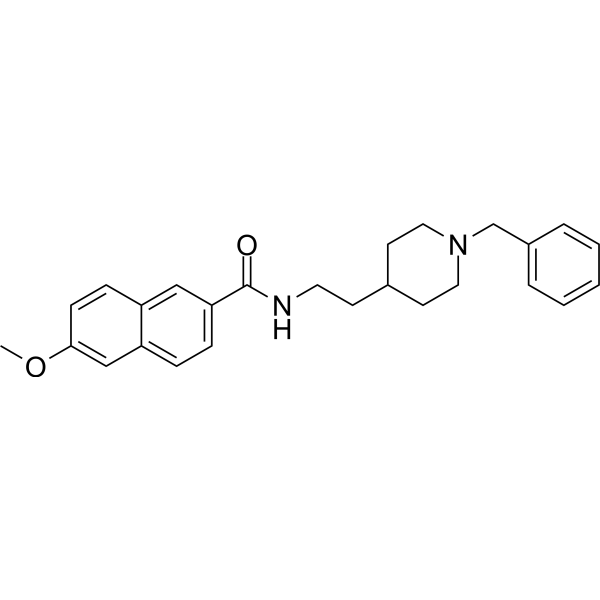
-
- HY-103210
-
|
Neurotoxin DSP 4 hydrochloride
|
Others
|
Neurological Disease
|
|
DSP-4 hydrochloride is a highly and selective adrenergic neurotoxin. DSP-4 hydrochloride can cross the blood brain barrier. DSP-4 hydrochloride can be used for the temporary selective degradation of the central and peripheral noradrenergic neurons .
|
-
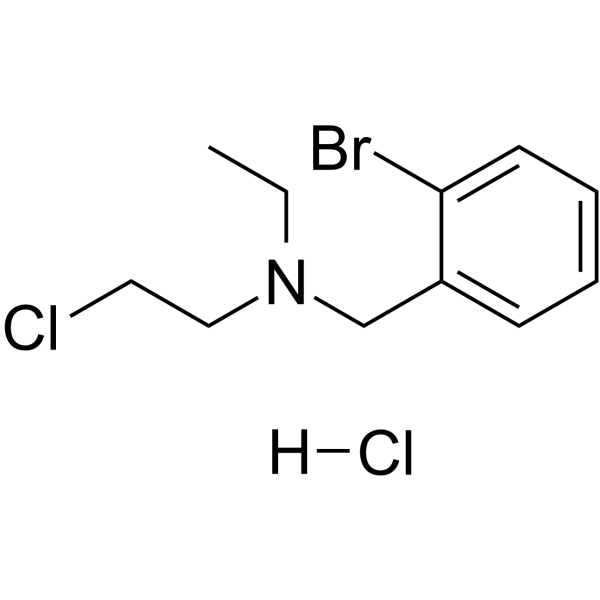
-
- HY-102064
-
|
|
5-HT Receptor
|
Neurological Disease
|
|
SR 57227A is a potent, orally active and selective 5-HT3 receptor agonist, with ability to cross the blood brain barrier. SR 57227A has affinities (IC50) varying between 2.8 and 250 nM for 5-HT3 receptor binding sites in rat cortical membranes and on whole NG 108-15 cells or their membranes. Anti-depressant effects .
|
-

-
- HY-147873
-
|
|
iGluR
HDAC
|
Neurological Disease
|
|
NMDAR/HDAC-IN-1 (Compound 9d) is a dual NMDAR and HDAC inhibitor with a Ki of 0.59 μM for NMDAR and IC50 values of 2.67, 8.00, 2.21, 0.18 and 0.62 μM for HDAC1, HDAC2, HDAC3, HDAC6 and HDAC8, respectively. NMDAR/HDAC-IN-1 efficiently penetrates the blood brain barrier .
|
-

-
- HY-144446
-
|
|
Cholinesterase (ChE)
|
Neurological Disease
|
|
BuChE-IN-1 (Compound 23) is a potent inhibitor of butyrylcholinesterase (BuChE). Butyrylcholinesterase (BuChE) is recently regarded as a biomarker in progressed Alzheimer’s disease (AD). BuChE-IN-1 shows low cytotoxicity and high blood brain barrier (BBB) permeability. BuChE-IN-1 is a promising BuChE inhibitor for the research of AD .
|
-
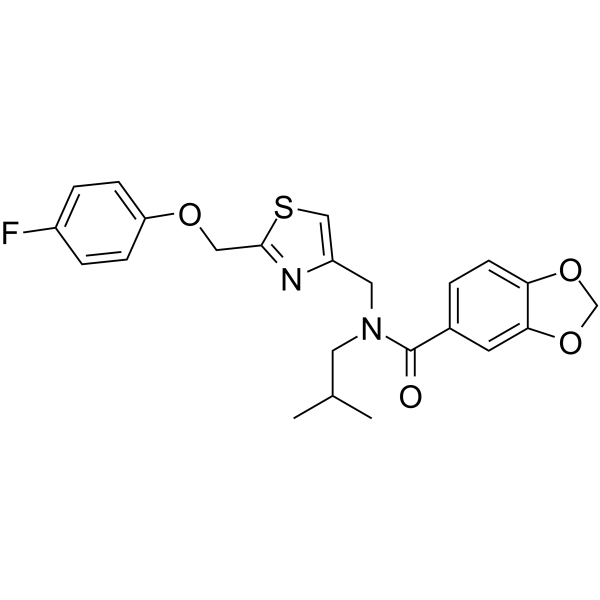
-
- HY-N0148A
-
|
Rutoside hydrate; Quercetin 3-O-rutinoside hydrate
|
Amyloid-β
Autophagy
Apoptosis
Endogenous Metabolite
|
Neurological Disease
Cancer
|
|
Rutin (Rutoside) hydrate is a flavonoid found in many plants and shows a wide range of biological activities including anti-inflammatory, antidiabetic, antioxidant, neuroprotective, nephroprotective, hepatoprotective and reducing Aβ oligomer activities. Rutin hydrate can cross the blood brain barrier. Rutin hydrate attenuates vancomycin-induced renal tubular cell apoptosis via suppression of apoptosis, mitochondrial dysfunction, and oxidative stress .
|
-
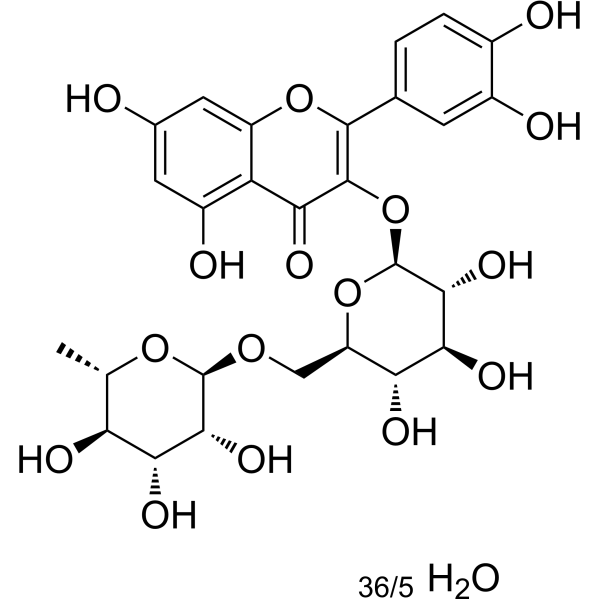
-
- HY-B0007
-
|
|
GABA Receptor
|
Neurological Disease
|
|
Baclofen, a lipophilic derivative of γ-aminobutyric acid (GABA), is an orally active, selective metabotropic GABAB receptor (GABABR) agonist. Baclofen mimics the action of GABA and produces slow presynaptic inhibition through the GABAB receptor. Baclofen has high blood brain barrier penetrance. Baclofen has the potential for muscle spasticity research .
|
-
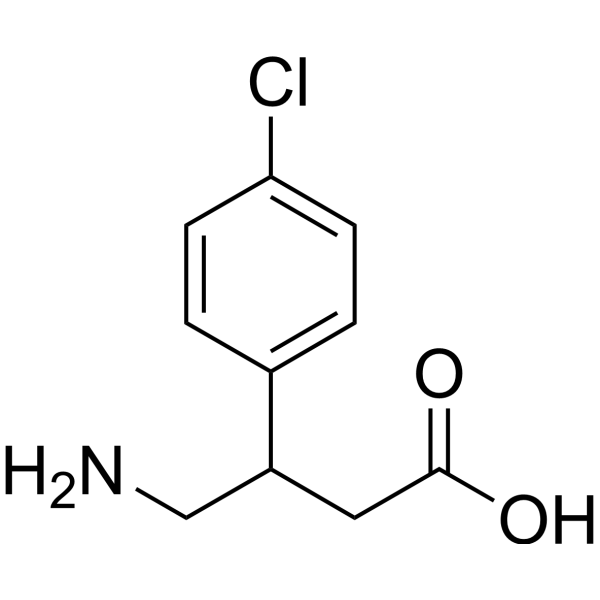
-
- HY-B0007C
-
|
|
GABA Receptor
|
Neurological Disease
|
|
Baclofen hydrochloride, a lipophilic derivative of γ-aminobutyric acid (GABA), is an orally active, selective metabotropic GABAB receptor (GABABR) agonist. Baclofen hydrochloride mimics the action of GABA and produces slow presynaptic inhibition through the GABAB receptor. Baclofen hydrochloride has high blood brain barrier penetrance. Baclofen hydrochloride has the potential for muscle spasticity research .
|
-
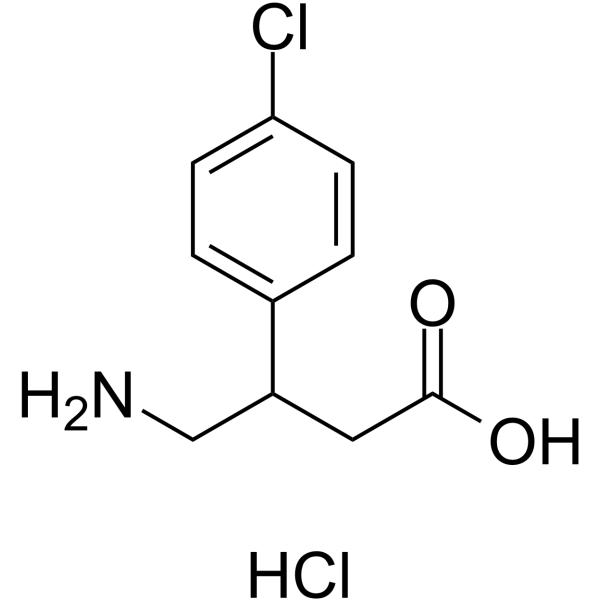
-
- HY-123410
-
|
|
Cannabinoid Receptor
|
Cancer
|
|
KM-233 is a classical cannabinoid with good blood brain barrier penetration. KM-233 possesses a selective affinity for the CB2 receptors relative to THC. KM-233 is effective at reducing U87 glioma tumor burden, and can be used for glioma research .
|
-

-
- HY-N0148
-
|
Rutoside; Quercetin 3-O-rutinoside
|
Amyloid-β
Autophagy
Apoptosis
Endogenous Metabolite
|
Inflammation/Immunology
Cancer
|
|
Rutin (Rutoside) is a flavonoid found in many plants and shows a wide range of biological activities including anti-inflammatory, antidiabetic, antioxidant, neuroprotective, nephroprotective, hepatoprotective and reducing Aβ oligomer activities. Rutin is also a CBR1 inhibitor, which can cross the blood brain barrier. Rutin attenuates vancomycin-induced renal tubular cell apoptosis via suppression of apoptosis, mitochondrial dysfunction, and oxidative stress .
|
-
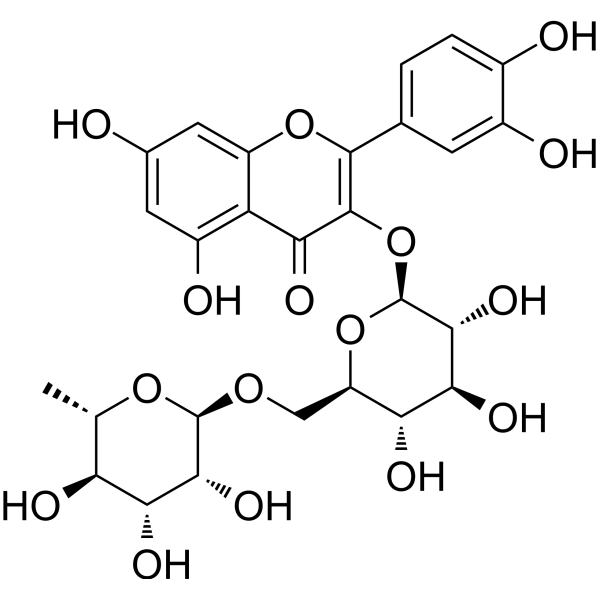
-
- HY-B0007S
-
|
|
GABA Receptor
|
Neurological Disease
|
|
Baclofen-d4 is the deuterium labeled Baclofen. Baclofen, a lipophilic derivative of γ-aminobutyric acid (GABA), is an orally active, selective metabotropic GABAB receptor (GABABR) agonist. Baclofen mimics the action of GABA and produces slow presynaptic inhibition through the GABAB receptor. Baclofen has high blood brain barrier penetrance. Baclofen has the potential for muscle spasticity research[1][2][3].
|
-

-
- HY-B1206
-
-
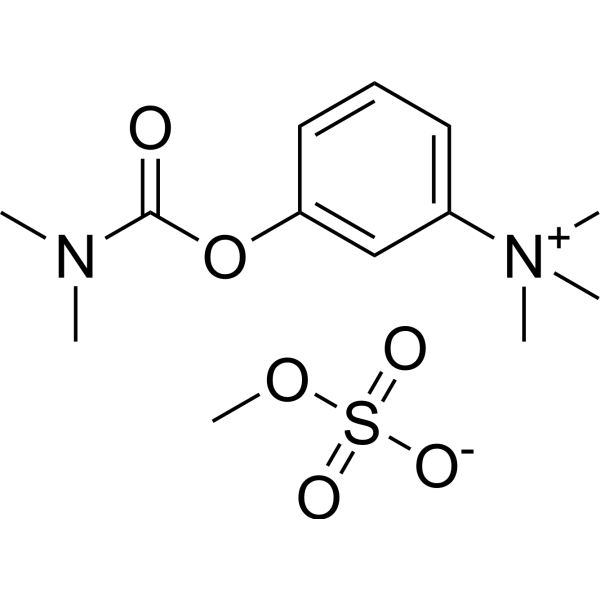
-
- HY-134228
-
-
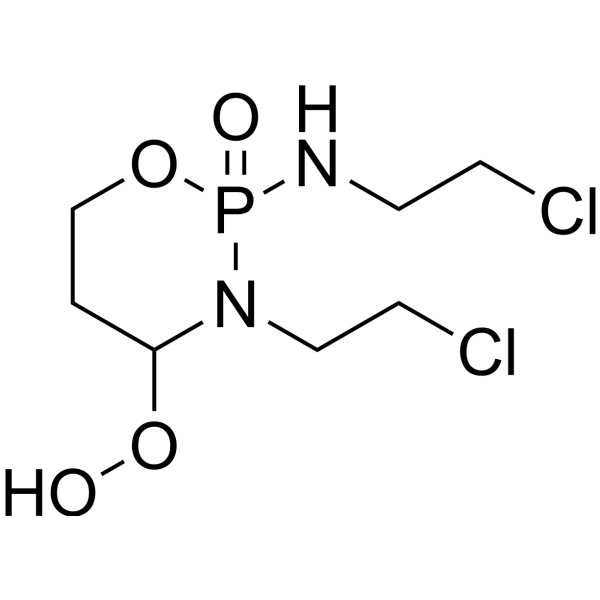
-
- HY-147151
-
|
|
Others
|
Others
|
|
AMCPy is a potent electron paramagnetic resonance (EPR) brain imaging agent, possessing excellent lipophilicity for blood−brain barrier (BBB) penetration .
|
-
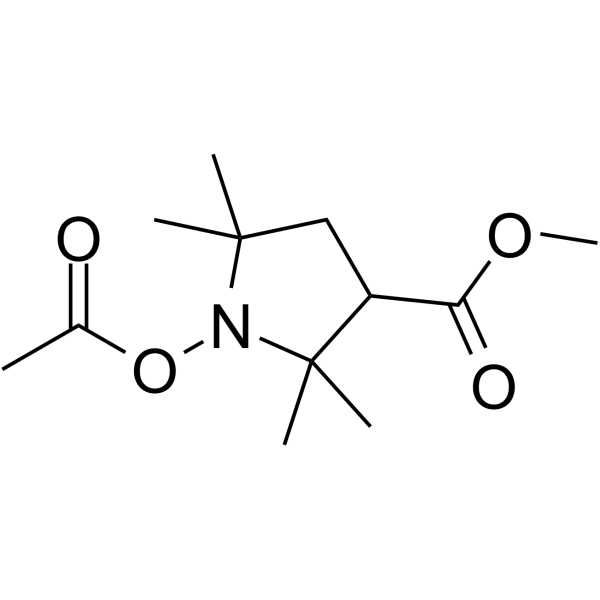
-
- HY-126899
-
|
|
Microtubule/Tubulin
|
Cancer
|
|
TPI-287, a blood-brain barrier-permeable microtubule stabilizer, can significantly reduce metastatic colonization of breast cancer in the brain .
|
-

-
- HY-18738
-
|
Ammonium pyrrolidinedithiocarbamate; PDTC ammonium; APDC
|
NF-κB
|
Inflammation/Immunology
|
|
Pyrrolidinedithiocarbamate ammonium (Ammonium pyrrolidinedithiocarbamate) is a selective and blood-brain barrier (BBB) permeable NF-κB inhibitor.
|
-
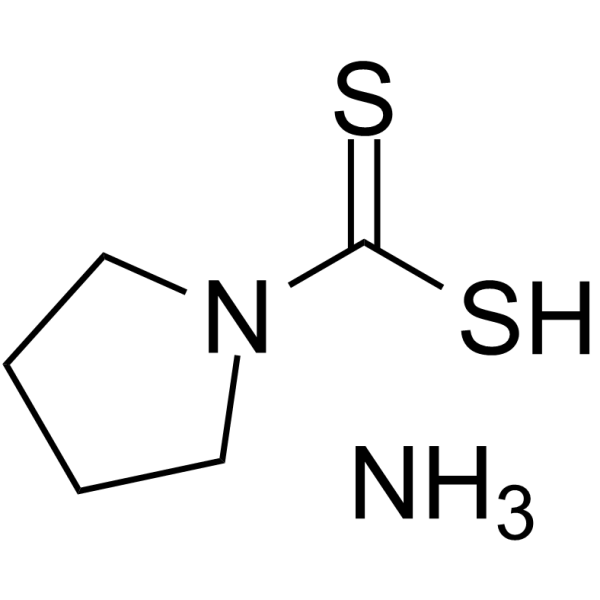
-
- HY-110281
-
-
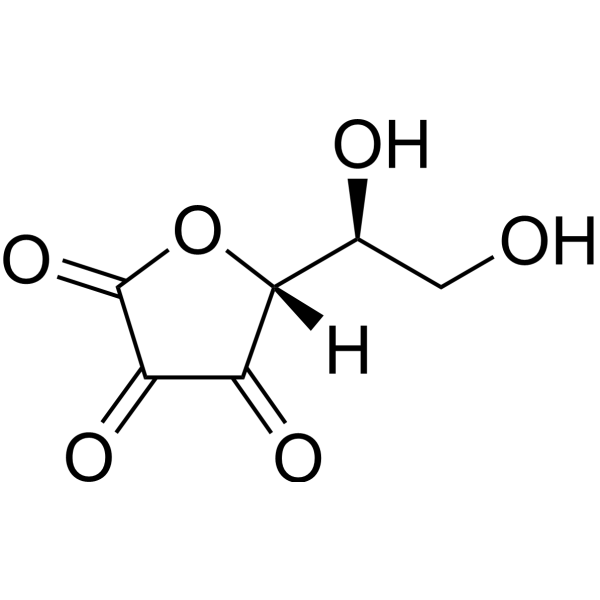
-
- HY-119624
-
|
|
PIKfyve
|
Cancer
|
|
MOMIPP, a macropinocytosis inducer, is a PIKfyve inhibitor. MOMIPP penetrates the blood-brain barrier (BBB) .
|
-
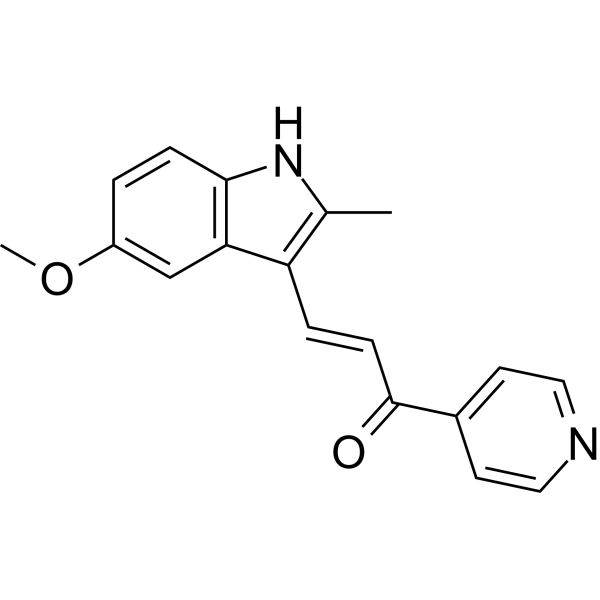
-
- HY-147409
-
|
|
CDK
|
Cancer
|
|
Ulecaciclib is an orally activitive inhibitor of cyclin-dependent kinase (CDK), with Ki values of 0.62 μM (CDK2/Cyclin A), 0.2 nM (CDK4/Cyclin D1), 3 nM (CDK6/Cyclin D3), and 0.63 μM (CDK7/Cyclin H), respectively. Ulecaciclib can cross blood brain barrier and has good pharmacokinetic characteristics .
|
-
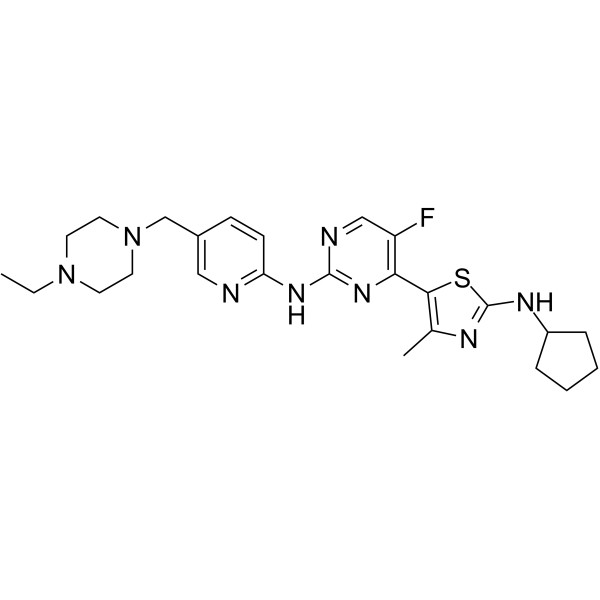
-
- HY-103253
-
|
|
Others
|
Neurological Disease
|
|
LY231617 is a potent and blood-brain barrier penetrable antioxidant. LY231617 is a neuroprotective agent in brain, it can be used for the research of nervous disease .
|
-
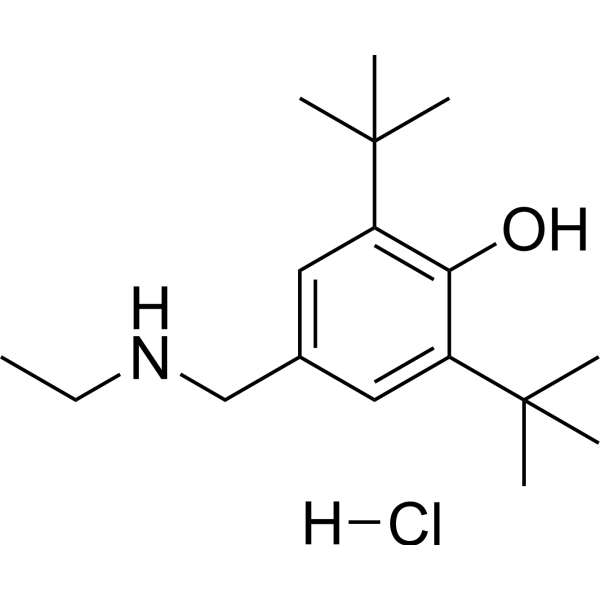
-
- HY-122489
-
|
|
Drug Metabolite
|
Neurological Disease
|
|
DL-Laudanosine, an Atracurium and Cisatracurium metabolite, crosses the blood–brain barrier and may cause excitement and seizure activity .
|
-
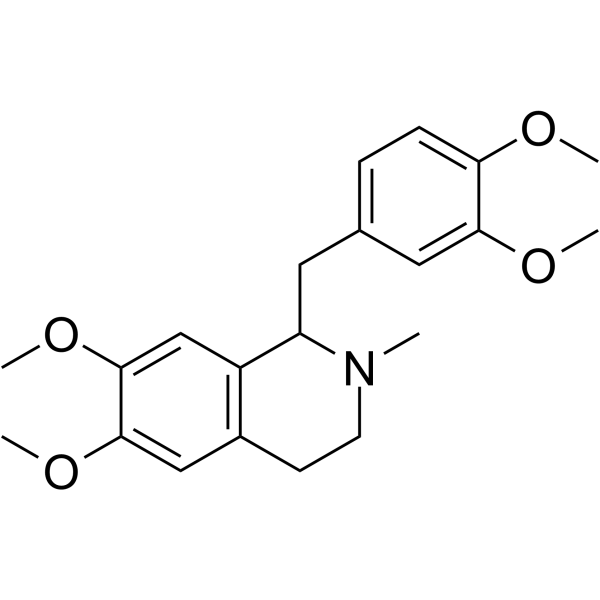
-
- HY-156717
-
-

-
- HY-110256
-
-
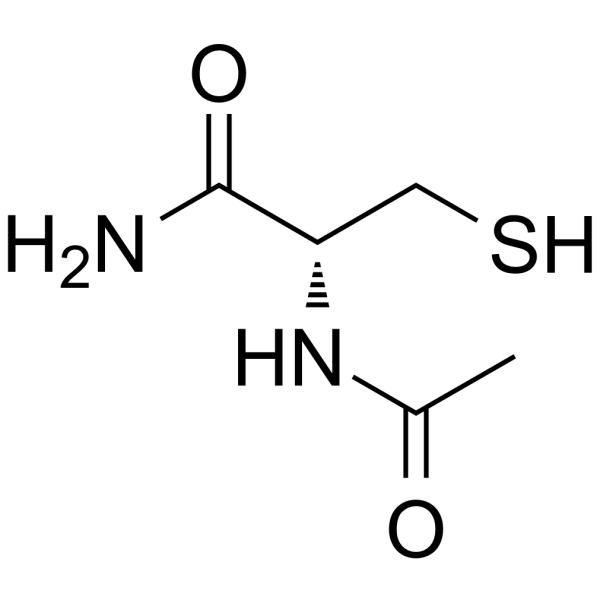
-
- HY-N0318
-
|
|
MMP
|
Inflammation/Immunology
|
|
Salvianolic acid A could protect the blood brain barrier through matrix metallopeptidase 9 (MMP-9) inhibition and anti-inflammation.
|
-
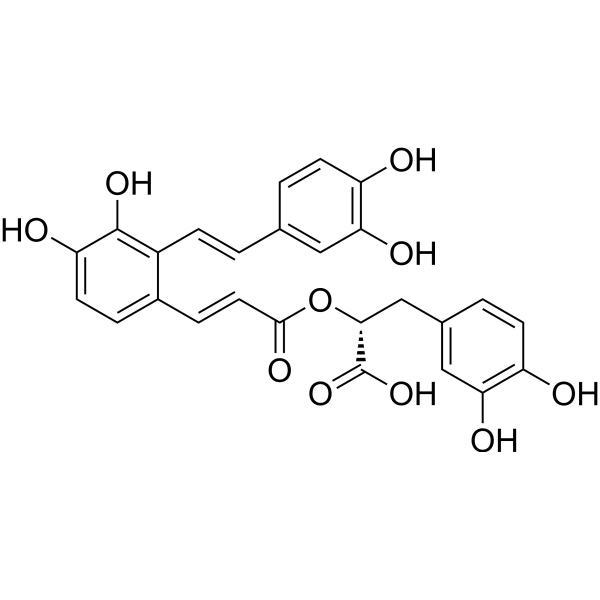
-
- HY-P0285
-
|
|
RABV
|
Infection
|
|
Rabies Virus Glycoprotein is a 29-amino-acid cell penetrating peptide derived from a rabies virus glycoprotein that can cross the blood-brain barrier (BBB) and enter brain cells.
|
-

-
- HY-11054
-
|
meso-GS 164
|
Others
|
Neurological Disease
|
|
TH-237A(meso-GS 164) is a novel neuroprotective agent exhibiting favorable permeation across the blood brain barrier.
|
-
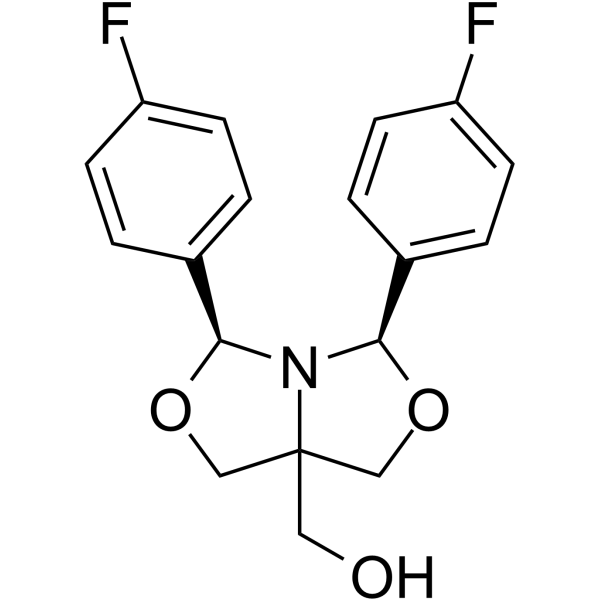
-
- HY-N6685
-
|
|
Others
|
Cardiovascular Disease
|
|
3-Acetyldeoxynivalenol, a trichothecene mycotoxin deoxynivalenol (DON) acetylated derivative , is a blood-brain barrier (BBB) permeable mycotoxin .
|
-
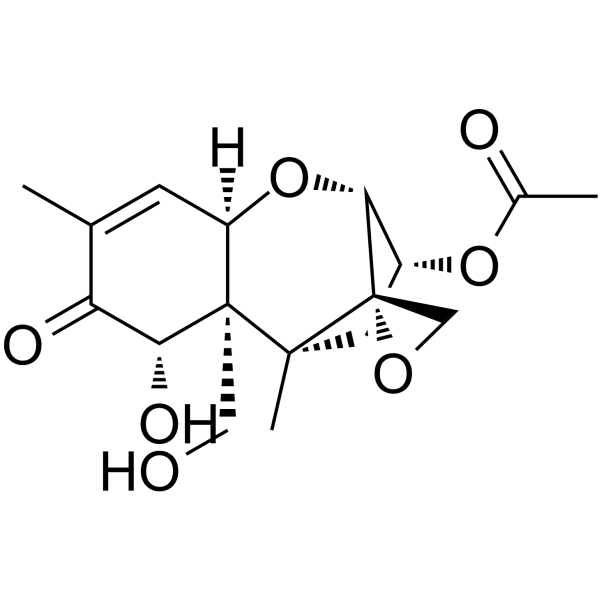
-
- HY-P0285A
-
|
|
RABV
|
Infection
|
|
Rabies Virus Glycoprotein (TFA) is a 29-amino-acid cell penetrating peptide derived from a rabies virus glycoprotein that can cross the blood-brain barrier (BBB) and enter brain cells .
|
-
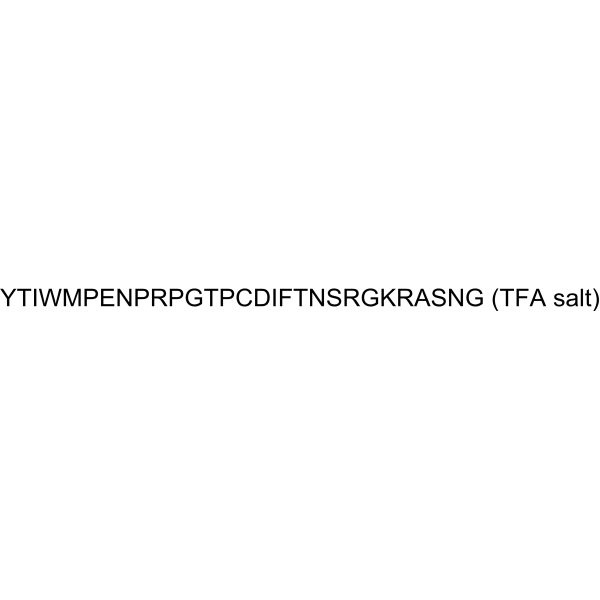
-
- HY-12763
-
GNE-317
1 Publications Verification
|
PI3K
mTOR
|
Cancer
|
|
GNE-317 is a PI3K/mTOR inhibitor, is able to cross the blood-brain barrier (BBB).
|
-

-
- HY-137441
-
|
PU-HZ151
|
HSP
|
Neurological Disease
|
|
Icapamespib (PU-HZ151) is a potent HSP90 inhibitor with an EC50 of 5 nM. Icapamespib is able to cross blood-brain barrier .
|
-
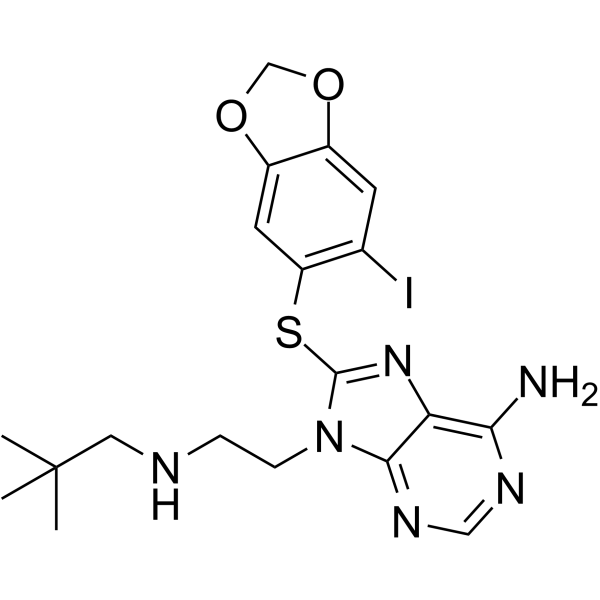
-
- HY-162117
-
|
|
mGluR
|
Neurological Disease
|
|
LBG30300 is a subtype-selective mGlu2 receptor agonist EC50 0.6 nM. LBG30300 is blood-brain barrier permeable .
|
-

-
- HY-N2332A
-
|
MLA
|
nAChR
|
Neurological Disease
|
|
Methyllycaconitine citrate is a specific antagonist of α7 neuronal nicotinic acetylcholine receptor (α7nAChR) with blood-brain barrier permeability.
|
-
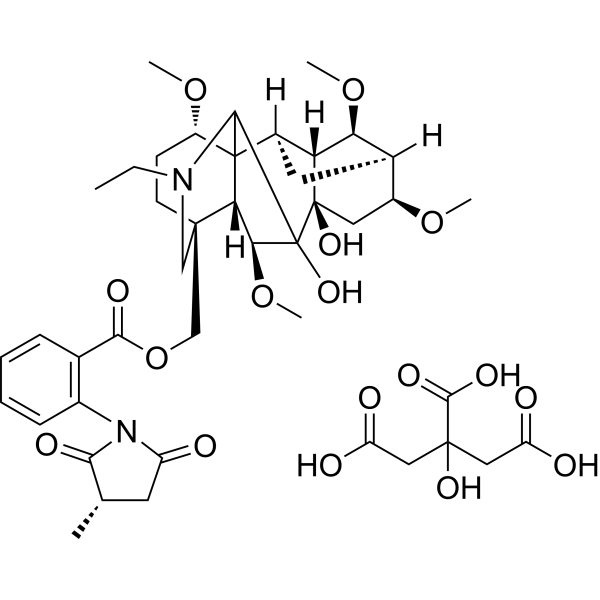
-
- HY-P2314
-
|
|
Transferrin Receptor
|
Cancer
|
|
HAIYPRH hydrochloride, a targeting ligand, can specially bind to transferrin receptor (TfR). HAIYPRH hydrochloride can mediate the transport of nanocarriers across the blood-brain barrier .
|
-

-
- HY-W010936
-
|
NBMPR
|
Adenosine Receptor
|
Neurological Disease
|
|
Nitrobenzylthioinosine is an ENT1 transporter inhibitor that binds to ENT1 transporter with high affinity. Nitrobenzylthioinosine is a photoaffinity probe for adenosine uptake sites in brain. Nitrobenzylthioinosine can cross the blood-brain barrier .
|
-

-
- HY-14503
-
|
DWK-1339
|
Amyloid-β
|
Neurological Disease
|
|
MDR-1339 (DWK-1339) is an orally active and blood-brain-barrier-permeable Aβ-aggregation inhibitor, used in the research of Alzheimer's disease.
|
-
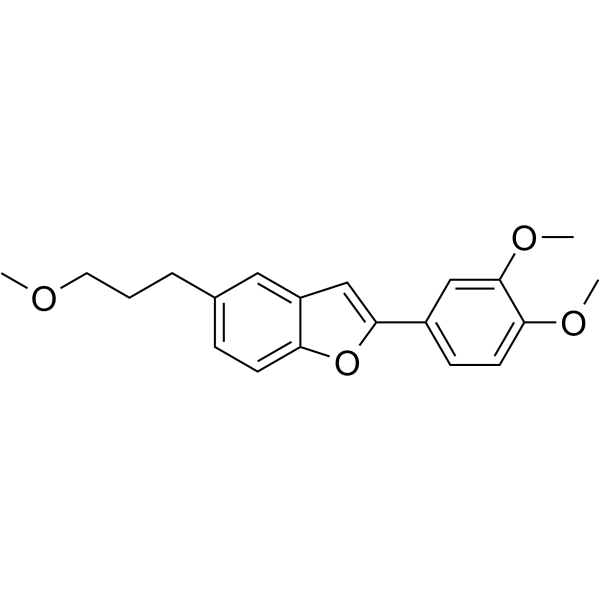
-
- HY-116477
-
|
|
FAAH
|
Neurological Disease
Inflammation/Immunology
|
|
URB937 is an orally active and peripherally restricted FAAH inhibitor (IC50=26.8 nM) and increases anandamide levels. URB937 fails to affect FAAH activity in the brain (not penetrate the blood-brain barrier) .
|
-

-
- HY-B0318
-
-
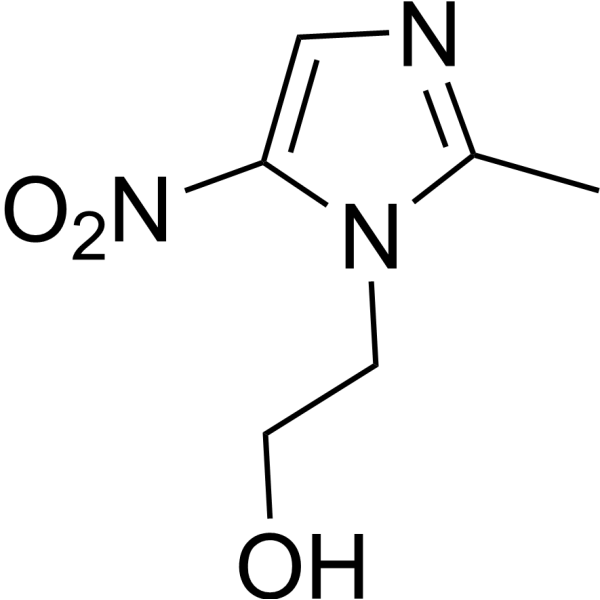
-
- HY-100740
-
|
AZD3293; LY3314814
|
Beta-secretase
|
Neurological Disease
|
|
Lanabecestat (AZD3293) is a potent, orally active and blood-brain barrier penetrating BACE1 inhibitor with a Ki of 0.4 nM. Lanabecestat is used for the research of Alzheimer's disease .
|
-
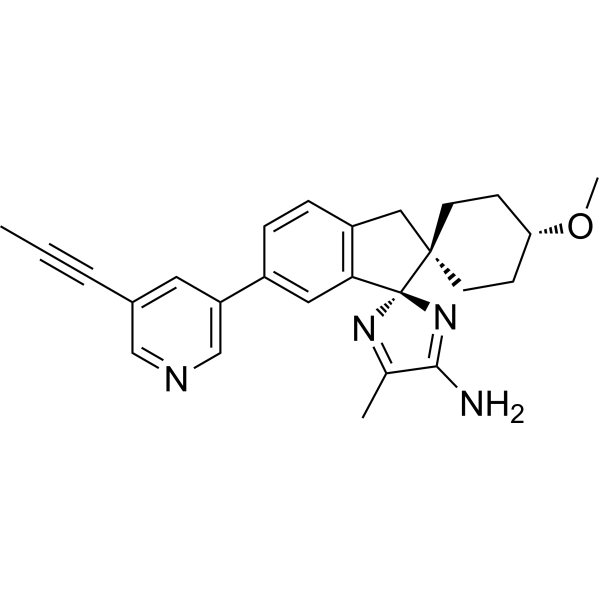
-
- HY-112305
-
|
|
ATM/ATR
|
Cancer
|
|
AZ32 is an orally bioavailable and blood-brain barrier-penetrating ATM inhibitor with an IC50 of <6.2 nM for ATM enzyme, and an IC50 of 0.31 μM for ATM in cell.
|
-

-
- HY-N9343
-
-

-
- HY-117501
-
|
|
Histamine Receptor
|
Inflammation/Immunology
|
|
Dexchlorpheniramine is an potent and blood-brain barrier (BBB) penetrant histamine 1 (H1) receptor antagonist with anticholinergic properties. Dexchlorpheniramine can be used for researching allergies .
|
-
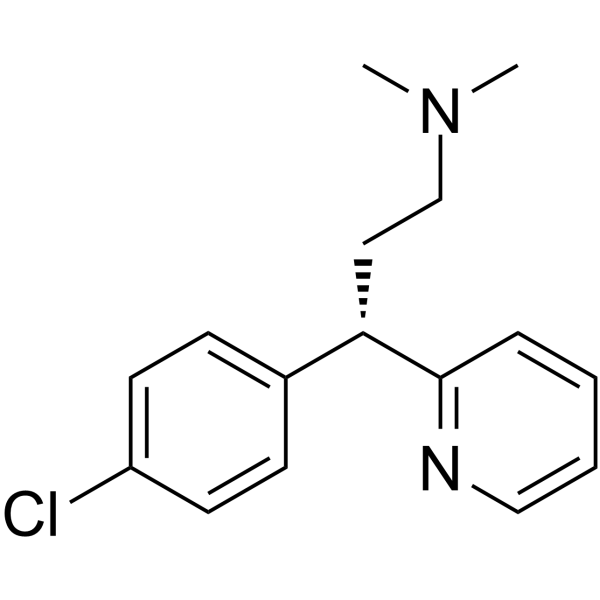
-
- HY-101373A
-
|
SKF 95282 dimaleate
|
Histamine Receptor
|
Neurological Disease
|
|
Zolantidine dimaleate (SKF 95282 dimaleate) is a potent, selective and cross the blood-brain barrier histamine H2 antagonist. Zolantidine dimaleate induces antinociception .
|
-

-
- HY-154959
-
|
|
Ras
|
Cancer
|
|
AZD4747 is a selective, blood-brain barrier-permeable mutant GTPase KRAS G12C inhibitor. AZD4747 has the potential to study cancer .
|
-
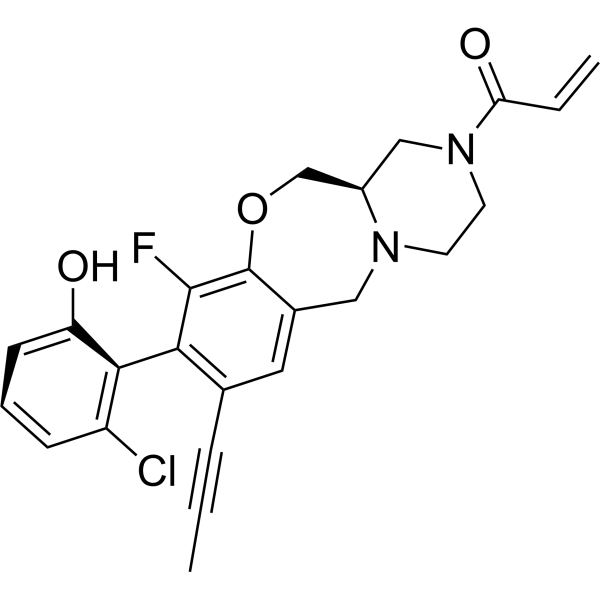
-
- HY-B0309S2
-
|
|
Calcium Channel
Autophagy
|
Cardiovascular Disease
|
|
Felodipine-d3 is the deuterium labeled Felodipine. Felodipine, a dihydropyridine, is a potent, vasoselective calcium channel antagonist. Felodipine lowers blood pressure (BP) by selective action on vascular smooth muscle, especially in the resistance vessels. Felodipine, an anti-hypertensive agent, induces autophagy. Felodipine can cross the blood-brain barrier[1][2][3].
|
-
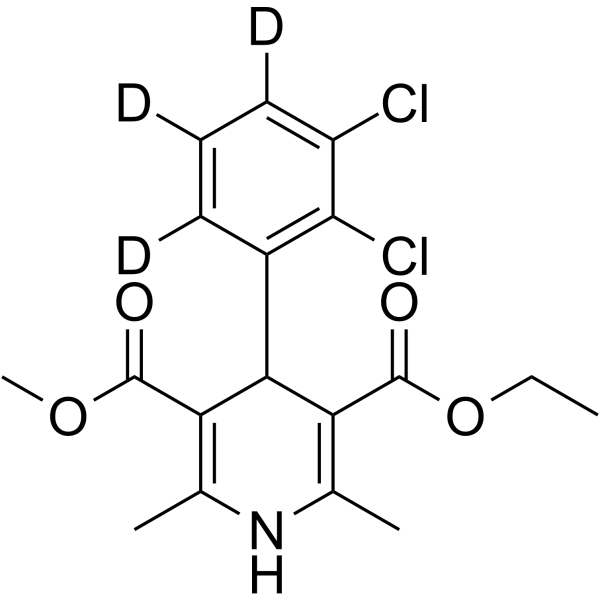
-
- HY-B0309S1
-
|
|
Isotope-Labeled Compounds
Calcium Channel
Autophagy
|
Cardiovascular Disease
|
|
Felodipine-d5 is deuterium labeled Felodipine. Felodipine, a dihydropyridine, is a potent, vasoselective calcium channel antagonist. Felodipine lowers blood pressure (BP) by selective action on vascular smooth muscle, especially in the resistance vessels. Felodipine, an anti-hypertensive agent, induces autophagy. Felodipine can cross the blood-brain barrier[1][2][3].
|
-
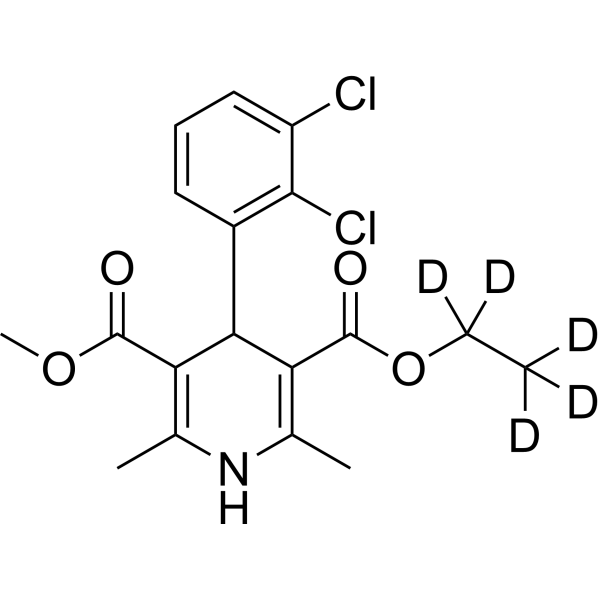
-
- HY-128868
-
|
|
Fluorescent Dye
|
Others
|
|
FITC-Dextran (MW 10000) is a fluorescent probe for fluorescein isothiocyanate (FITC) dextran (Ex=495 nm; Em=525 nm). FITC-Dextran (MW 10000) can be used as a marker to reveal heat shock-induced cell damage and to study the early and late stages of apoptosis. FITC-Dextran (MW 10000) can also be used for cell permeability studies, such as blood-brain barrier permeability and determination of the extent of blood-brain barrier disruption .
|
-

-
- HY-128868A
-
|
|
Fluorescent Dye
|
Others
|
|
FITC-Dextran (MW 4000) is a fluorescent probe for fluorescein isothiocyanate (FITC) dextran (Ex=495 nm; Em=525 nm). FITC-Dextran (MW 4000) can be used as a marker to reveal heat shock-induced cell damage and to study the early and late stages of apoptosis. FITC-Dextran (MW 4000) can also be used for cell permeability studies, such as blood-brain barrier permeability and determination of the extent of blood-brain barrier disruption .
|
-

-
- HY-128868D
-
|
|
Fluorescent Dye
|
Others
|
|
FITC-Dextran (MW 40000) is a fluorescent probe for fluorescein isothiocyanate (FITC) dextran (Ex=495 nm; Em=525 nm). FITC-Dextran (MW 40000) can be used as a marker to reveal heat shock-induced cell damage and to study the early and late stages of apoptosis. FITC-Dextran (MW 40000) can also be used for cell permeability studies, such as blood-brain barrier permeability and determination of the extent of blood-brain barrier disruption .
|
-

-
- HY-12947
-
|
|
MAP3K
|
Neurological Disease
|
|
GNE-3511 is an orally active bioavailable and brain-penetrant dual leucine zipper kinase (DLK) inhibitor with a Ki of 0.5 nM. GNE-3511 can cross the blood-brain-barrier and can be used for the research of neurodegenerative diseases .
|
-
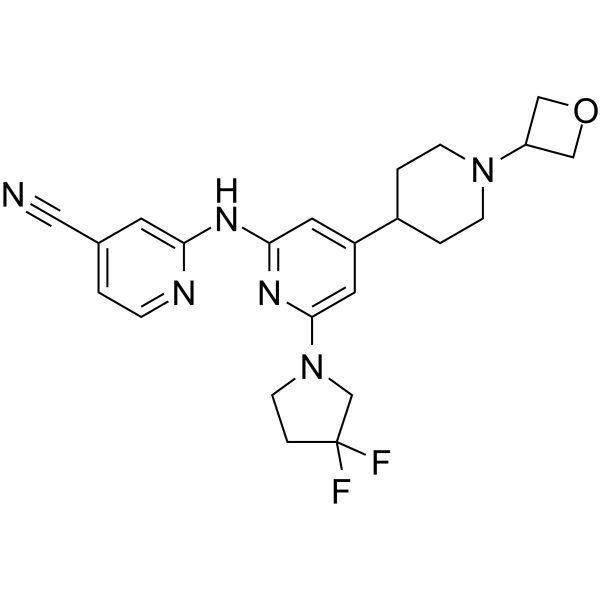
-
- HY-130012
-
-
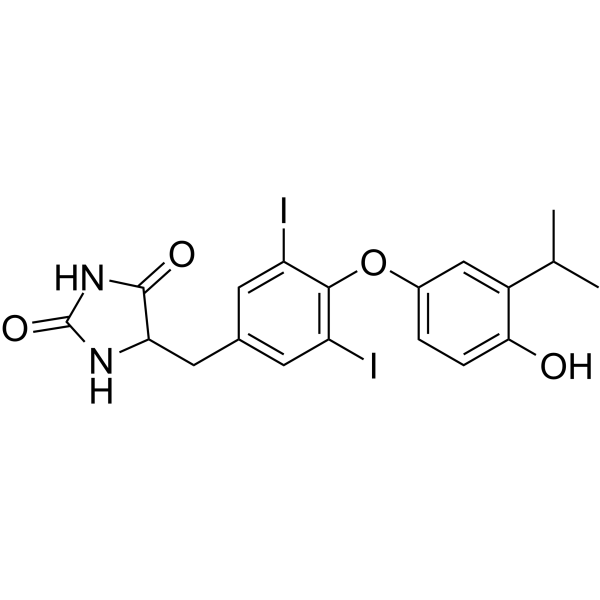
- HY-120332
-
|
KH176 hydrochloride
|
Reactive Oxygen Species
|
Metabolic Disease
|
Sonlicromanol (KH176) hydrochloride, a chemical entity derivative of Trolox, is a blood-brain barrier permeable ROS-redox modulator. Sonlicromanol (KH176) hydrochloride is used in the study for mitochondrial disorders .
|
-
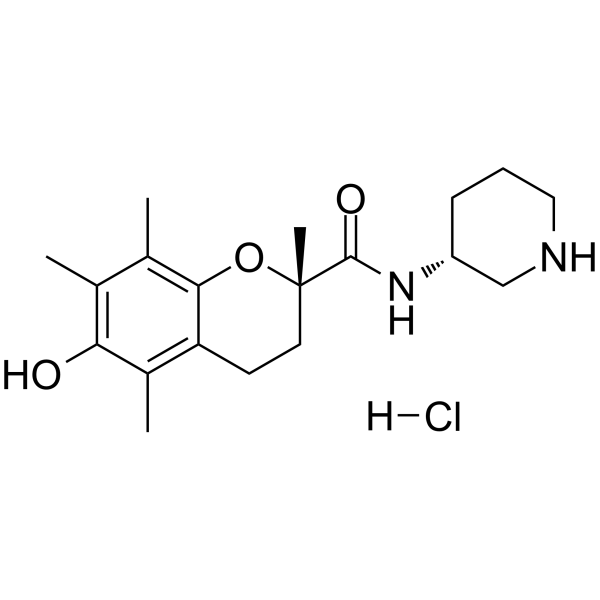
- HY-Y1787
-
|
|
|
|
|
Dimethyl malonate is a competitive inhibitor of succinate dehydrogenase (SDH). Dimethyl malonate is able to cross the blood-brain barrier and hydrolyse to malonate. Dimethyl malonate reduces neuronal apoptosis .
|
-

- HY-148419
-
|
|
Histone Methyltransferase
|
Cancer
|
|
TNG908 is a MTAP synergistic PRMT5 inhibitor. TNG908 crosses the blood-brain barrier and is orally active. TNG908 could be used in cancer research .
|
-
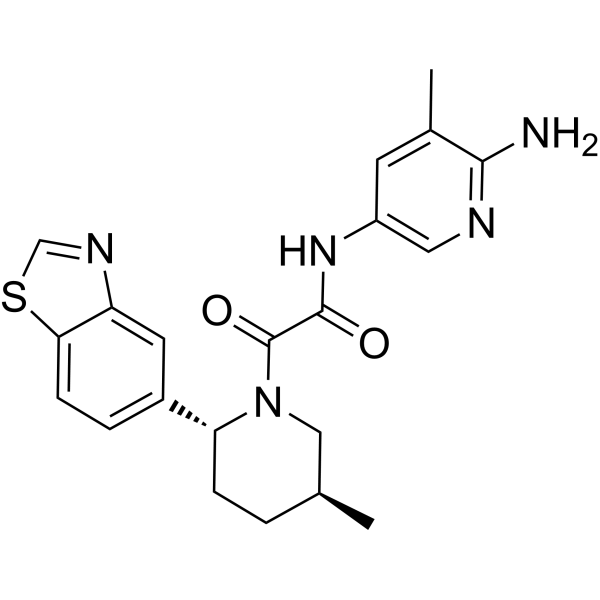
- HY-153175
-
|
|
RET
|
Neurological Disease
|
|
BT44 is a selective RET activator. BT44 can penetrate through the blood-brain barrier and can be used for the research of neurodegenerative disorders and diabetes mellitus .
|
-
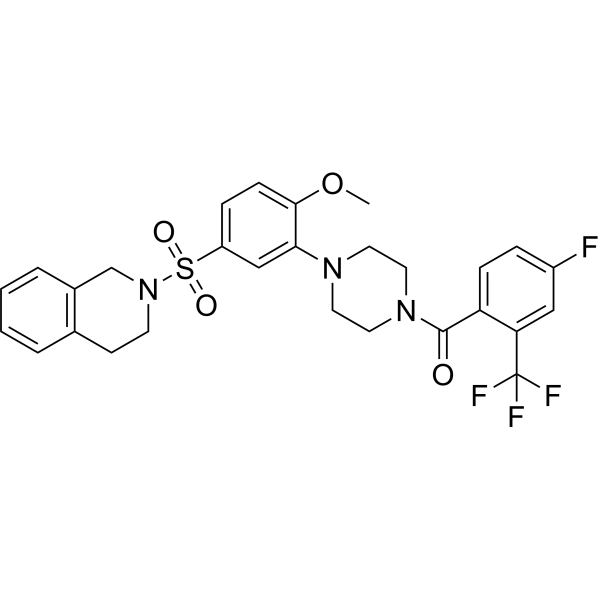
- HY-N0304
-
|
Levodopa; 3,4-Dihydroxyphenylalanine
|
Dopamine Receptor
Endogenous Metabolite
|
Neurological Disease
Cancer
|
|
L-DOPA (Levodopa) is an orally active metabolic precursor of neurotransmitters dopamine. L-DOPA can cross the blood-brain barrier and is converted into dopamine in the brain. L-DOPA has anti-allodynic effects and the potential for Parkinson's disease .
|
-
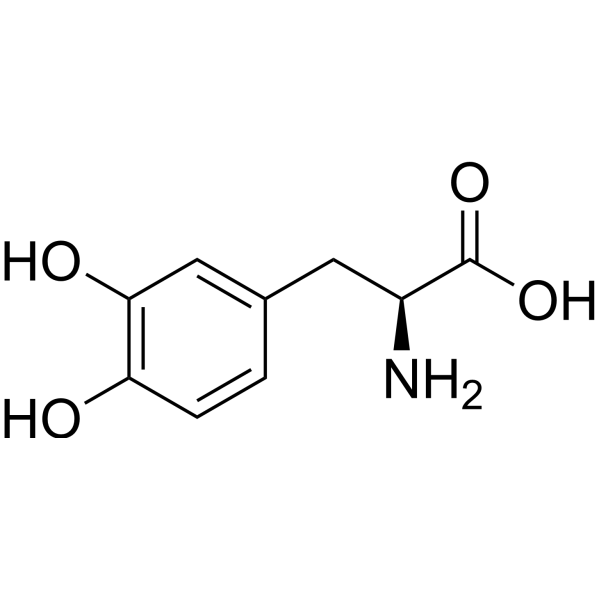
- HY-129441
-
|
BW 197U
|
Histone Methyltransferase
Antifolate
|
Neurological Disease
Cancer
|
|
Metoprine (BW 197U) is a potent histamine N-methyltransferase (HMT) inhibitor. Metoprine, a diaminopyrimidine derivative, can cross the blood-brain barrier and increase brain histamine levels by inhibiting HMT . Metoprine is an antifolate and antitumor agent .
|
-
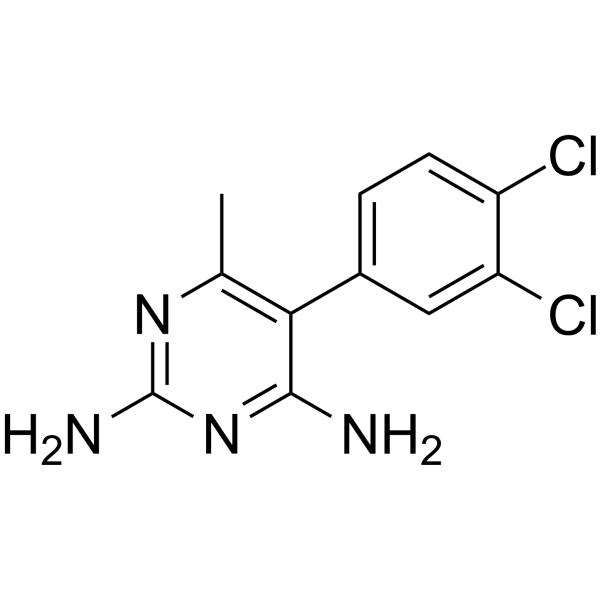
- HY-B0303A
-
-
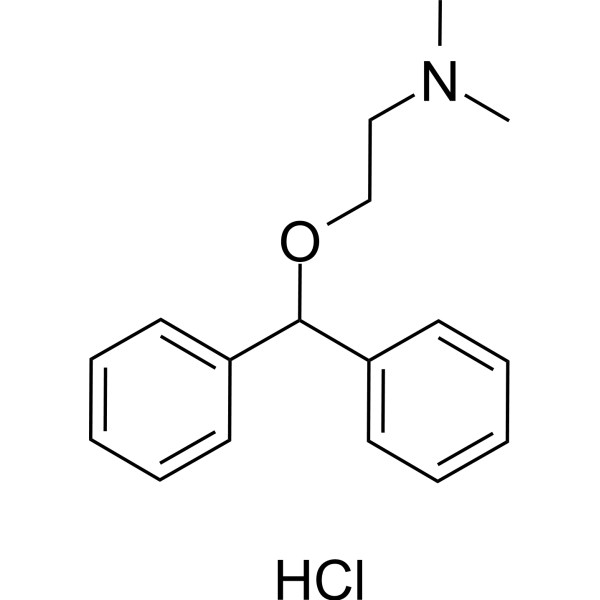
- HY-121599
-
|
SGS-742
|
GABA Receptor
|
Neurological Disease
|
|
CGP 36742 is a selective GABAB receptor antagonist that can penetrate the blood–brain barrier after peripheral administration, with an IC50 of 32 μM. CGP 36742 is useful in treatment of depression .
|
-
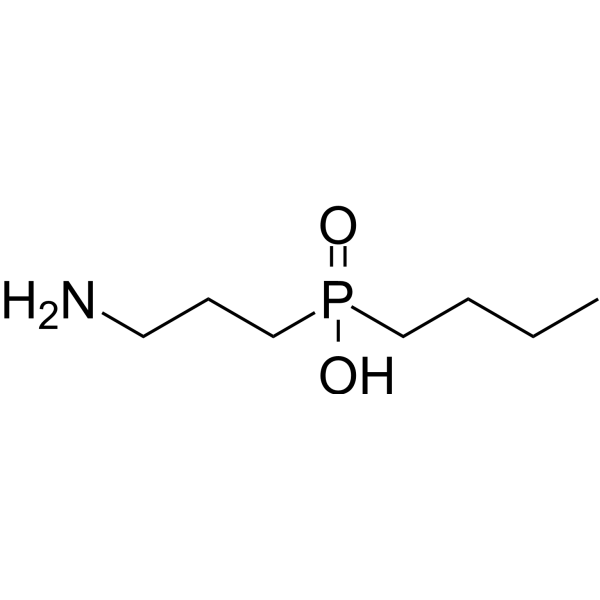
- HY-106147
-
|
|
Opioid Receptor
|
Neurological Disease
|
|
Frakefamide is a potent analgesic that acts as a peripheral active μ-selective receptor agonist. Frakefamide is unable to penetrate the blood-brain-barrier and enter the central nervous system .
|
-
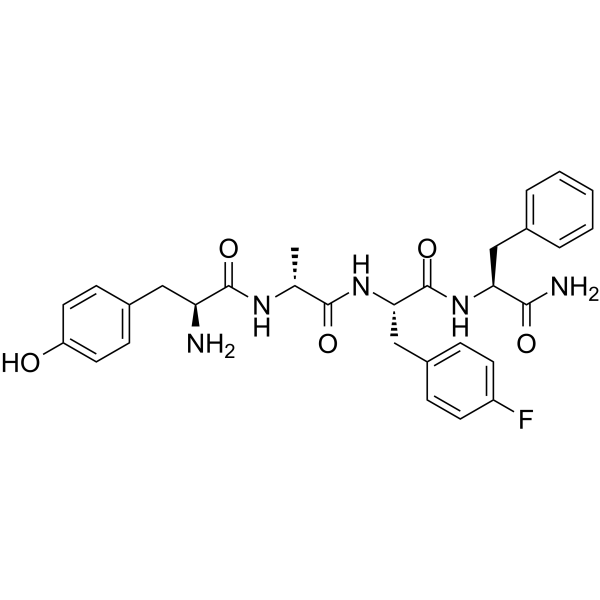
- HY-124475
-
|
|
CRFR
|
Neurological Disease
|
|
Antalarmin is a selective nonpeptide corticotropin-releasing factor receptor 1 (CRHR1) antagonist with a Ki of 2.7 nM. Antalarmin can pass through the blood–brain barrier .
|
-
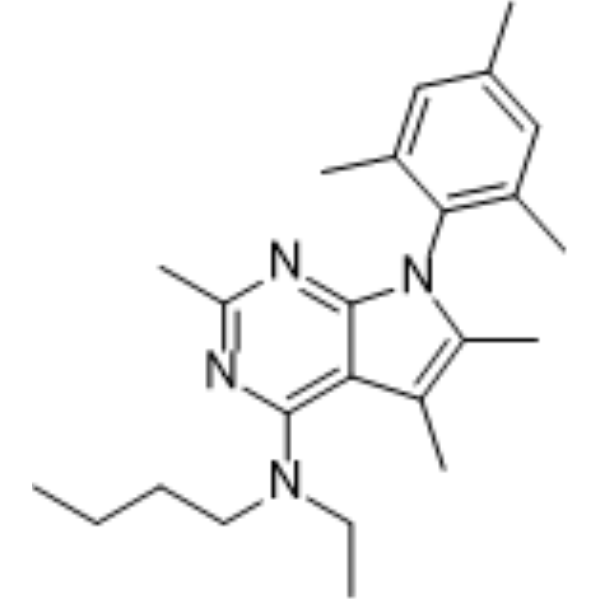
- HY-113643
-
|
|
Calcium Channel
5-HT Receptor
|
Neurological Disease
|
|
Levemopamil hydrochloride is a blood-brain barrier penetrable calcium channel blocker and a 5-HT2 antagonist. Levemopamil hydrochloride can be used for temporary occlusion and neurological disease research .
|
-
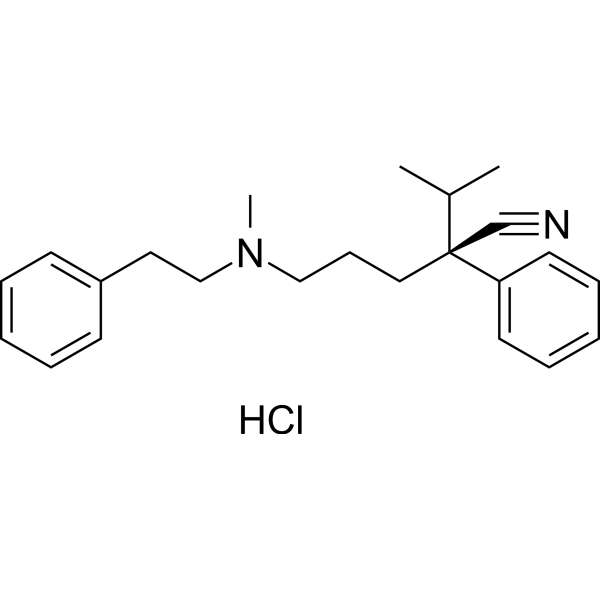
- HY-132392S
-
|
|
Dopamine Receptor
Endogenous Metabolite
|
Neurological Disease
|
|
L-DOPA-2,5,6-d3 is the deuterium labeled L-DOPA. L-DOPA (Levodopa) is an orally active metabolic precursor of neurotransmitters dopamine. L-DOPA can cross the blood-brain barrier and is converted into dopamine in the brain[1][2][3].
|
-

- HY-151615
-
|
|
Fluorescent Dye
|
Neurological Disease
|
|
DCI-Br-3 is a rapid, highly sensitive, and selective probe to monitor thiols in the epileptic brain. (λex=537 nm, λem=675 nm).DCI-Br-3 can effectively cross the blood-brain barrier (BBB) .
|
-

- HY-148465
-
|
|
Biochemical Assay Reagents
|
Cardiovascular Disease
Cancer
|
|
Gadoteric acid is a macrocyclic, paramagnetic, gadolinium-based contrast agent that can be used for magnetic resonance imaging (MRI) of the brain, spine, and related tissues. In particular, Gadoteric acid is able to detect and visualize areas of blood-brain barrier disruption and abnormal vascular distribution .
|
-
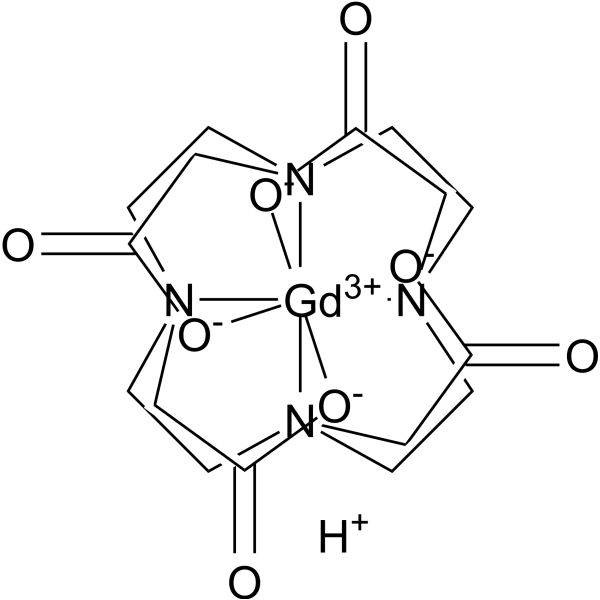
- HY-12599
-
-
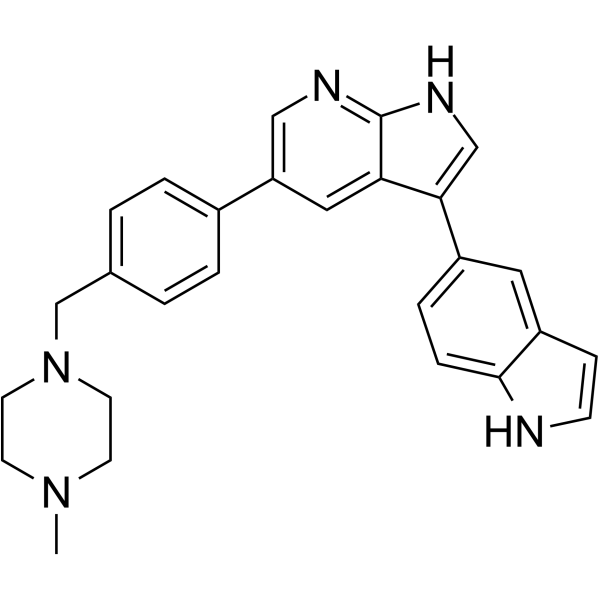
- HY-10231
-
-
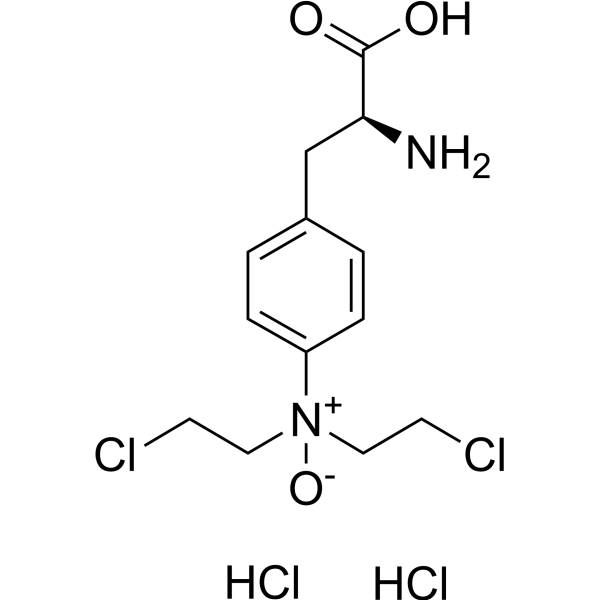
- HY-106147B
-
|
|
Opioid Receptor
|
Neurological Disease
|
|
Frakefamide TFA is a potent analgesic that acts as a peripheral active μ-selective receptor agonist. Frakefamide is unable to penetrate the blood-brain-barrier and enter the central nervous system .
|
-
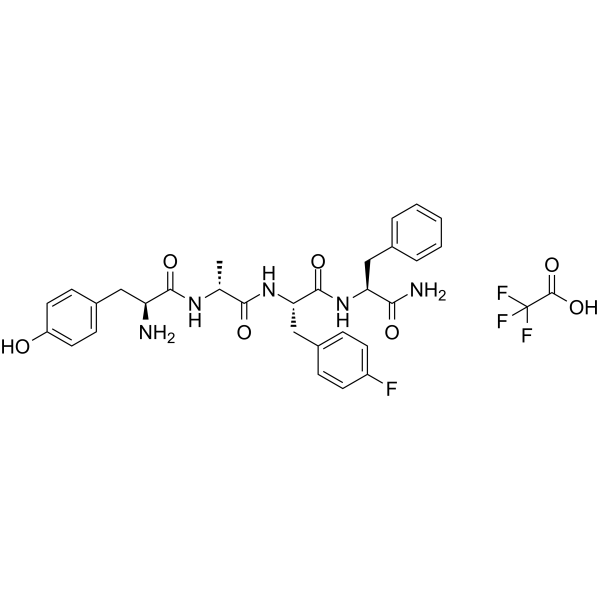
- HY-B0303
-
|
|
|
|
|
Diphenhydramine is a first-generation histamine H1-receptor antagonist with anti-cholinergic effect. Diphenhydramine hydrochloride can across the ovine blood-brain barrier (BBB) .
|
-
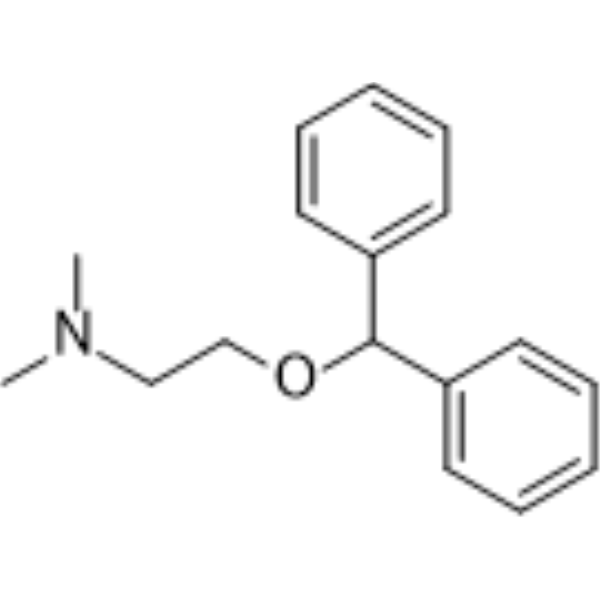
- HY-149278
-
-
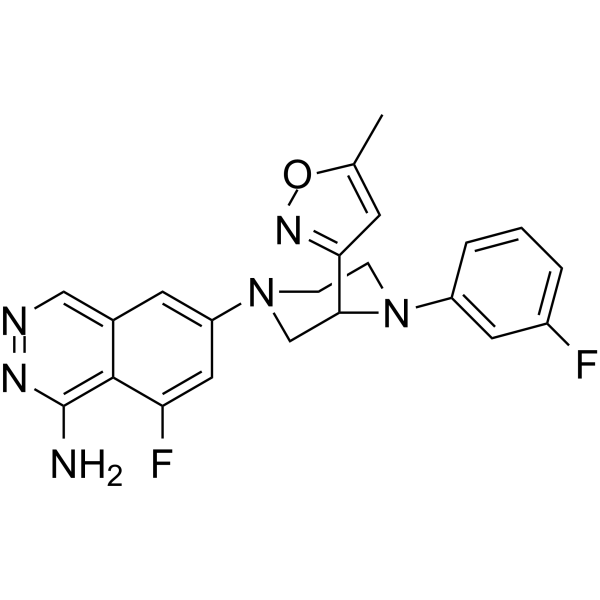
- HY-161090
-
|
|
iGluR
|
Neurological Disease
|
|
AMPA receptor modulator-7 (compound 36) is a modulator of AMPA receptor. AMPA receptor modulator-7 has oral activity and can penetrate the blood-brain barrier .
|
-
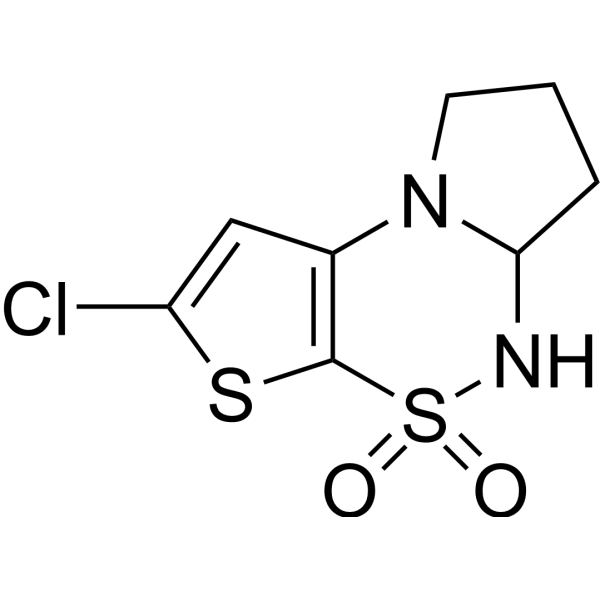
- HY-107663
-
|
Pro-Leu-Gly-NH2; Melanostatin
|
Dopamine Receptor
|
Neurological Disease
|
|
MIF-1 (Melanostatin), an endogenous brain peptide, is a potent dopamine receptor allosteric modulator. MIF-1 inhibits melanin formation. MIF-1 blocks the effects of opioid receptor activation to modulate the analgesic effects. MIF-1 accesses from the blood to the CNS by directly crossing the blood-brain barrier (BBB) .
|
-
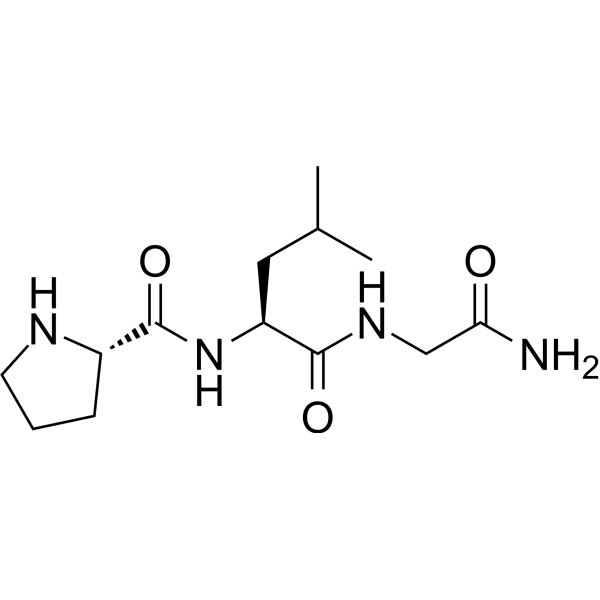
- HY-N0304A
-
|
Levodopa sodium; 3,4-Dihydroxyphenylalanine sodium
|
Dopamine Receptor
Endogenous Metabolite
|
Neurological Disease
|
|
L-DOPA (Levodopa) sodium is an orally active metabolic precursor of neurotransmitters dopamine. L-DOPA sodium can cross the blood-brain barrier and is converted into dopamine in the brain. L-DOPA sodium has anti-allodynic effects, and can be used for Parkinson's disease research .
|
-

- HY-132670S
-
|
|
Isotope-Labeled Compounds
Calcium Channel
Autophagy
|
Cardiovascular Disease
|
|
(R)-(-)-Felodipine-d5 is the deuterium labeled (R)-(-)-Felodipine. (R)-(-)-Felodipine is the S enantiomer of Felodipine. Felodipine, a dihydropyridine, is a potent, vasoselective calcium channel antagonist. Felodipine lowers blood pressure (BP) by selective action on vascular smooth muscle, especially in the resistance vessels. Felodipine, an anti-hypertensive agent, induces autophagy. Felodipine can cross the blood-brain barrier[1][2][3].
|
-

- HY-13909
-
|
|
HDAC
|
Cancer
|
|
RGFP966 is a highly selective HDAC3 inhibitor with an IC50 of 80 nM and shows no inhibition to other HDACs at concentrations up to 15 μM. RGFP966 can penetrate the blood brain barrier (BBB).
|
-
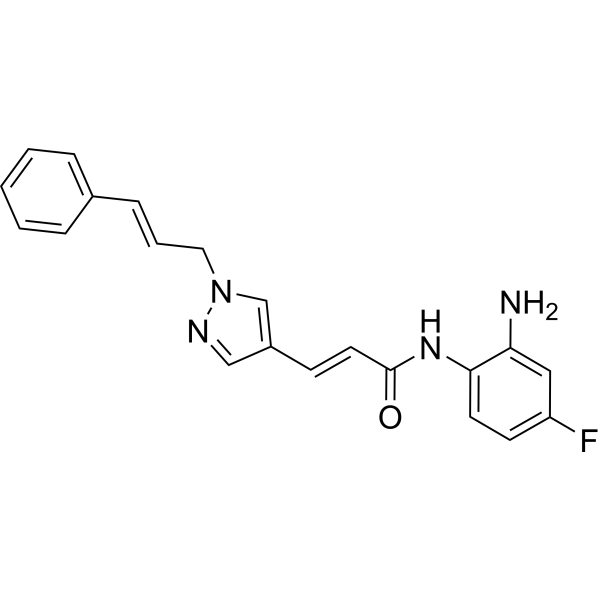
- HY-105860
-
|
BGG 492
|
iGluR
|
Neurological Disease
|
|
Selurampanel (BGG 492) is an orally active and competitive AMPA receptor antagonist with an IC50 of 190 nM. Selurampanel has reasonable blood-brain barrier penetration. Selurampanel can be used for epilepsy research .
|
-
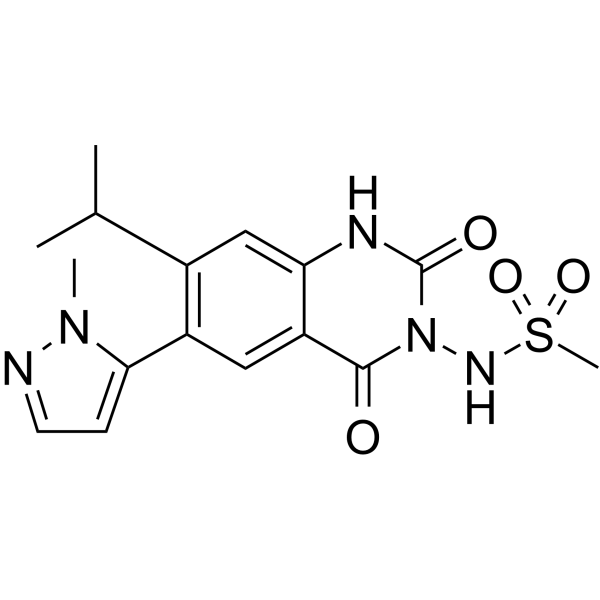
- HY-103242
-
|
|
Amyloid-β
|
Neurological Disease
|
|
CRANAD-2 is a near-infrared (NIR) Aβ plaque-specific fluorescent probe. CRANAD 2 penetrates the blood brain barrier and has a high affinity for Aβ aggregates with a Kd of 38 nM .
|
-

- HY-P4989
-
|
|
Biochemical Assay Reagents
|
Infection
|
|
Type A Allatostatin III (allatostatin 3) is a blood-brain barrier permeable and reversible neuropeptide that inhibits hormone synthesis in juvenile female cockroaches. Type A Allatostatin III can be used in pesticide research .
|
-
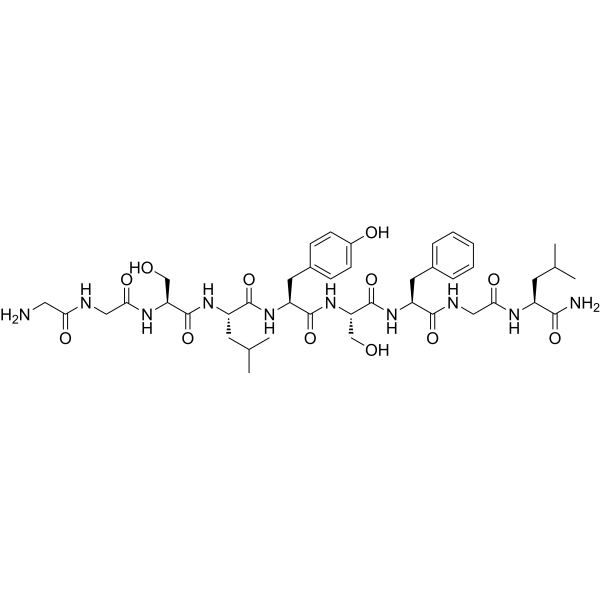
- HY-108295
-
|
CXB-722
|
GABA Receptor
|
Neurological Disease
|
|
Pivagabine (CXB 722) is a hydrophobic 4-aminobutyric acid derivative with neuromodulatory activity. Pivagabine penetrates the blood-brain barrier in rats. Pivagabine antagonizes the effects of foot shock on both GABAA receptor function and corticotropin-releasing factor (CRF) concentrations in rat brain .
|
-
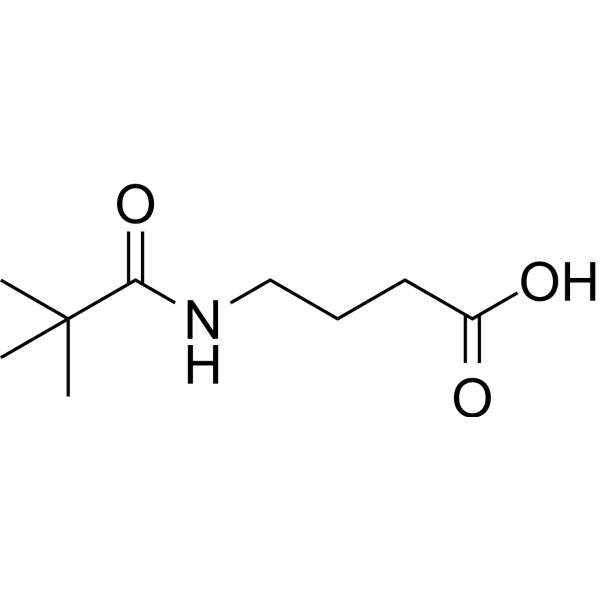
- HY-128868B
-
|
|
Biochemical Assay Reagents
|
Others
|
|
FITC-Dextran (MW 3000-5000) is a fluorescent probe for fluorescein isothiocyanate (FITC) dextran (Ex=495 nm; Em=525 nm). FITC-Dextran (MW 3000-5000) can be used as a marker to reveal heat shock-induced cell damage and to study the early and late stages of apoptosis. FITC-Dextran (MW 3000-5000) can also be used for cell permeability studies, such as blood-brain barrier permeability and determination of the extent of blood-brain barrier disruption . Storage: protect from light.
|
-
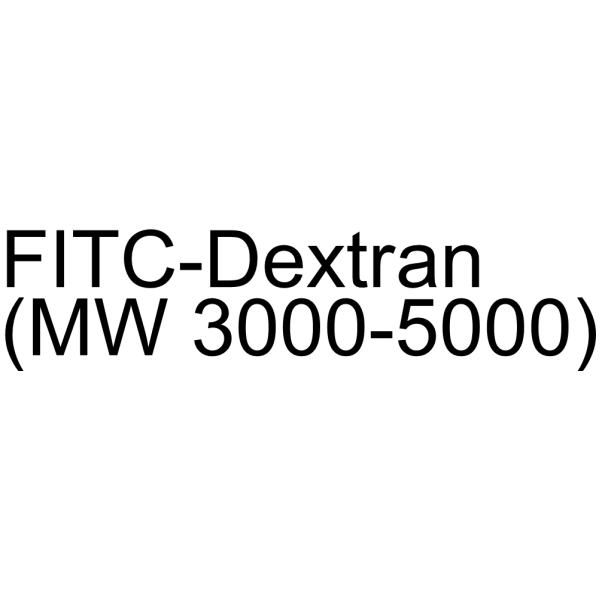
- HY-B0309
-
|
|
Calcium Channel
Autophagy
|
Cardiovascular Disease
|
|
Felodipine, a dihydropyridine, is a potent, vasoselective calcium channel antagonist. Felodipine lowers blood pressure (BP) by selective action on vascular smooth muscle, especially in the resistance vessels. Felodipine, an anti-hypertensive agent, induces autophagy. Felodipine can cross the blood-brain barrier .
|
-
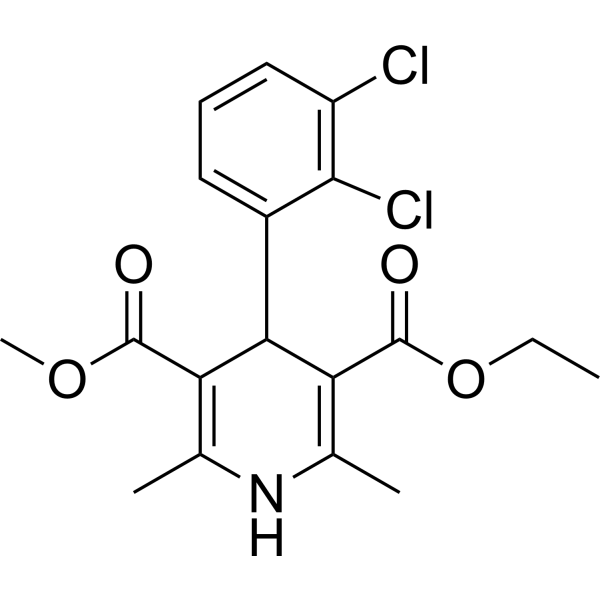
- HY-N2072
-
|
Transcrocetin; trans-Crocetin
|
iGluR
Endogenous Metabolite
|
Cancer
|
|
Crocetin (Transcrocetin), extracted from saffron (Crocus sativus L.), acts as an NMDA receptor antagonist with high affinity . Crocetin is capable of crossing the blood-brain barrier and reach the central nervous system (CNS) .
|
-
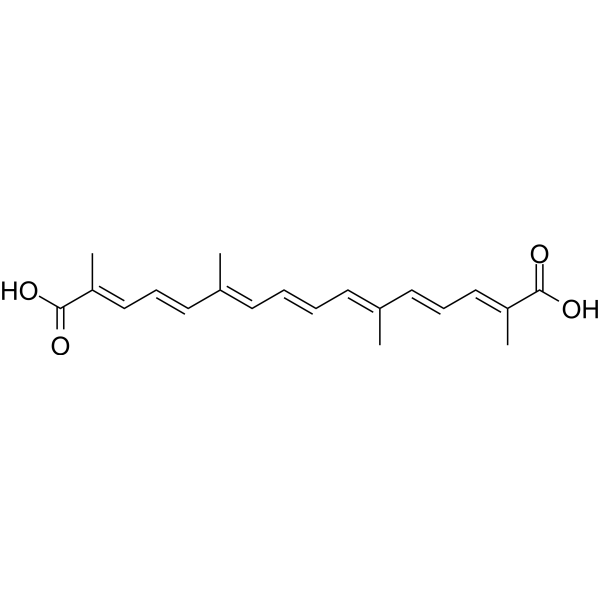
- HY-111653
-
CycLuc1
1 Publications Verification
|
Reactive Oxygen Species
|
Others
|
|
CycLuc1 is a blood-brain barrier permeable luciferase substrate that displays near-infrared (NIR) emission with a peak luminescence wavelength of 599 nm. CycLuc1 can be used for in vivo bioluminescence imaging .
|
-
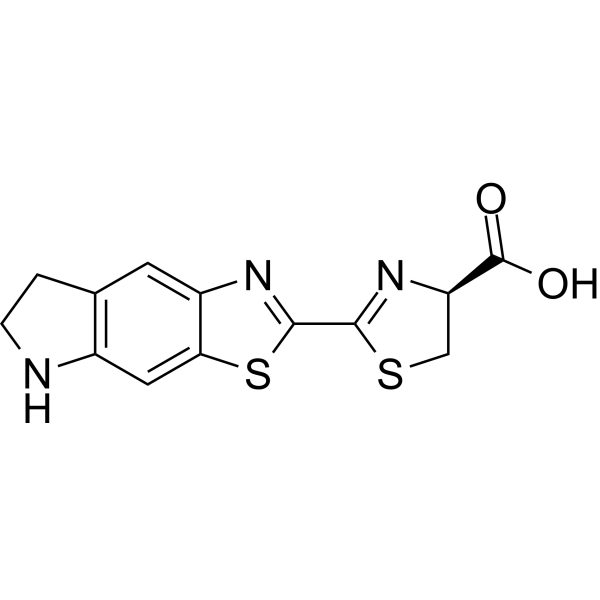
- HY-101485
-
|
Autophagy enhancer-99 hydrobromide
|
Others
|
Neurological Disease
|
|
AUTEN-99 (hydrobromide) is a novel inhibitor of the myotubularin phosphatase Jumpy (also called MTMR14). AUTEN-99 (hydrobromide) crosses the blood-brain barrier and exerts potent neuroprotective effects .
|
-

- HY-149097
-
|
|
Phosphatase
|
Neurological Disease
|
|
ITH12711 is a PP2A ligand. ITH12711 is able to cross the blood-brain barrier (BBB). ITH12711 exerts neuroprotection via restoration of PP2A-phosphatase activity .
|
-
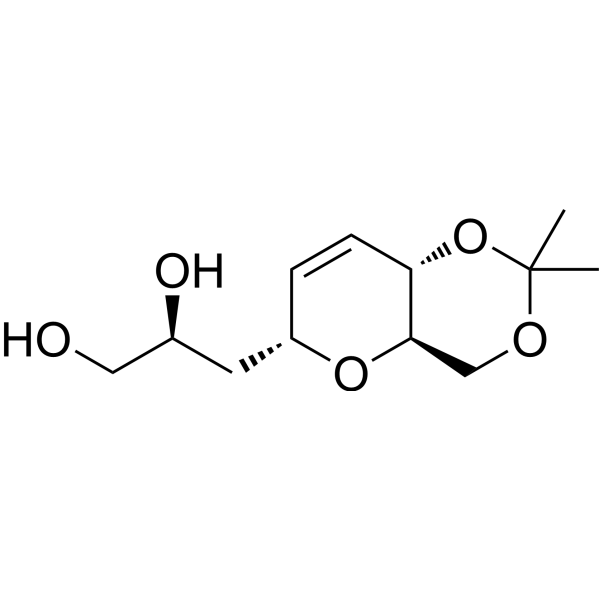
- HY-155086
-
|
|
Cholinesterase (ChE)
|
Neurological Disease
|
|
hAChE-IN-4 (Compd 5d) is a potent, blood-brain barrier-permeable hAChE inhibitor with IC50 of 0.25 μM. hAChE-IN-4 can be used in Alzheimer's disease research .
|
-
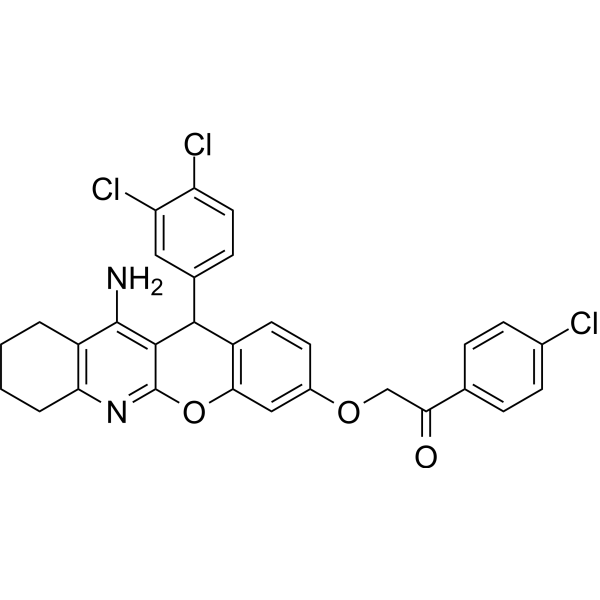
- HY-162039
-
|
|
MMP
|
Cancer
|
|
MMP-11-IN-1 (compound 9) is a new class of phosphinate prodrug. MMP-11-IN-1 is a glycosyl ester of RXP03 and improves blood–brain barrier (BBB) behavior .
|
-
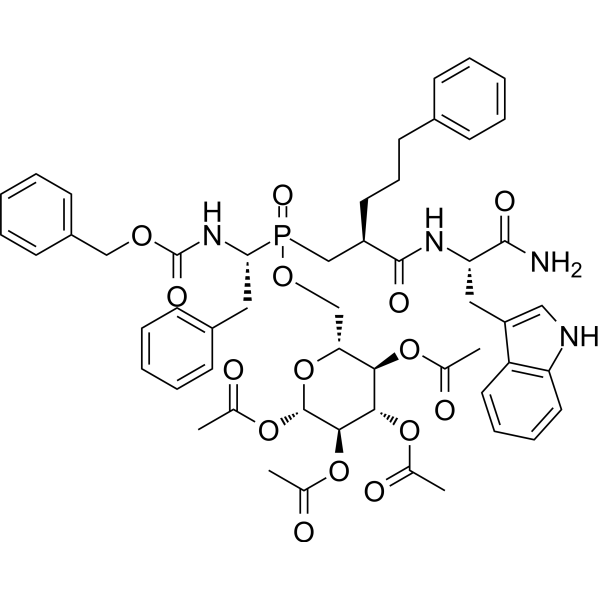
- HY-107663A
-
|
Pro-Leu-Gly-NH2 TFA; Melanostatin TFA
|
Dopamine Receptor
|
Neurological Disease
|
|
MIF-1 TFA (Melanostatin), an endogenous brain peptide, is a potent dopamine receptor allosteric modulator. MIF-1 TFA inhibits melanin formation. MIF-1 TFA blocks the effects of opioid receptor activation to modulate the analgesic effects. MIF-1 TFA accesses from the blood to the CNS by directly crossing the blood-brain barrier (BBB) .
|
-
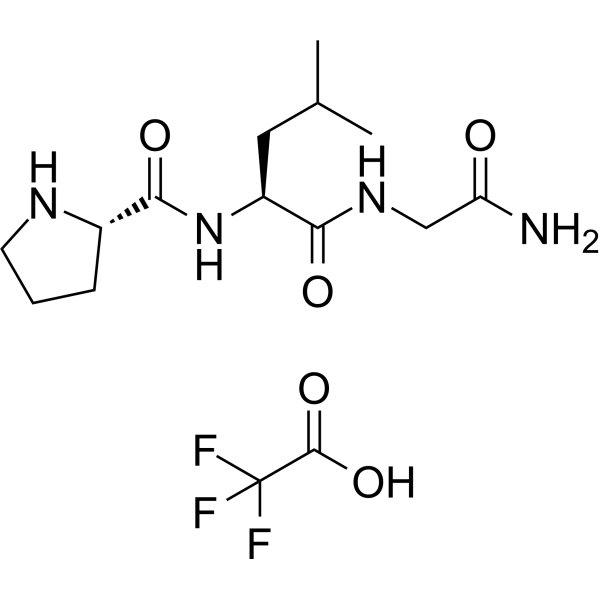
- HY-101446
-
|
|
|
|
|
HIOC is a potent and selective activator of TrkB (tropomyosin related kinase B) receptor. HIOC can pass the blood-brain and blood-retinal barriers.HIOC activates TrkB/ERK pathway and decreases neuronal cell apoptosis. HIOC attenuates early brain injury after SAH (subarachnoid hemorrhage). HIOC shows protective activity in an animal model for light-induced retinal degeneration .
|
-
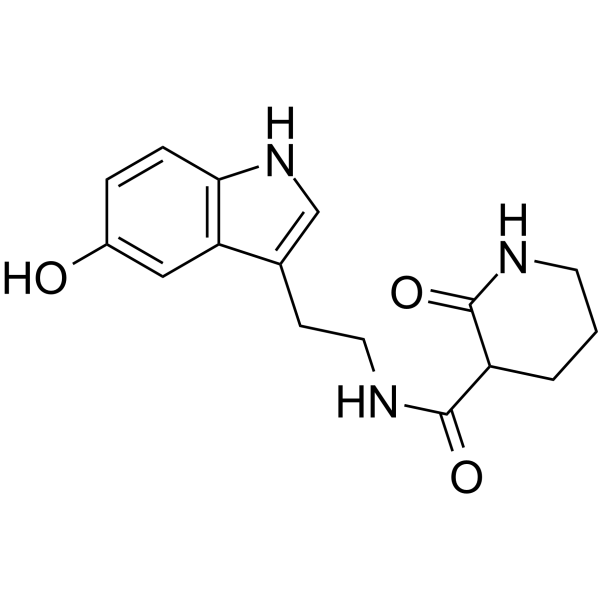
- HY-161380
-
|
|
Fungal
|
Infection
|
|
Antifungal agent 96 (Compound WZ-2) is an antifungal agent with good blood-brain barrier permeability and brain penetration. Antifungal agent 96 inhibits the growth of C. neoformans H99 and C. albicans 0304103 with MIC values of 0.016 and 32 μg/mL, respectively .
|
-

- HY-10959
-
|
RO5045337
|
MDM-2/p53
E1/E2/E3 Enzyme
|
Cancer
|
|
RG7112 is a potent, selective, first clinical, orally active and blood-brain barrier crossed MDM2-p53 inhibitor, with an IC50 of 18 nM and a KD of 11 nM for binding to MDM2 .
|
-
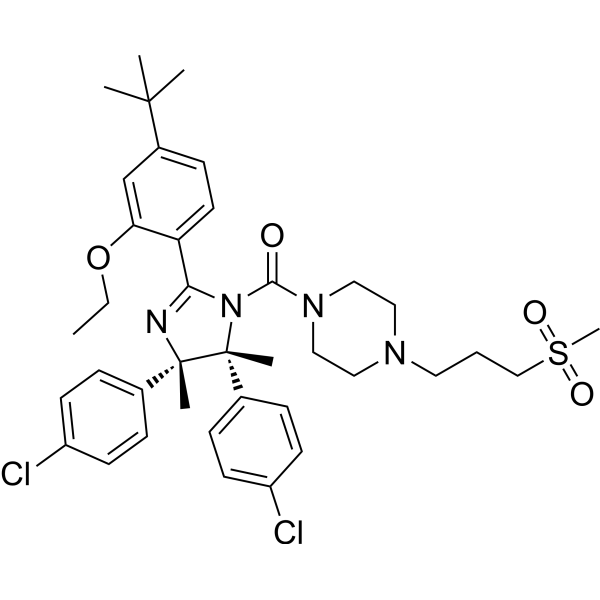
- HY-15722
-
-
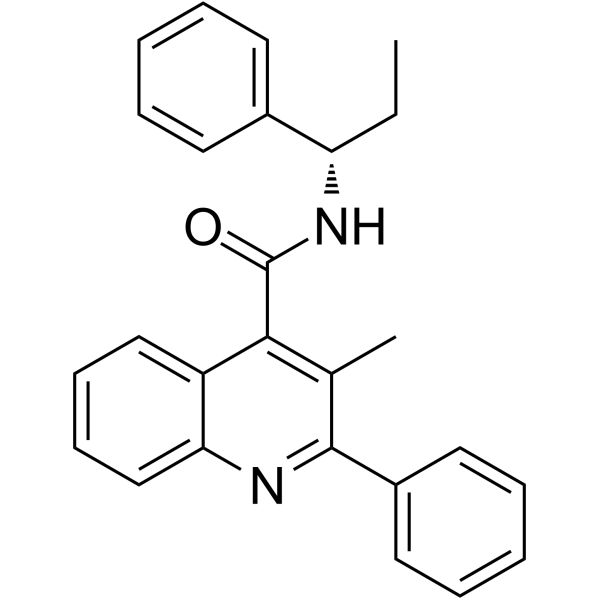
- HY-112906
-
|
|
STING
|
Inflammation/Immunology
|
|
C-176 is a selective and blood-brain barrier permeable STING inhibitor. C-176 covalently targets transmembrane cysteine residue 91 and thereby blocking activation-induced palmitoylation of STING .
|
-
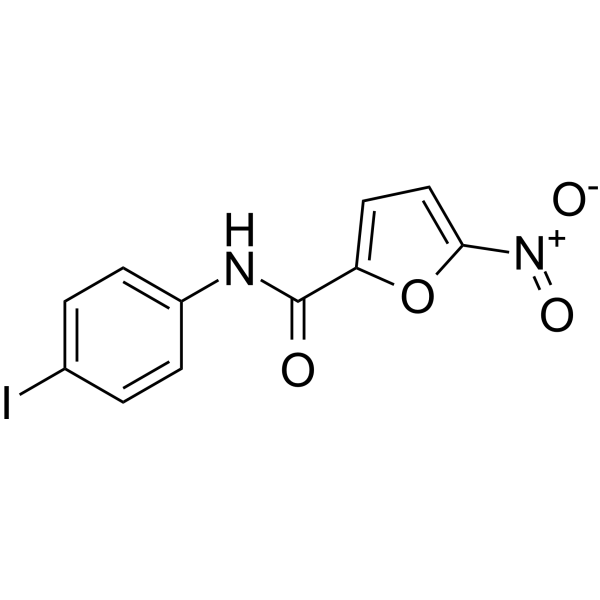
- HY-161307
-
|
|
HDAC
|
Neurological Disease
|
|
T-518 is an orally active, selective, and blood-brain barrier permeable HDAC6 inhibitor with an IC50 value of 36 nM for human HDAC6. T-581 can be used in research on tauopathy .
|
-
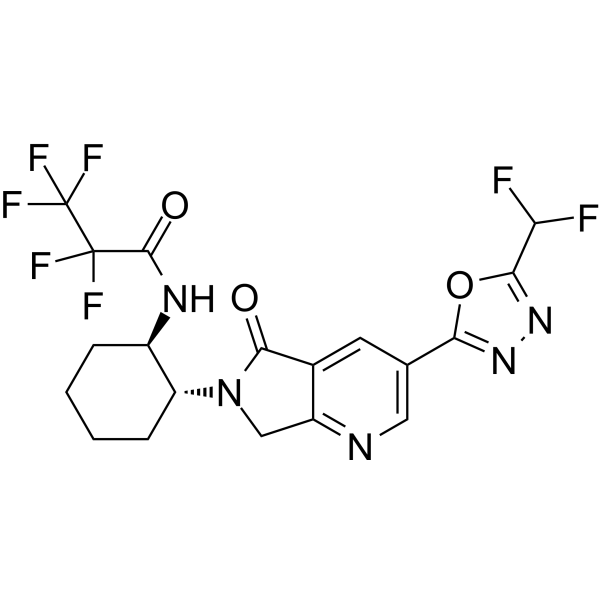
- HY-N7109
-
|
|
|
|
|
Erucic acid, a monounsaturated fatty acid (MUFA), is isolated from the seed of Raphanus sativus L. Erucic acid can readily cross the blood-brain barrier (BBB), it has been reported to normalize the accumulation of very long-chain fatty acids in the brain. Erucic acid can improve cognitive impairment and be effective against dementia
.
|
-
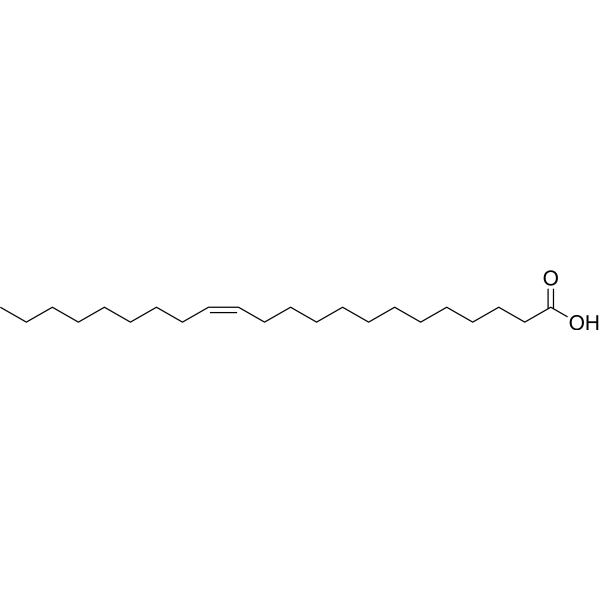
- HY-P4073
-
|
GRN1005; Paclitaxel trevatide
|
Antibody-Drug Conjugates (ADCs)
|
Cancer
|
|
ANG1005 (Paclitaxel trevatide) is a brain-penetrating peptide-drug conjugate. ANG1005, a taxane derivative, consists of three paclitaxel (HY-B0015) molecules covalently linked to Angiopep-2, designed to cross the blood-brain and blood-cerebrospinal barriers and to penetrate malignant cells via low density lipoprotein receptor-related protein (LRP1) transport system .
|
-

- HY-13458S1
-
|
L-DOPS-13C2,15N hydrochloride; DOPS-13C2,15N hydrochloride; SM5688-13C2,15N hydrochloride
|
Adrenergic Receptor
Isotope-Labeled Compounds
|
Neurological Disease
|
|
Droxidopa- 13C2, 15N (hydrochloride) is deuterium labeled Droxidopa. Droxidopa(L-DOPS), the mixture of Droxidopa (w/w80%) and Pharmaceutical starch (w/w20%), acts as a proagent to the neurotransmitters norepinephrine (noradrenaline) and epinephrine (adrenaline); Droxidopa(L-DOPS) is capable of crossing the protective blood–brain barrier[1][2].
|
-

- HY-149980
-
|
|
Parasite
|
Infection
|
|
DCN-83, an anti-leishmania agent, is most potent against the amastigote form with an IC50 of 0.71 μM. DCN-83 has the potential to cross the blood-brain barrier and central nervous system .
|
-
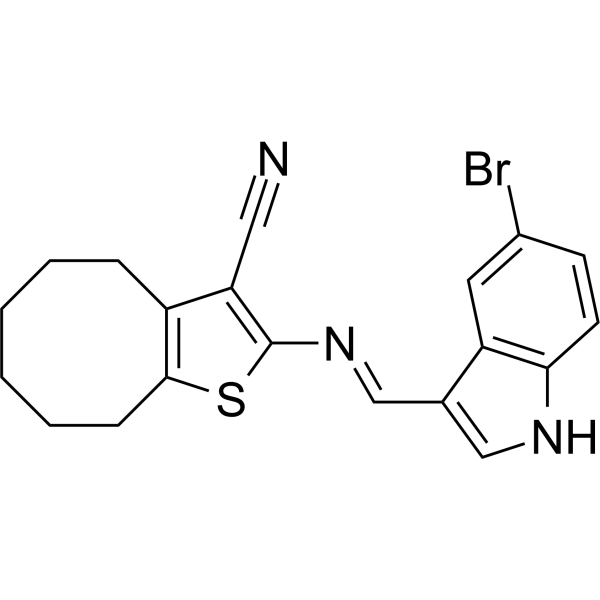
- HY-157466
-
|
|
Parasite
|
Infection
|
|
Antiparasitic agent-21 (compound 28) has selectively antiparasitic activity against Naegleria fowleri with an EC50 of 0.92 μM. Antiparasitic agent-21 has excellent blood-brain barrier permeability .
|
-
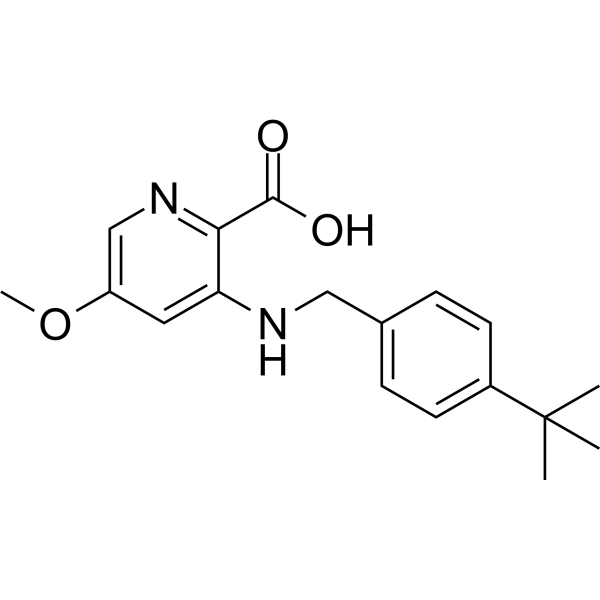
- HY-161163
-
|
|
AMPK
|
Neurological Disease
|
|
IND 1316 is an orally active, blood-brain barrier permeable AMPK activator with neuroprotective effects in animal models of Huntington's disease. IND 1316 can be used for research on neurodegenerative diseases, such as Alzheimer's disease and Parkinson's disease .
|
-
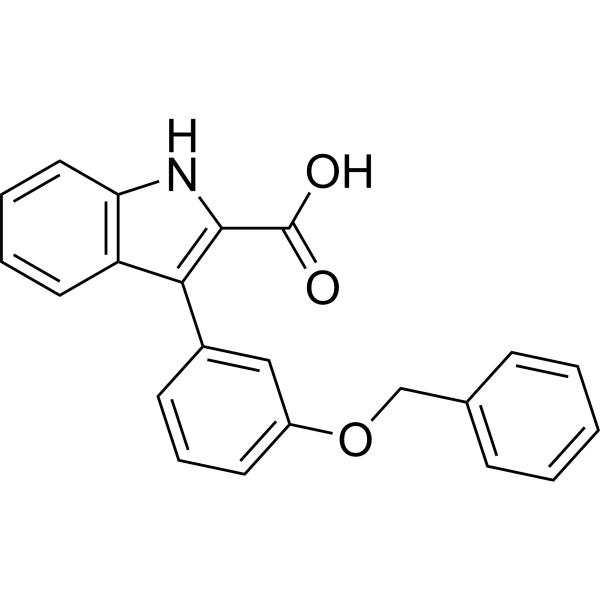
- HY-N12614
-
|
|
Phosphatase
|
Metabolic Disease
|
|
Diorcinol is a potent SHP1 inhibitor with an IC50 value of 0.96 μM. Diorcinol can be isolated from Aspergillus sydowii. Diorcinol has good blood-brain barrier penetration and can be used for diabetes research .
|
-

- HY-160791
-
|
|
Others
|
Infection
Cancer
|
|
Claramine is a steroid polyamine with blood-brain barrier permeability. Claramine can regulate the properties of lipid membranes and protect cells from various biological toxins, including misfolded protein oligomers and biological protein-based toxins .
|
-
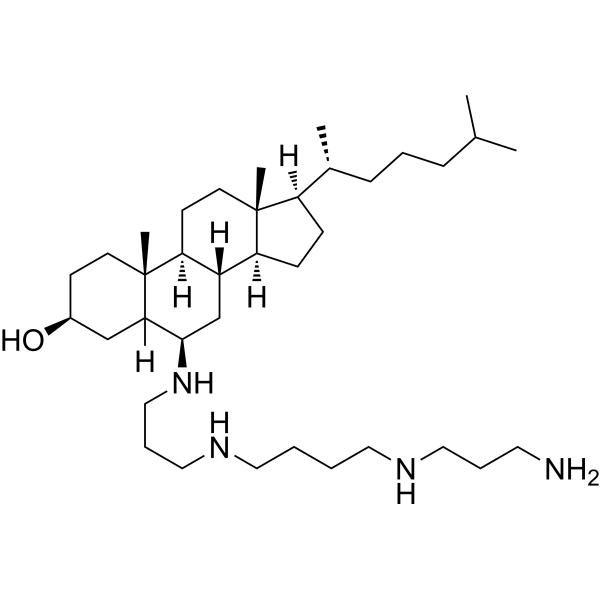
- HY-107531
-
|
|
GSK-3
|
Cancer
|
|
A 1070722 is a potent and selective glycogen synthase kinase 3 (GSK-3) inhibitor, with a Ki of 0.6 nM for both GSK-3α and GSK-3β. A 1070722 can penetrate the blood-brain barrier (BBB) and accumulates in brain regions, thus potential for PET radiotracer for the quantification of GSK-3 in brain .
|
-
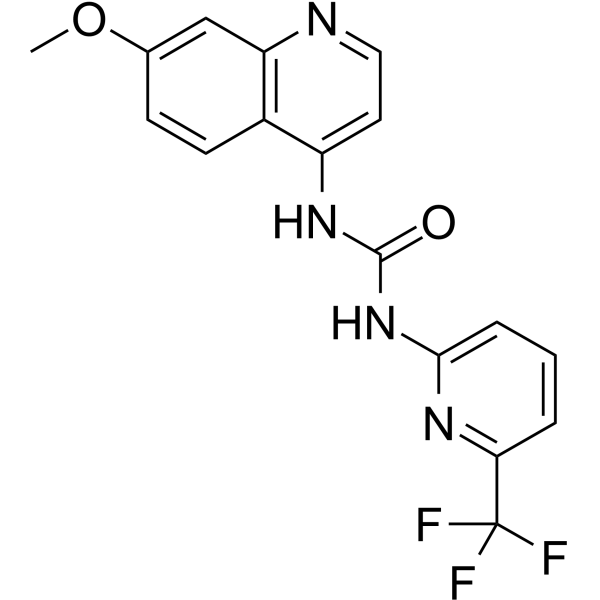
- HY-109012A
-
|
JNJ-42847922 hydrochloride
|
Orexin Receptor (OX Receptor)
|
Neurological Disease
Endocrinology
|
|
Seltorexant hydrochloride (JNJ-42847922 hydrochloride) is an orally active, high-affinity, and selective OX2R antagonist (pKi values of 8.0 and 8.1 for human and rat OX2R). Seltorexant hydrochloride crosses the blood-brain barrier and quickly occupies OX2R binding sites in the rat brain .
|
-
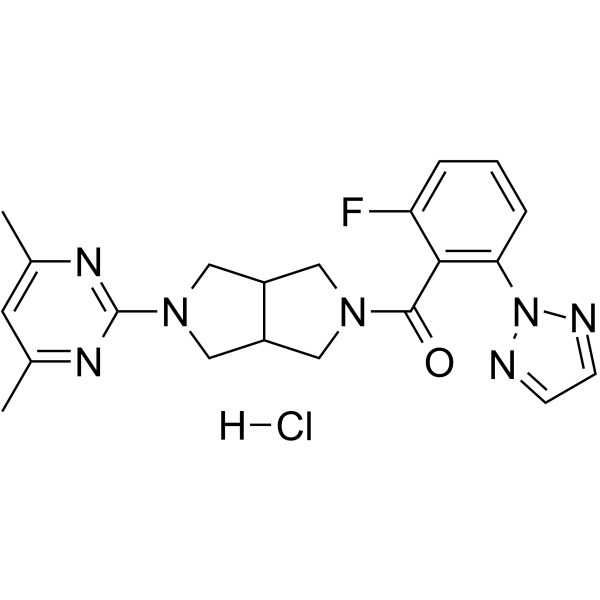
- HY-10900
-
-
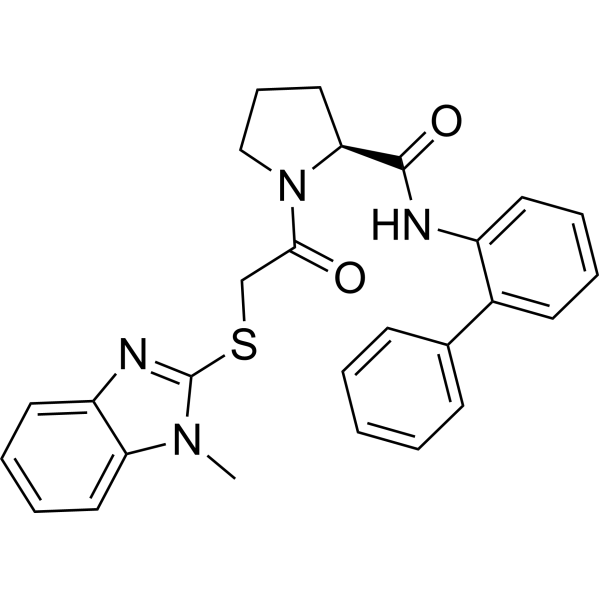
- HY-B0186
-
|
|
Bacterial
Antibiotic
|
Infection
|
|
Cefoselis, the fourth gen-eration of cephalosporin, is a β-lactam antibiotic. Cefoselis exhibits good activity against a wide range of Gram-positive and Gram-negative organisms. Cefoselis penetrates the blood-brain barrier .
|
-
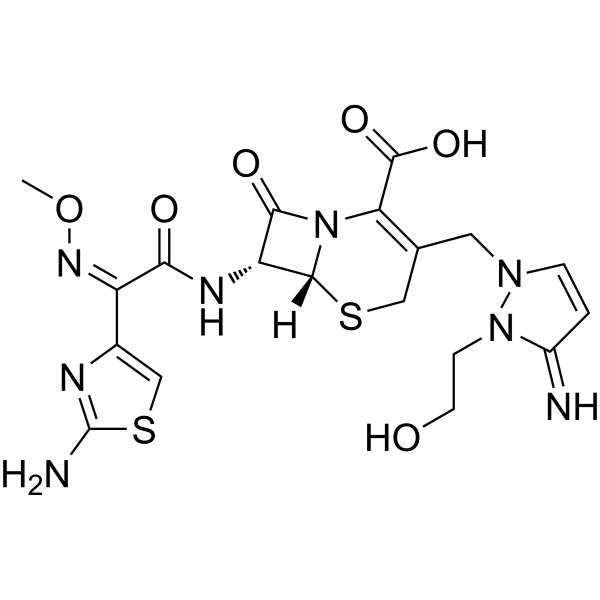
- HY-B0186A
-
|
|
Bacterial
Antibiotic
|
Infection
|
|
Cefoselis hydrochloride, the fourth gen-eration of cephalosporin, is a β-lactam antibiotic. Cefoselis hydrochloride exhibits good activity against a wide range of Gram-positive and Gram-negative organisms. Cefoselis hydrochloride penetrates the blood-brain barrier .
|
-
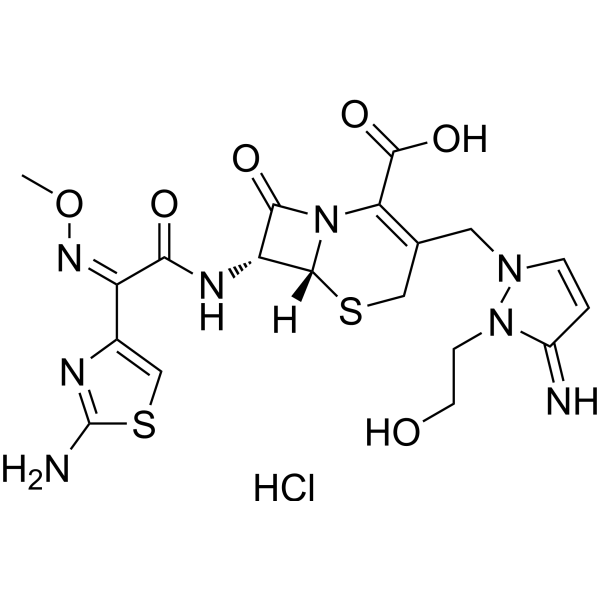
- HY-15976
-
|
|
Others
|
Neurological Disease
|
|
P7C3 is an orally bioavailable and blood-brain barrier penetrant aminopropyl carbazole, with neuroprotective effects. P7C3 can be used for the research of neurodegenerative diseases, including Parkinson's disease .
|
-

- HY-50098A
-
|
PF-2545920 hydrochloride
|
Phosphodiesterase (PDE)
|
Cancer
|
|
Mardepodect hydrochloride (PF-2545920 hydrochloride) is a potent, orally active and selective PDE10A inhibitor with an IC50 of 0.37 nM, with >1000-fold selectivity over other PDEs. Mardepodect hydrochloride can cross the blood-brain barrier .
|
-
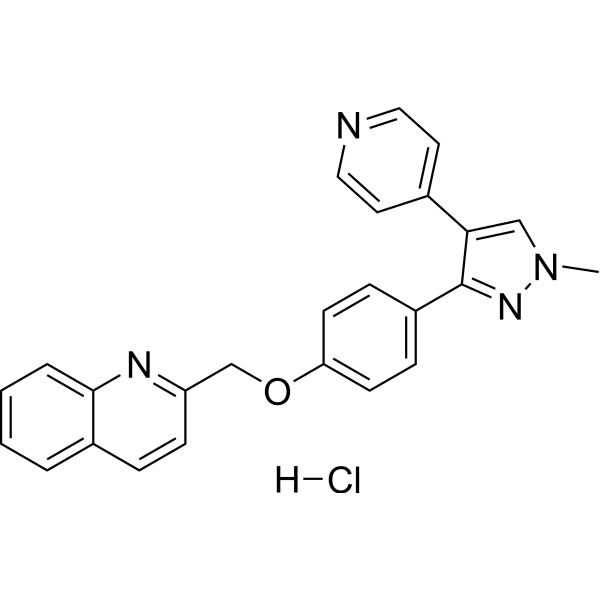
- HY-50098
-
|
PF-2545920
|
Phosphodiesterase (PDE)
|
Neurological Disease
|
|
Mardepodect (PF-2545920) is a potent, orally active and selective PDE10A inhibitor with an IC50 of 0.37 nM, with >1000-fold selectivity over other PDEs. Mardepodect can cross the blood-brain barrier .
|
-
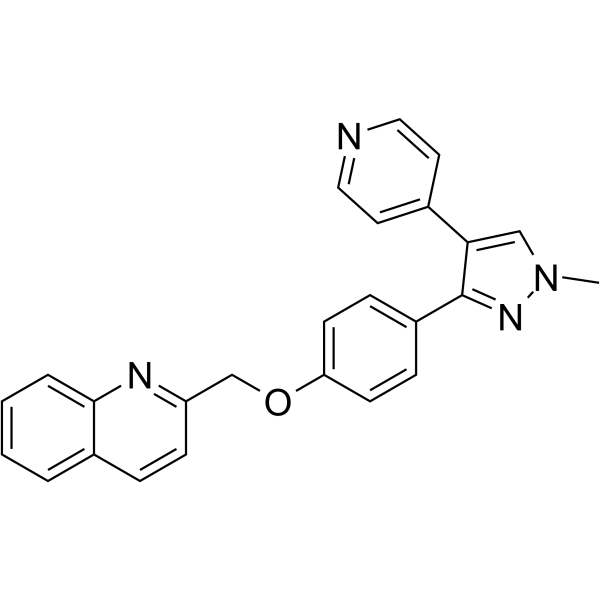
- HY-B1410
-
|
MP-328
|
Others
|
Others
|
|
Ioversol (MP-328) is a nonionic iodinated contrast medium (CM) that is used during a CT scan or x-ray in animal experiment. Ioversol does not damage the blood-brain barrier (BBB) in animal .
|
-
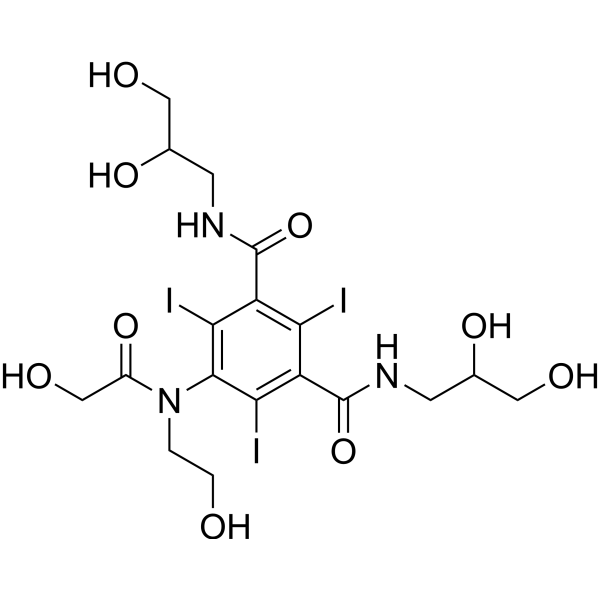
- HY-109061
-
|
YH25448; GNS-1480
|
EGFR
|
Cancer
|
|
Lazertinib (YH25448) is a potent, highly mutant-selective, blood-brain barrier permeable, orally available and irreversible third-generation EGFR tyrosine kinase inhibitor, and can be used in the research of non-small cell lung cancer .
|
-
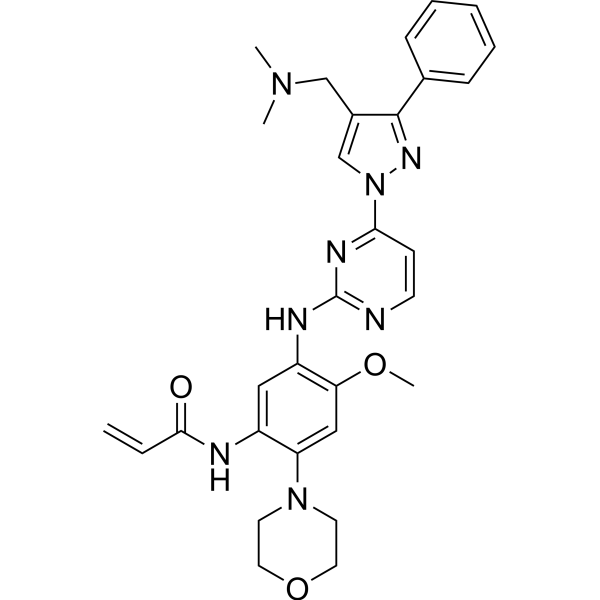
- HY-N1501
-
|
|
Others
|
Neurological Disease
Inflammation/Immunology
|
|
Beta-asarone is a major ingredient of Acorus tatarinowii Schott, penetrates blood brain barrier, with the properties of
immunosuppression, central nervous system inhibition, sedation, and hypothermy. Beta-asarone protects against Parkinson’s disease .
|
-
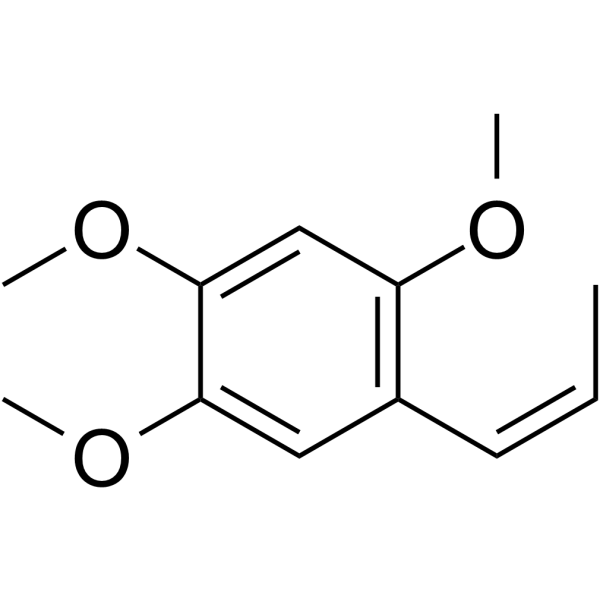
- HY-W016586
-
|
AT-125; U-42126
|
Parasite
|
Infection
Cancer
|
|
Acivicin (AT-125), a natural product produced by Streptomyces sviceus is a γ-glutamyl transpeptidase (GGT) inhibitor. Acivicin can across the blood-brain barrier and has anti-cancer, anti-parasitic properties .
|
-

- HY-100642
-
|
Ro 40-7591
|
|
|
|
3-O-Methyltolcapone (Ro 40-7591) is a metabolite of Tolcapone. Tolcapone is an orally active, reversible, selective and potent COMT inhibitor. Tolcapone crosses the blood-brain barrier, and can be used for treatment of Parkinson's disease .
|
-
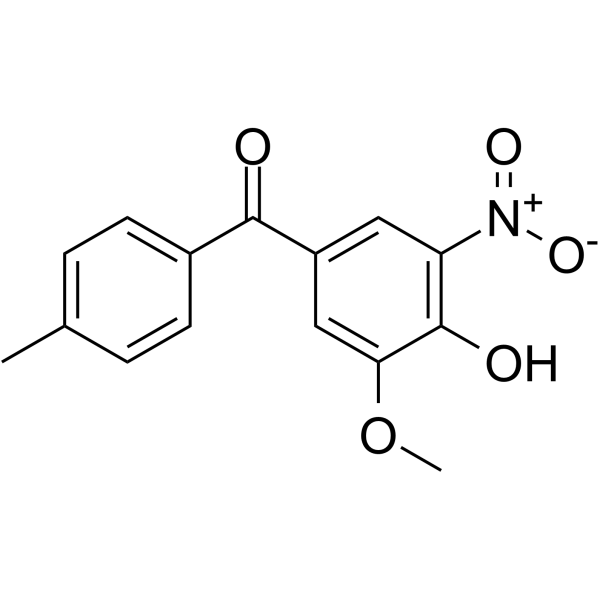
- HY-B1395
-
|
|
|
|
|
Mecamylamine hydrochloride is an orally active, nonselective, noncompetitive nAChR antagonist. Mecamylamine hydrochloride is also a ganglionic blocker. Mecamylamine hydrochloride can across the blood-brain barrier. Mecamylamine hydrochloride can be used in the research of neuropsychiatric disorders, hypertension, antidepressant area .
|
-

- HY-B0627
-
|
1,1-Dimethylbiguanide
|
AMPK
Autophagy
Mitophagy
|
Cardiovascular Disease
Metabolic Disease
Cancer
|
|
Metformin (1,1-Dimethylbiguanide) inhibits the mitochondrial respiratory chain in the liver, leading to activation of AMPK, enhancing insulin sensitivity for type 2 diabetes research. Metformin can cross the blood-brain barrier and triggers autophagy .
|
-

- HY-W016586A
-
|
AT-125 hydrochloride; U-42126 hydrochloride
|
Parasite
|
Infection
Cancer
|
|
Acivicin hydrochloride (AT-125 hydrochloride), a natural product produced by Streptomyces sviceus, is a γ-glutamyl transpeptidase (GGT) inhibitor. Acivicin hydrochloride can across the blood-brain barrier and has anti-cancer, anti-parasitic properties .
|
-
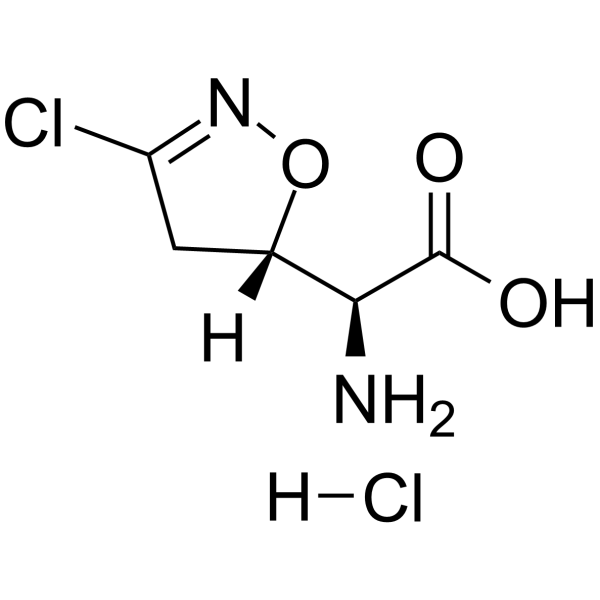
- HY-B1395A
-
|
|
nAChR
Histamine Receptor
|
Cardiovascular Disease
Neurological Disease
|
|
Mecamylamine is an orally active, nonselective, noncompetitive nAChR antagonist. Mecamylamine is also a ganglionic blocker. Mecamylamine can across the blood-brain barrier. Mecamylamine can be used in the research of neuropsychiatric disorders, hypertension, antidepressant area .
|
-

- HY-148711
-
-
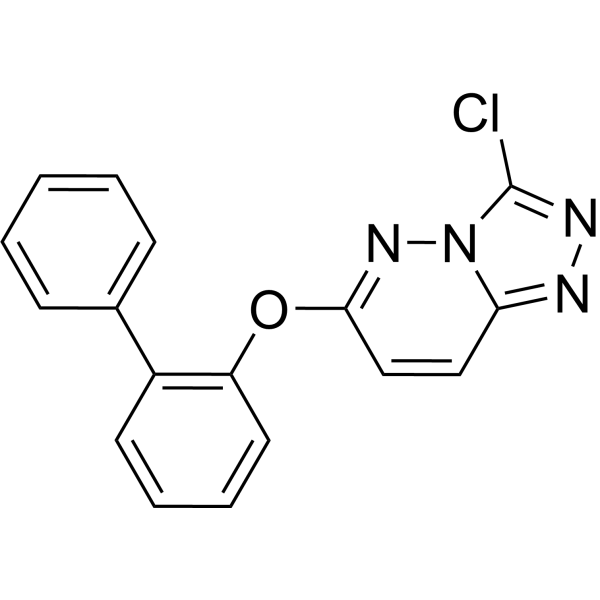
- HY-156842
-
|
|
Amyloid-β
|
Neurological Disease
|
|
MCAAD-3 is a near-infrared Aβ imaging probe with blood-brain barrier penetrability. MCAAD-3 has a strong affinity for Aβ polymers (Ki >106 nM) and can label Aβ plaques in the brains of transgenic mice .
|
-
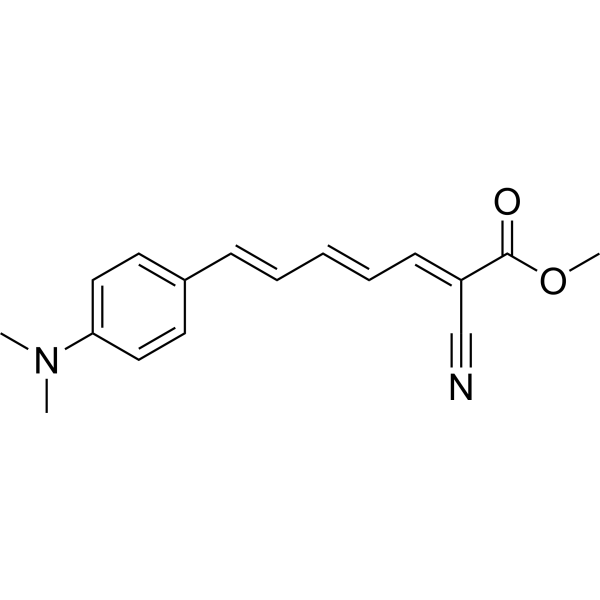
- HY-157430
-
|
|
Epigenetic Reader Domain
|
Neurological Disease
|
|
BET-IN-21 (compound 16) is a blood-brain barrier-permeable extra terminal domain (BET) inhibitor with the Ki of 230 nM. BET-IN-21 inhibits microglia activation and has ameliorative effects on experimental autoimmune encephalomyelitis mice .
|
-
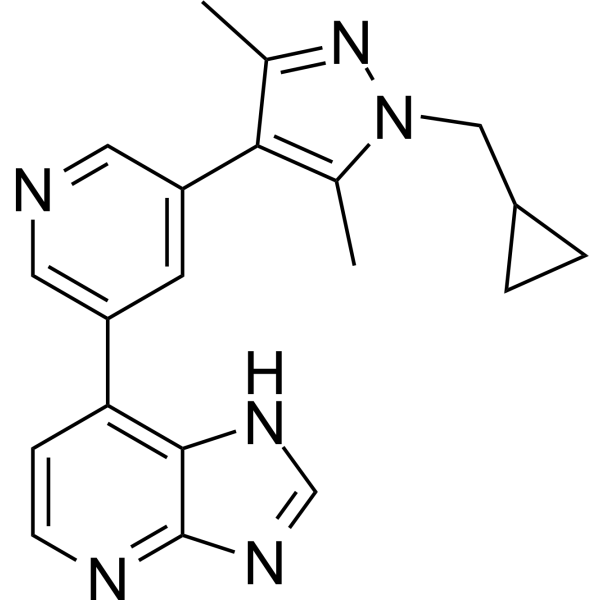
- HY-A0168
-
|
CVT-3146
|
Adenosine Receptor
|
Cardiovascular Disease
|
|
Regadenoson (CVT-3146) is a selective A2A adenosine receptor agonist and vasodilator that increases coronary blood flow, can be used in study of myocardial perfusion imaging. Regadenoson also increases the permeability of the blood-brain barrier (BBB) in rodents, can be used to study increased delivery of agents to the human CNS .
|
-
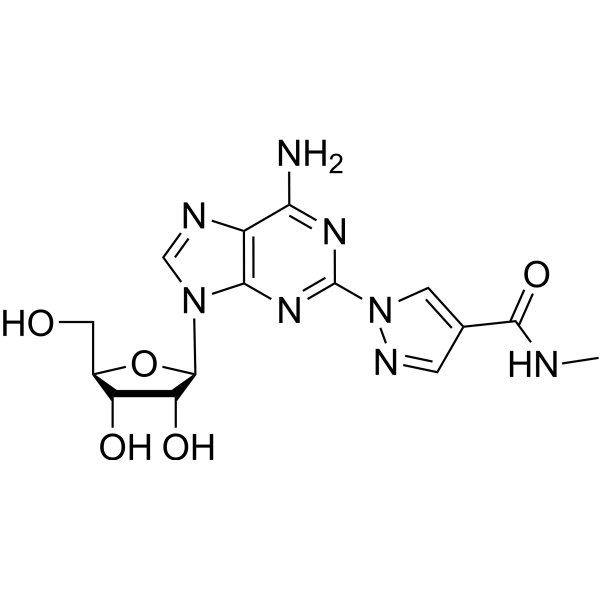
- HY-N0304S
-
|
Levodopa-d6; 3,4-Dihydroxyphenylalanine-d6
|
Dopamine Receptor
Endogenous Metabolite
|
Neurological Disease
|
|
L-DOPA-d6 is the deuterium labeled L-DOPA. L-DOPA (Levodopa) is an orally active metabolic precursor of neurotransmitters dopamine. L-DOPA can cross the blood-brain barrier and is converted into dopamine in the brain. L-DOPA has anti-allodynic effects and the potential for Parkinson's disease[1][2][3].
|
-

- HY-15121
-
|
L-Glutamic Acid γ-ethyl amide; Nγ-Ethyl-L-glutamine
|
Apoptosis
Endogenous Metabolite
Reactive Oxygen Species
|
Neurological Disease
Cancer
|
|
L-Theanine (L-Glutamic Acid γ-ethyl amide) is a non-protein amino acid contained in green tea leaves, which blocks the binding of L-glutamic acid to glutamate receptors in the brain, and with neuroprotective, anticancer and anti-oxidative activities. L-Theanine can pass through the blood–brain barrier and is orally active .
|
-
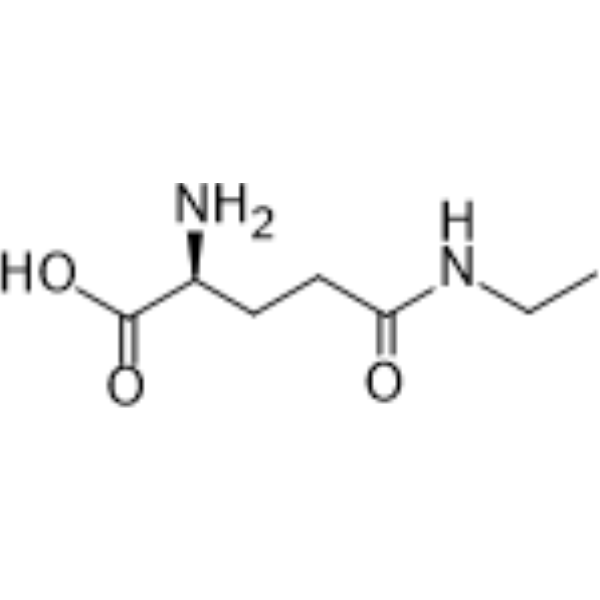
- HY-132310
-
|
|
MAGL
|
Neurological Disease
|
|
MAGL-IN-4 is an orally active, selective and reversible monoacylglycerol lipase (MAGL) inhibitor with an IC50 of 6.2 nM. MAGL-IN-4 can penetrate the blood-brain barrier (BBB). MAGL-IN-4 enhances endocannabinoid signaling mostly by the increase in the level of 2-AG via selective MAGL inhibition in the brain .
|
-

- HY-N0003
-
|
NSC 293100
|
Akt
Autophagy
HCV
ERK
|
Cancer
|
|
Honokiol is a bioactive, biphenolic phytochemical that possesses potent antioxidative, anti-inflammatory, antiangiogenic, and anticancer activities by targeting a variety of signaling molecules. It inhibits the activation of Akt. Honokiol can readily cross the blood brain barrier .
|
-

- HY-105077A
-
|
INN 00835 diTFA
|
5-HT Receptor
|
Neurological Disease
|
|
Nemifitide diTFA (INN 00835 diTFA) is a synthetic pentapeptide antidepressant with a potential for rapid onset of action . Nemifitide diTFA is a peptide analog of melanocyte-inhibiting factor (MIF) . Nemifitide diTFA can cross the blood-brain barrier .
|
-
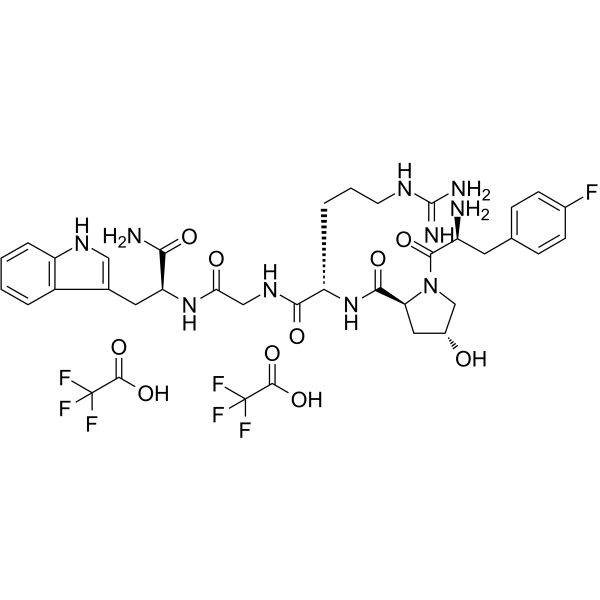
- HY-101059
-
|
|
|
|
|
FGIN 1-27, an indoleacetamide, is a specific peripheral benzodiazepine receptor (PBR) ligand with a Ki of 5.0 nM. FGIN 1-27 can penetrate the blood brain barrier (BBB). FGIN 1-27 inhibits the onset of Isoniazid-induced convulsions .
|
-
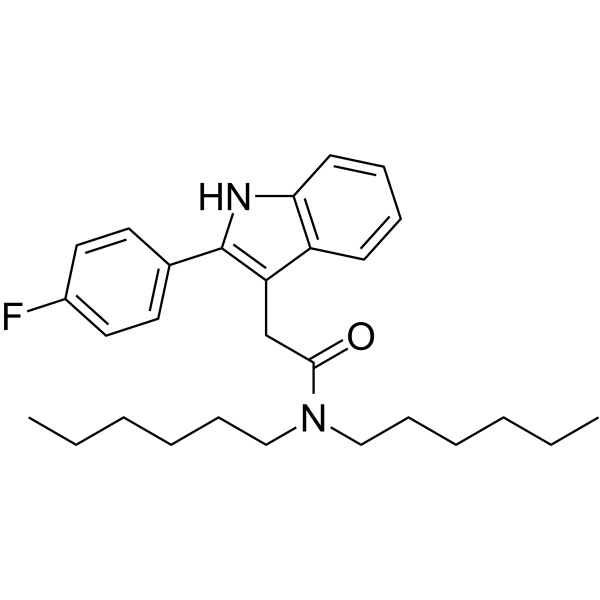
- HY-B0692
-
-
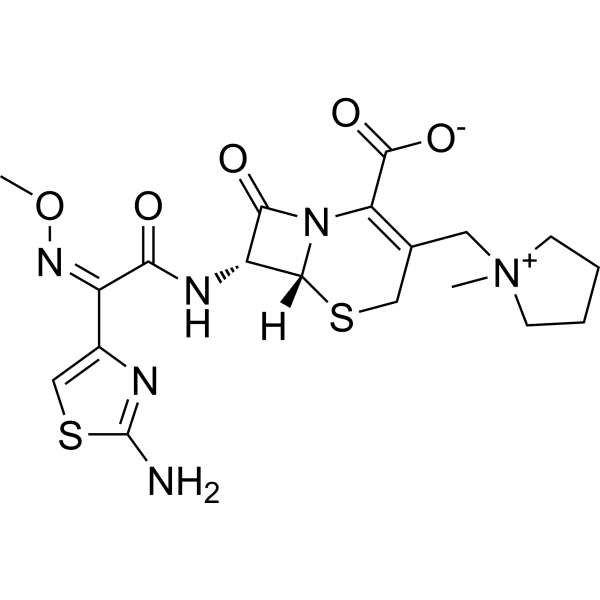
- HY-B0692A
-
|
BMY-28142 chloride
|
Penicillin-binding protein (PBP)
Antibiotic
Bacterial
|
Infection
|
|
Cefepime (BMY-28142) chloride is a broad-spectrum and cross the blood-brain barrier cephalosporin. Cefepime chloride shows antibacterial effects against both Gram-positive and Gram-negative aerobic bacteria. Cefepime chloride induces neurotoxicity .
|
-
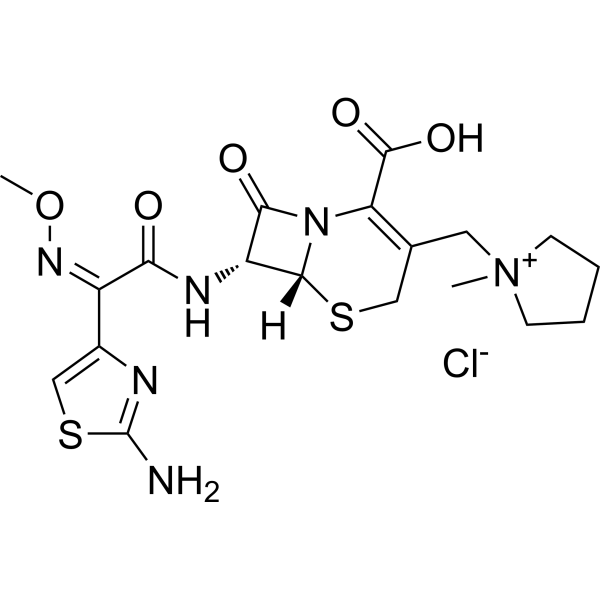
- HY-B1395S1
-
|
|
Isotope-Labeled Compounds
nAChR
|
Neurological Disease
|
|
Mecamylamine (hydrochloride)- 13C4, 15N is the 13C-labeled and 15N-labeled Mecamylamine hydrochloride. Mecamylamine hydrochloride is an orally active, nonselective, noncompetitive nAChR antagonist that can treat various neuropsychiatric disorders. Mecamylamine hydrochloride is originally used as a ganglionic blocker in treating hypertension. Mecamylamine hydrochloride can easily crosses the blood-brain barrier[1][2].
|
-
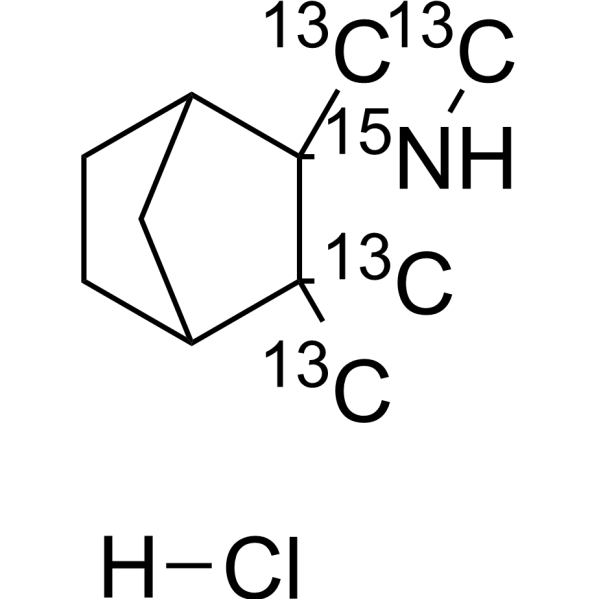
- HY-B0303AS1
-
-
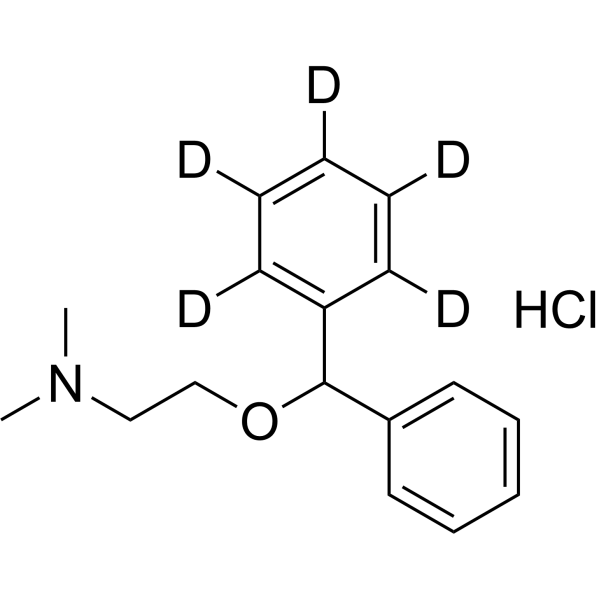
- HY-B0303AS
-
-
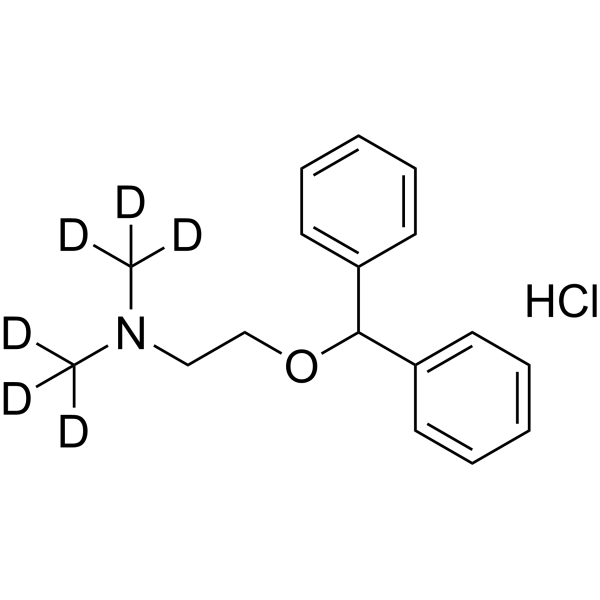
- HY-11030
-
-
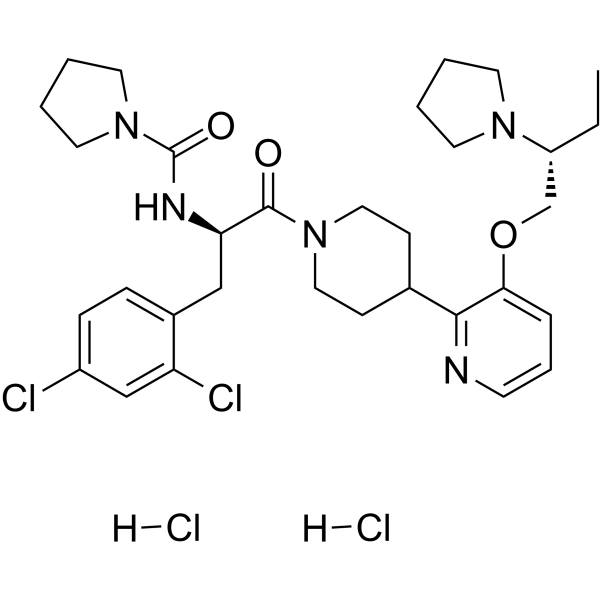
- HY-122015
-
|
|
Potassium Channel
|
Neurological Disease
|
|
ASP2905 is a potent and selective potassium channel Kv12.2 inhibitor encoded by the Kcnh3/BEC1 gene. ASP2905 can cross the blood-brain barrier and has antipsychotic activities .
|
-
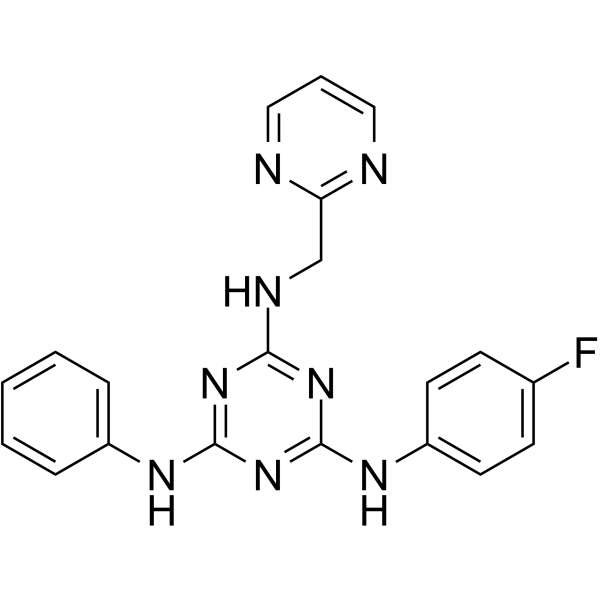
- HY-143877
-
|
|
HDAC
|
Cancer
|
|
NN-390 is a potent and selective HDAC6 inhibitor, with an IC50 of 9.8 nM. NN-390 penetrates the blood-brain barrier (BBB). NN-390 shows study potential in metastatic Group 3 MB (medulloblastoma) .
|
-

- HY-B0318A
-
|
SC 326421
|
Antibiotic
Bacterial
Parasite
Apoptosis
|
Infection
Inflammation/Immunology
|
|
Metronidazole hydrochloride (SC 326421) is an orally active nitroimidazole antibiotic, can be used to research anaerobic infections. Metronidazole hydrochloride can cross blood brain barrier and results inflammation and skeletal muscle contraction under long-term application .
|
-
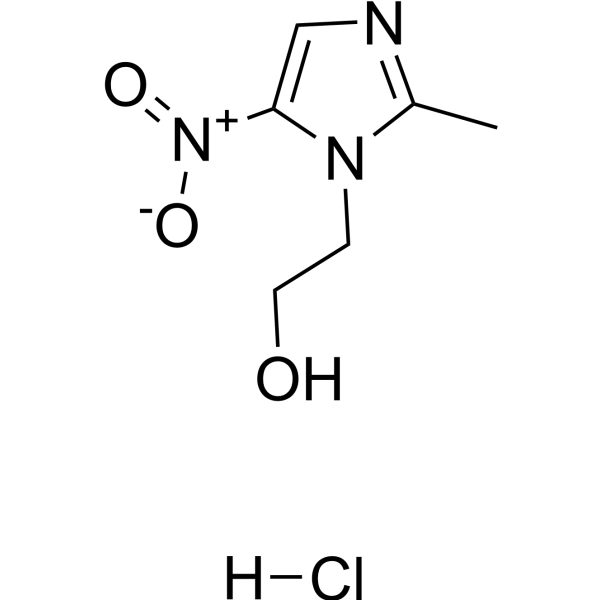
- HY-W717329
-
|
|
Aminopeptidase
|
Cardiovascular Disease
|
|
EC33 is a selective aminopeptidase A (APA) inhibitor. EC33 blocks the pressor response of exogenous Ang II. EC33 does not cross the blood-brain barrier. EC33 has the potential for salt-dependent model of hypertension research .
|
-
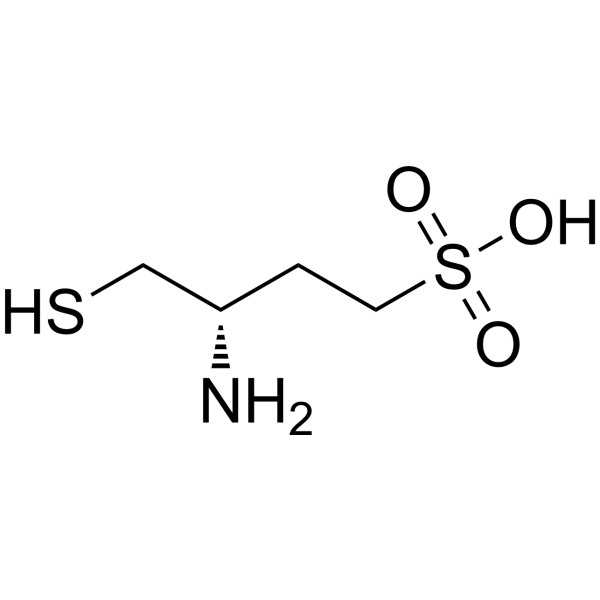
- HY-W013075
-
|
Rutoside trihydrate; Quercetin 3-O-rutinoside trihydrate
|
Apoptosis
Endogenous Metabolite
|
Neurological Disease
Cancer
|
|
Rutin (Rutoside) trihydrate is a multifunctional natural flavonoid glycoside. Rutin trihydrate has been demonstrating excellent antioxidant, anti-inflammatory, anti-diabetic, and anti-carcinogenic properties. Cardioprotective and neuroprotective activities .
|
-
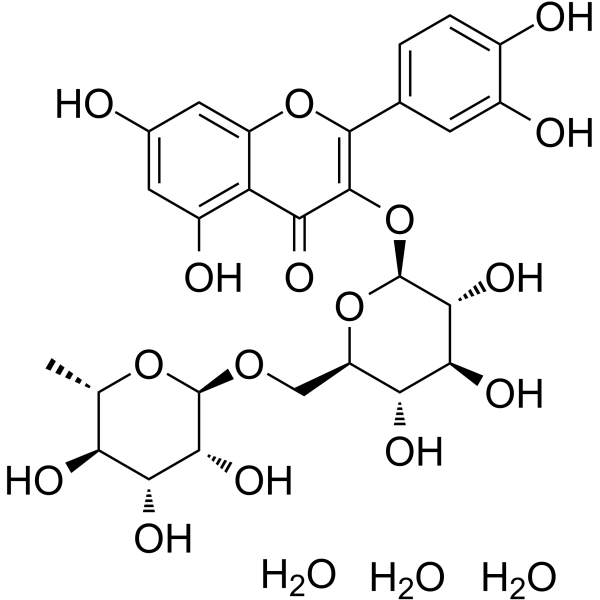
- HY-161376
-
|
|
TGF-β Receptor
|
Cancer
|
|
M4K2281 is a selecitve inhibitor for activin receptor-like kinase-2 (ALK2) with an IC50 of 2 nM. M4K2281 exhibits a moderate blood brain permeability with a brain to plasma ratio of 3.7 at 4h .
|
-
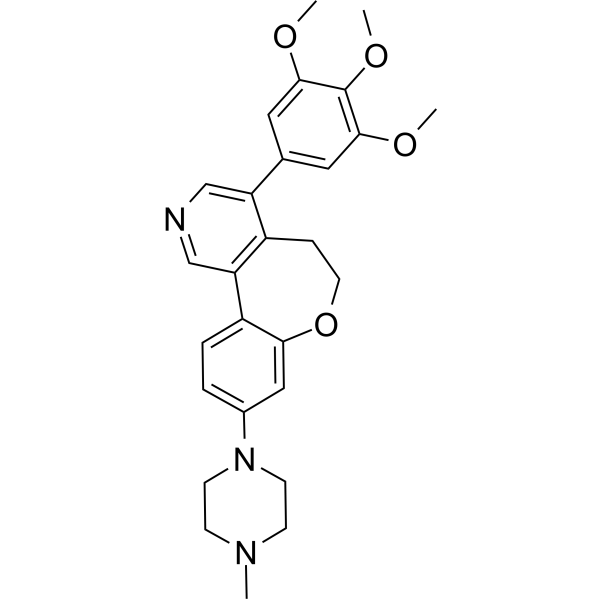
- HY-161377
-
|
|
TGF-β Receptor
|
Cancer
|
|
M4K2306 is a selective inhibitor for activin receptor-like kinase-2 (ALK2) with an IC50 of 7 nM. M4K2306 is blood brain permeable with a brain to plasma ratio of 75.6 .
|
-
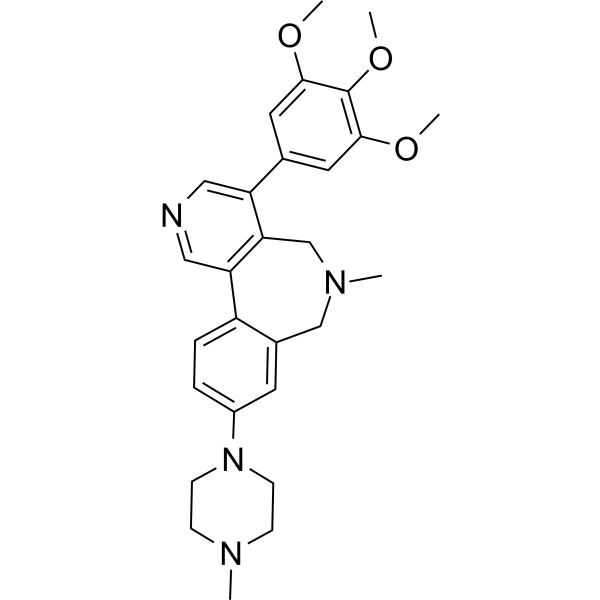
- HY-N0304S1
-
|
Levodopa-13C6; 3,4-Dihydroxyphenylalanine-13C6
|
Dopamine Receptor
Endogenous Metabolite
|
|
|
L-DOPA- 13C6 is the 13C-labled L-DOPA . L-DOPA (Levodopa) is an orally active metabolic precursor of neurotransmitters dopamine. L-DOPA can cross the blood-brain barrier and is converted into dopamine in the brain. L-DOPA has anti-allodynic effects and the potential for Parkinson's disease .
|
-

- HY-N0304S2
-
|
|
Dopamine Receptor
Endogenous Metabolite
|
|
|
L-DOPA- 13C is the 13C labeled L-DOPA[1]. L-DOPA (Levodopa) is an orally active metabolic precursor of neurotransmitters dopamine. L-DOPA can cross the blood-brain barrier and is converted into dopamine in the brain. L-DOPA has anti-allodynic effects and the potential for Parkinson's disease[2][3][4].
|
-
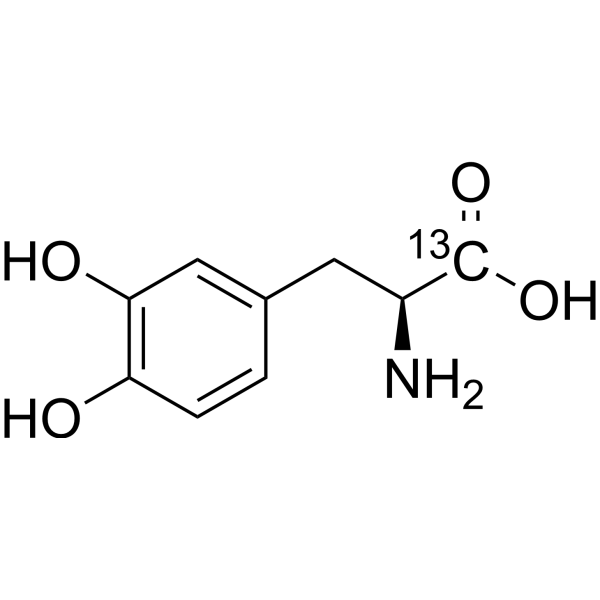
- HY-N0304R
-
|
Levodopa (Standard); 3,4-Dihydroxyphenylalanine (Standard)
|
Dopamine Receptor
Endogenous Metabolite
|
Neurological Disease
Cancer
|
|
L-DOPA (Standard) is the analytical standard of L-DOPA. This product is intended for research and analytical applications. L-DOPA (Levodopa) is an orally active metabolic precursor of neurotransmitters dopamine. L-DOPA can cross the blood-brain barrier and is converted into dopamine in the brain. L-DOPA has anti-allodynic effects and the potential for Parkinson's disease .
|
-
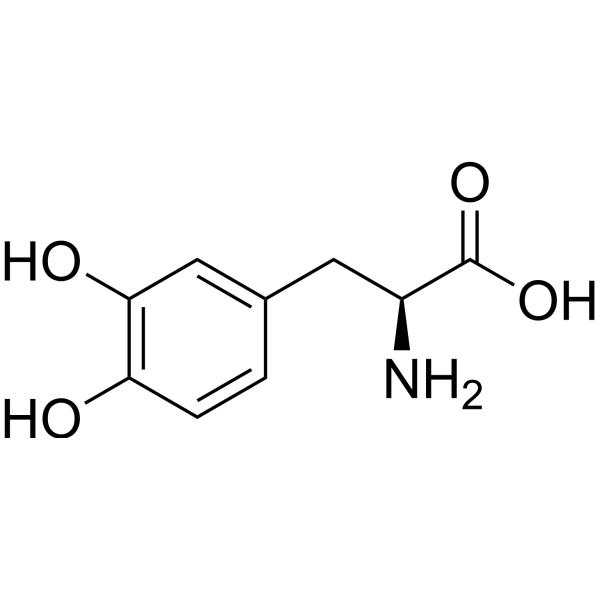
- HY-111455
-
LP-211
1 Publications Verification
|
5-HT Receptor
|
Neurological Disease
|
|
LP-211 is a selective and blood−brain barrier penetrant 5-HT7 receptor agonist, with a Ki of 0.58 nM, with high selectivity over 5-HT1A receptor (Ki, 188 nM) and D2 receptor (Ki, 142 nM).
|
-
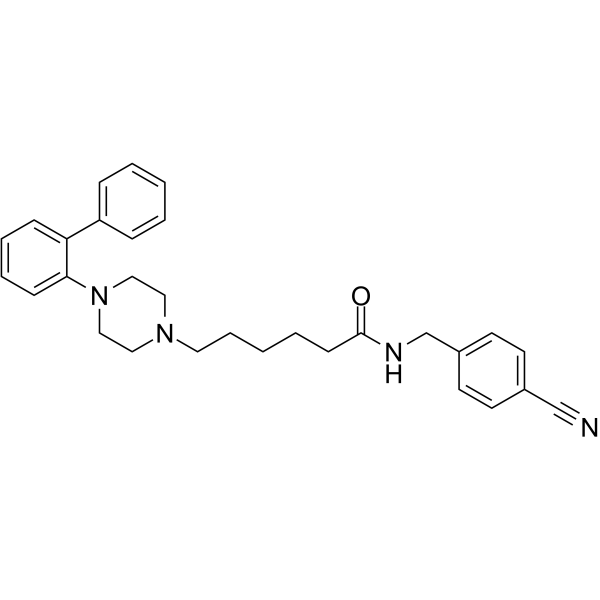
- HY-125017
-
|
PLB-1001; CBT-101; Vebreltinib
|
c-Met/HGFR
|
Cancer
|
|
Bozitinib (PLB-1001) is a highly selective c-MET kinase inhibitor with blood-brain barrier permeability. Bozitinib (PLB-1001) is a ATP-competitive small-molecule inhibitor, binds to the conventional ATP-binding pocket of the tyrosine kinase superfamily .
|
-
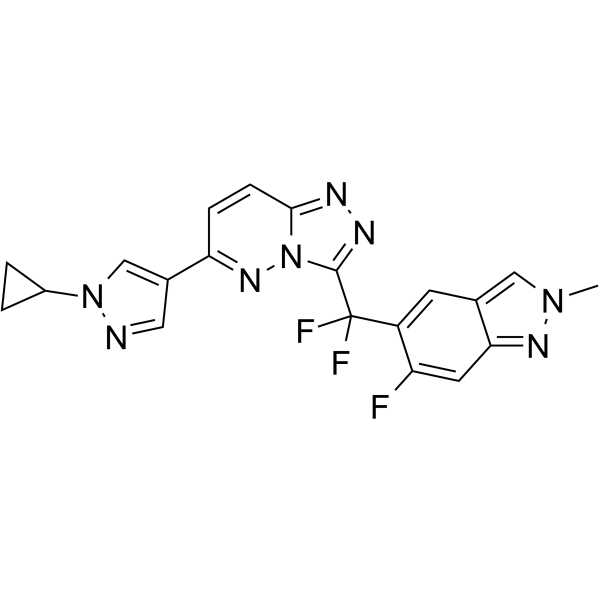
- HY-101456
-
|
4-Chloro-DL-phenylalanine methyl ester hydrochloride
|
|
|
|
PCPA methyl ester hydrochloride (4-Chloro-DL-phenylalanine methyl ester hydrochloride), a reversible tryptophan hydroxylase inhibitor, is a serotonin (5-HT) synthesis inhibitor. PCPA methyl ester hydrochloride crosses the blood brain barrier and reduces 5-HT central availability .
|
-
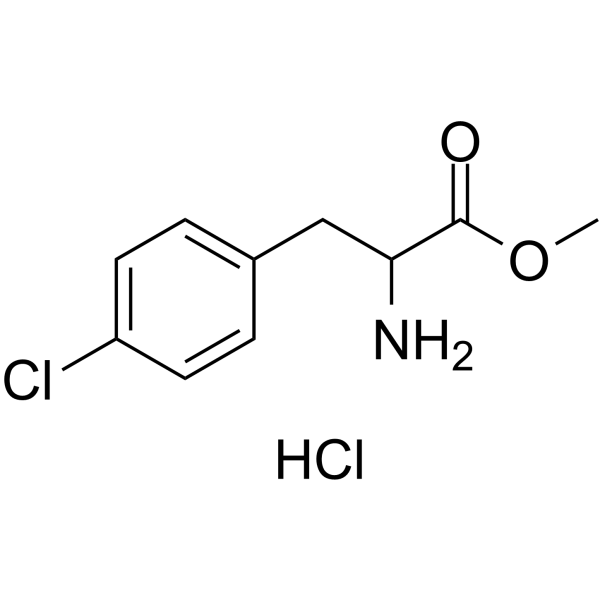
- HY-143464
-
|
|
Cholinesterase (ChE)
|
Neurological Disease
|
|
BChE-IN-4 is a potent and cross the blood-brain barrier BChE inhibitor. BChE-IN-4 attenuates learning and memory deficits caused by cholinergic deficit in mouse model. BChE-IN-4 has the potential for the research of alzheimer’s disease .
|
-
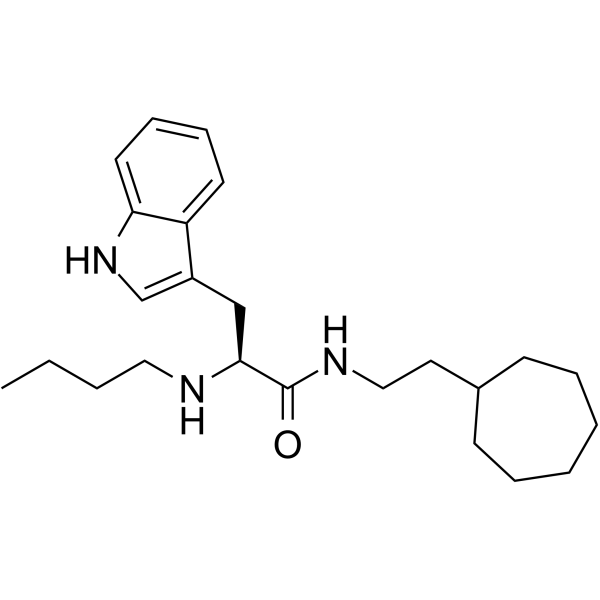
- HY-110180
-
|
|
mGluR
|
Neurological Disease
|
|
VU0409106 is a potent and selective mGlu5 negative allosteric modulator (NAM) with an IC50 of 24 nM. VU0409106 shows anxiolytic effects in rat models in a concentration-dependent manner. VU0409106 also penetrates the blood-brain barrier (BBB) .
|
-
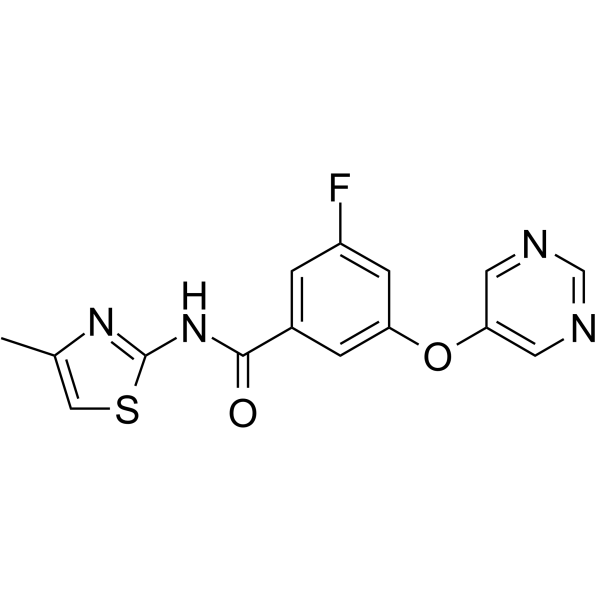
- HY-D0873
-
|
EPPS
|
Amyloid-β
|
Neurological Disease
|
|
HEPPS (EPPS) is a buffering agent with the useful pH range from 7.3 ~ 8.7. HEPPS reduces Aβ-aggregate-induced memory deficits and rescues cognitive deficits in mice. EPPS is orally active and penetrates the blood-brain barrier .
|
-
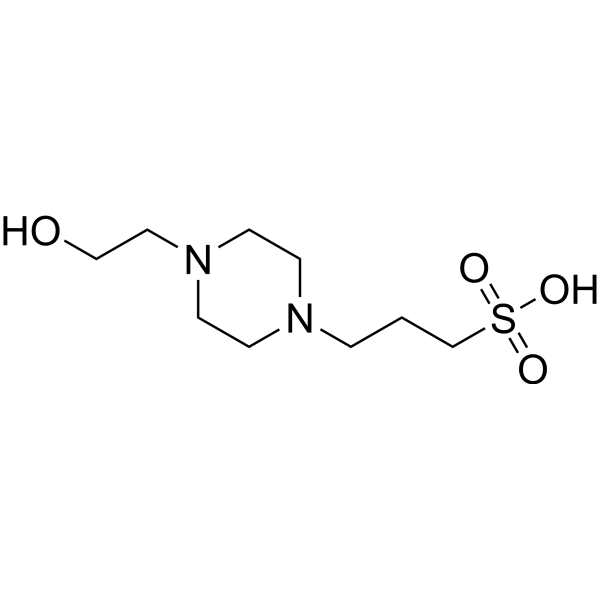
- HY-P3585
-
|
|
TNF Receptor
|
Neurological Disease
Inflammation/Immunology
|
|
Epobis, a dendrimeric peptide, is a recombinant form of erythropoietin. Epobis is a potent erythropoietin receptor agonist. Epobis promotes neuritogenesis in primary motoneurons. Epobis decrease TNF release and crosses the blood-brain barrier. Epobis has anti-inflammatory and memory enhancing properties .
|
-

- HY-116800
-
|
|
Adenosine Receptor
|
Neurological Disease
|
|
FR194921 is a potent, selective and orally active and cross the blood-brain barrier Adenosine A1 antagonist with Ki value of 6.6, 5400 nM for A1, A2A, respectively. FR194921 shows cognitive-enhancing and anxiolytic activity .
|
-
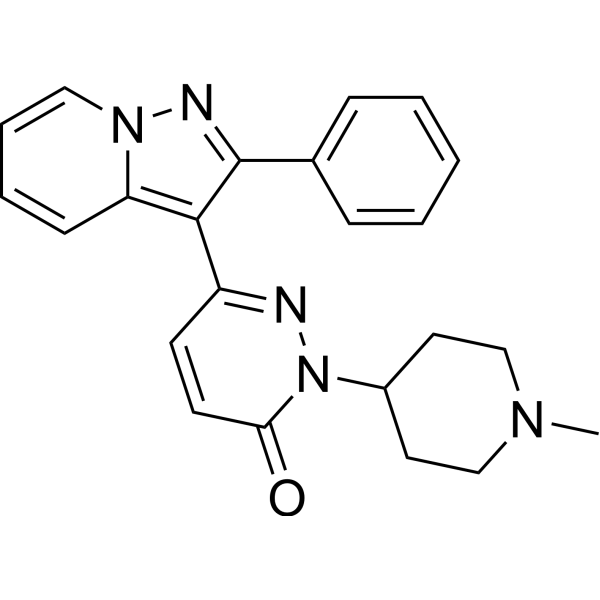
- HY-10328
-
|
VX-745
|
p38 MAPK
Autophagy
|
Inflammation/Immunology
|
|
Neflamapimod (VX-745) is a potent, blood-brain barrier penetrant, highly selective inhibitor of p38α inhibitor with an IC50 for p38α of 10 nM and for p38β of 220 nM. Neflamapimod (VX-745) possesses anti-inflammatory activity.
|
-

- HY-17423
-
|
|
HIV
Reverse Transcriptase
Telomerase
Apoptosis
|
Infection
Cancer
|
|
Abacavir is an orally active and competitive nucleoside reverse transcriptase inhibitor. Abacavir can inhibits the replication of HIV. Abacavir shows anticancer activity in prostate cancer cell lines. Abacavir can trespass the blood-brain-barrier and suppresses telomerase activity .
|
-
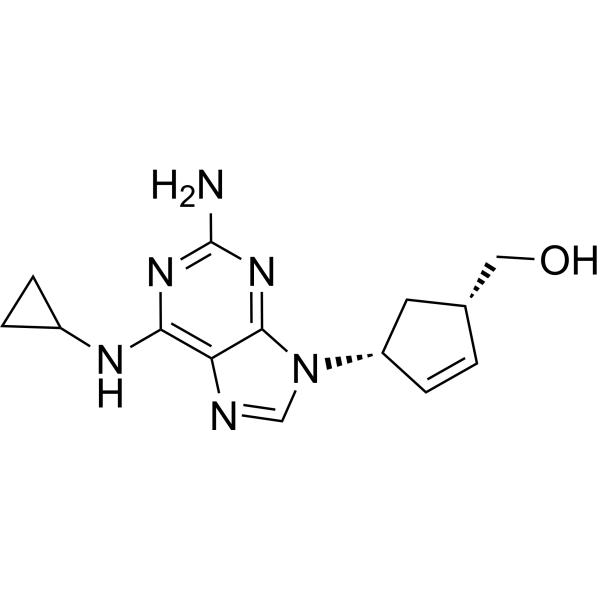
- HY-18236
-
|
Calpain Inhibitor III
|
Proteasome
|
Neurological Disease
Inflammation/Immunology
|
|
MDL-28170 (Calpain Inhibitor III) is a potent, selective and membrane-permeable cysteine protease inhibitor of calpain that rapidly penetrates the blood-brain barrier following systemic administration . MDL-28170 also block γ-secretase .
|
-
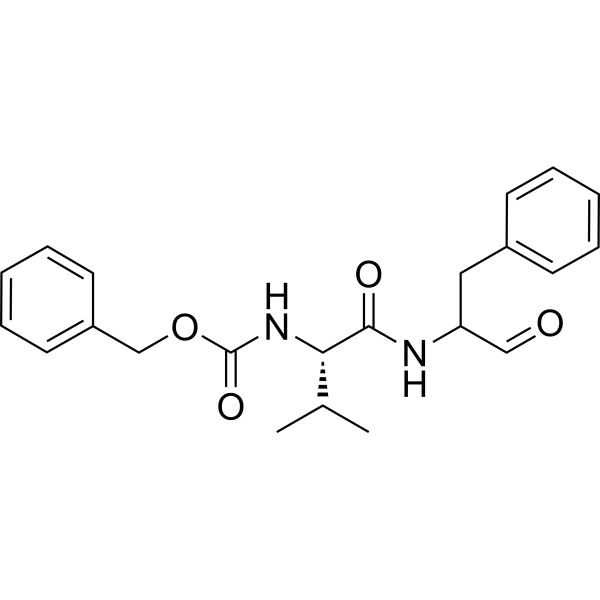
- HY-146588
-
|
|
iGluR
|
Neurological Disease
|
|
NMDA receptor antagonist 4 (IIc) is a uncompetitive, voltage-dependent, orally active NMDAR blocker, with an IC50 of 1.93 µM. NMDA receptor antagonist 4 shows a positive predicted blood-brain-barrier (BBB) permeability, and can be studied in Alzheimer's disease .
|
-
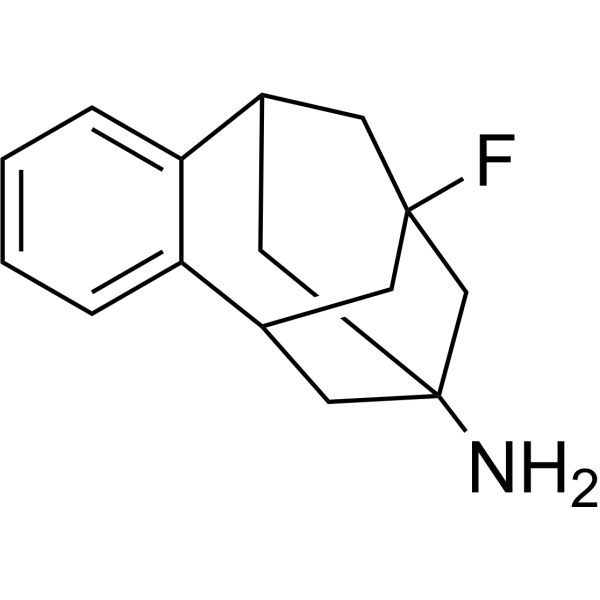
- HY-17423E
-
|
|
HIV
Apoptosis
Reverse Transcriptase
Telomerase
|
Infection
Cancer
|
|
Abacavir hydrochloride is a competitive, orally active nucleoside reverse transcriptase inhibitor. Abacavir hydrochloride can inhibits the replication of HIV. Abacavir hydrochloride shows anticancer activity in prostate cancer cell lines. Abacavir hydrochloride can trespass the blood-brain-barrier and suppresses telomerase activity .
|
-

- HY-N11061
-
|
|
iGluR
|
Neurological Disease
|
|
Withaphysalin D is a selective antagonist against the N-methyl-D-aspartate receptor (NMDAR) containing GluN2B. Withaphysalin D can be isolated from water lilies and has neuroprotective properties. Withaphysalin D is able to cross the blood-brain barrier .
|
-
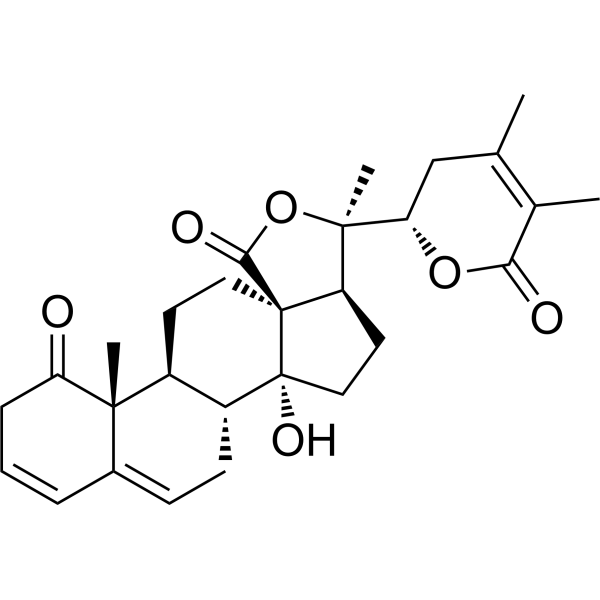
- HY-148565
-
|
|
Serotonin Transporter
|
Neurological Disease
|
|
SERT-IN-2 is a potent SERT inhibitor (IC50=0.58 nM) with promising anti-depression efficacy. SERT-IN-2 shows good bioavailability of 83.28% in rats. SERT-IN-2 can cross the blood-brain barrier .
|
-
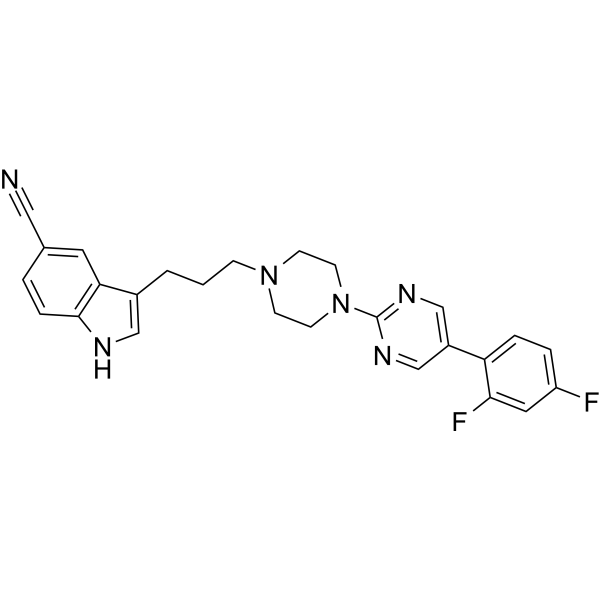
- HY-B0303AR
-
|
|
Histamine Receptor
Endogenous Metabolite
Bacterial
|
Inflammation/Immunology
Endocrinology
Cancer
|
|
Diphenhydramine (hydrochloride) (Standard) is the analytical standard of Diphenhydramine (hydrochloride). This product is intended for research and analytical applications. Diphenhydramine hydrochloride is a first-generation histamine H1-receptor antagonist with anti-cholinergic effect. Diphenhydramine hydrochloride can across the ovine blood-brain barrier (BBB) .
|
-
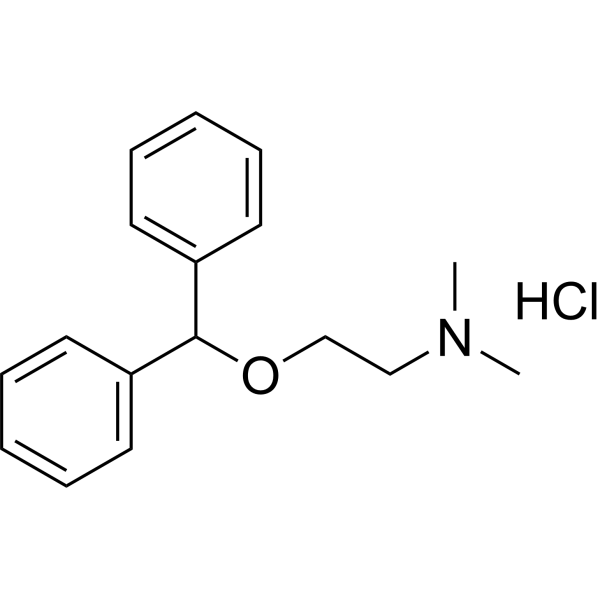
- HY-109012
-
|
JNJ-42847922
|
Orexin Receptor (OX Receptor)
|
Neurological Disease
Endocrinology
|
|
Seltorexant (JNJ-42847922) is an orally active, high-affinity, and selective orexin-2 receptor (OX2R) antagonist (pKi values of 8.0 and 8.1 for human and rat OX2R). Seltorexant (JNJ-42847922) crosses the blood-brain barrier and quickly occupies OX2R binding sites in the rat brain .
|
-

- HY-50682
-
|
TTP488; PF-04494700
|
Amyloid-β
|
Neurological Disease
|
|
Azeliragon (TTP488) is an orally bioavailable inhibitor of the receptor for advanced glycation end products (RAGE) in development as a potential treatment to slow disease progression in patients with mild Alzheimer’s disease (AD) . Azeliragon also can cross the blood-brain barrier (BBB) .
|
-
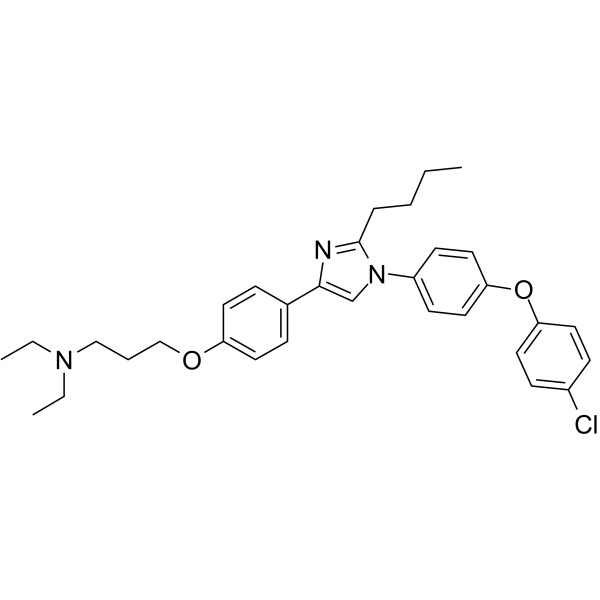
- HY-100238
-
|
|
|
|
|
Antihistamine-1 is a H1-antihistamine (Ki=6.9 nM) with acceptable blood-brain barrier penetration and also an inhibitor of CYP2D6 and hERG channel with IC50s of 5.4 and 0.8 μM, respectively.
|
-
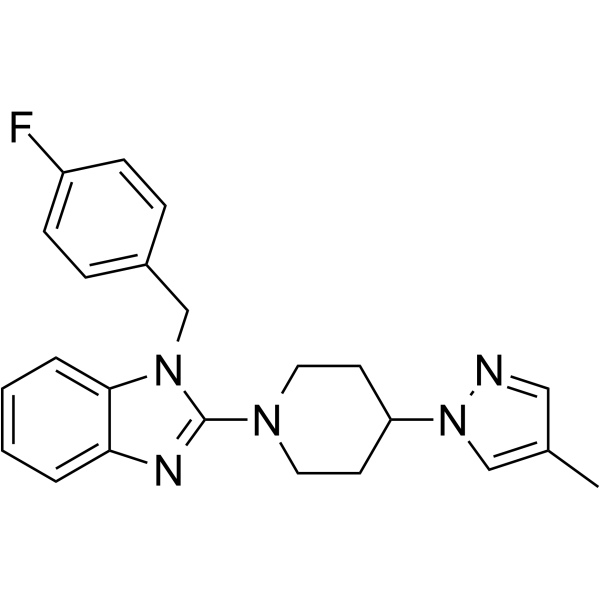
- HY-N2160
-
|
|
|
|
|
6'''-Feruloylspinosin is a flavonoid isolated from seeds of Ziziphus jujuba. 6'''-Feruloylspinosin can across the blood-brain barrier and enhance the expression of GABAAα1, GABAAα5, and GABABR1 mRNA in rat hippocampal neurons .
|
-
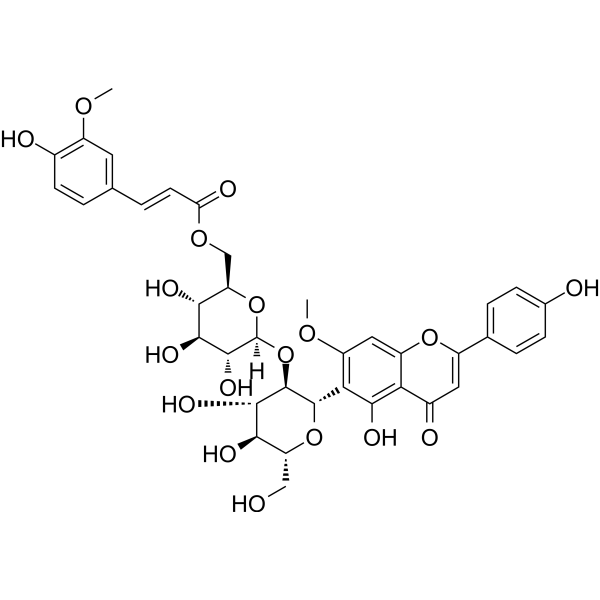
- HY-N6608
-
|
Eserine
|
Cholinesterase (ChE)
|
Neurological Disease
|
|
Physostigmine (Eserine) is a reversible acetylcholinesterase (AChE) inhibitor. Physostigmine can crosses the blood-brain barrier and stimulates central cholinergic neurotransmission. Physostigmine can reverse memory deficits in transgenic mice with Alzheimer's disease. Physostigmine is also an antidote for anticholinergic poisoning .
|
-
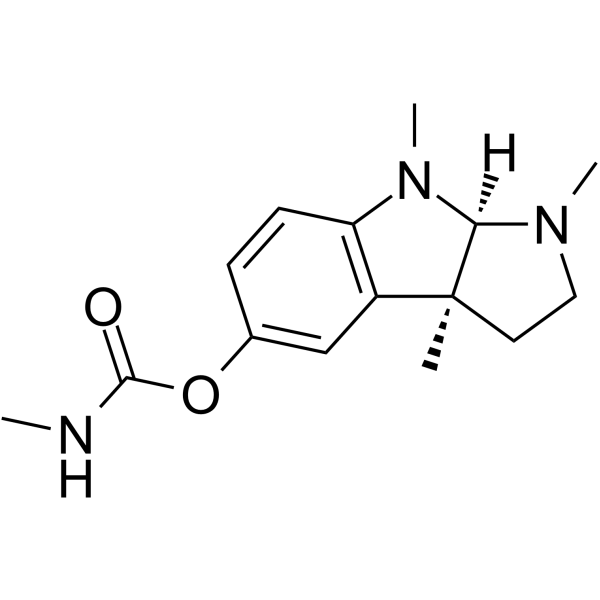
- HY-N6685S1
-
|
|
Isotope-Labeled Compounds
|
Cardiovascular Disease
|
|
3-Acetyldeoxynivalenol- 13C17 is the 13C labeled 3-Acetyldeoxynivalenol (HY-N6685) . 3-Acetyldeoxynivalenol, a trichothecene mycotoxin deoxynivalenol (DON) acetylated derivative , is a blood-brain barrier (BBB) permeable mycotoxin .
|
-
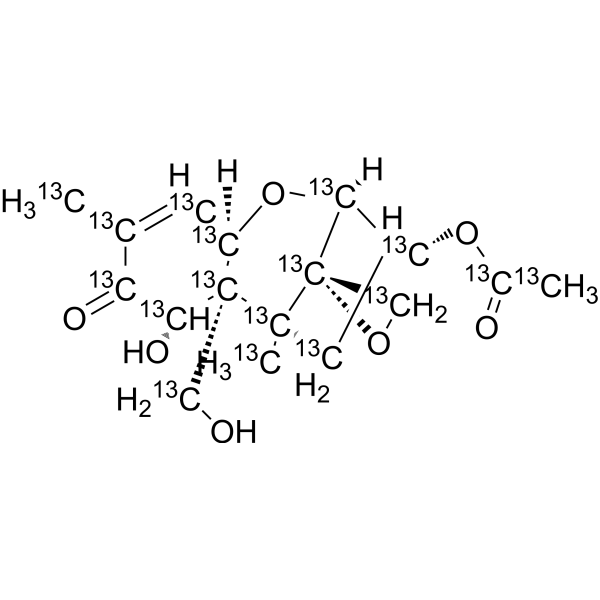
- HY-13788
-
|
|
5-HT Receptor
Adrenergic Receptor
|
Neurological Disease
|
|
LY 344864 is a selective, orally active 5-HT1F receptor agonist with a Ki of 6 nM. LY 344864 is a full agonist producing an effect similar in magnitude to serotonin itself. LY 344864 can cross the blood brain barrier to some extent .
|
-
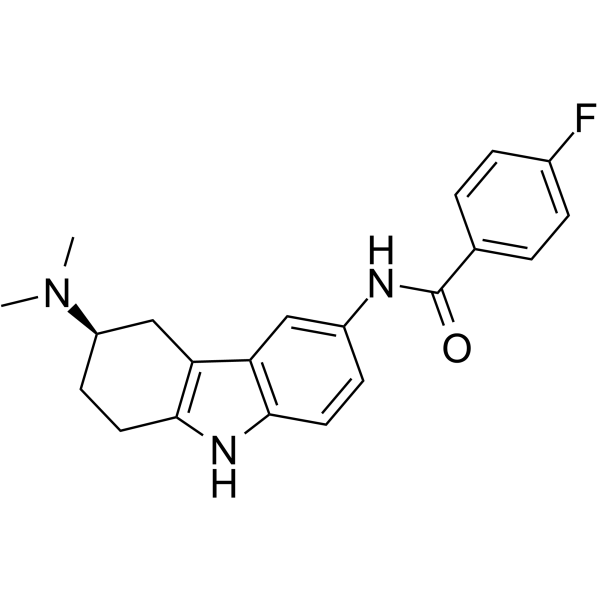
- HY-15760
-
-
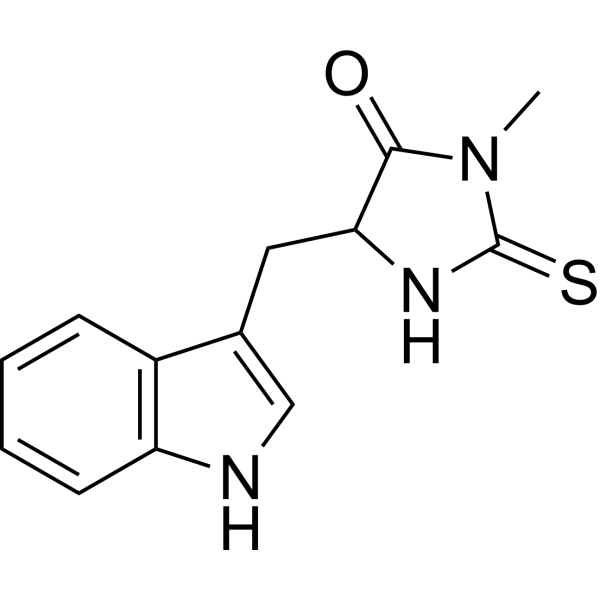
- HY-B0186B
-
|
FK-037
|
Bacterial
Antibiotic
|
Infection
|
|
Cefoselis sulfate (FK-037), the fourth gen-eration of cephalosporin, is a β-lactam antibiotic. Cefoselis sulfate exhibits good activity against a wide range of Gram-positive and Gram-negative organisms. Cefoselis sulfate penetrates the blood-brain barrier .
|
-
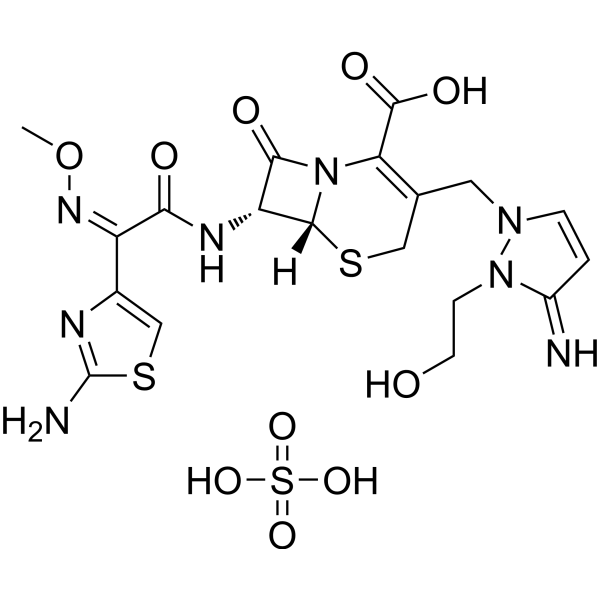
- HY-13788B
-
|
|
5-HT Receptor
Adrenergic Receptor
|
Neurological Disease
|
|
LY 344864 hydrochloride is a selective, orally active 5-HT1F receptor agonist with a Ki of 6 nM. LY 344864 hydrochloride is a full agonist producing an effect similar in magnitude to serotonin itself. LY 344864 hydrochloride can cross the blood brain barrier to some extent .
|
-

- HY-11030A
-
|
|
Melanocortin Receptor
|
Metabolic Disease
Endocrinology
Cancer
|
|
SNT207858 free base is a selective, blood brain barrier penetrating, potent and orally active melanocortin-4 (MC-4) receptor antagonist. SNT207858 free base has an IC50 of 22 nM (binding) and 11 nM (function) on the MC-4 receptor .
|
-

- HY-120738
-
|
|
5-HT Receptor
|
Neurological Disease
|
|
p-MPPI hydrochloride is a selective 5-HT1A receptor antagonist with high affinity for 5-HT1A receptors. p-MPPI hydrochloride can crosses the blood-brain barrier, and has clear antidepressant and anxiolytic-like effects .
|
-

- HY-139464
-
|
|
Nuclear Factor of activated T Cells (NFAT)
|
Neurological Disease
|
|
Q134R, a neuroprotective hydroxyquinoline derivative that suppresses nuclear factor of activated T cell (NFAT) signaling. Q134R can across blood-brain barrier. Q134R has the potential for Alzheimer's disease (AD) and aging-related disorders research .
|
-

- HY-152141
-
|
|
Carbonic Anhydrase
|
Others
|
|
hCAII-IN-9 is a potent carbonic anhydrase inhibitor with IC50s of 1.18 μM (hCA II), 0.17 μM (hCA IX), and 2.99 μM (hCA XII), respectively. hCAII-IN-9 has no blood-brain barrier permeability .
|
-
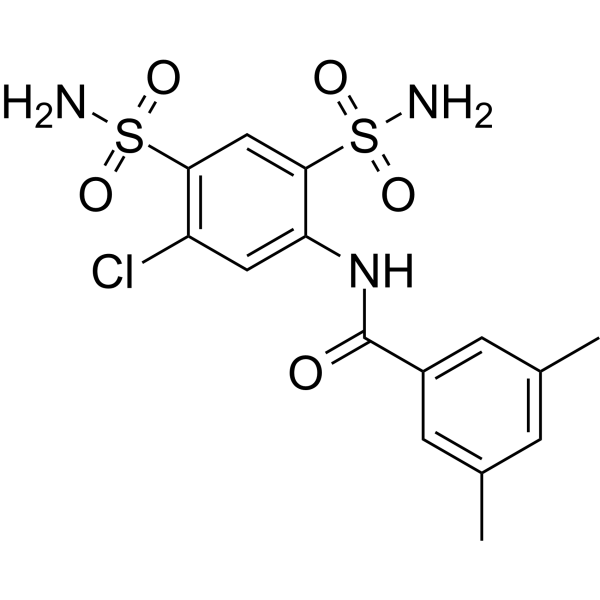
- HY-149212
-
|
|
Cholinesterase (ChE)
|
Neurological Disease
|
|
SD-6 is an orally active inhibitor of hAChE and hBChE with IC50 values of 0.907 µM and 1.579 µM, respectively. SD-6 has excellent blood-brain barrier (BBB) permeability and no neurotoxicity, which can be used for research on Alzheimer's disease .
|
-
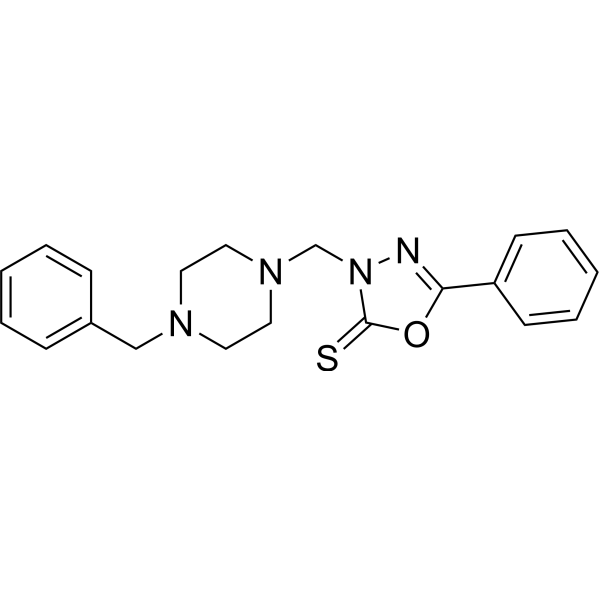
- HY-153715
-
|
Mitochondria modulator-1
|
Biochemical Assay Reagents
|
Metabolic Disease
|
|
Mitochondria modulator-1 is a mitochondrial regulator that stimulates mitochondrial ATP production. Mitochondria modulator-1 has good oral bioavailability, blood-brain barrier permeability, and good plasma stability. Mitochondria modulator-1 has the potential to study mitochondrial diseases .
|
-
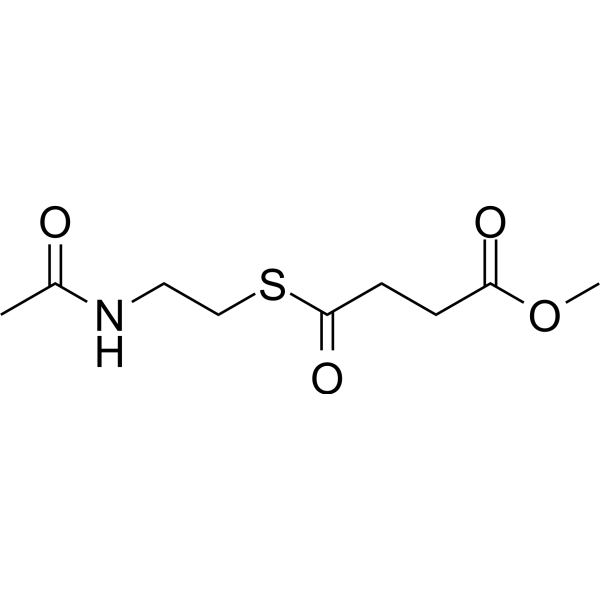
- HY-163202
-
|
|
MAGL
Calcium Channel
|
Neurological Disease
Cancer
|
|
MAGL-IN-13 (compound (3R, 4S) - 5v) is a selective, irreversible inhibitor for MAGL,with IC50 values of 0.026, 0.021 and 0.24 nM for mMAGL, hMAGL and rMAGL, respectively. MAGL-IN-13 can penetrant blood brain barrier. .
|
-
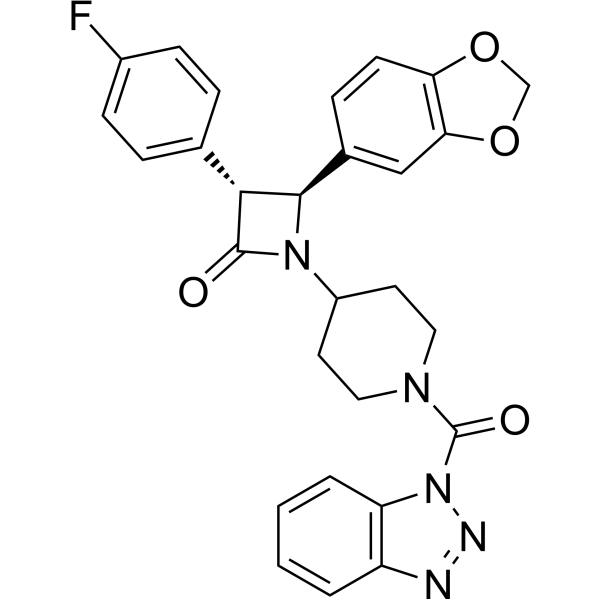
- HY-106004
-
|
BIA 5-1058
|
Dopamine β-hydroxylase
P-glycoprotein
BCRP
|
Cardiovascular Disease
Cancer
|
|
Zamicastat (BIA 5-1058) is a dopamine β-hydroxylase (DBH) inhibitor and can cross the blood-brain barrier (BBB) to cause central as well as peripheral effects. Zamicastat is also a concentration-dependent dual P-gp and BCRP inhibitor with IC50 values of 73.8 μM and 17.0 μM, respectively . Zamicastat reduces high blood pressure .
|
-
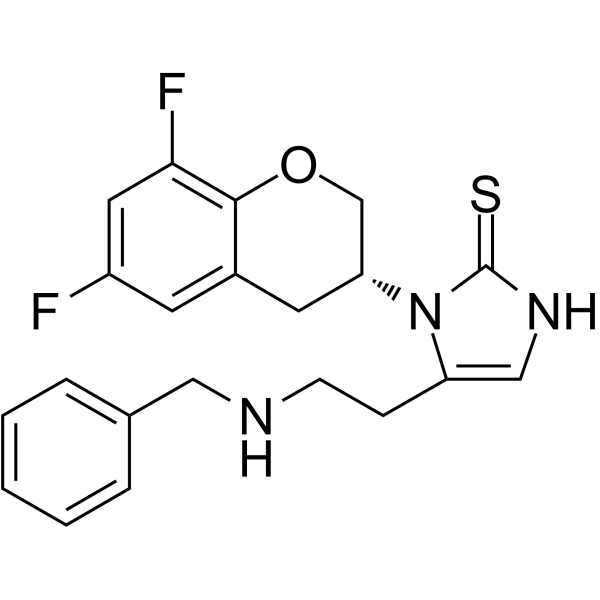
- HY-B0002A
-
|
GR 38032 hydrochloride dihydrate; SN 307 hydrochloride dihydrate
|
5-HT Receptor
|
Neurological Disease
|
|
Ondansetron (GR 38032) hydrochloride dehydrate is an orally active, highly selective and competitive 5-HT3 receptor antagonist (crosses the blood-brain barrier). Ondansetron hydrochloride dehydrate can be used in studies of preventing nausea and vomiting associated with cancer chemotherapy, radiation therapy and surgery .
|
-
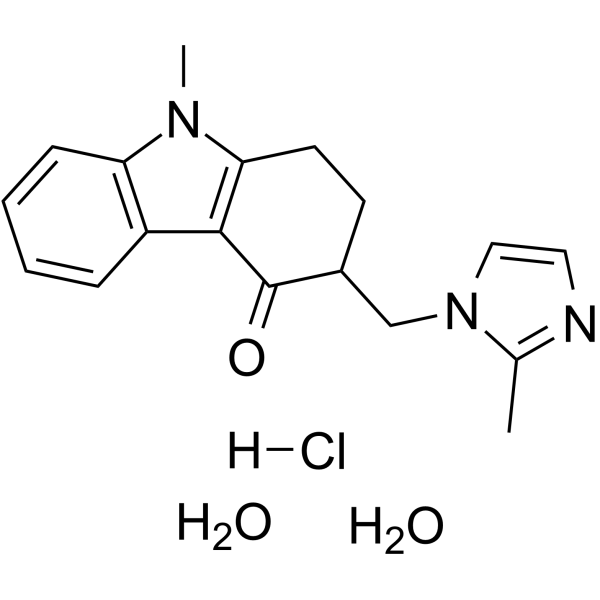
- HY-15981
-
|
MK-3102
|
Dipeptidyl Peptidase
|
Neurological Disease
Metabolic Disease
|
|
Omarigliptin (MK-3102) is a potent, selective, orally active and cross the blood-brain barrier dipeptidyl peptidase 4 (DPP-4) inhibitor. Omarigliptin shows anti-parkinsonian activity. Omarigliptin has the neuroprotective effect to improve diabetes-associated cognitive dysfunction .
|
-
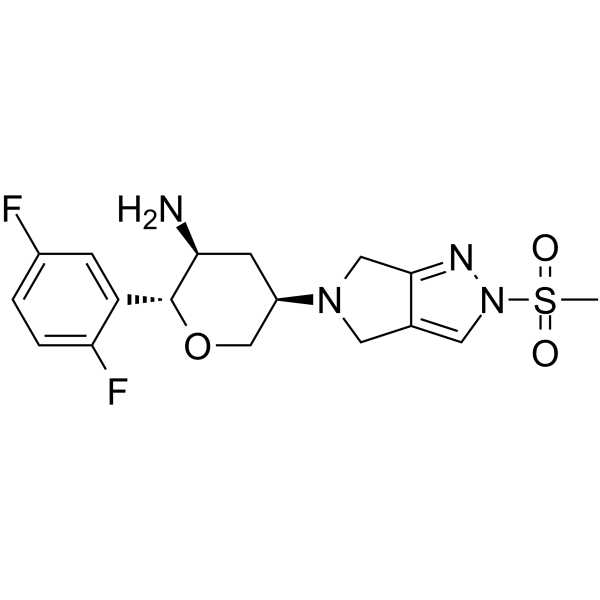
- HY-100672
-
-
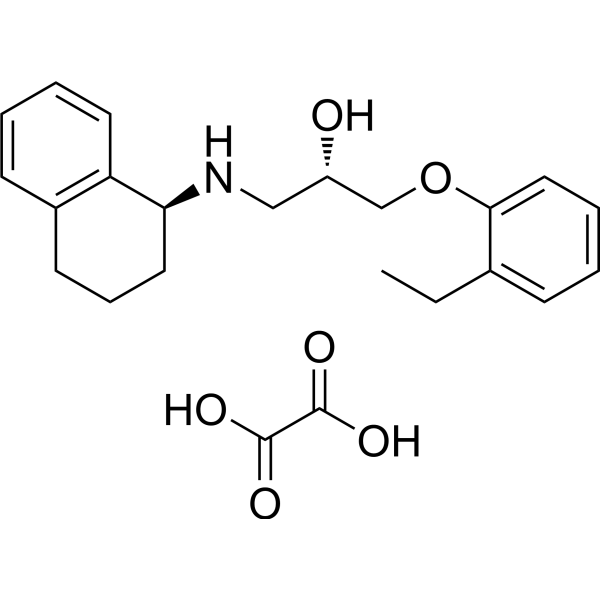
- HY-103200
-
-
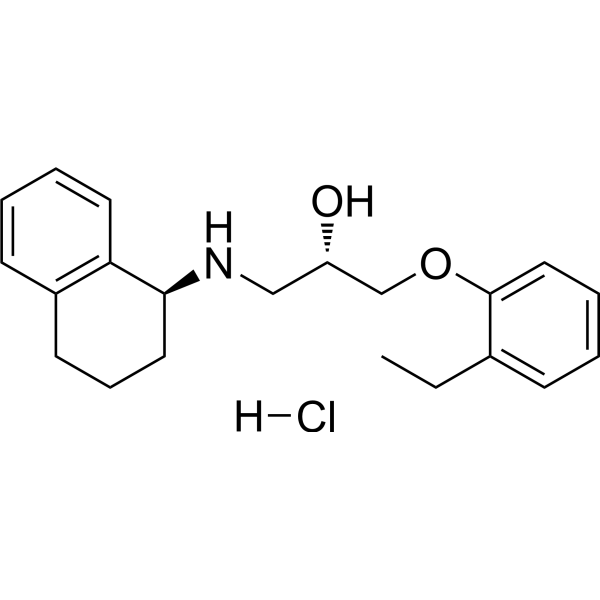
- HY-17547
-
|
|
HSP
|
Cancer
|
|
NMS-E973 is a potent and selective inhibitor of HSP90. NMS-E973 binds to the ATP binding site of Hsp90α with a DC50 of <10 nM. NMS-E973 is able to cross the blood-brain barrier (BBB). Antitumor efficacy .
|
-

- HY-129411
-
|
ACT-519276; OGT2378
|
Glucosylceramide Synthase (GCS)
|
Metabolic Disease
|
|
Sinbaglustat (OGT2378) is a dual inhibitor of glucosylceramide synthase (GCS) and non-lysosomal glucosyl ceramidase (GBA2). Sinbaglustat is an orally available N-alkyl iminosugar that crosses the blood-brain barrier. Sinbaglustat can be used for the research of central neurodegenerative diseases associated with lysosomal dysfunctions .
|
-
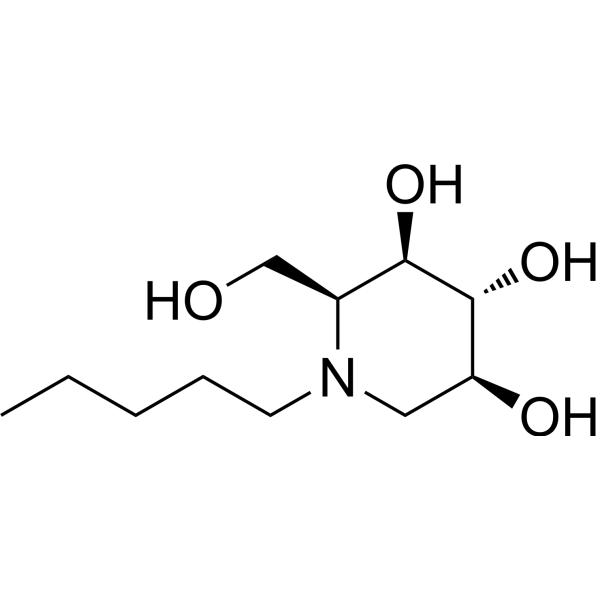
- HY-108448
-
|
OLDA
|
TRP Channel
|
Cardiovascular Disease
|
|
N-Oleoyldopamine (OLDA) is a product of condensation of oleic acid and dopamine (DA) and an endogenous TRPV1 selective agonist. N-Oleoyldopamine (OLDA) can crosses the blood-brain barrier. N-oleoyl-dopamine protects the heart against ischemia-reperfusion injury via activation of TRPV1 .
|
-

- HY-160168
-
-
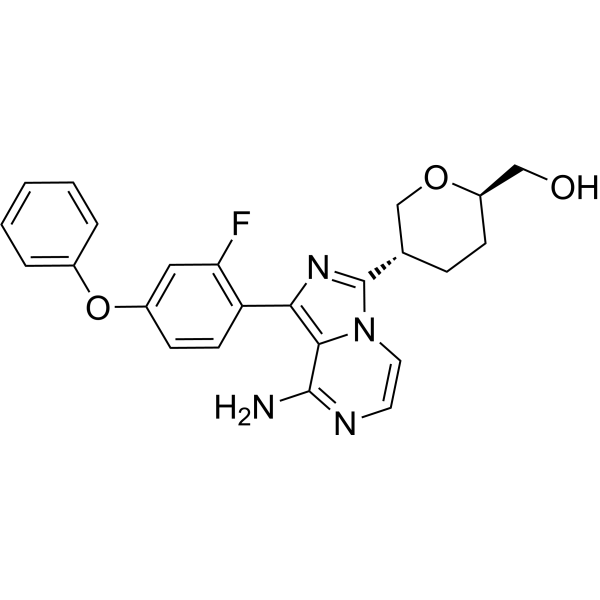
- HY-155939
-
|
|
TGF-β Receptor
|
Cancer
|
|
M4K2163 dihydrochloride is a potent, selective, blood-brain barrier (BBB) permeable activin receptor-like kinase-2 (ALK2) inhibitor, with an IC50 of 19 nM. M4K2163 dihydrochloride can be used in the research of diffuse intrinsic pontine glioma (DIPG) .
|
-

- HY-163276
-
-

- HY-103234A
-
|
|
iGluR
|
Neurological Disease
|
|
GYKI 52466 dihydrochloride is an orally active, highly selective and noncompetitive AMPA/kainate receptor antagonist with the IC50 values of 7.5 and 11μM, respectively. GYKI 52466 dihydrochloride has good blood brain barrier permeability and anticonvulsant effect. GYKI 52466 dihydrochloride can be used in Parkinson's disease research .
|
-
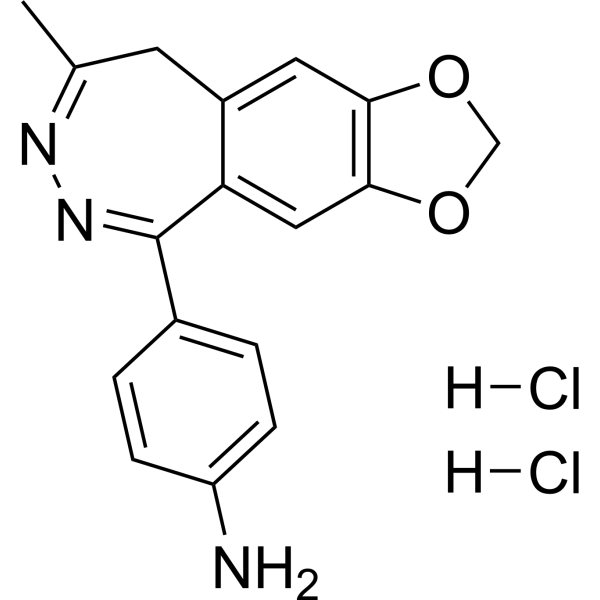
- HY-N0368
-
-
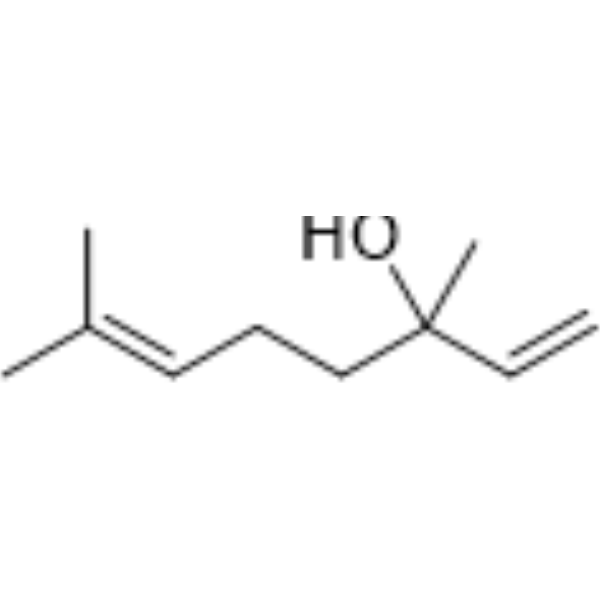
- HY-N7062
-
|
Takeda-25
|
FAAH
|
Neurological Disease
|
|
JNJ-1661010 (Takeda-25) a potent and selective fatty acid amide hydrolase (FAAH) inhibitor with IC50s of 34 and 33 nM for rat FAAH and human FAAH, respectively. JNJ-1661010 can cross the blood-brain barrier and used as broad-spectrum analgesics .
|
-
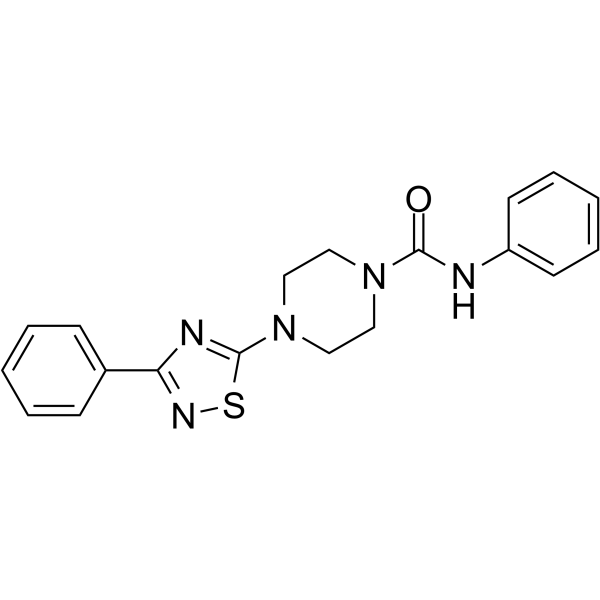
- HY-103234
-
|
|
iGluR
|
Neurological Disease
|
|
GYKI 52466 is an orally active, highly selective and noncompetitive AMPA/kainate receptor antagonist with the IC50 values of 7.5 and 11μM, respectively. GYKI 52466 has good blood brain barrier permeability and anticonvulsant effect. GYKI 52466 can be used in Parkinson's disease research .
|
-

- HY-17423B
-
|
|
HIV
Reverse Transcriptase
Telomerase
Apoptosis
|
Infection
Cancer
|
|
Abacavir monosulfate is a competitive, orally active nucleoside reverse transcriptase inhibitor. Abacavir monosulfate can inhibits the replication of HIV. Abacavir monosulfate shows anticancer activity in prostate cancer cell lines. Abacavir monosulfate can trespass the blood-brain-barrier and suppresses telomerase activity .
|
-
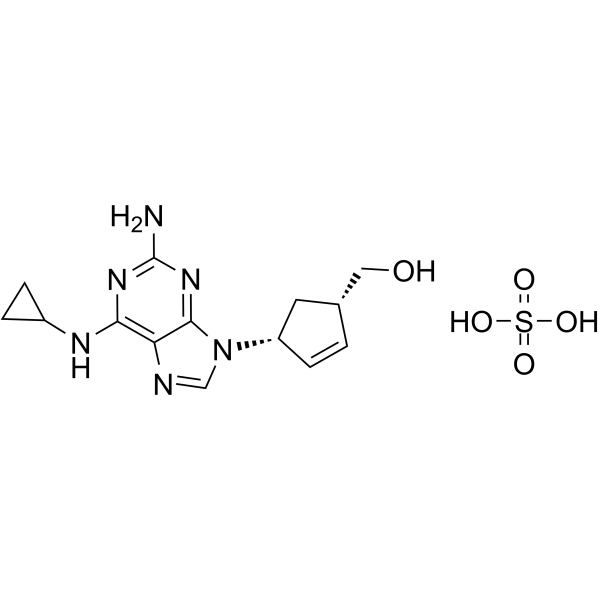
- HY-W083062
-
|
|
Monoamine Oxidase
|
Neurological Disease
|
|
hMAO-B-IN-5(B15) is a potent, selective and reversible inhibitor of human monoamine oxidase hMAO-B with IC50 of 0.12 μM. hMAO-B-IN-5 can pass through the blood-brain barrier and can be used in the research of neurodegenerative diseases .
|
-
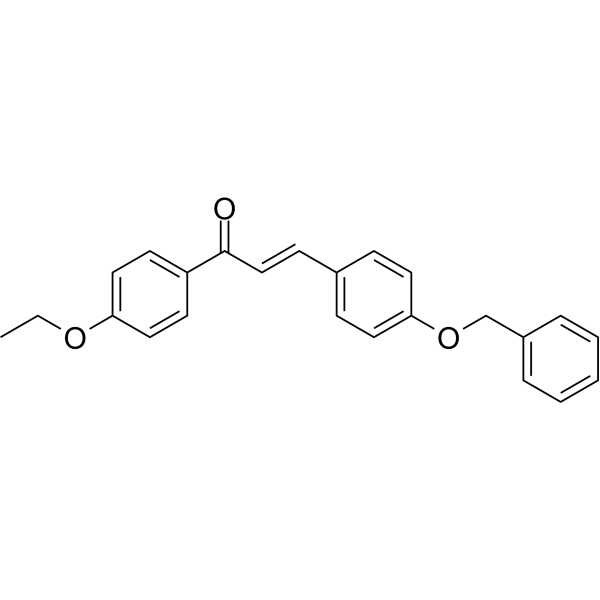
- HY-149242
-
|
|
Monoamine Oxidase
|
Neurological Disease
|
|
MAO-B-IN-20 (Compound C14) is a potent MAO-B inhibitor with an IC50 of 0.037 μM. MAO-B-IN-20 displays good metabolic stability and brain-blood barrier permeability. MAO-B-IN-20 can be used for the research of Parkinson's disease .
|
-
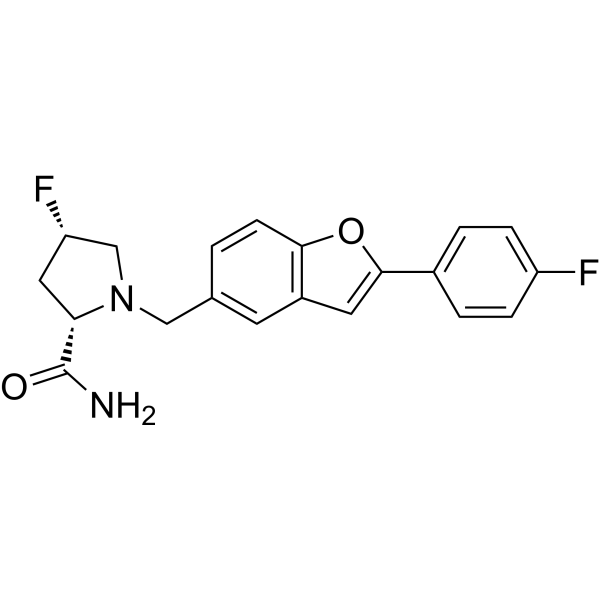
- HY-103234B
-
|
|
iGluR
|
Neurological Disease
|
|
GYKI 52466 hydrochloride is an orally active, highly selective and noncompetitive AMPA/kainate receptor antagonist with the IC50 values of 7.5 and 11μM, respectively. GYKI 52466 hydrochloride has good blood brain barrier permeability and anticonvulsant effect. GYKI 52466 hydrochloride can be used in Parkinson's disease research .
|
-
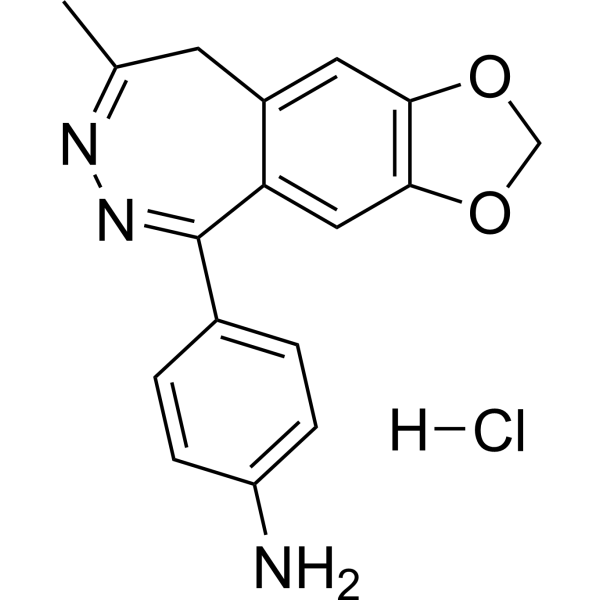
- HY-137501
-
|
|
Others
|
Others
|
|
306-O12B-3 is a lipidoid that can efficiently deliver ASO both in vitro and in vivo. 306-O12B-3 is used to transport small molecule drugs across the blood-brain barrier (BBB) .
|
-
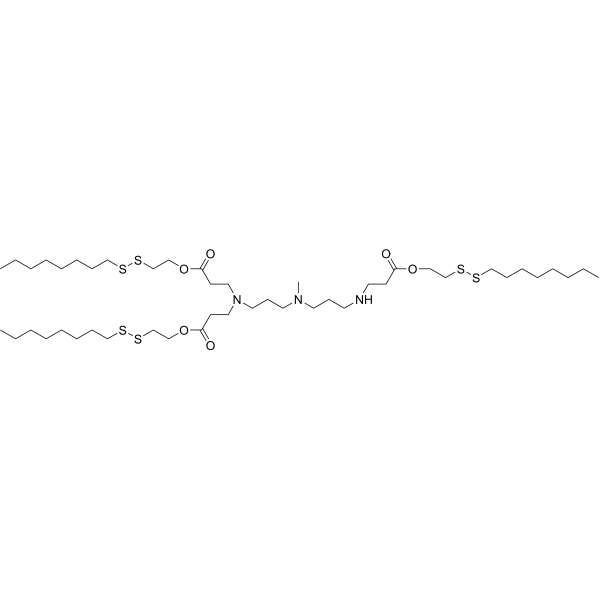
- HY-154959A
-
|
|
Others
|
Cancer
|
|
(9R,12aR)-AZD4747 is a diastereomer of AZD4747 (HY-154959). AZD4747 is a selective mutant GTPase KRAS G12C inhibitor with blood-brain barrier permeability. AZD4747 has the potential to study cancer .
|
-
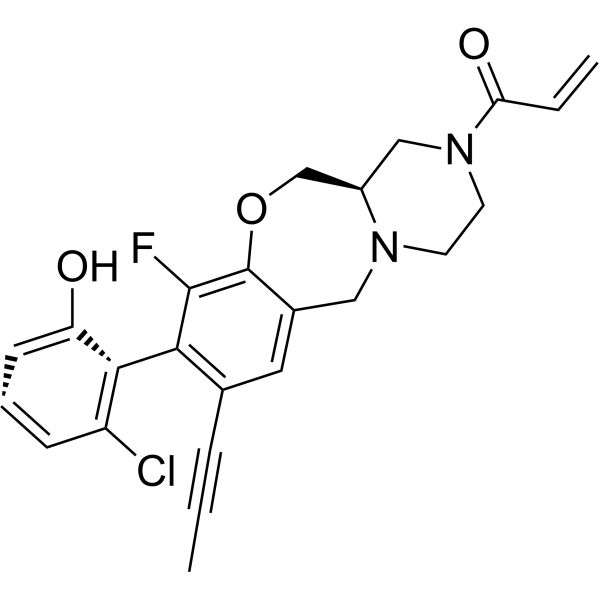
- HY-132246
-
|
|
MAGL
|
Neurological Disease
|
|
WWL123 analogue-1 is an analogue of WWL123. WWL123 is a potent and selective ABHD6 inhibitor with an IC50 of 430 nM . WWL123 crosses the blood-brain-barrier and inhibits ABHD6 in brain parenchyma. ABHD6 blockade by WWL123 exerts an antiepileptic effect in Pentylenetetrazole (PTZ)-induced epileptiform seizures and spontaneous seizures in R6/2 mice .
|
-
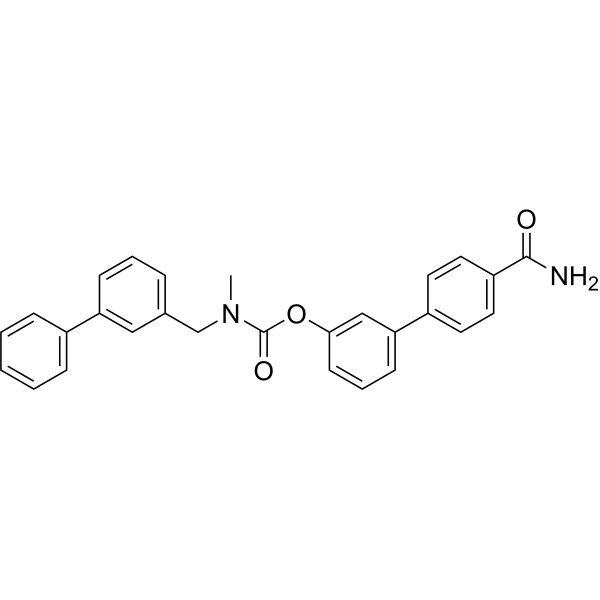
- HY-76772
-
|
SNI-2011; AF102B hydrochloride hemihydrate
|
mAChR
|
Neurological Disease
Cancer
|
|
Cevimeline hydrochloride hemihydrate (SNI-2011) is a quinuclidine derivative of acetylcholine and a selective and orally active muscarinic M1 and M3 receptor agonist. Cevimeline hydrochloride hemihydrate stimulates secretion by the salivary glands and can be used as a sialogogue for xerostomia . Cevimeline hydrochloride hemihydrate can cross the blood-brain barrier (BBB) .
|
-
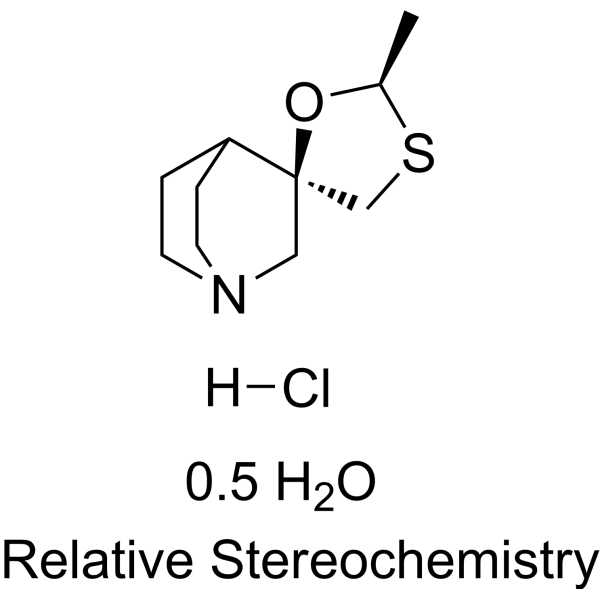
- HY-70020B
-
|
AF102B hydrochloride
|
mAChR
|
Neurological Disease
|
|
Cevimeline hydrochloride (AF102B hydrochloride) is a quinuclidine derivative of acetylcholine and a selective and orally active muscarinic M1 and M3 receptor agonist. Cevimeline hydrochloride stimulates secretion by the salivary glands and can be used as a sialogogue for xerostomia . Cevimeline hydrochloride can cross the blood-brain barrier (BBB) .
|
-
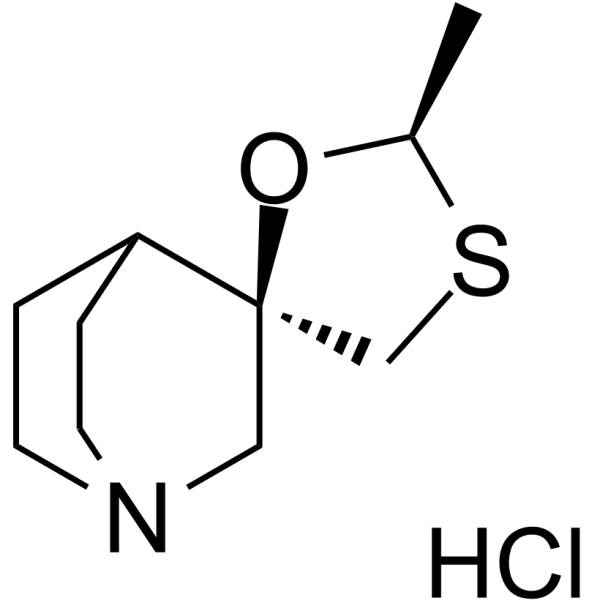
- HY-115475
-
SW-100
3 Publications Verification
|
HDAC
|
Neurological Disease
|
|
SW-100, a selective histone deacetylase 6 (HDAC6) inhibitor with an IC50 of 2.3 nM, shows at least 1000-fold selectivity for HDAC6 relative to all other HDAC isozymes. SW-100 displays a significantly improved ability to cross the blood-brain-barrier .
|
-
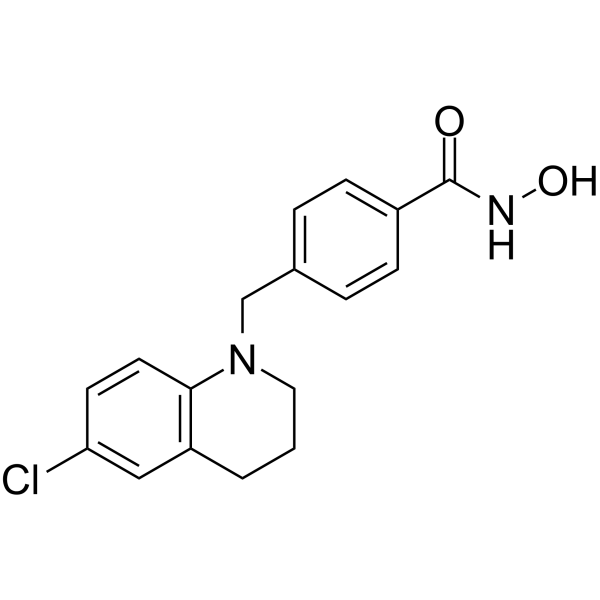
- HY-108625
-
SHA 68
1 Publications Verification
|
Neuropeptide Y Receptor
|
Neurological Disease
|
|
SHA 68 is a potent and selective non-peptide neuropeptide S receptor (NPSR) antagonist with IC50s of 22.0 and 23.8 nM for NPSR Asn 107 and NPSR Ile 107, respectively. SHA 68 has limited the blood-brain barrier (BBB) penetration and the activity in neuralgia .
|
-
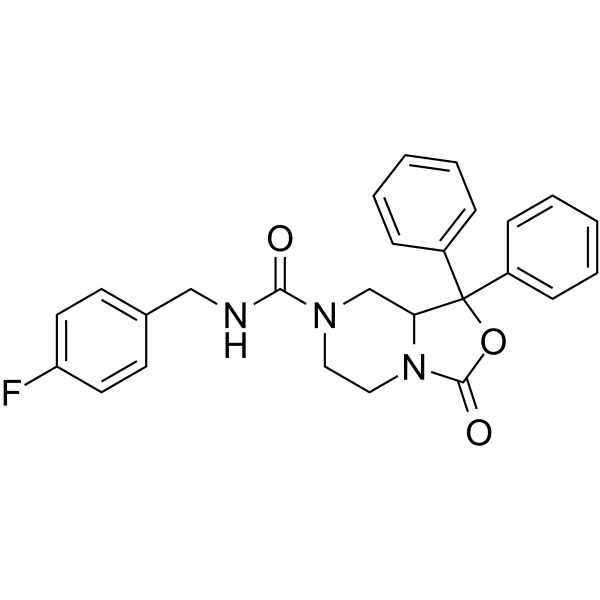
- HY-B1266
-
|
Eserine salicylate
|
Cholinesterase (ChE)
|
Neurological Disease
|
|
Physostigmine salicylate (Eserine salicylate) is a reversible acetylcholinesterase (AChE) inhibitor. Physostigmine salicylate crosses the blood-brain barrier and stimulates central cholinergic neurotransmission. Physostigmine salicylate can reverse memory deficits in transgenic mice with Alzheimer's disease. Physostigmine salicylate is also an antidote for anticholinergic poisoning .
|
-
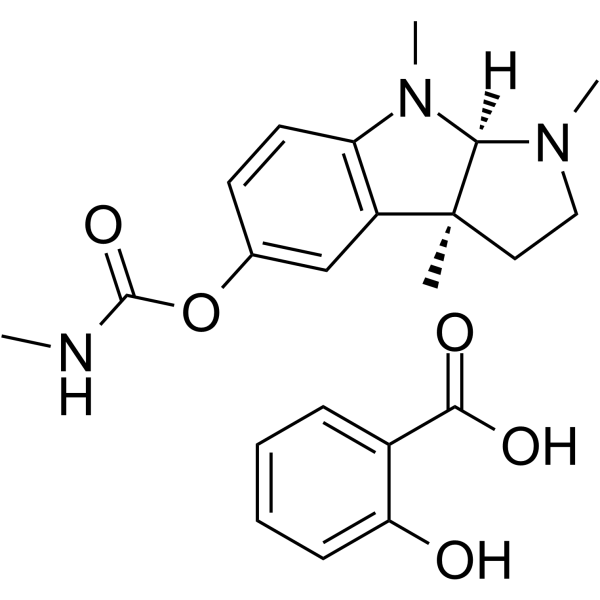
- HY-103415
-
|
YM-09151-2; Emilace; Emonapride
|
Dopamine Receptor
5-HT Receptor
|
Neurological Disease
|
|
Nemonapride is a highly potent dopamine D2 receptor antagonist with a Ki of 0.06 nM. Nemonapride also activates 5-HT1A receptor with an IC50 of 34 nM. Nemonapride is an antipsychotic that readily passes through the blood brain barrier and exhibits potent neuroleptic effects in animals .
|
-
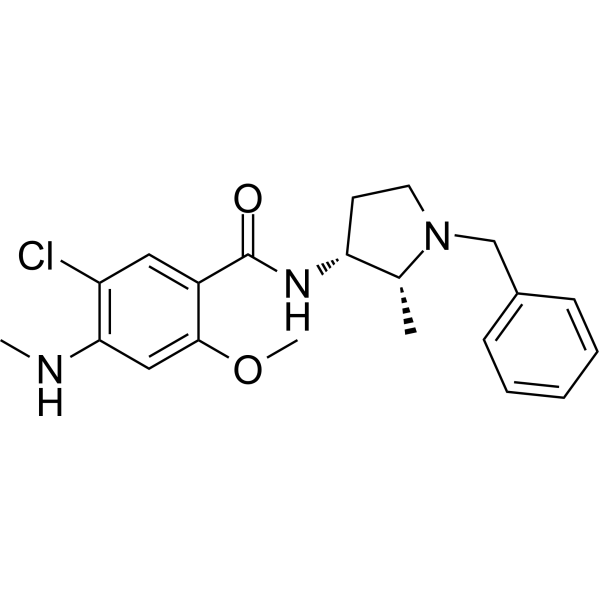
- HY-143264
-
|
|
FAAH
MAGL
|
Neurological Disease
|
|
FAAH/MAGL-IN-2 is a potent, reversible, orally active, and cross the blood-brain barrier FAAH and MAGL inhibitor with IC50s of 11 nM and 36 nM (Kis of 28 nM and 60 nM), respectively . FAAH/MAGL-IN-2 has the potential to research neuropathic pain without causing locomotion impairment .
|
-
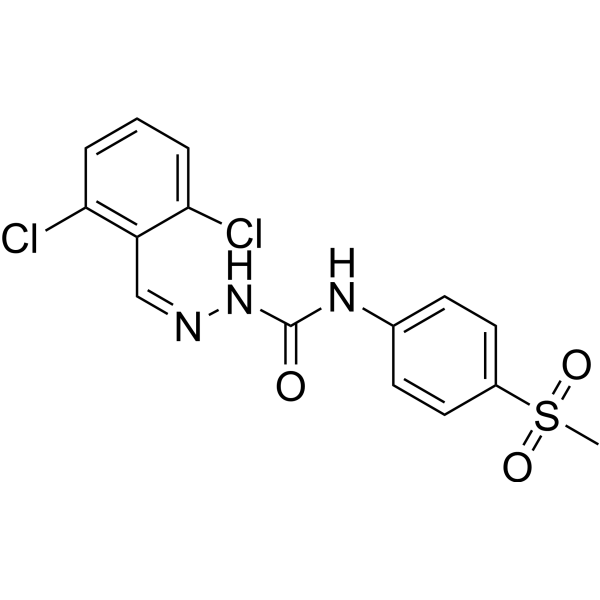
- HY-144610
-
|
|
Opioid Receptor
|
Neurological Disease
|
|
Mu opioid receptor antagonist 5 (compound NAP) is a selective and blood-brain barrier (BBB) penetrant μ opioid receptor (MOR) antagonist with an EC50 value of 1.14 nM and a Ki value of 0.37 nM. Mu opioid receptor antagonist 5 can be used for researching opioid use disorders (OUD) .
|
-

- HY-A0230
-
|
SCH 33844
|
|
|
|
Spirapril is a potent and cross the blood-brain barrier angiotensin converting enzyme (ACE) inhibitor with antihypertensive activity. Spirapril competitively binds to ACE and prevents the conversion of angiotensin I to angiotensin II. Spirapril is an orally active proagent of Spiraprilat and can be used for the research of hypertension, congestive heart failure .
|
-
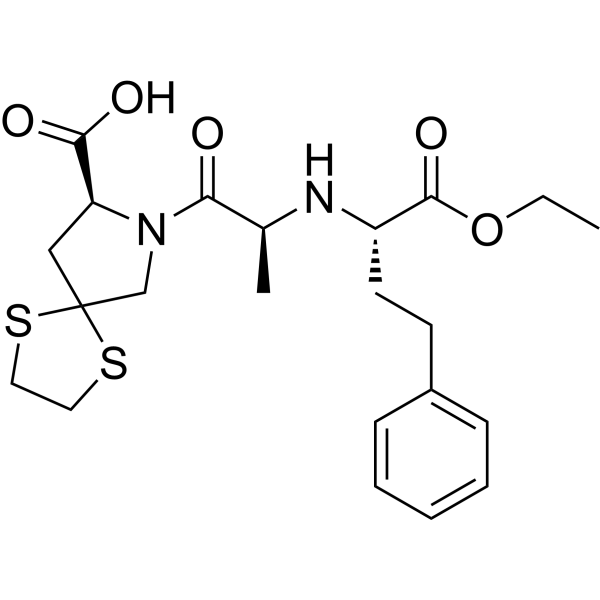
- HY-17423A
-
|
Abacavir Hemisulfate; ABC sulfate
|
Reverse Transcriptase
HIV
Telomerase
Apoptosis
|
Infection
|
|
Abacavir sulfate (Abacavir Hemisulfate) is a competitive, orally active nucleoside reverse transcriptase inhibitor. Abacavir sulfate can inhibits the replication of HIV. Abacavir sulfate shows anticancer activity in prostate cancer cell lines. Abacavir sulfate can trespass the blood-brain-barrier and suppresses telomerase activity .
|
-
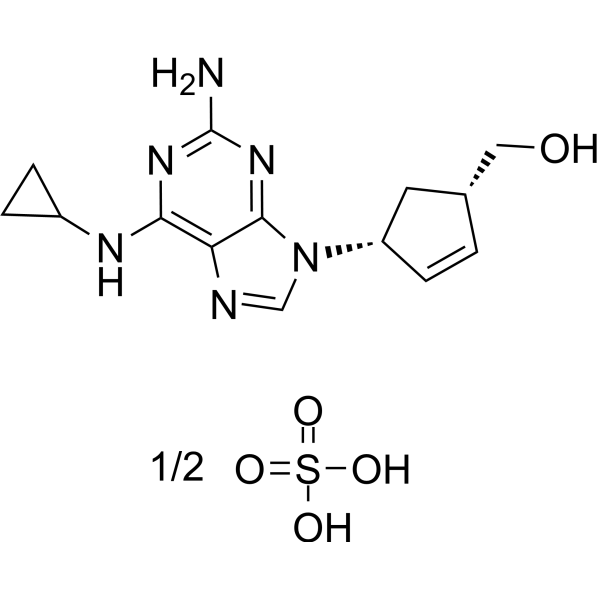
- HY-101402
-
|
Cyclo(histidyl-proline); Histidylproline diketopiperazine
|
NF-κB
Endogenous Metabolite
|
Neurological Disease
Inflammation/Immunology
|
|
Cyclo(his-pro) (Cyclo(histidyl-proline)) is an orally active cyclic dipeptide structurally related to tyreotropin-releasing hormone . Cyclo(his-pro) could inhibit NF-κB nuclear accumulation. Cyclo(his-pro) can cross the brain-blood-barrier and affect diverse inflammatory and stress responses .
|
-
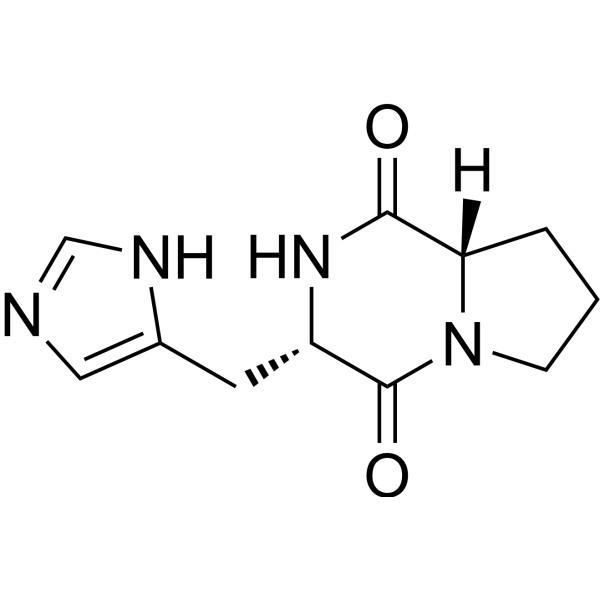
- HY-15010
-
|
|
Oxytocin Receptor
Vasopressin Receptor
|
Endocrinology
|
|
L-371,257 is an orally bioavailable, non-blood-brain barrier penetrant, selective and competitive antagonist of oxytocin receptor (pA2=8.4) with high affinity at both the oxytocin receptor (Ki=19 nM) and vasopressin V1a receptor (Ki=3.7 nM) .
|
-
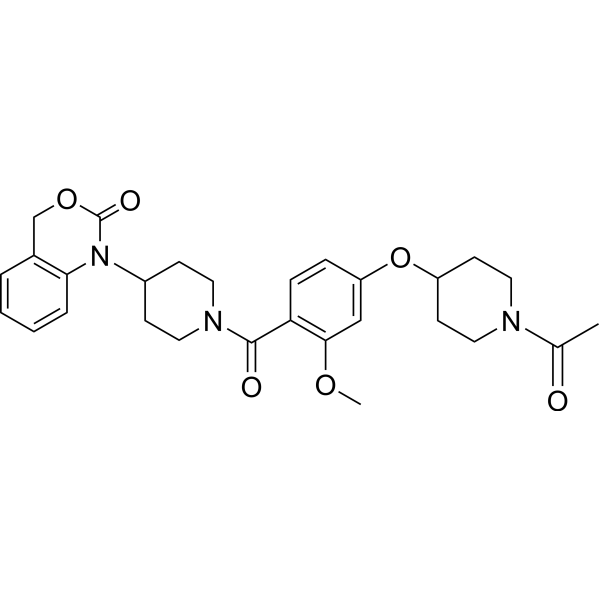
- HY-N0496
-
|
|
NOD-like Receptor (NLR)
|
Cardiovascular Disease
|
|
Ruscogenin, an important steroid sapogenin derived from Ophiopogon japonicus, attenuates cerebral ischemia-induced blood-brain barrier dysfunction by suppressing TXNIP/NLRP3 inflammasome activation and the MAPK pathway. Ruscogenin exerts significant anti-inflammatory and anti-thrombotic activities. Ruscogenin has orally bioactivity .
|
-
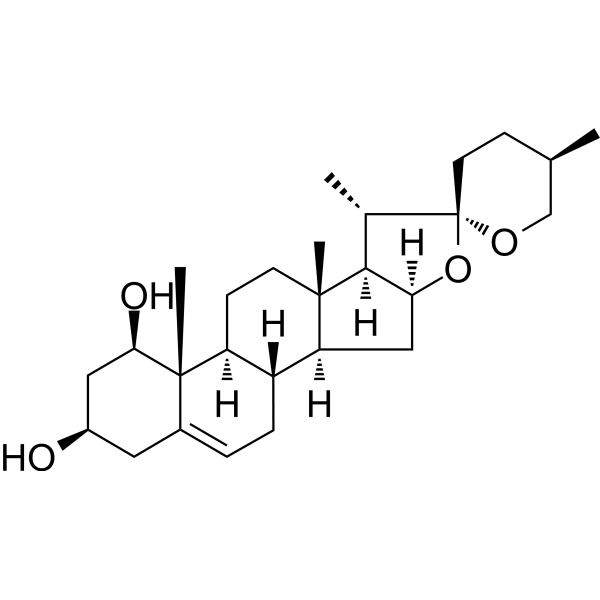
- HY-128865
-
|
|
Opioid Receptor
|
Neurological Disease
|
|
BPR1M97 is a dual-acting mu opioid receptor (MOP) and nociceptin-orphanin FQ peptide (NOP) receptor agonist with Ki values of 1.8 and 4.2 nM, respectively. BPR1M97 shows high potency and blood-brain barrier penetration, and produces potent antinociceptive effects .
|
-
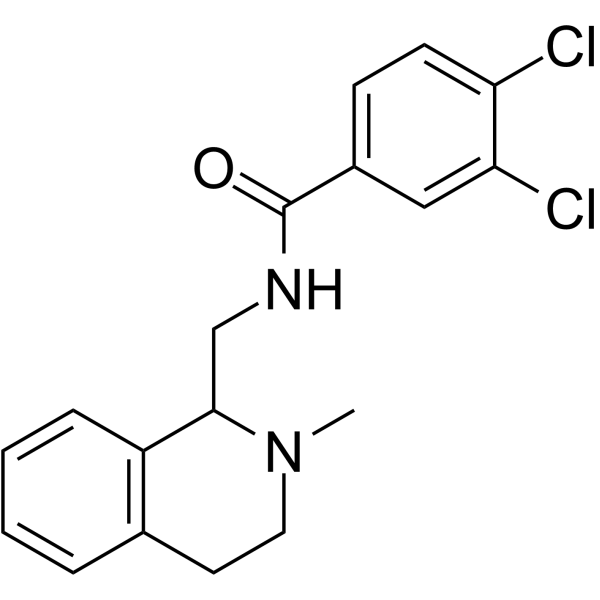
- HY-N2320
-
|
Eserine hemisulfate
|
|
|
|
Physostigmine hemisulfate (Eserine hemisulfate) is a reversible acetylcholinesterase (AChE) inhibitor. Physostigmine hemisulfate can crosses the blood-brain barrier and stimulates central cholinergic neurotransmission. Physostigmine hemisulfate can reverse memory deficits in transgenic mice with Alzheimer's disease. Physostigmine hemisulfate is also an antidote for anticholinergic poisoning .
|
-
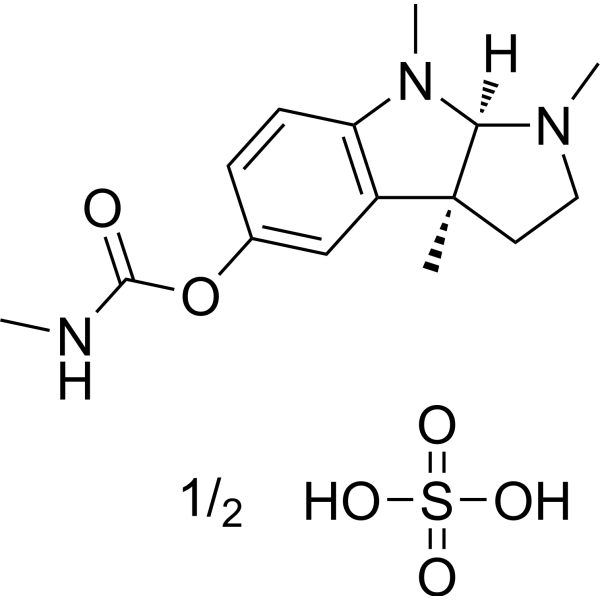
- HY-120717
-
|
|
mGluR
|
Others
|
|
VU6001966 (compound 15m) is a potent and cross the blood-brain barrier mGlu2 (metabotropic glutamate receptor 2) negative allosteric modulator with IC50s of 78 nM and >30 µM for mGlu2 and mGlu3, respectively. VU6001966 can serve as an mGlu2 PET tracer .
|
-

- HY-147953
-
|
|
Monoamine Oxidase
|
Neurological Disease
|
|
MAO-B-IN-13 (compound 12a) is a highly potent, reversible and blood-brain barrier (BBB) penetrant MAO-B inhibitor with an IC50 value of 10 nM. MAO-B-IN-13 has neuroprotective and antioxidant activity. MAO-B-IN-13 can be used for researching Parkinson’s disease .
|
-

- HY-151808
-
|
|
Btk
|
Cancer
|
|
JS25 is a selective and covalent inhibitor of BTK that inactivates BTK with an IC50 value of 5.8 nM by chelating Tyr551. JS25 inhibits cancer cells proliferation, pronounces cell death, and promotes murine xenograft model of Burkitt’s lymphoma. JS25 effectively crosses the blood-brain barrier .
|
-

- HY-P10019
-
|
NLY01
|
GCGR
|
Neurological Disease
|
|
Pegsebrenatide (NLY01) is a long-acting GLP-1R agonist. Pegsebrenatide has an extended half-life and favorable blood-brain barrier penetration. Pegsebrenatide can block A1 astrocyte transformation, reducing dopaminergic cell death, and improving motor symptoms in mouse models of PD .
|
-

- HY-13779A
-
|
|
Monoamine Oxidase
Dopamine Transporter
|
Neurological Disease
|
|
J147 is an exceptionally potent, orally active, neuroprotective agent for cognitive enhancement. J147 can pass the blood brain barrier (BBB). J147 can inhibit monoamine oxidase B (MAO B) and the dopamine transporter. J147 plays an impotant role in Alzheimer’s disease (AD) .
|
-
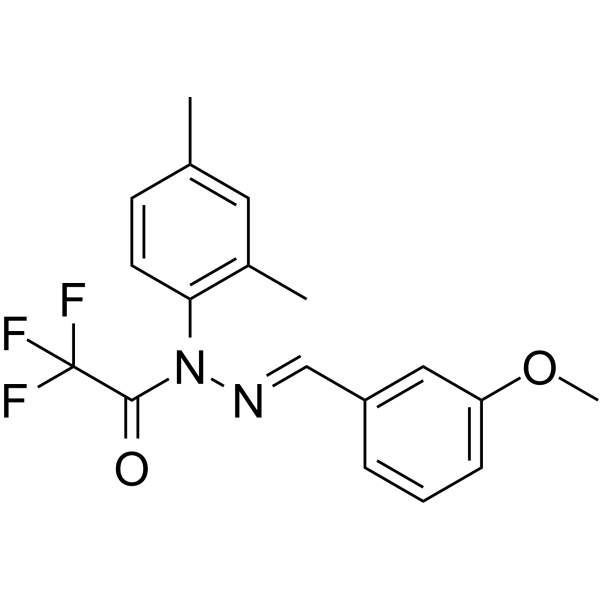
- HY-157956
-
|
|
mAChR
|
Neurological Disease
|
|
LASSBio-873 is an orally active muscarinic cholinergic receptor (mAChR) agonist that crosses the blood-brain barrier. LASSBio-873 has potent analgesic effects on acute and inflammatory pain. The analgesic effect of LASSBio-873 can be inhibited by intrathecal injection of the M2 receptor antagonist methoctramine .
|
-

- HY-70020
-
|
AF102B
|
mAChR
|
Neurological Disease
|
|
Cevimeline (AF-102B) is a quinuclidine derivative of acetylcholine and a selective and orally active muscarinic M1 and M3 receptor agonist. Cevimeline stimulates secretion by the salivary glands and can be used as a sialogogue for xerostomia . Cevimeline can cross the blood-brain barrier (BBB) .
|
-

- HY-13289A
-
|
SYN-117 hydrochloride; RS-25560-197 hydrochloride
|
Dopamine β-hydroxylase
|
Cardiovascular Disease
|
|
Nepicastat hydrochloride (SYN-117 hydrochloride) is a selective, potent, and orally active inhibitor of dopamine-beta-hydroxylase. Nepicastat hydrochloride produces concentration-dependent inhibition of bovine (IC50=8.5 nM) and human (IC50=9 nM) dopamine-beta-hydroxylase. Nepicastat hydrochloride can cross the blood-brain barrier (BBB) .
|
-
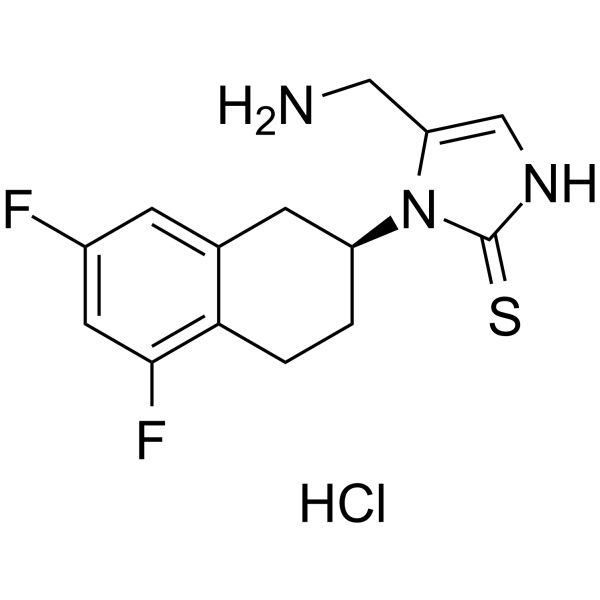
- HY-19838
-
|
|
GPR139
|
Neurological Disease
|
|
JNJ-63533054 is a potent, selective and orally active GPR139 agonist with an EC50 of 16 nM for human GPR139 (hGPR139). JNJ-63533054 shows selective for GPR139 over other GPCRs, ion channels, and transporters. JNJ-63533054 can cross the blood-brain barrier (BBB) .
|
-

- HY-15748
-
|
ADX-71149
|
mGluR
|
Neurological Disease
|
|
JNJ-40411813 (ADX-71149) is a novel positive allosteric modulator of the metabotropic Glutamate 2 receptor (mGlu2R) with EC50 of 147 nM. JNJ-40411813 has orally bioactivity and penetrate the blood-brain barriers. JNJ-40411813 has the potential property of anti-depression .
|
-
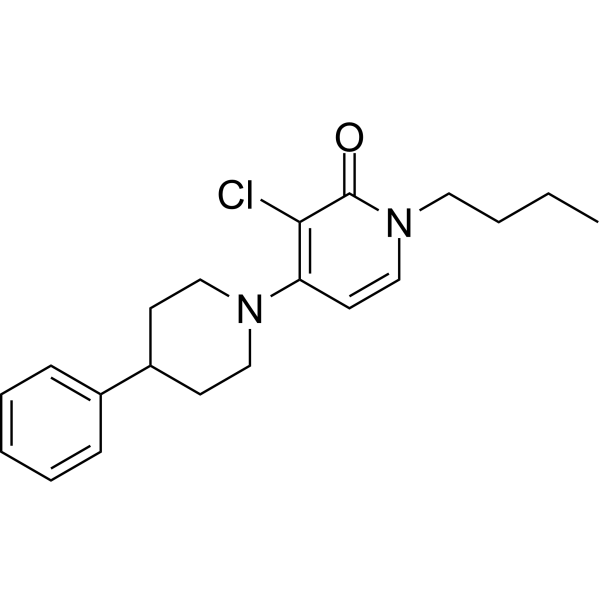
- HY-B1334A
-
|
|
Mitochondrial Metabolism
Apoptosis
|
Cardiovascular Disease
Cancer
|
|
Perhexiline maleate is an orally active CPT1 and CPT2 inhibitor that reduces fatty acid metabolism. Perhexiline maleate induces mitochondrial dysfunction and apoptosis in hepatic cells. Perhexiline maleate can cross the blood brain barrier (BBB) and shows anti-tumor activity. Perhexiline maleate can be used in the research of cancers, and cardiovascular disease like angina .
|
-

- HY-114320
-
|
TM-10
|
Cholinesterase (ChE)
|
Neurological Disease
|
|
BuChE-IN-TM-10 (TM-10) is a potent butyrylcholinesterase (BuChE) inhibitor, with an IC50 of 8.9 nM. BuChE inhibitor 1 inhibits and disaggregates self-induced Aβ aggregation, exhibiting potent antioxidant activity and good blood-brain barrier (BBB) penetration. Has potential to treat Alzheimer’s disease .
|
-
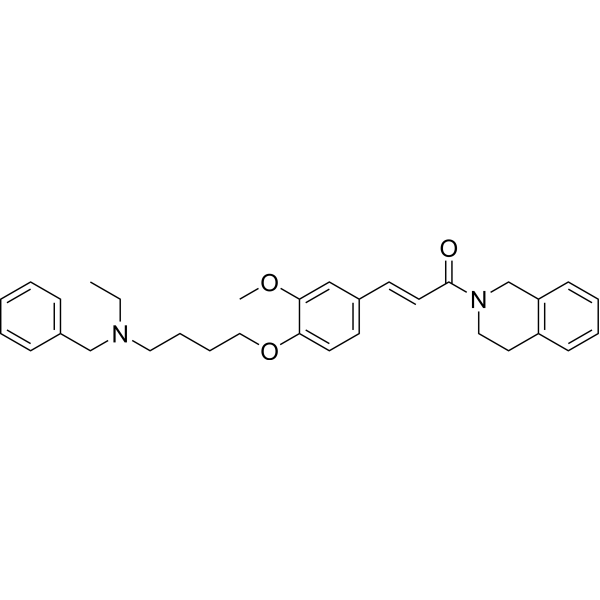
- HY-100642S
-
|
Ro 40-7591 d7
|
COMT
|
Neurological Disease
|
|
3-O-Methyltolcapone-d7 is a deuterium labeled 3-O-Methyltolcapone. 3-O-Methyltolcapone is a metabolite of Tolcapone. Tolcapone is an orally active, reversible, selective and potent COMT inhibitor. Tolcapone crosses the blood-brain barrier, and can be used for treatment of Parkinson's disease[1][2].
|
-

- HY-134189
-
|
|
Opioid Receptor
Sigma Receptor
|
Neurological Disease
|
|
EST73502 is a selective, orally active and blood-brain barrier (BBB) penetrant dual μ-opioid receptor (MOR) agonist and σ1 receptor (σ1R) antagonist, with Kis of 64 nM and 118 nM for MOR and σ1R, respectively. EST73502 has antinociceptive activity .
|
-
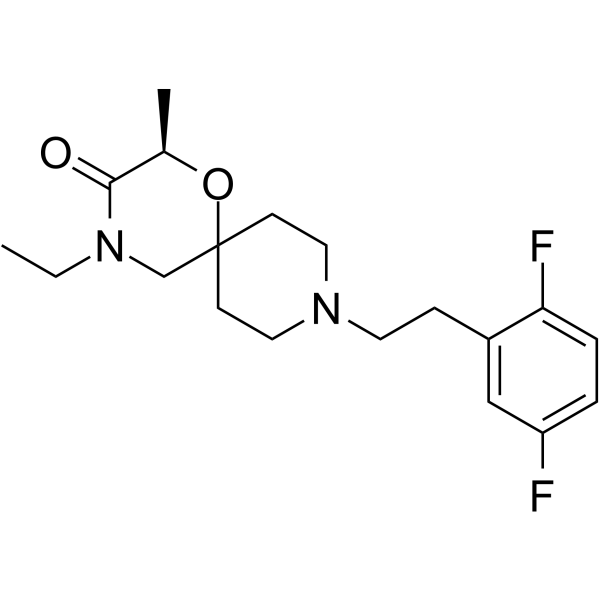
- HY-134494
-
|
|
GPR68
|
Neurological Disease
|
|
MS48107 is a potent and selective positive allosteric modulator of G protein-coupled receptor 68 (GPR68). MS48107 is selective for GPR68 over the closely related proton GPCRs, neurotransmitter transporters, and hERG ion channels. MS48107 can readily cross the blood-brain barrier (BBB) in mice .
|
-

- HY-P1136B
-
-
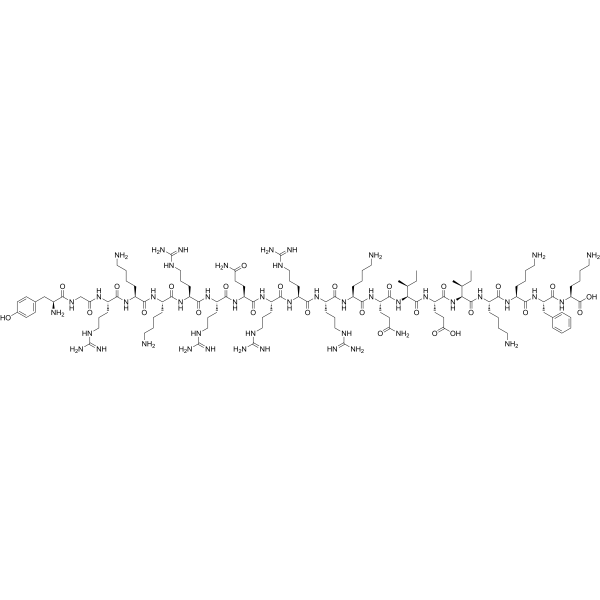
- HY-P1178
-
|
|
Trk Receptor
|
Neurological Disease
|
|
Cyclotraxin B, a cyclic peptide, is a highly potent and selective TrkB inhibitor without altering the binding of BDNF. Cyclotraxin B non-competitively inhibits BDNF-induced TrkB activity with an IC50 of 0.30 nM. Cyclotraxin B can crosse the blood-brain-barrier and has analgesic and anxiolytic-like behavioral effects .
|
-
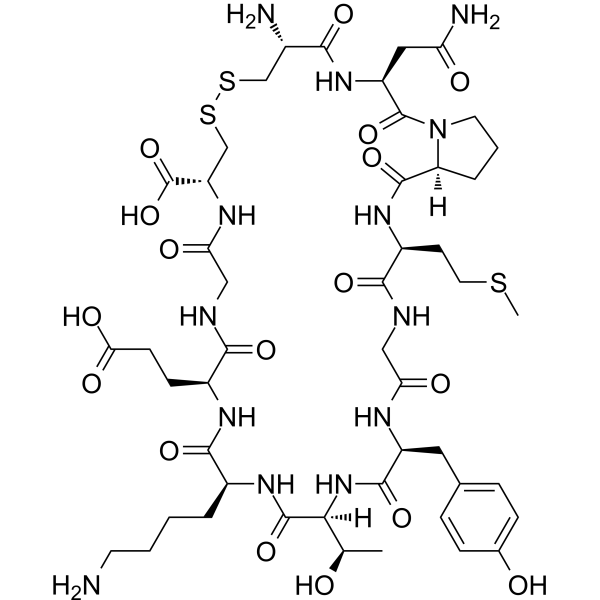
- HY-10835
-
DG-041
2 Publications Verification
|
Prostaglandin Receptor
|
Cardiovascular Disease
|
|
DG-041 is a potent, high affinity and selective EP3 receptor antagonist with IC50s of 4.6 nM and 8.1 nM in the binding and FLIPR assay, respectively. DG-041 inhibits PGE2 facilitation of platelet aggregation. DG-041 crosses the blood-brain barrier .
|
-
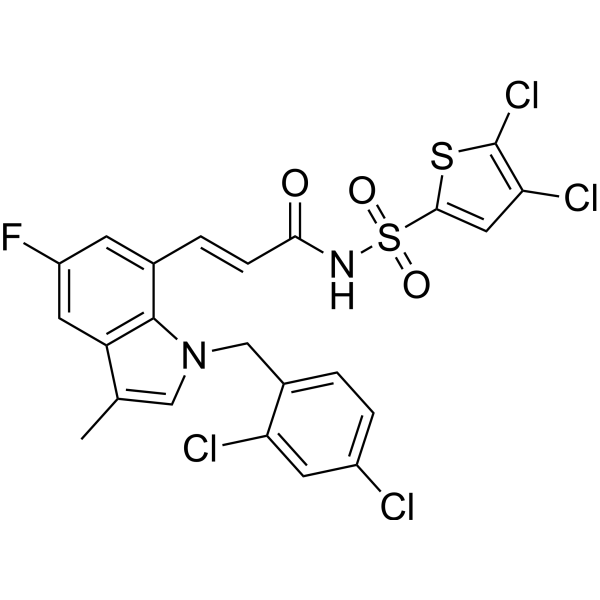
- HY-144309
-
|
|
Cytochrome P450
|
Neurological Disease
|
|
Cholesterol 24-hydroxylase-IN-1 (compound 17) is a potent, orally active, and highly selective cholesterol 24-hydroxylase (CH24H or CYP46A1) inhibitor (IC50=8.5 nM). Cholesterol 24-hydroxylase-IN-1 can cross blood-brain barrier .
|
-
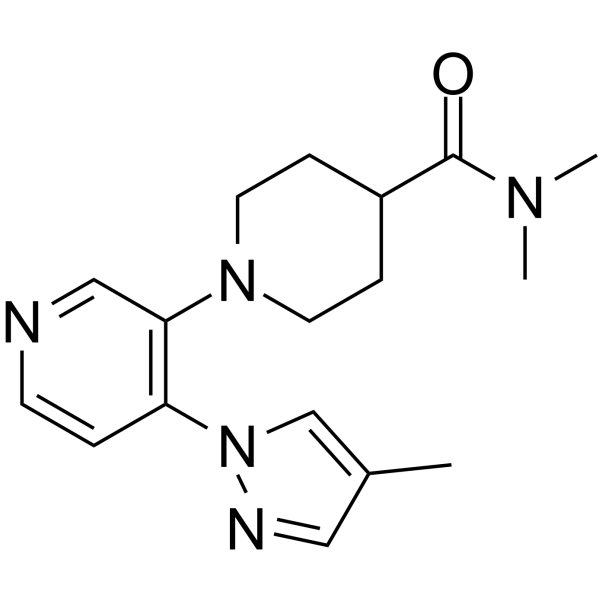
- HY-146762
-
-
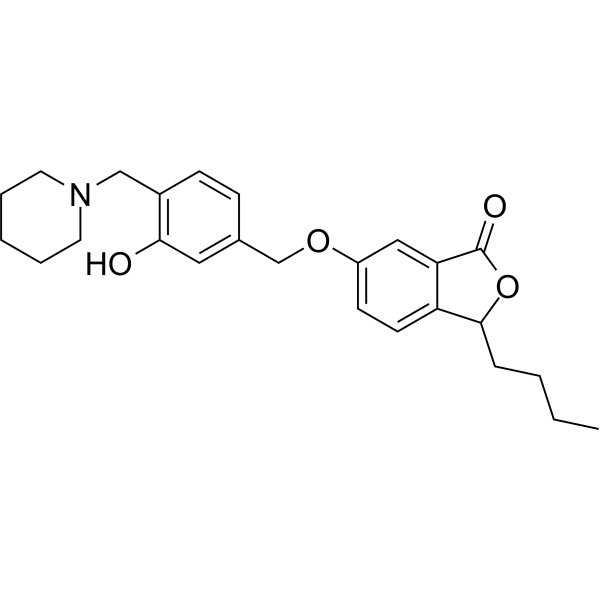
- HY-B1334
-
|
|
Mitochondrial Metabolism
Apoptosis
|
Cardiovascular Disease
Cancer
|
|
Perhexiline is an orally active CPT1 and CPT2 inhibitor that reduces fatty acid metabolism. Perhexiline induces mitochondrial dysfunction and apoptosis in hepatic cells. Perhexiline can cross the blood brain barrier (BBB) and shows anti-tumor activity. Perhexiline can be used in the research of cancers, and cardiovascular disease like angina .
|
-

- HY-156432
-
|
|
Anaplastic lymphoma kinase (ALK)
mTOR
PARP
Caspase
|
Cancer
|
|
ALK-IN-26 is an ALK inhibitor with IC50 value of 7.0 μM for ALK tyrosine kinase. ALK-IN-26 has good pharmacokinetic properties and blood-brain barrier (BBB) permeability. ALK-IN-26 can induce apoptosis, autophagy and necrosis. ALK-IN-26 can be used in glioblastoma studies .
|
-
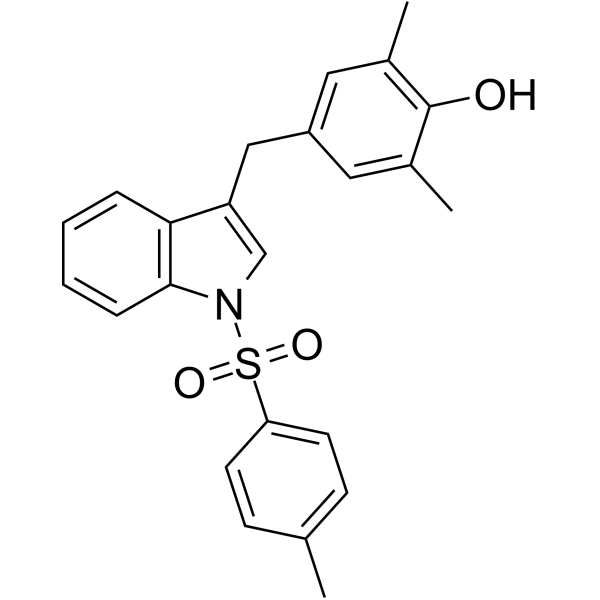
- HY-17412S1
-
|
|
Isotope-Labeled Compounds
|
Infection
Neurological Disease
Inflammation/Immunology
Cancer
|
|
Minocycline-d6 sulfate is deuterated labeled Minocycline (HY-17412A). Minocycline is an orally effective semi-synthetic tetracycline antibiotic and HIF-1α inhibitor that can penetrate the blood-brain barrier. Minocycline has bacteriostatic, anti-cancer, anti-inflammatory, neuroprotective properties and antidepressant effects.
|
-
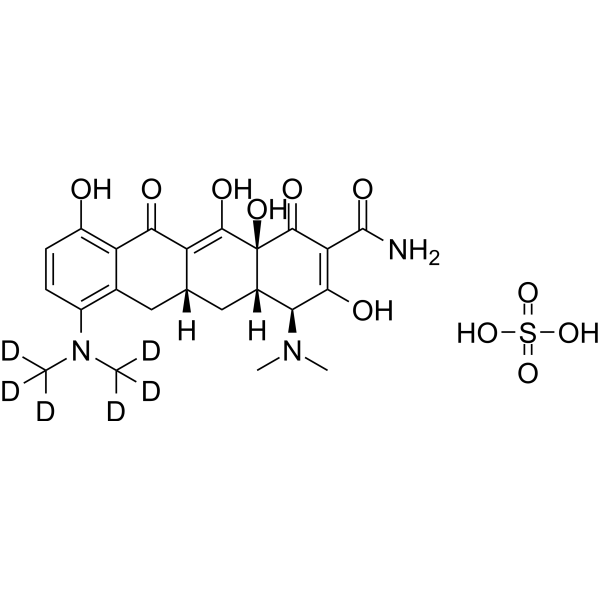
- HY-103240
-
|
|
Amyloid-β
|
Others
|
|
Methoxy-X04 is a fluorescent dye that crosses the blood-brain barrier and selectively binds to beta-pleated sheets found in dense core amyloid Aβ plaques. Methoxy-X04 retains in vitro binding affinity for amyloid b (Ab) fibrils (Ki= 26.8 nM). Methoxy-X04 is fluorescent and stains plaques, tangles, and cerebrovascular amyloid in postmortem sections of AD brain with good specificity .
|
-
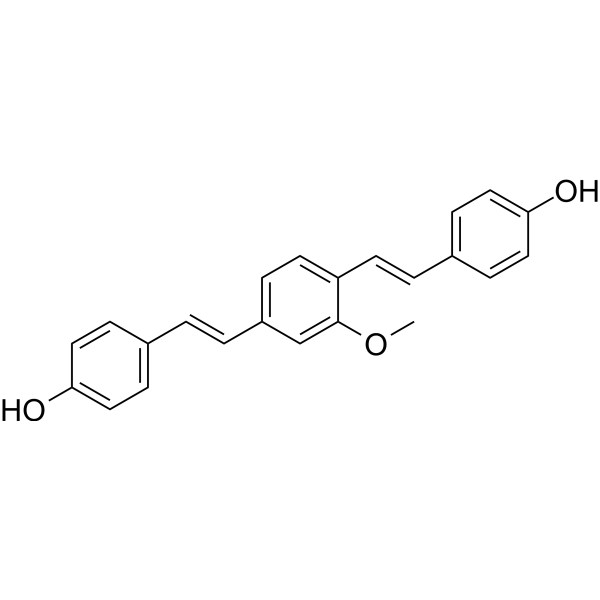
- HY-A0067
-
|
Benzophenone 3
|
RAR/RXR
Autophagy
Apoptosis
|
Neurological Disease
|
|
Oxybenzone (Benzophenone 3) is a commonly used UV filter in sun tans and skin protectants. Oxybenzone act as endocrine disrupting chemicals (EDCs) and can pass through the placental and blood-brain barriers. Benzophenone-3 impairs autophagy, alters epigenetic status, and disrupts retinoid X receptor signaling in apoptotic neuronal cells .
|
-

- HY-12305
-
|
QVD-OPH; Quinoline-Val-Asp-Difluorophenoxymethylketone
|
Caspase
HIV
|
Infection
Cancer
|
|
Q-VD-OPh is an irreversible pan-caspase inhibitor with potent antiapoptotic properties; inhibits caspase 7 with an IC50 of 48 nM and 25-400 nM for other caspases including caspase 1, 3, 8, 9, 10, and 12. Q-VD-OPh can inhibits HIV infection. Q-VD-OPh is able to cross the blood-brain barrier.
|
-
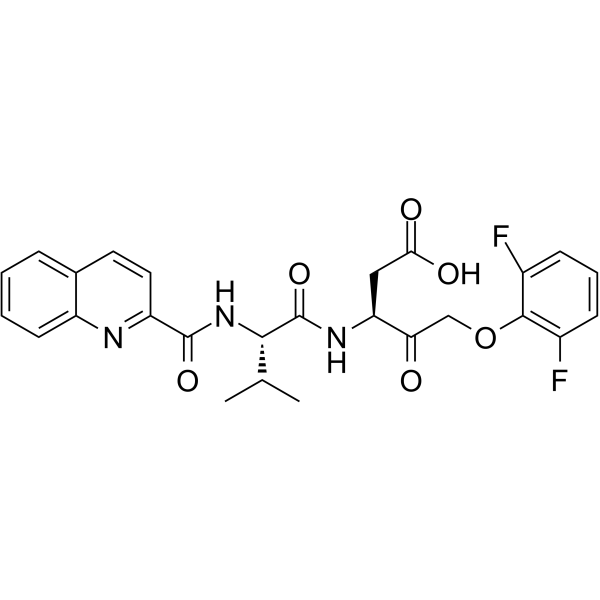
- HY-N6608S
-
|
Eserine-d3
|
Isotope-Labeled Compounds
Cholinesterase (ChE)
|
Neurological Disease
|
|
Physostigmine-d3 is the deuterium labeled Physostigmine. Physostigmine (Eserine) is a reversible acetylcholinesterase (AChE) inhibitor. Physostigmine can crosses the blood-brain barrier and stimulates central cholinergic neurotransmission. Physostigmine can reverse memory deficits in transgenic mice with Alzheimer's disease. Physostigmine is also an antidote for anticholinergic poisoning[1][2][3][4].
|
-

- HY-122347A
-
|
GW823296 maleate
|
Neurokinin Receptor
|
Neurological Disease
|
|
Orvepitant maleate (GW823296 maleate) is potent, selective, orally active and well-tolerated neurokinin-1 receptor (NK-1) antagonist with a pKi of 10.2 for human neurokinin-1 receptor. Orvepitant maleate can across the blood-brain barrier. Orvepitant maleate has the potential for depressive disorder and chronic refractory cough (CRC) treatment .
|
-
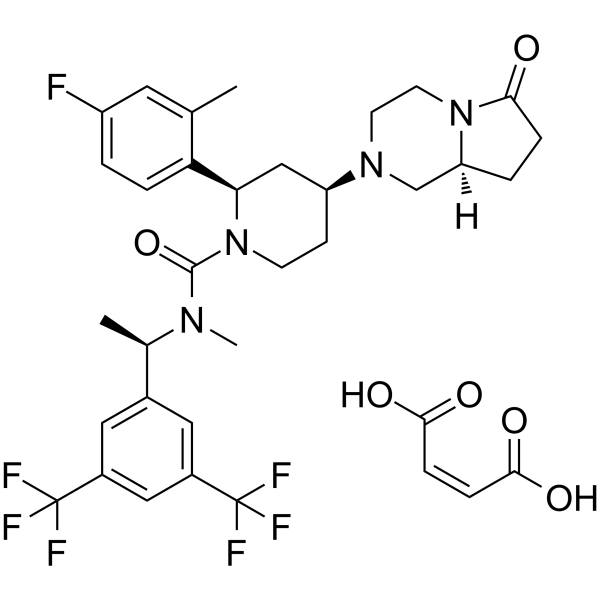
- HY-16531
-
YF-2
2 Publications Verification
|
Histone Acetyltransferase
|
Neurological Disease
Cancer
|
|
YF-2 is a highly selective, blood-brain-barrier permeable histone acetyltransferase activator, acetylates H3 in the hippocampus, with EC50s of 2.75 μM, 29.04 μM and 49.31 μM for CBP, PCAF, and GCN5, respectively, shows no effect on HDAC. Anti-cancer and anti-Alzheimer's disease .
|
-
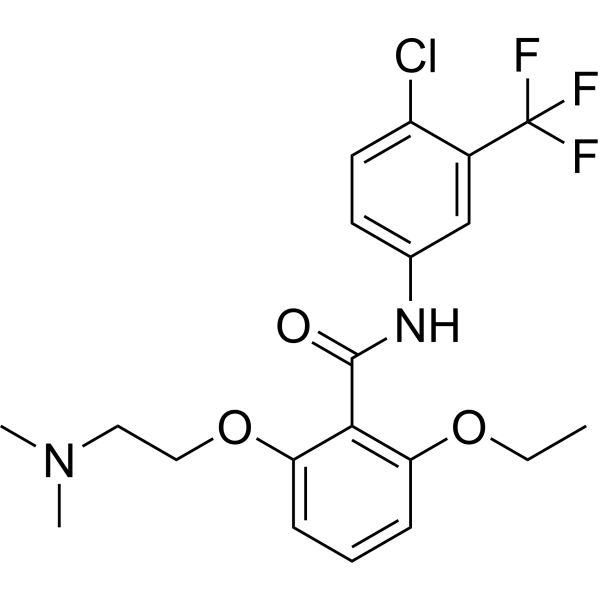
- HY-16531A
-
|
|
Histone Acetyltransferase
|
Neurological Disease
Cancer
|
|
YF-2 hydrochloride is a highly selective, blood-brain-barrier permeable histone acetyltransferase activator, acetylates H3 in the hippocampus, with EC50s of 2.75 μM, 29.04 μM and 49.31 μM for CBP, PCAF, and GCN5, respectively, shows no effect on HDAC. Anti-cancer and anti-Alzheimer's disease .
|
-
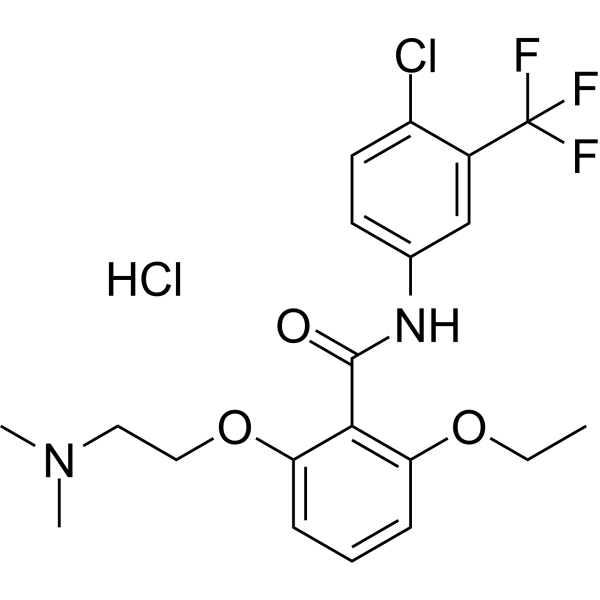
- HY-W016420
-
|
MK-0955 sodium
|
Bacterial
Antibiotic
|
Infection
Cancer
|
|
Fosfomycin (MK-0955) sodium is a blood-brain barrier penetrating, broad-spectrum antibiotic by irreversibly inhibiting an early stage in cell wall synthesis. Fosfomycin sodium shows both in vivo and in vitro activity against a wide range of bacteria, including multidrug-resistant (MDR), extensively drug-resistant (XDR), and pan-drug-resistant (PDR) bacteria .
|
-

- HY-100740C
-
|
(1α,1'S,4β)-AZD3293; (1α,1'S,4β)-LY3314814
|
Beta-secretase
|
Neurological Disease
|
|
(1α,1'S,4β)-Lanabecestat ((1α,1'S,4β)-AZD3293) a less active enantiomer of Lanabecestat. Lanabecestat is a potent, orally active and blood-brain barrier penetrating BACE1 inhibitor with a Ki of 0.4 nM .
|
-
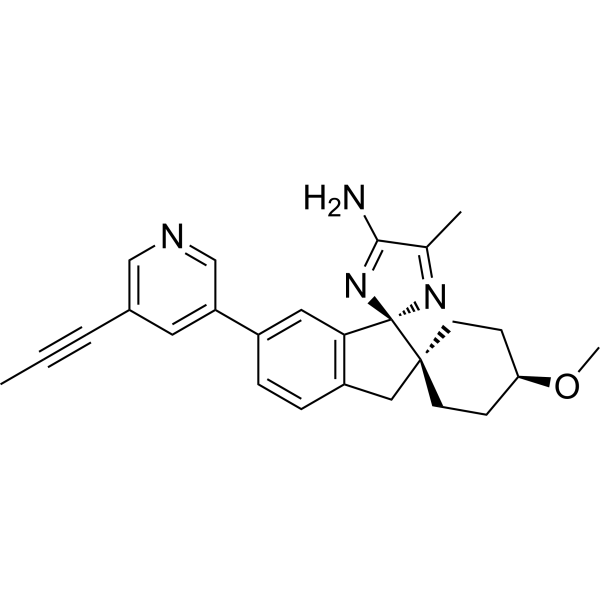
- HY-101402A
-
|
Cyclo(histidyl-proline) TFA; Histidylproline diketopiperazine TFA
|
NF-κB
Endogenous Metabolite
|
Neurological Disease
Inflammation/Immunology
|
|
Cyclo(his-pro) TFA (Cyclo(histidyl-proline) TFA) is an orally active cyclic dipeptide structurally related to tyreotropin-releasing hormone . Cyclo(his-pro) TFA could inhibit NF-κB nuclear accumulation. Cyclo(his-pro) TFA can cross the brain-blood-barrier and affect diverse inflammatory and stress responses .
|
-
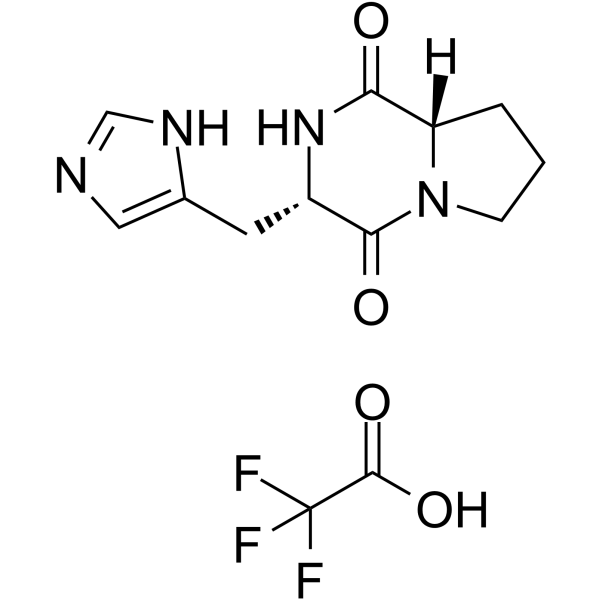
- HY-100501
-
|
MSC2363318A
|
|
|
|
M2698 (MSC2363318A) is an orally active, ATP competitive, selective p70S6K and Akt dual-inhibitor with IC50s of 1 nM for p70S6K, Akt1 and Akt3. M2698 can cross the blood-brain barrier and has anti-cancer activity .
|
-
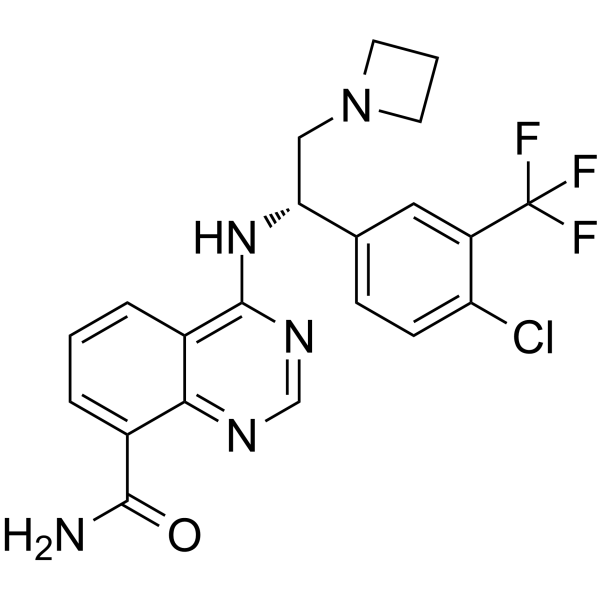
- HY-N3187
-
-
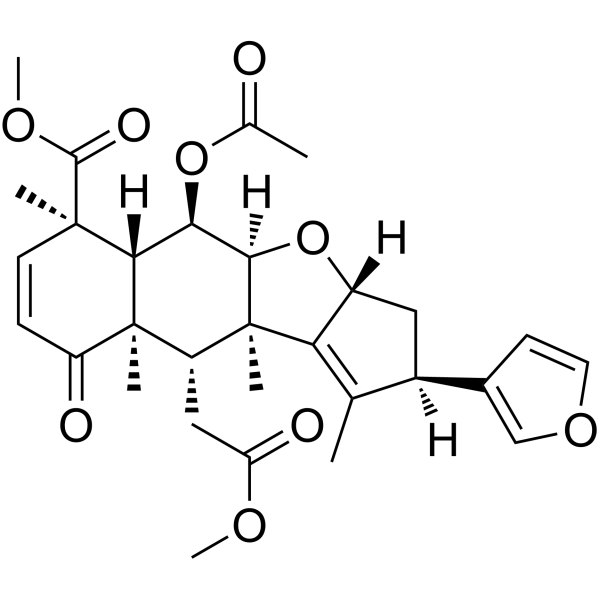
- HY-P1136C
-
-

- HY-134189A
-
|
|
Sigma Receptor
Opioid Receptor
|
Neurological Disease
|
|
EST73502 monohydrochloride is a selective, orally active and blood-brain barrier (BBB) penetrant dual μ-opioid receptor (MOR) agonist and σ1 receptor (σ1R) antagonist, with Kis of 64 nM and 118 nM for MOR and σ1R, respectively. EST73502 monohydrochloride has antinociceptive activity .
|
-

- HY-131350
-
|
|
Proteasome
Parasite
|
Infection
|
|
LXE408 is an orally active, non-competitive and kinetoplastid-selective proteasome inhibitor. LXE408 has an IC50 of 0.04 μM for L. donovani proteasome and an EC50 of 0.04 μM for L. donovani. LXE408 has a low propensity to cross the blood brain barrier. LXE408 has the potential for visceral leishmaniasis (VL) research .
|
-

- HY-112226
-
|
|
Caspase
Drug Metabolite
|
Inflammation/Immunology
|
|
VRT-043198, the agent metabolite of VX-765 (Belnacasan), is a potent, selective and blood-brain barrier permeable inhibitor of interleukin-converting enzyme/caspase-1 subfamily caspases. VRT-043198 exhibits Ki values of 0.8 nM and 0.6 nM for ICE/caspase-1 and caspase-4, respectively .
|
-

- HY-100642S1
-
|
Ro 40-7591-d4
|
Isotope-Labeled Compounds
COMT
|
Neurological Disease
|
|
3-O-Methyltolcapone-d4 is the deuterium labeled 3-O-Methyltolcapone. 3-O-Methyltolcapone (Ro 40-7591) is a metabolite of Tolcapone. Tolcapone is an orally active, reversible, selective and potent COMT inhibitor. Tolcapone crosses the blood-brain barrier, and can be used for treatment of Parkinson's disease[1][2].
|
-

- HY-144604
-
|
|
Others
|
Infection
Neurological Disease
|
|
FPR2 agonist 2 is a potent and permeates the blood−brain barrier FPR2 agonist with an EC50 of 0.13 µM, 1.1 µM for FPR2 and FPR1, respectively. FPR2 agonist 2 inhibits the production of pro-inflammatory cytokines, counterbalances the changes in mitochondrial function, and inhibits caspase-3 activity .
|
-
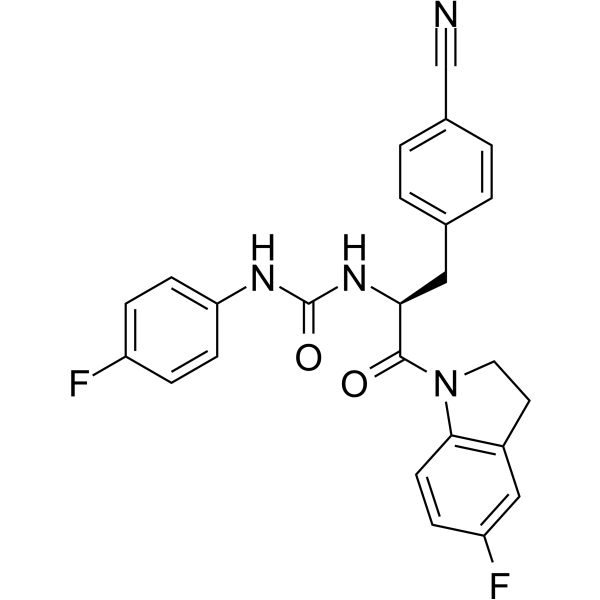
- HY-103461
-
|
|
FAAH
|
Neurological Disease
|
|
FAAH-IN-6 (compound 21d) is a potent, orally active and cross the blood-brain barrier fatty acid amide hydrolase (FAAH) inhibitor with IC50s of 0.72, 0.28 nM for hFAAH, rFAAH, respectively. FAAH-IN-6 shows dose-dependent analgesic efficacy in animal models of both neuropathic and inflammatory pain .
|
-
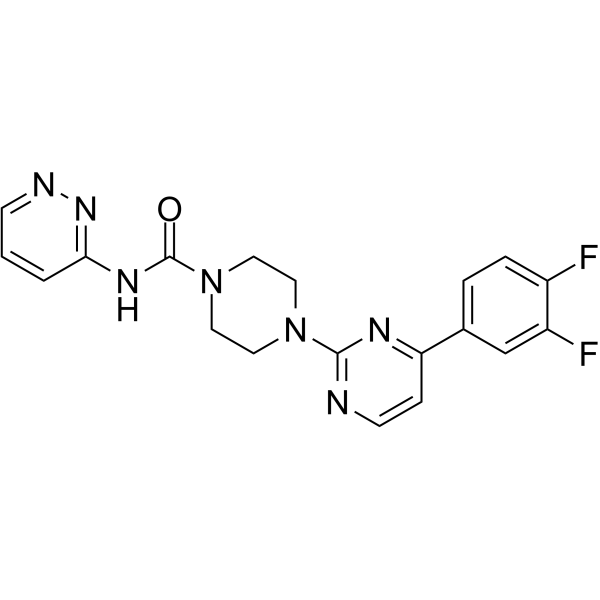
- HY-B1075A
-
|
MK-0955
|
Bacterial
Antibiotic
|
Infection
|
|
Fosfomycin (MK-0955) is a broad-spectrum antibiotic. Fosfomycin can cross blood-brain barrier penetrating, and irreversibly inhibits an early stage in cell wall synthesis. Fosfomycin shows anti-bacteria activity for a range of bacteria, including multidrug-resistant (MDR), extensively drug-resistant (XDR), and pan-drug-resistant (PDR) bacteria .
|
-
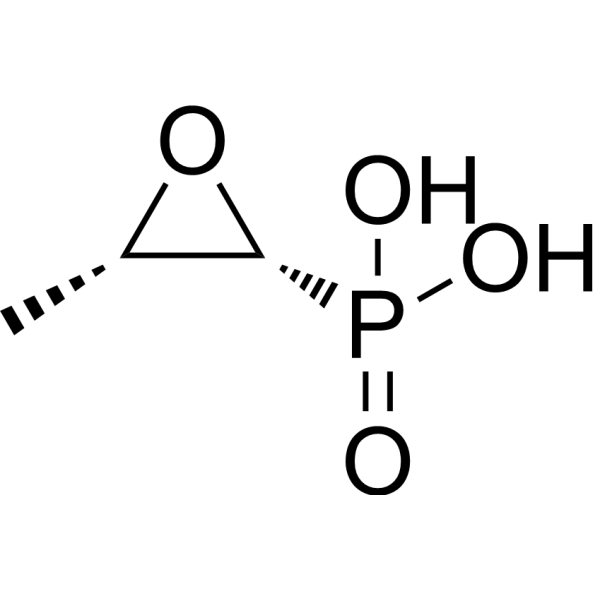
- HY-136731
-
|
|
DNA/RNA Synthesis
|
Cancer
|
|
APE1-IN-1 is a potent and blood-brain barrier (BBB) penetrant apurinic/apyrimidinic (AP) endonuclease 1 (APE1) inhibitor with an IC50 value of 2 μM. APE1-IN-1 can potentiate the cytotoxicity of the alkylating agents Methylmethane sulfonate and Temozolomide (HY-17364) to cancer cells .
|
-
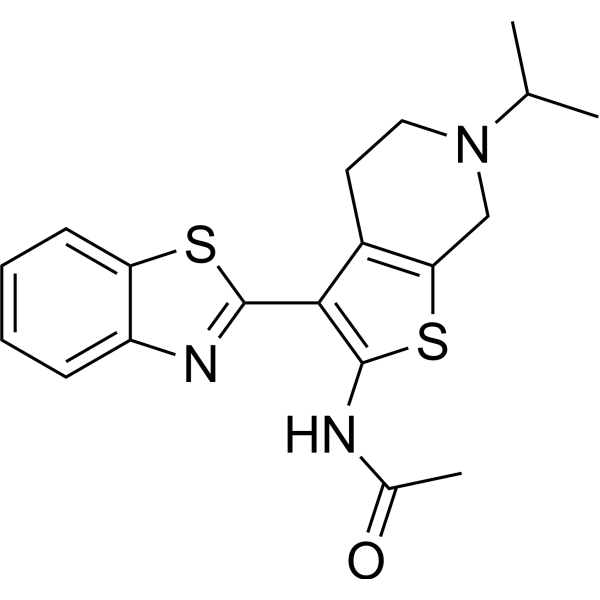
- HY-155058
-
|
|
Sodium Channel
|
Neurological Disease
|
|
Nav1.3 channel inhibitor 1 (compound 15b) is a state-dependent voltage-gated sodium channel Nav1.3 inhibitor (IC50=20 nM). Nav1.3 channel inhibitor 1 can penetrate the blood-brain barrier and can be used in the research of nervous system diseases .
|
-
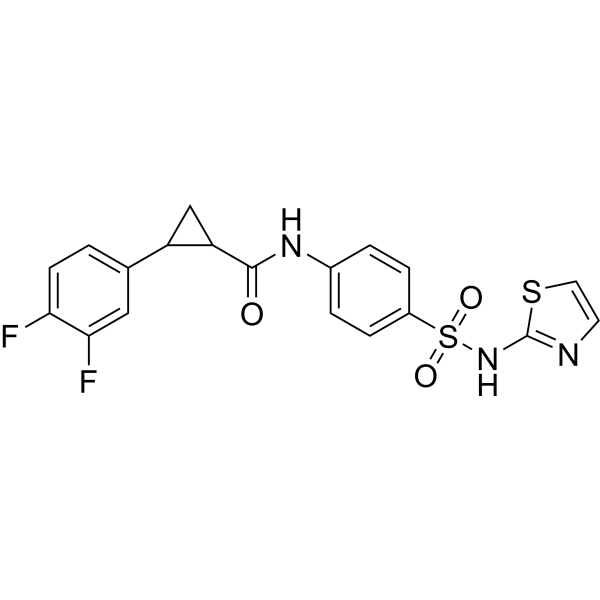
- HY-12768B
-
|
BLZ945 dihydrochloride
|
c-Fms
|
Neurological Disease
Cancer
|
|
Sotuletinib (BLZ945) dihydrochloride is an orally active and blood-brain barrier-permeable CSF1-R-specific inhibitor (IC50=1 nM). Sotuletinib (BLZ945) dihydrochloride induces tumor cell apoptosis and effectively inhibits tumor growth in mouse models. Sotuletinib dihydrochloride can be used in cancer and amyotrophic lateral sclerosis (ALS) research .
|
-

- HY-157400
-
|
|
Monoamine Oxidase
|
Neurological Disease
|
|
hMAO-B-IN-7 (compound 11n) is a potent and blood–brain barrier (BBB) penetrable inhibitor of human monoamine oxidase-B (hMAO-B), with the IC50 value of 0.79±0.05 μM. hMAO-B-IN-7 can be used for Alzheimer’s disease (AD) and Parkinson’s disease (PD) research .
|
-
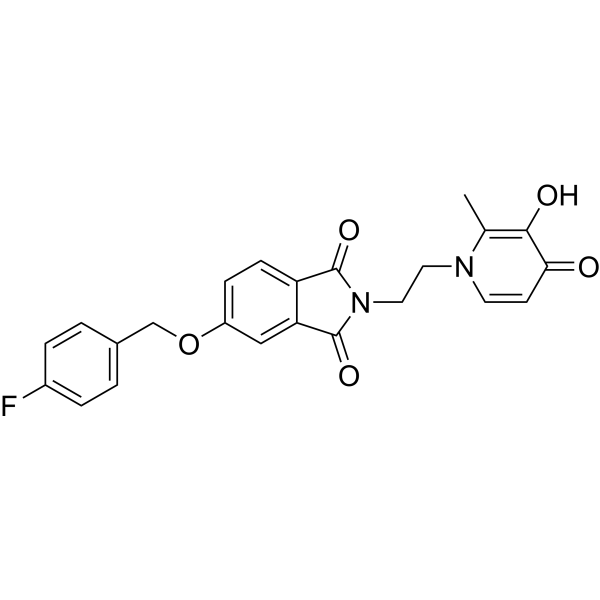
- HY-157978
-
|
|
Cholinesterase (ChE)
Amyloid-β
|
Neurological Disease
|
|
AChE-IN-59 (compounds 3b) is an AChE inhibitor, with an IC50 value of 0.05 μM. AChE-IN-59 can inhibit the aggregation of Aβ1-42, protect nerve cells and penetrate the blood-brain barrier well. AChE-IN-59 can be used for the research of Alzheimer's disease (AD) .
|
-

- HY-163415
-
|
|
Monoamine Oxidase
|
Neurological Disease
|
|
MAO-IN-5 (Compound ZINC000016952895) is a monoamine oxidase (MAO) inhibitor. According to the prediction of Swiss ADME, MAO-IN-5 can inhibit the CYP enzyme family, has blood-brain barrier (BBB) permeability, and has a high gastrointestinal absorption rate. MAO-IN-5 can be used in the study of neurological diseases .
|
-
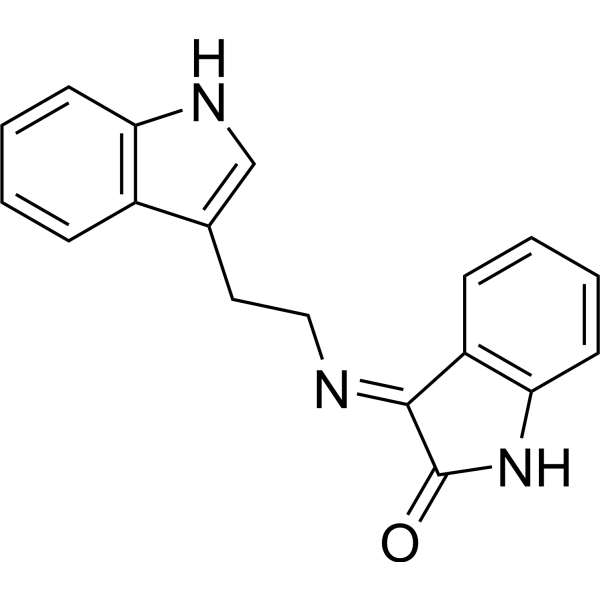
- HY-15978
-
|
|
Others
|
Neurological Disease
|
|
P7C3-A20 is a derivative of P7C3 with potent proneurogenic and neuroprotective activity. P7C3-A20 exerts an antidepressant-like effect. P7C3-A20 can cross the blood-brain barrier and therefore has the potential for brain injury treatment .
|
-
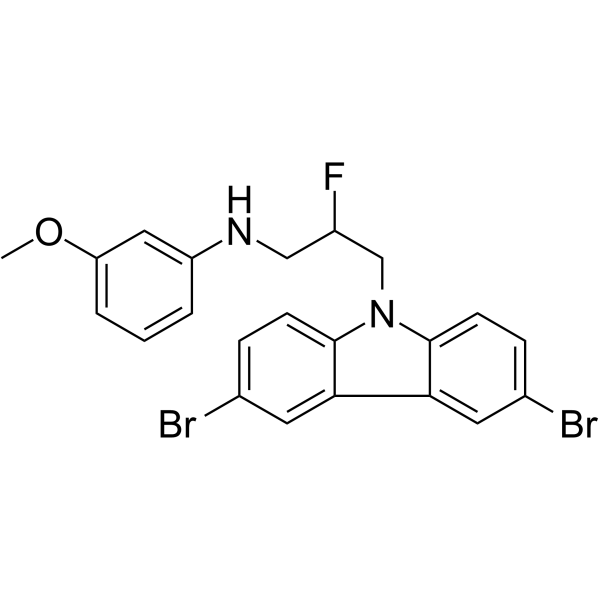
- HY-139598
-
|
|
Phospholipase
|
Cardiovascular Disease
|
|
LFHP-1c is an PGAM5 inhibitor with neuroprotective activity in brain ischemic stroke. LFHP-1c protects blood-brain barrier integrity from ischemia-induced injury. LFHP-1c binds to endothelial PGAM5 to inhibit the activity of PGAM5 phosphatase and the interaction of PGAM5 with NRF2. LFHP-1c exhibits in vitro and in vivo protection .
|
-
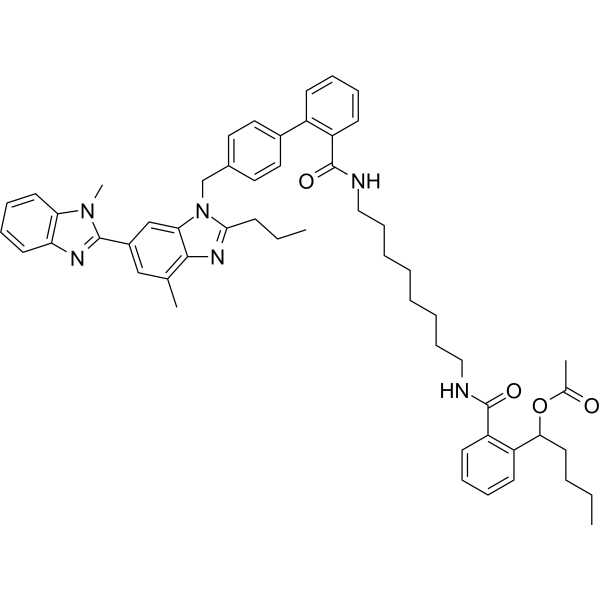
- HY-10202
-
|
MLN518; CT53518
|
FLT3
c-Kit
PDGFR
Apoptosis
|
Cancer
|
|
Tandutinib (MLN518) is a potent and selective inhibitor of the FLT3 with an IC50 of 0.22 μM, and also inhibits c-Kit and PDGFR with IC50s of 0.17 μM and 0.20 μM, respectively. Tandutinib can be used for acute myelogenous leukemia (AML) . Tandutinib has the ability to cross the blood-brain barrier .
|
-
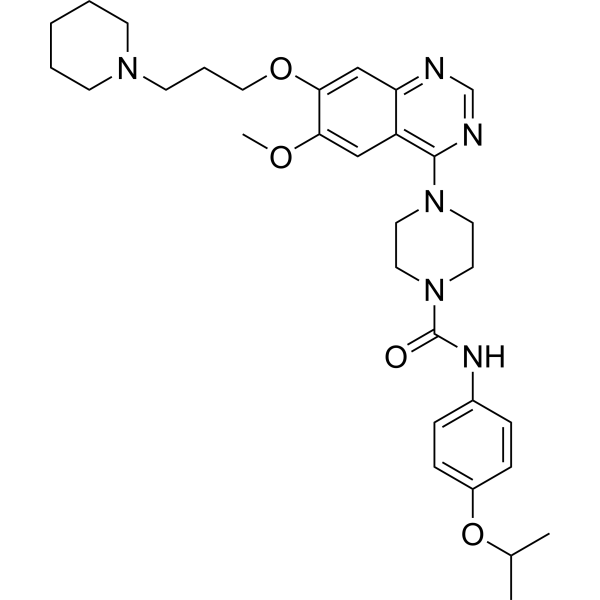
- HY-13289
-
|
SYN117; RS-25560-197
|
Dopamine β-hydroxylase
|
Cardiovascular Disease
|
|
Nepicastat (SYN117) is a selective, potent, and orally active inhibitor of dopamine-beta-hydroxylase. Nepicastat (SYN117) produces concentration-dependent inhibition of bovine (IC50=8.5 nM) and human (IC50=9 nM) dopamine-beta-hydroxylase. Nepicastat (SYN117) can cross the blood-brain barrier (BBB) .
|
-
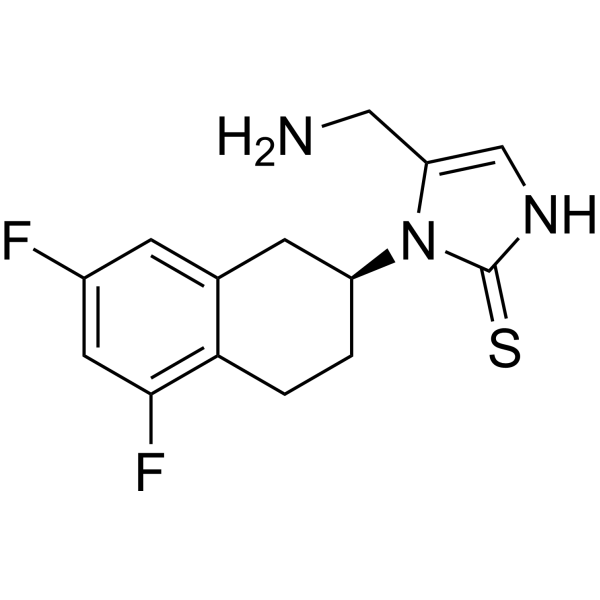
- HY-17364
-
|
NSC 362856; CCRG 81045; TMZ
|
DNA Alkylator/Crosslinker
Autophagy
Apoptosis
|
Cancer
|
|
Temozolomide (NSC 362856) is an oral active DNA alkylating agent that crosses the blood-brain barrier. Temozolomide is also a proautophagic and proapoptotic agent. Temozolomide is effective against tumor cells that are characterized by low levels of O6-alkylguanine DNA alkyltransferase (OGAT) and a functional mismatch repair system. Temozolomide has antitumor and antiangiogenic effects .
|
-
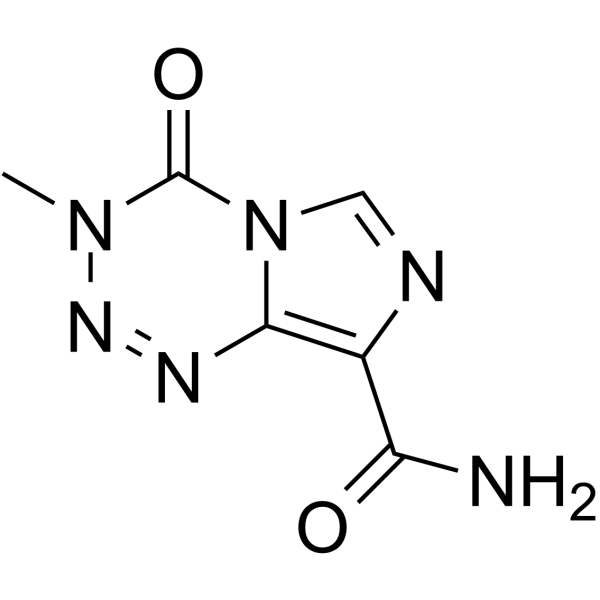
- HY-13340
-
|
VU152100
|
mAChR
|
Neurological Disease
|
|
VU0152100 (VU152100) is a highly selective mAChR positive allosteric modulator (permeable to the blood-brain barrier). VU0152100 reverses Amphetamine-induced hypermotility in rats and increased levels of extracellular dopamine in nucleus accumbens and caudate-putamen. VU0152100 has good research potential in psychosis and cognitive impairment associated with mental disorders such as schizophrenia .
|
-
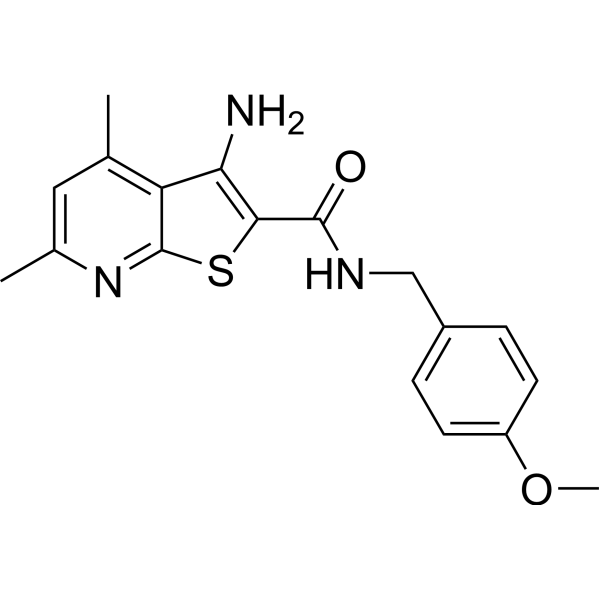
- HY-B1075
-
|
MK-0955 calcium
|
Bacterial
Antibiotic
|
Infection
Cancer
|
|
Fosfomycin (MK-0955) calcium is a blood-brain barrier penetrating, broad-spectrum antibiotic by irreversibly inhibiting an early stage in cell wall synthesis. Fosfomycin calcium shows both in vivo and in vitro activity against a wide range of bacteria, including multidrug-resistant (MDR), extensively drug-resistant (XDR), and pan-drug-resistant (PDR) bacteria .
|
-

- HY-15771A
-
|
ONO-4059 hydrochloride; GS-4059 hydrochloride
|
Btk
Apoptosis
|
Inflammation/Immunology
Cancer
|
|
Tirabrutinib (ONO-4059) hydrochloride is an orally active Bruton’s Tyrosine Kinase (BTK) inhibitor (can cross the blood-brain barrier (BBB)), with an IC50 of 6.8 nM. Tirabrutinib hydrochloride irreversibly and covalently binds to BTK and inhibits aberrant B cell receptor signaling. Tirabrutinib hydrochloride can be used in studies of autoimmune diseases and hematological malignancies .
|
-

- HY-15771
-
|
ONO-4059; GS-4059
|
Btk
Apoptosis
|
Inflammation/Immunology
Cancer
|
|
Tirabrutinib (ONO-4059) is an orally active Bruton’s Tyrosine Kinase (BTK) inhibitor (can cross the blood-brain barrier (BBB)), with an IC50 of 6.8 nM. Tirabrutinib irreversibly and covalently binds to BTK and inhibits aberrant B cell receptor signaling. Tirabrutinib can be used in studies of autoimmune diseases and hematological malignancies .
|
-

- HY-10232
-
THIP
1 Publications Verification
Gaboxadol
|
GABA Receptor
|
Neurological Disease
|
|
THIP (Gaboxadol) is a selective extrasynaptic GABAA receptors (eGABARs) agonist (with blood-brain barrier permeability), shows an EC50 value of 13 µM for δ-GABAAR. THIP induces strong tense GABAA-mediated currents in layer 2/3 neurons, but shows on effect on miniature IPSCs. THIP can be used in studies of sleep disorders .
|
-
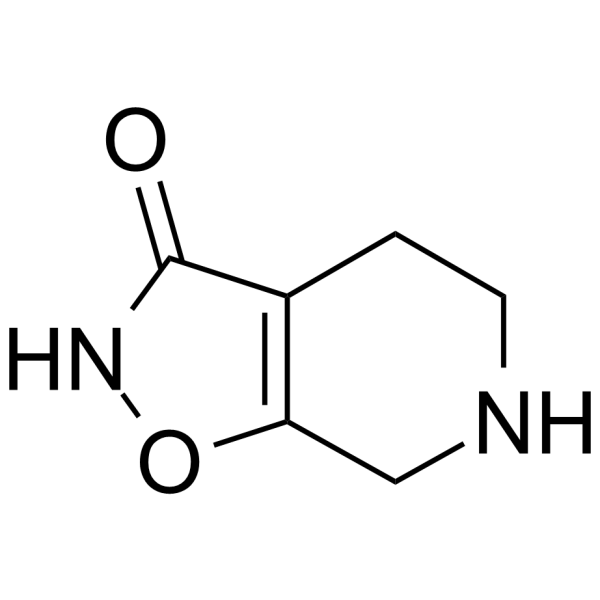
- HY-B0609
-
|
MK-0955 tromethamine
|
Bacterial
Antibiotic
|
Infection
Cancer
|
|
Fosfomycin (MK-0955) tromethamine is a blood-brain barrier penetrating, broad-spectrum antibiotic by irreversibly inhibiting an early stage in cell wall synthesis. Fosfomycin tromethamine shows both in vivo and in vitro activity against a wide range of bacteria, including multidrug-resistant (MDR), extensively drug-resistant (XDR), and pan-drug-resistant (PDR) bacteria .
|
-
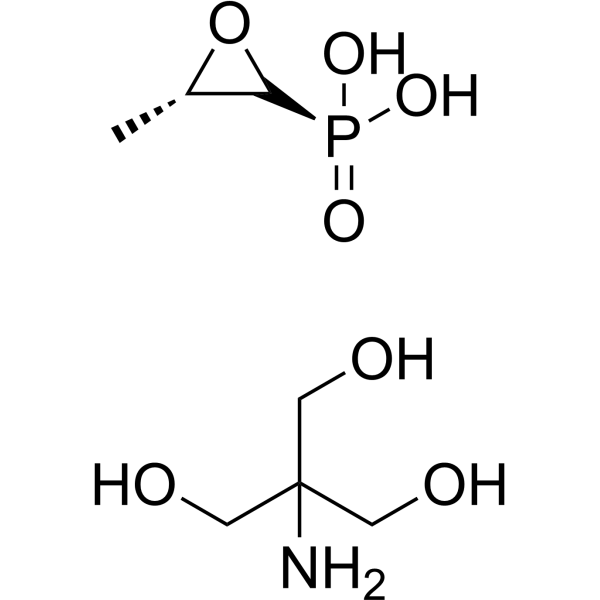
- HY-10202A
-
|
MLN518 hydrochloride; CT53518 hydrochloride
|
FLT3
c-Kit
PDGFR
Apoptosis
|
Cancer
|
|
Tandutinib hydrochloride (MLN518 hydrochloride) is a potent and selective inhibitor of the FLT3 with an IC50 of 0.22 μM, and also inhibits c-Kit and PDGFR with IC50s of 0.17 μM and 0.20 μM, respectively. Tandutinib hydrochloride can be used for acute myelogenous leukemia (AML) . Tandutinib hydrochloride has the ability to cross the blood-brain barrier .
|
-
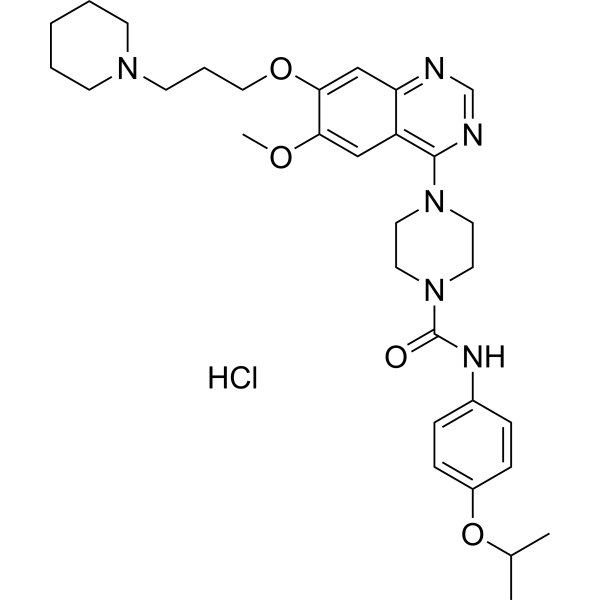
- HY-P1178A
-
|
|
Trk Receptor
|
Neurological Disease
|
|
Cyclotraxin B TFA, a cyclic peptide, is a highly potent and selective TrkB inhibitor without altering the binding of BDNF. Cyclotraxin B TFA non-competitively inhibits BDNF-induced TrkB activity with an IC50 of 0.30 nM. Cyclotraxin B TFA can crosse the blood-brain-barrier and has analgesic and anxiolytic-like behavioral effects .
|
-
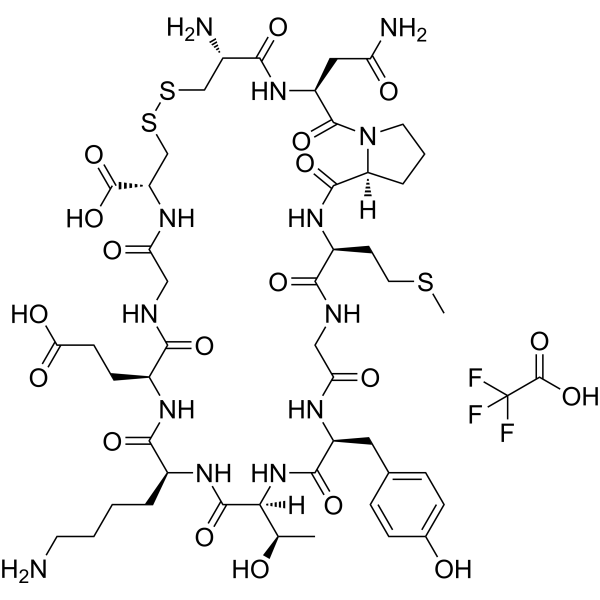
- HY-151985
-
|
|
Apoptosis
|
Cancer
|
|
TACC3 inhibitor 1 is a potent and cross the blood-brain barrier TACC3 inhibitor. TACC3 inhibitor 1 induces Apoptosis and cell cycle arrest at G2/M phase. TACC3 inhibitor 1 induces the generation of intracellular ROS. TACC3 inhibitor 1 shows antiproliferative and anti-tumor activity .
|
-

- HY-124160
-
|
|
iGluR
|
Neurological Disease
|
|
JNJ-56022486 is an orally active and potent negative AMPA receptor modulator (Ki=19 nM) selective for?TARP-γ8. JNJ-56022486 is also a TARP-γ8 receptor antagonist, with blood?brain?barrier (BBB) permeability. JNJ-56022486 can be used for research of Epilepsy .
|
-
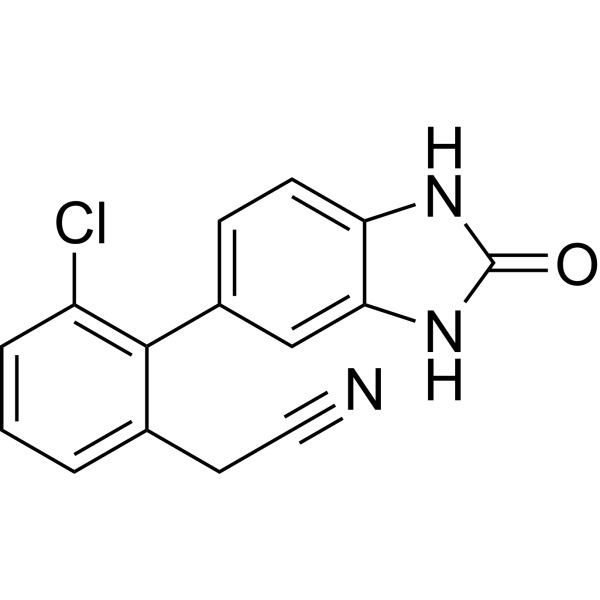
- HY-103268
-
|
|
Potassium Channel
|
Neurological Disease
|
|
(Rac)-AZD3839 is an orally active beta-amyloid precursor protein cleaving enzyme (BACE1) inhibitor that is blood-brain barrier-permeable. (Rac)-AZD3839 has an affinity for the human ether-a-go-go related gene (hERG) ion channel. (Rac)-AZD3839 can be used in the research of Alzheimer's disease .
|
-
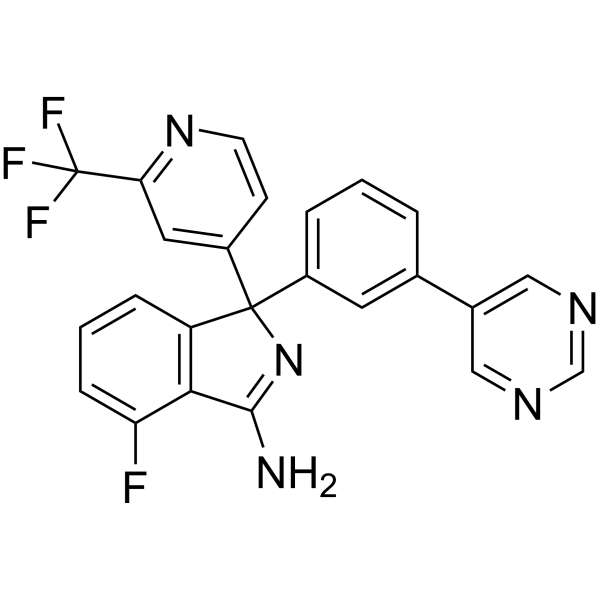
- HY-162127
-
|
|
Cholinesterase (ChE)
Beta-secretase
|
Neurological Disease
|
|
hAChE/hBACE-1-IN-3 (Compound 23a) is a mixed-type inhibitor of hAChE and hBACE-1 with IC50 values of 0.32 μM and 0.39 μM, respectively, Ki values of 0.26 μM and 0.46 μM, respectively. hAChE/hBACE-1-IN-3 can penetrate the blood-brain barrier .
|
-

- HY-161117
-
|
|
Others
|
Cancer
|
|
AD-8007 is an acetyl CoA synthase 2 (ACSS2) inhibitor that can cross the blood-brain barrier. AD-8007 can significantly reduce lipid storage and cell colony formation in vitro models, and increase tumor cell death. AD-8007 has anti-cancer activity and can be used in the research of breast cancer .
|
-

- HY-157555
-
|
|
NOD-like Receptor (NLR)
|
Neurological Disease
|
|
NLRP3-IN-29(Compound 5M) is an inhibitor of NLR family pyrin domain containing 3 (NLRP3). NLRP3-IN-29 has the potential for blood-brain barrier permeability and inflammation inhibition both in vivo and in vitro. NLRP3-IN-29 can be used for research on Alzheimer's disease .
|
-
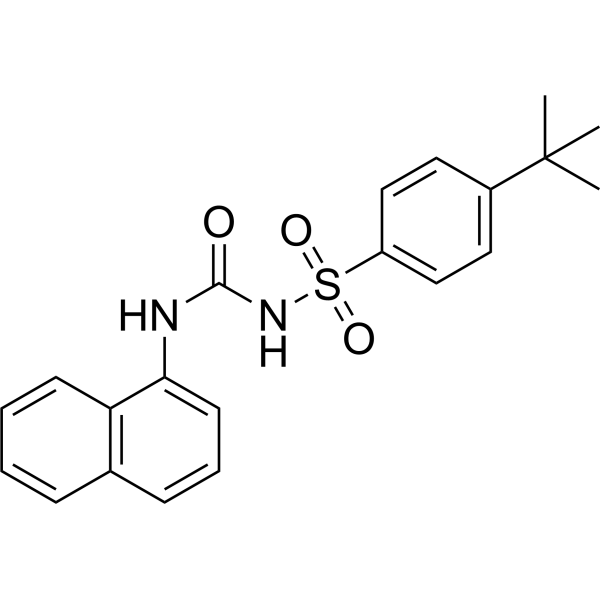
- HY-152148
-
|
|
MAGL
|
Neurological Disease
|
|
JZP-MA-11 is a positron emission tomography (PET) ligand targeting the endocannabinoid α/β-hydrolase domain 6 (ABHD6) enzyme. JZP-MA-11 selectively inhibits ABHD6 with an IC50 value of 126 nM. JZP-MA-11 can cross the blood-brain barrier (BBB). [18F]JZP-MA-11 has the potential for preclinical evaluation targeting the brain ABHD6 in mice and nonhuman primate (NHP) .
|
-
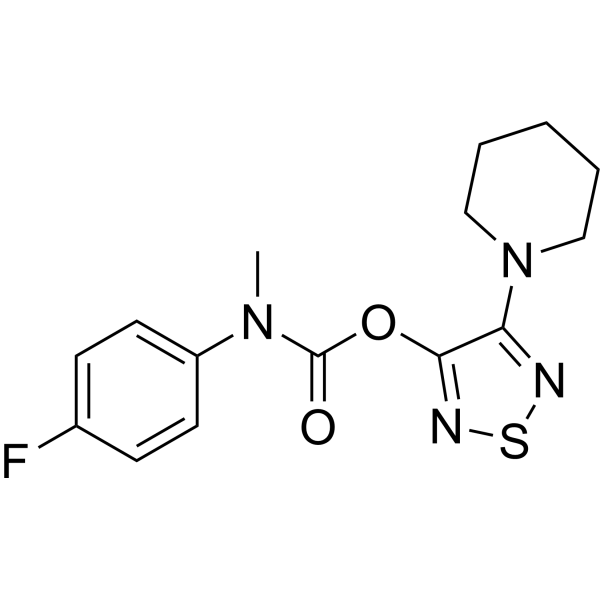
- HY-10974
-
|
|
γ-secretase
|
Neurological Disease
Cancer
|
|
MK-0752 is a potent, orally active and specific γ-secretase inhibitor, showing dose-dependent reduction of Aβ40 with an IC50 of 5 nM in human SH-SY5Y cells. MK-0752 crosses the blood-brain barrier. MK-0752 reduces newly generated CNS Aβ in vivo .
|
-
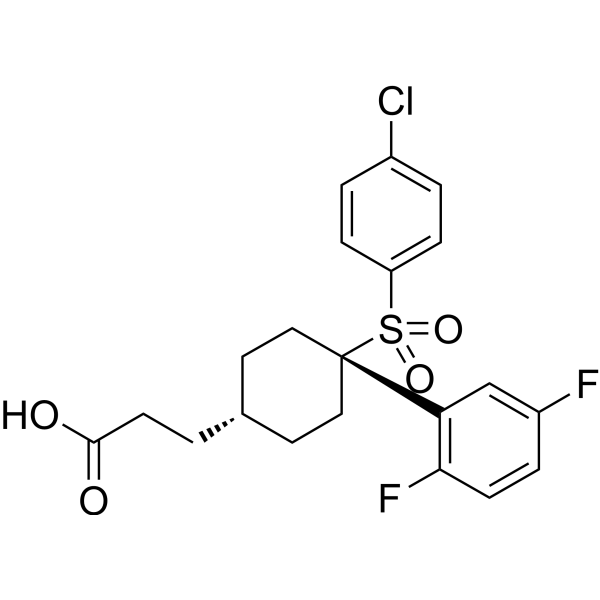
- HY-B0364A
-
|
Dyclocaine hydrochloride
|
Bacterial
Fungal
Aldehyde Dehydrogenase (ALDH)
|
Infection
Cancer
|
|
Dyclonine (Dyclocaine) hydrochloride is an orally effective ALDH covalent inhibitor (crosses blood-brain barrier), with an IC50 of 35 µM for ALDH2 and 76 µM for ALDH3A1. Dyclonine hydrochloride has sensitizing activities for targeted cancer cells and antibacterial. Dyclonine hydrochloride is also a local anesthetic that blocks the transmission of various nerve impulses or stimuli and inhibits the sensation of touch and pain .
|
-
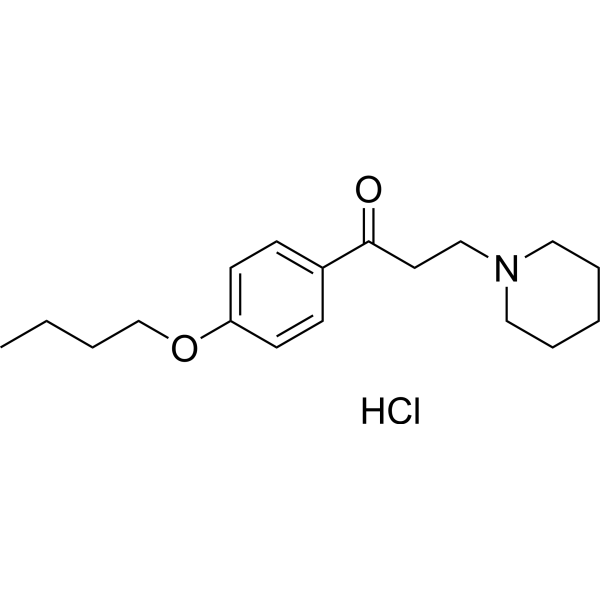
- HY-B1126
-
|
|
iGluR
|
Neurological Disease
|
|
Orphenadrine hydrochloride is an orally active and non-competitive NMDA receptor antagonist (crosses the blood-brain barrier) with a Ki of 6.0 μM. Orphenadrine hydrochloride relieves stiffness, pain and discomfort due to muscle strains, sprains or other injuries. Orphenadrine hydrochloride is also used to relieve tremors associated with parkinson's disease. Orphenadrine citrate has good neuroprotective properties, can be used in studies of neurodegenerative diseases .
|
-
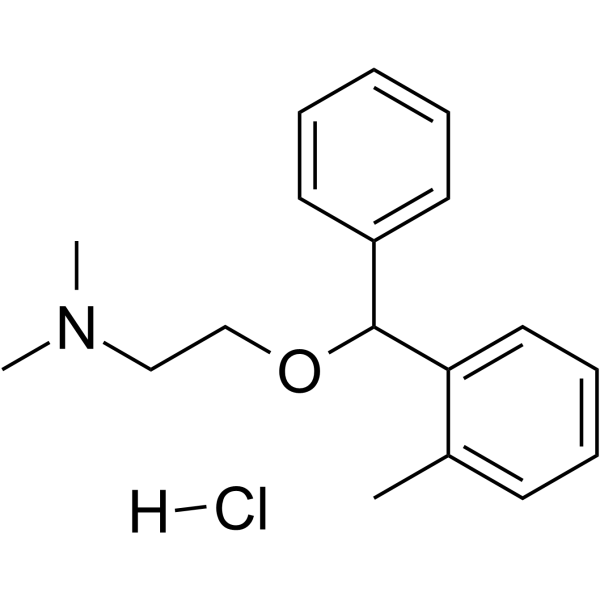
- HY-125374
-
|
XRP9881
|
Apoptosis
|
Cancer
|
|
Larotaxel (XRP9881) is a taxane analogue with preclinical activity against taxane-resistant breast cancer. Larotaxel (XRP9881) exerts its cytotoxic effect by promoting tubulin assembly and stabilizing microtubules, ultimately leading to cell death by apoptosis. It presents the ability to cross the blood brain barrier and has a much lower affinity for P-glycoprotein 1 than Docetaxel .
|
-

- HY-12098
-
|
MPC-6827 hydrochloride
|
Microtubule/Tubulin
|
Cancer
|
|
Verubulin hydrochloride (MPC-6827 hydrochloride) is a blood brain barrier permeable microtubule-disrupting agent, with potent and broad-spectrum in vitro and in vivo cytotoxic activities. Verubulin hydrochloride (MPC-6827 hydrochloride) exhibits potent anticancer activity in human MX-1 breast and other mouse xenograft cancer models. Verubulin hydrochloride (MPC 6827 hydrochloride) is a promising candidate for the treatment of multiple cancer types .
|
-
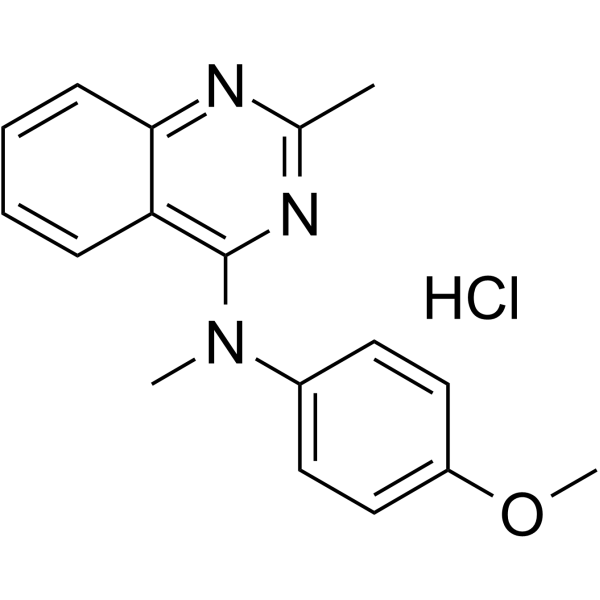
- HY-130795
-
|
|
GSK-3
|
Neurological Disease
|
|
GSK-3β inhibitor 2 (Compound 3) is a potent, selective and orally active GSK-3β inhibitor with an IC50 of 1.1 nM. GSK-3β inhibitor 2 can cross the blood-brain barrier. GSK-3β inhibitor 2 has the potential for Alzheimer's disease .
|
-
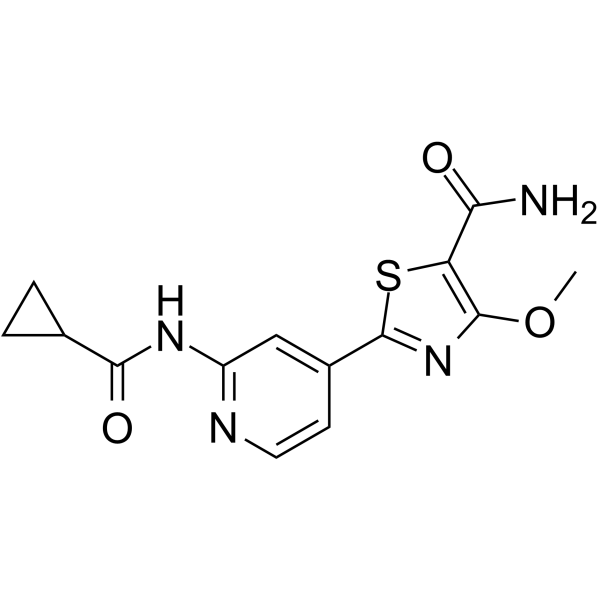
- HY-100822
-
|
(+)-HA-966
|
|
|
|
(R)-(+)-HA-966 ((+)-HA-966) is a partial agonist/antagonist of glycine site of the N-methyl-D-aspartate (NMDA) receptor complex. (R)-(+)-HA-966 selectively blocks the activation of the mesolimbic dopamine system by amphetamine . (R)-(+)-HA-966 can cross the blood-brain barrier and has the potential for neuropathic and acute pain .
|
-
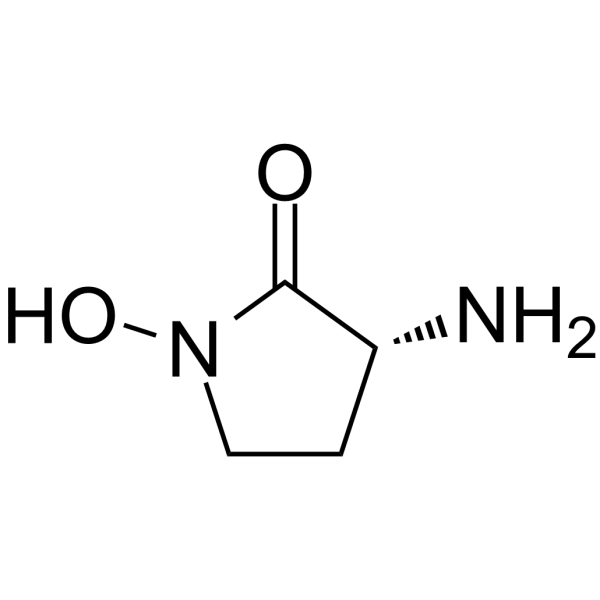
- HY-109502S
-
|
|
Isotope-Labeled Compounds
|
Neurological Disease
|
|
10-OH-NBP-d4 is deuterium labeled 10-OH-NBP. 10-OH-NBP is a Butylphthalide (3-n-Butylphthalide; NBP; HY-B0647) hydroxylated metabolite and can penetrates the blood-brain barrier (BBB). Butylphthalide exerts neuroprotective effects and has potential for cerebral ischemia research[1].
|
-

- HY-111544
-
|
|
Histone Methyltransferase
|
Cancer
|
|
EML741 is a histone lysine methyltransferase G9a/GLP inhibitor, with an IC50 of 23 nM, Kd of 1.13 μM for G9a. EML741 also inhibits DNMT1 (IC50, 3.1 μM), with no effect on DNMT3a or DNMT3b. EML741 exhibits low cell toxicity, and is membrane permeable and blood-brain barrier penetrated .
|
-
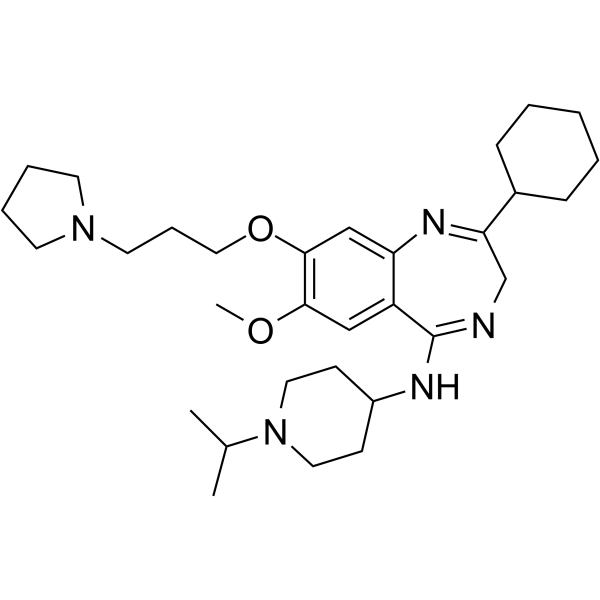
- HY-117709
-
|
|
HDAC
|
Neurological Disease
|
|
BRD6688 is a selective HDAC2 inhibitor. BRD6688 increases H4K12 and H3K9 histone acetylation in primary mouse neuronal cells. BRD6688 crosses the blood brain barrier and rescues the memory defects associated with p25 induced neurodegeneration in contextual fear conditioning in a CK-p25 mouse model .
|
-
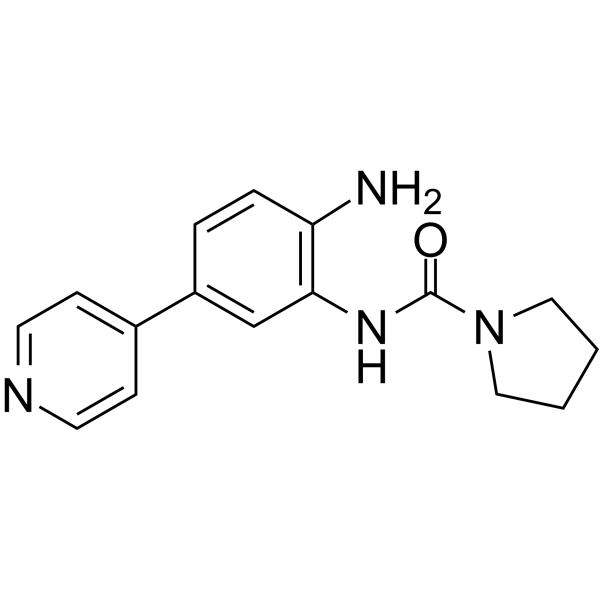
- HY-143413
-
|
|
Amyloid-β
|
Neurological Disease
Inflammation/Immunology
|
|
BuChE-IN-2 is an excellent butyrylcholinesterase (BuChE) inhibitor (IC50s of 1.28 μM and 0.67 μM for BuChE and NO). BuChE-IN-2 can inhibit the aggregation of Aβ, ROS formation and chelate Cu 2+, exhibiting proper blood-brain barrier (BBB) penetration. BuChE-IN-2 has potential to research Alzheimer’s disease .
|
-

- HY-145845
-
|
|
HDAC
Monoamine Oxidase
|
Neurological Disease
|
|
HDAC1/MAO-B-IN-1 is a potent, selective and cross the blood-brain barrier HDAC1/MAO-B inhibitor with IC50 values of 21.4 nM and 99.0 nM for HDAC1 and MAO-B, respectively. HDAC1/MAO-B-IN-1 has the potential for the research of Alzheimer’s disease .
|
-

- HY-146315
-
|
|
Cholinesterase (ChE)
Monoamine Oxidase
|
Neurological Disease
|
|
AChE/BChE-IN-6 (compound 22) is a potent dual AChE/BChE inhibitor with IC50 values of 0.809 µM, 2.248 µM and > 100 µM for hBChE, hAChE and hMAO-B, respectively. AChE/BChE-IN-6 penetrates the blood-brain barrier (BBB). AChE/BChE-IN-6 can be used for Alzheimer’s disease (AD) research .
|
-
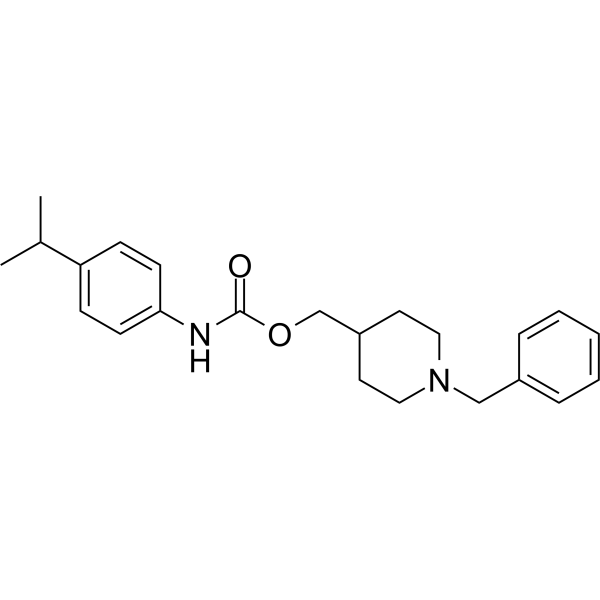
- HY-33009
-
|
|
Others
|
Neurological Disease
|
|
AS057278 is a potent, selective, orally active and blood-brain barrier (BBB) penetrant non-peptidic D-amino acid oxidase (DAAO) inhibitor with an IC50 value of 0.91 μM and EC50 of 2.2-3.95 μM. AS057278 can normalize phencyclidine (PCP)-induced prepulse inhibition in mice. AS057278 can be used for researching schizophrenia .
|
-
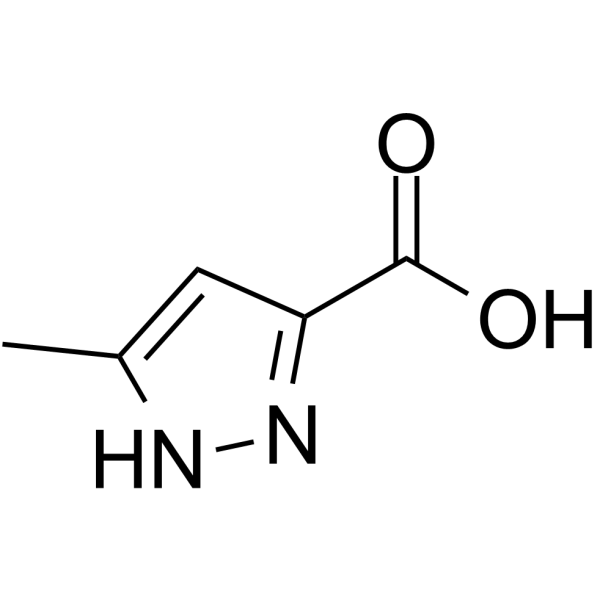
- HY-143244
-
|
|
Monoamine Oxidase
|
Neurological Disease
|
|
Monoamine Oxidase B inhibitor 1 is a potent, reversible, orally active and selective monoamine oxidase B (MAO-B) inhibitor with an IC50 of 0.02 nM. Monoamine Oxidase B inhibitor 1 has antioxidant and anti-neuroinflammatory activities. Monoamine Oxidase B inhibitor 1 can across the blood-brain barrier (BBB), and can be used for Parkinson’s disease study .
|
-
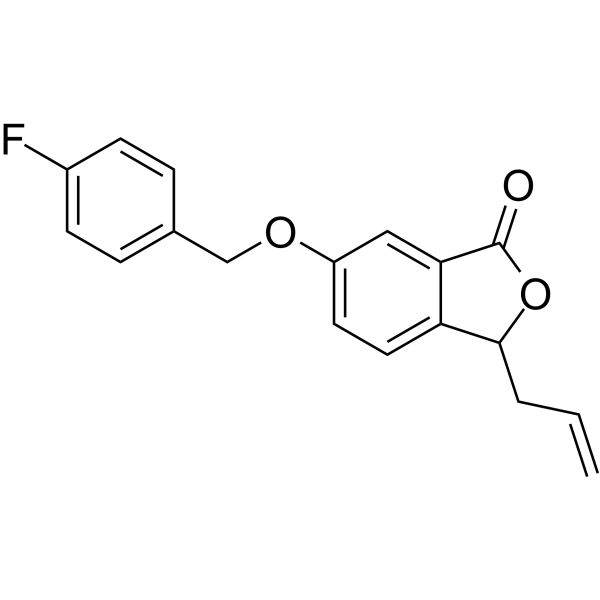
- HY-143245
-
|
|
Monoamine Oxidase
|
Neurological Disease
|
|
Monoamine Oxidase B inhibitor 2 is a potent, reversible, orally active and selective monoamine oxidase B (MAO-B) inhibitor with an IC50 of 1.33 nM. Monoamine Oxidase B inhibitor 2 has antioxidant and anti-neuroinflammatory activities. Monoamine Oxidase B inhibitor 2 can across the blood-brain barrier (BBB), and can be used for Parkinson’s disease study .
|
-
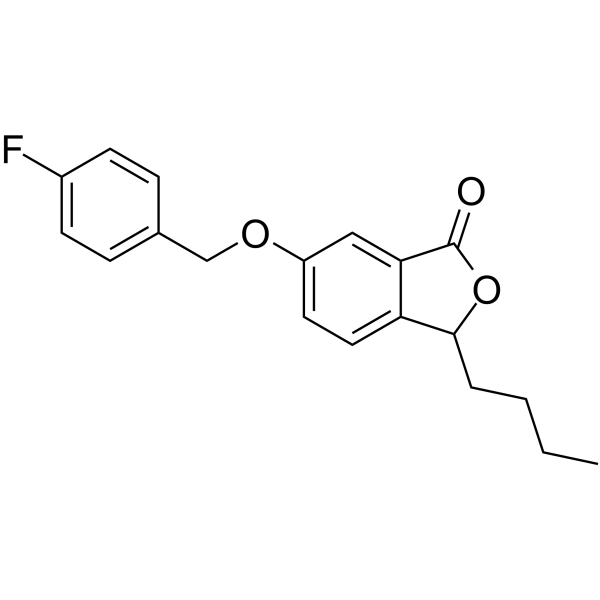
- HY-150791
-
|
|
Reactive Oxygen Species
DNA/RNA Synthesis
|
Cancer
|
|
FLDP-5 is a blood-brain barrier (BBB) penetrant curcuminoid analogues. FLDP-5 can induce production of ROS (Reactive Oxygen Species), DNA damage and cell cycle S phase arrest. FLDP-5 exhibits highly potent tumour-suppressive effects with anti-proliferative and anti-migratory activities on LN-18 cells .
|
-

- HY-148030
-
|
|
PROTACs
LRRK2
|
Neurological Disease
|
|
XL01126 is a potent degrader of LRRK2 with DC50s of 14 nM (G2019S LRRK2) and 32 nM (WT LRRK2), respectively. XL01126 can cross blood-brain barrier and be used as a degrader probe in Parkinson’s disease research. XL01126 exerts function of study of non-catalytic and scaffolding functions of LRRK2 .
|
-
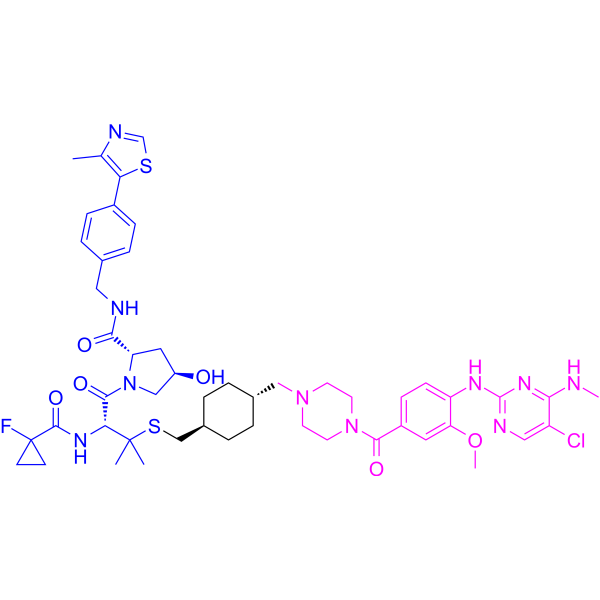
- HY-148250
-
|
|
iGluR
|
Neurological Disease
|
|
TP-050 is a potent, orally active and selective NMDAR agonist with an EC50 value of 0.51 µM and 9.6 µM for GluN2A and GluN2D, respecticely. TP-050 can cross the blood-brain barrier (BBB). TP-050 induces hippocampal long-term (LPT) potentiation enhancemen and enhances neuronal signal transmission .
|
-
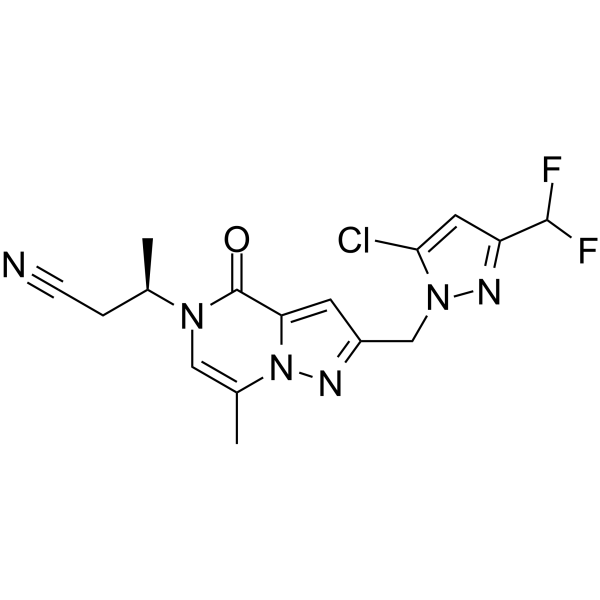
- HY-148417
-
|
|
Serotonin Transporter
|
Neurological Disease
|
|
ZZL-7 is a fast-onset antidepressant agent. ZZL-7 works by disrupting the interaction between the serotonin transporter (SERT) and neuronal nitric oxide synthase (nNOS) in the dorsal raphe nucleus (DRN). ZZL-7 can cross the blood-brain barrier readily. ZZL-7 can be used for the research of major depressive disorder (MDD) .
|
-
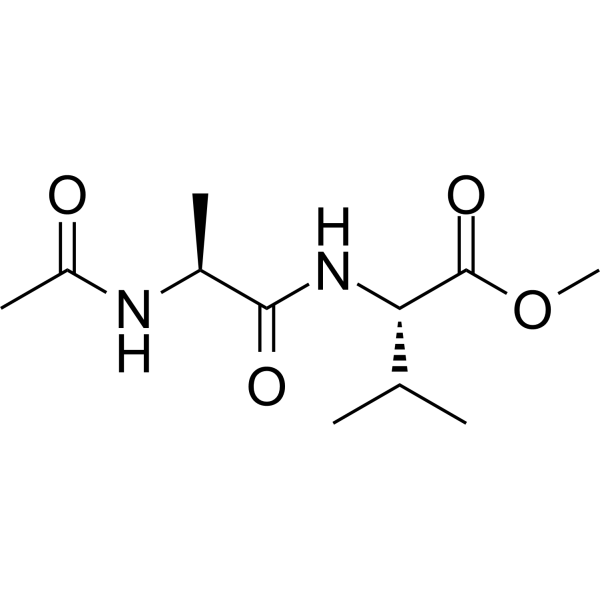
- HY-15292
-
S107
1 Publications Verification
|
Others
|
Cardiovascular Disease
|
|
S107 is an orally available, blood brain barrier-permeable compound, which stabilizes RyR2 channels by enhancing the binding of calstabin 2 to the mutant Ryr2-R2474S channel. S107 inhibits Ca 2+ leakage from the sarcoplasmic reticulum (SR) and prevents cardiac arrhythmias and raises the seizure threshold .
|
-
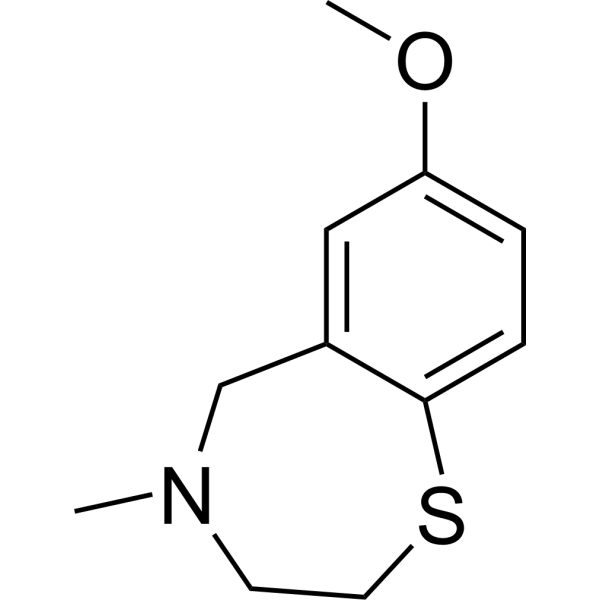
- HY-161303
-
|
|
Others
|
Cancer
|
|
ZNF207-IN-1 (compound C16) is a potent inhibitor of Zinc Finger Protein 207 (ZNF207), with IC50 values ranging from 0.5–2.5 μM for inhibiting sphere formation and 0.5–15 μM for cytotoxicity. ZNF207-IN-1 exhibites efficient permeability across the blood–brain barrier .
|
-

- HY-161331
-
|
|
Cholinesterase (ChE)
|
Neurological Disease
|
|
S16–1029 is a selective and orally active butyrylcholinesterase (BChE) inhibitor with IC50s of 11.35 nM and 48.1 nM for eqBChE and hBChE, respectively. S16–1029 could cross the blood-brain barrier (BBB) and reach the central nervous system (CNS). S16–1029 can be used for Alzheimer's disease (AD) research .
|
-

- HY-132242
-
|
SFN-NAC
|
HDAC
Apoptosis
|
Cancer
|
|
DL-Sulforaphane N-acetyl-L-cysteine (SFN-NAC) is an orally active HDAC inhibitor and metabolite of sulforaphane (HY-13755) with longer half-life and better blood-brain barrier permeability. DL-Sulforaphane N-acetyl-L-cysteine activates autophagy-mediated downregulation of α-tubulin expression through the ERK pathway and can be used in cancer research .
|
-
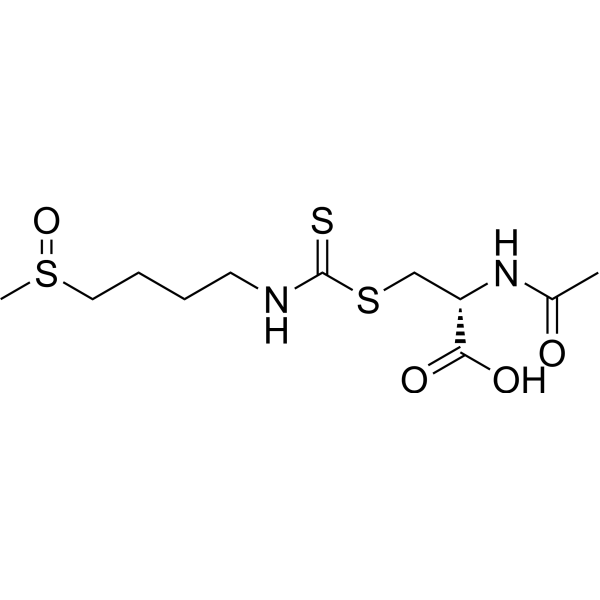
- HY-N0123
-
|
Aloin-A; Barbaloin-A
|
Others
|
Cancer
|
|
Aloin (Aloin-A; Barbaloin-A) is a natural anti-tumor anthraquinone glycoside with iron chelating activity. Aloin induces the differentiation of MC3T3-E1 cells into osteoblasts through MAPK-mediated Wnt and Bmp signaling pathways. Alkaline phosphatase (ALP) is an early marker of osteoblast differentiation, and the activity of ALP is also enhanced by Aloin. Aloin also reduces brain edema, reduces blood-brain barrier disruption and improves cortical impact injuries. Aloin is used in research into osteoporosis and traumatic brain injury (TBI) .
|
-

- HY-17368
-
|
S-Rivastigmine
|
Cholinesterase (ChE)
|
Neurological Disease
|
|
Rivastigmine (S-Rivastigmine) is an orally active and potent cholinesterase (ChE) inhibitor and inhibits butyrylcholinesterase (BChE) and acetylcholinesteras (AChE) with IC50s of 0.037 μM , 4.15 μM, respectively. Rivastigmine can pass the blood brain barrier (BBB). Rivastigmine is a parasympathomimetic or cholinergic agent used for the research of mild to moderate dementia of the Alzheimer's type and dementia due to Parkinson's disease .
|
-
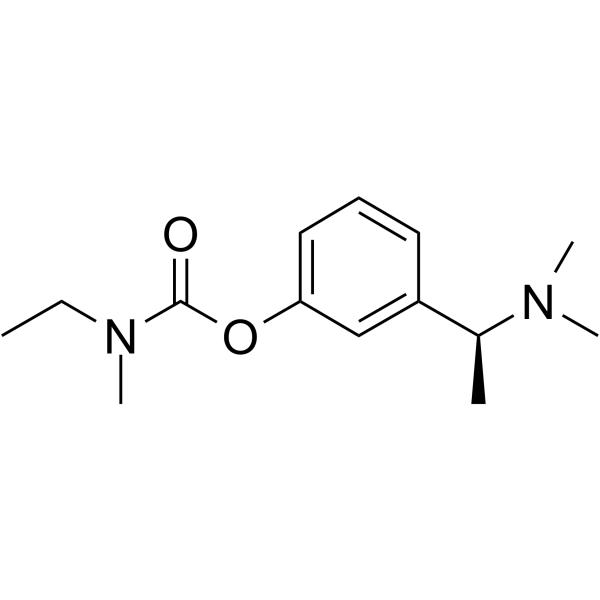
- HY-17387
-
|
Huperzine A
|
Cholinesterase (ChE)
Apoptosis
iGluR
|
Neurological Disease
|
|
(-)-Huperzine A (Huperzine A) is an alkaloid isolated from Huperzia serrata, with neuroprotective activity. (-)-Huperzine A is a potent, highly specific, reversible and blood-brain barrier penetrant inhibitor of acetylcholinesterase (AChE), with an IC50 of 82 nM. (-)-Huperzine A also is non-competitive antagonist of N-methyl-D-aspartate glutamate (NMDA) receptor. (-)-Huperzine A is developed for the research of neurodegenerative diseases, including Alzheimer’s disease .
|
-
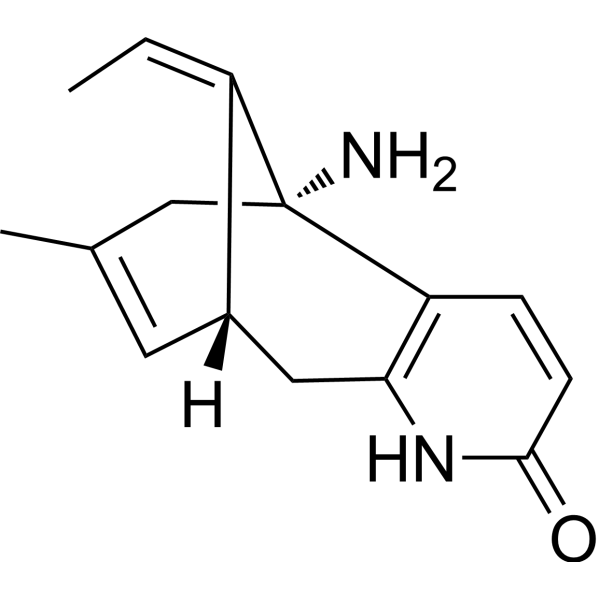
- HY-17573
-
|
|
Oxytocin Receptor
|
Neurological Disease
Endocrinology
|
|
Carbetocin, an oxytocin (OT) analogue, is an oxytocin receptor agonist with a Ki of 7.1 nM. Carbetocin has high affinity to chimeric N-terminus (E1) of the oxytocin receptor (Ki=1.17 μM). Carbetocin has the potential for postpartum hemorrhage research. Carbetocin can crosse the blood-brain barrier and produces antidepressant-like activity via activation of oxytocin receptors in the CNS .
|
-
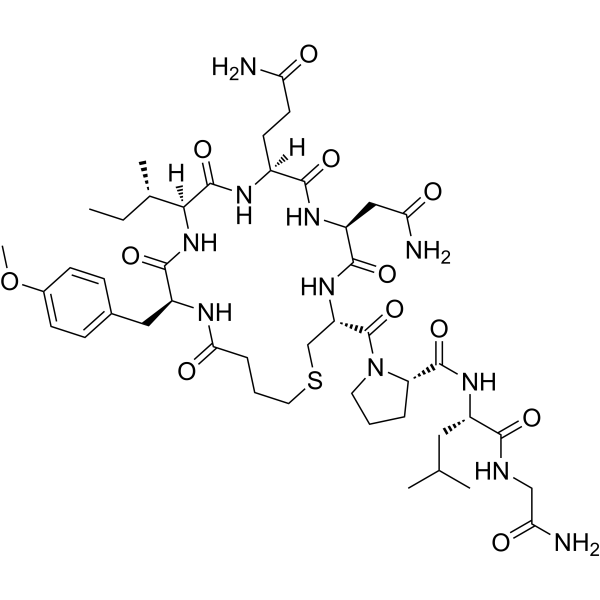
- HY-12354
-
|
|
MMP
|
Cancer
|
|
SB-3CT is a potent and competitive matrix metalloproteinase MMP-2 and MMP-9 inhibitor with Ki values of 13.9 and 600 nM, respectively. SB-3CT has high selectivity for gelatinases. SB-3CT shows blood-brain barrier permeability and has neuroprotective effects and anticancer activity .
|
-
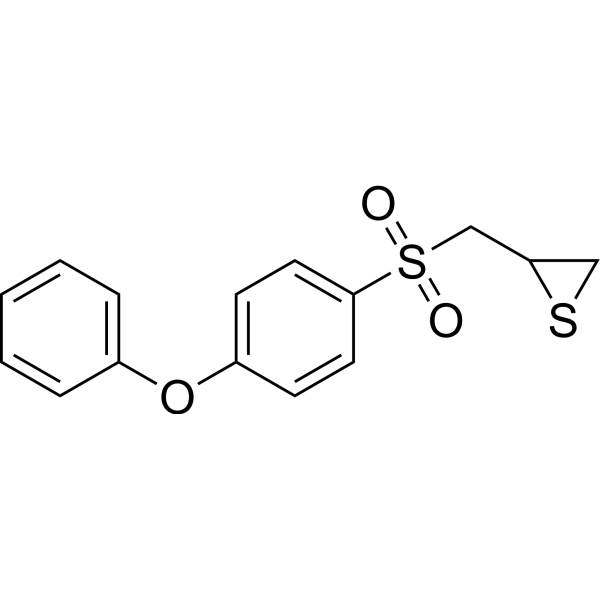
- HY-135749
-
|
|
Others
|
Neurological Disease
Inflammation/Immunology
|
|
BN201 promotes neuronal differentiation, the differentiation of precursor cells to mature oligodendrocytes (EC50 of 6.3 μM) in vitro, and the myelination of new axons (EC50 of 16.6 μM). BN201 is able to cross the blood-brain barrier by active transport and activate pathways (IGF-1 pathway) associated with the response to stress and neuron survival. BN201 has potently neuroprotective effects .
|
-

- HY-137262
-
|
|
Others
|
Neurological Disease
|
|
Protein deglycase DJ-1 against-1, a DJ-1-binding compound, dependently targets DJ1. Protein deglycase DJ-1 against-1 penetrates through the blood brain barrier (BBB). Protein deglycase DJ-1 against-1 is used as a neuroprotective agent and has the potential for Parkinson's disease research .
|
-
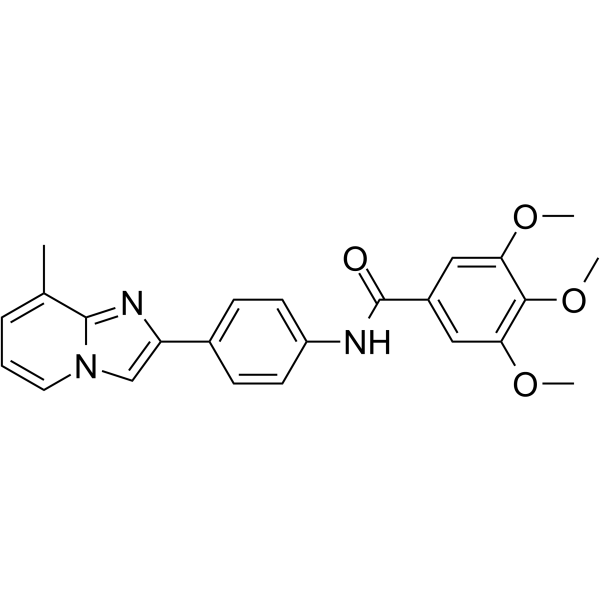
- HY-17573A
-
|
|
Oxytocin Receptor
|
Neurological Disease
Endocrinology
|
|
Carbetocin acetate, an oxytocin (OT) analogue, is an oxytocin receptor agonist with a Ki of 7.1 nM. Carbetocin acetate has high affinity to chimeric N-terminus (E1) of the oxytocin receptor (Ki=1.17 μM). Carbetocin acetate has the potential for postpartum hemorrhage research. Carbetocin acetate can crosse the blood-brain barrier and produces antidepressant-like activity via activation of oxytocin receptors in the CNS .
|
-
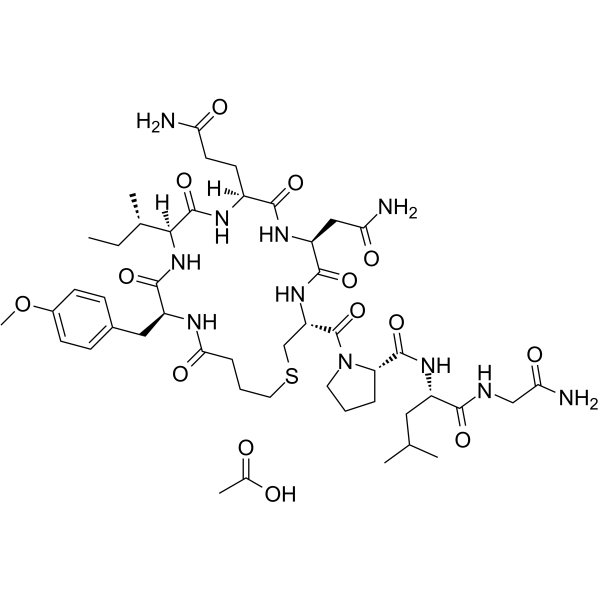
- HY-150639
-
|
|
Raf
|
Cancer
|
|
Everafenib is a potent and blood-brain barrier (BBB) penetrant BRAF inhibitor, also inhibits MAPK signaling. Everafenib has inhibitory activity against a panel of V600EBRAF melanoma cell lines with IC50 values of 2-10 nM, which is better than Dabrafenib (HY-14660) and Vemurafenib (HY-12057). Everafenib has efficacy in an intracranial mouse model of metastatic melanoma .
|
-

- HY-147395
-
|
|
GPR52
|
Neurological Disease
|
|
GPR52 agonist-1 is a potent, orally active and blood-brain barrier (BBB) penetrant GPR52 agonist with an pEC50 value of 7.53. GPR52 agonist-1 affects cAMP accumulation through direct interaction with GPR52. GPR52 agonist-1 can significantly suppress Methamphetamine-induced hyperactivity in mice. Antipsychotic activity .
|
-
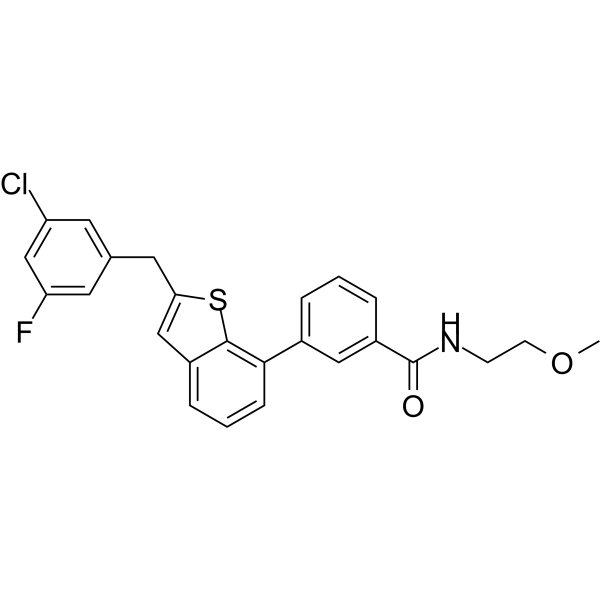
- HY-15008
-
|
|
Oxytocin Receptor
|
Endocrinology
|
|
L-368,899 is an orally active and selective OT (oxytocin ) receptor antagonist, with IC50s of 8.9 and 26 nM for uterus of rat and human, respectively. L-368,899 can cross the blood-brain barrier (BBB). L-368,899 inhibits oxytocin-stimulated uterine contractions in rats and can be used in study of preterm labor .
|
-
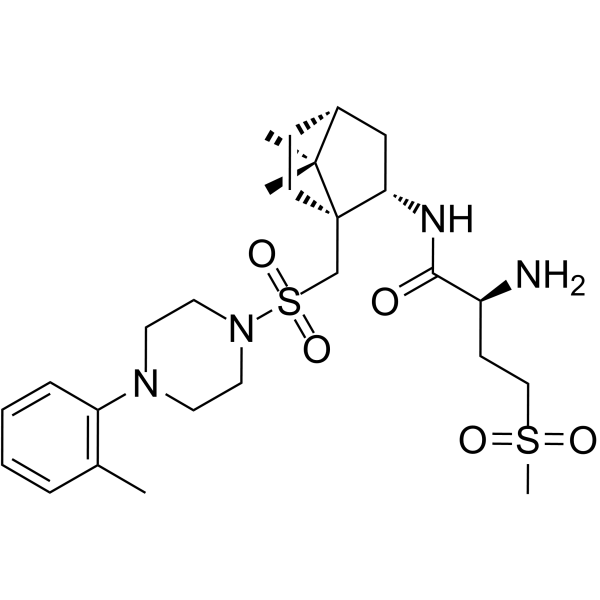
- HY-151389
-
|
|
Cholinesterase (ChE)
|
Neurological Disease
|
|
BChE-IN-14 (compound 19c) is a selective butyrylcholinesterase (BChE) inhibitor with IC50s of 0.23 and 0.011 μM for eqBChE and hBChE, respectively. BChE-IN-14 shows good blood brain barrier permeation and primary cell safety. BChE-IN-14 is able to restore cognitive impairment in vivo, it can be used for the research of Alzheimer’s disease .
|
-

- HY-149279
-
|
|
JNK
|
Neurological Disease
|
|
JNK3 inhibitor-7 is a potent, orally active and cross the blood-brain barrier JNK3 inhibitor with IC50 values of 53, 973, 1039 nM for JNK3, JNK2, JNK1, respectively. JNK3 inhibitor-7 shows significant neuroprotective effects. JNK3 inhibitor-7 has the potential for the research of Alzheimer’s disease (AD) .
|
-

- HY-149991
-
|
|
HIV
|
Infection
|
|
HIV-1 inhibitor-56 (compound 12126065) is a potent HIV-1 non-nucleoside reverse transcriptase inhibitor. HIV-1 inhibitor-56 has antiviral activity against wild-type HIV-1 in TZM cells with an EC50 value of 0.24 nM. HIV-1 inhibitor-56 penetrates the blood-brain barrier .
|
-

- HY-158148
-
|
|
c-Fms
|
Neurological Disease
Inflammation/Immunology
|
|
CSF1R-IN-23 (Compound 7dri) is a selective inhibitor for colony-stimulating factor-1 receptor (CSF1R), with IC50 of 36.1 nM. CSF1R-IN-23 serves as antineuroinflammatory agent in mouse model. CSF1R-IN-23 is blood brain barrier (BBB) permeable .
|
-
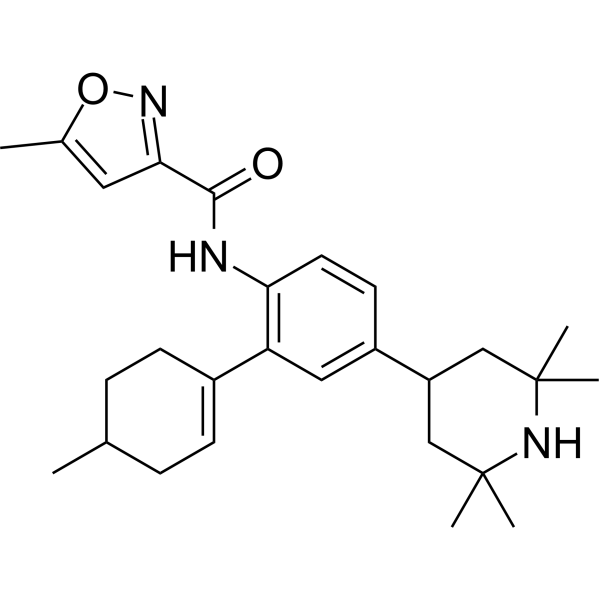
- HY-137499
-
|
|
Liposome
Endogenous Metabolite
|
Neurological Disease
|
|
NT1-O12B, an endogenous chemical and a neurotransmitter-derived lipidoid (NT-lipidoid), is an effective carrier for enhanced brain delivery of several blood-brain barrier (BBB)-impermeable cargos. Doping NT1-O12B into BBB-impermeable lipid nanoparticles (LNPs) gives the LNPs the ability to cross the BBB. NT-lipidoids formulation not only facilitate cargo crossing of the BBB, but also delivery of the cargo into neuronal cells for functional gene silencing or gene recombination .
|
-
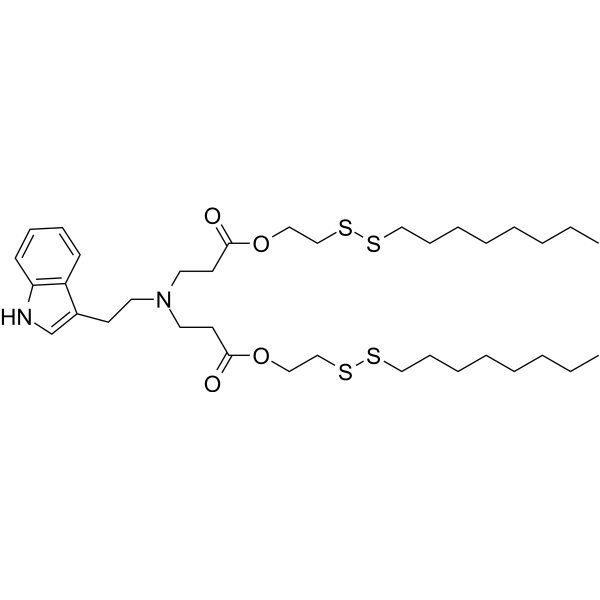
- HY-131688
-
|
|
Others
|
Inflammation/Immunology
|
|
2-Chlorohexadecanoic acid, an inflammatory lipid mediator, interferes with protein palmitoylation,induces ER-stress markers, reduced the ER ATP content, and activates transcription and secretion of IL-6 as well as IL-8.2-Chlorohexadecanoic acid disrupts the mitochondrial membrane potential and induces procaspase-3 and PARP cleavage.2-Chlorohexadecanoic acid can across blood-brain barrier (BBB) and compromises ER- and mitochondrial functions in the human brain endothelial cell line hCMEC/D3 .
|
-

- HY-128463S
-
|
|
COX
Reactive Oxygen Species
|
|
|
N-tert-Butyl-α-phenylnitrone-d14 is the deuterium labeled N-tert-Butyl-α-phenylnitrone[1]. N-tert-Butyl-α-phenylnitrone is a nitrone-based free radical scavenger that forms nitroxide spin adducts. N-tert-Butyl-α-phenylnitrone inhibits COX2 catalytic activity. N-tert-Butyl-α-phenylnitrone has potent ROS scavenging, anti-inflammatory, neuroprotective, anti-aging and anti-diabetic activities, and can penetrate the blood-brain barrier[2][3][4][5].
|
-
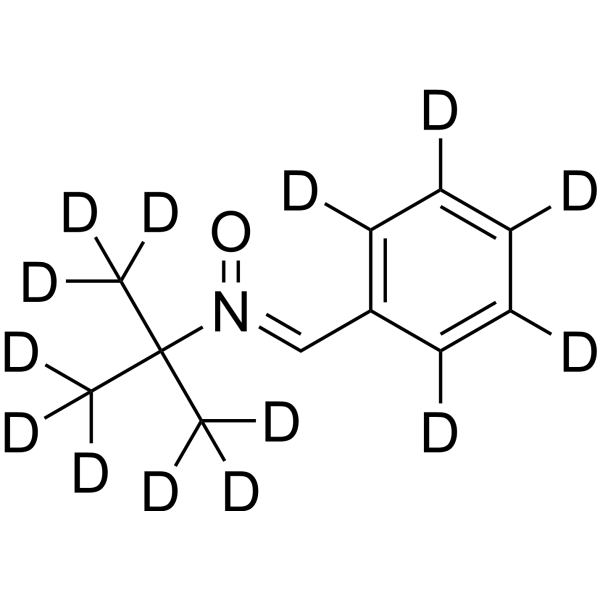
- HY-B0369A
-
|
|
iGluR
|
Neurological Disease
|
|
Orphenadrine citrate is an orally active and non-competitive NMDA receptor antagonist (crosses the blood-brain barrier) with a Ki of 6.0 μM. Orphenadrine citrate relieves stiffness, pain and discomfort due to muscle strains, sprains or other injuries. Orphenadrine citrate is also used to relieve tremors associated with parkinson's disease. Orphenadrine citrate has good neuroprotective properties, can be used in studies of neurodegenerative diseases .
|
-
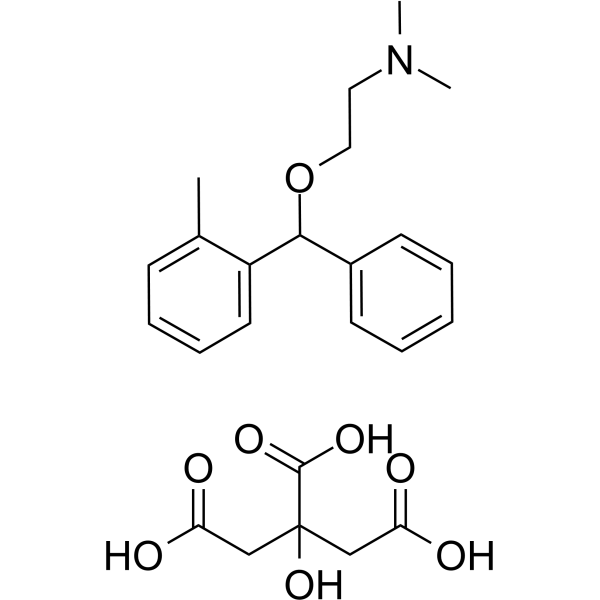
- HY-13821
-
|
BU-4061T
|
Proteasome
Apoptosis
|
Inflammation/Immunology
Cancer
|
|
Epoxomicin (BU-4061T) is an epoxyketone-containing natural product and a potent, selective and irreversible proteasome inhibitor. Epoxomicin covalently binds to the LMP7, X, MECL1, and Z catalytic subunits of the proteasome and potently inhibits primarily the chymotrypsin-like activity. Epoxomicin can cross the blood-brain barrier. Epoxomicin has strongly antitumor and anti-inflammatory activity .
|
-

- HY-107384
-
|
EMD-61753
|
Opioid Receptor
|
Neurological Disease
Metabolic Disease
Inflammation/Immunology
|
|
Asimadoline (EMD-61753) is an orally active, selective and peripherally active κ-opioid agonist with IC50s of 5.6 nM (guinea pig) and 1.2 nM (human recombinant). Asimadoline has low permeability across the blood brain barrier and has peripheral anti-inflammatory actions. Asimadoline ameliorates allodynia in diabetic rats and has the potential for irritable bowel syndrome (IBS) .
|
-
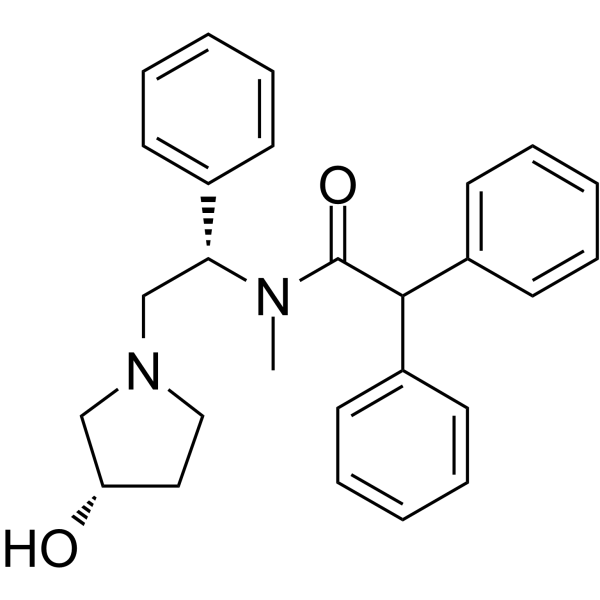
- HY-128463
-
|
|
COX
Reactive Oxygen Species
|
Neurological Disease
Metabolic Disease
Inflammation/Immunology
|
|
N-tert-Butyl-α-phenylnitrone is a nitrone-based free radical scavenger that forms nitroxide spin adducts. N-tert-Butyl-α-phenylnitrone inhibits COX2 catalytic activity. N-tert-Butyl-α-phenylnitrone has potent ROS scavenging, anti-inflammatory, neuroprotective, anti-aging and anti-diabetic activities, and can penetrate the blood-brain barrier .
|
-
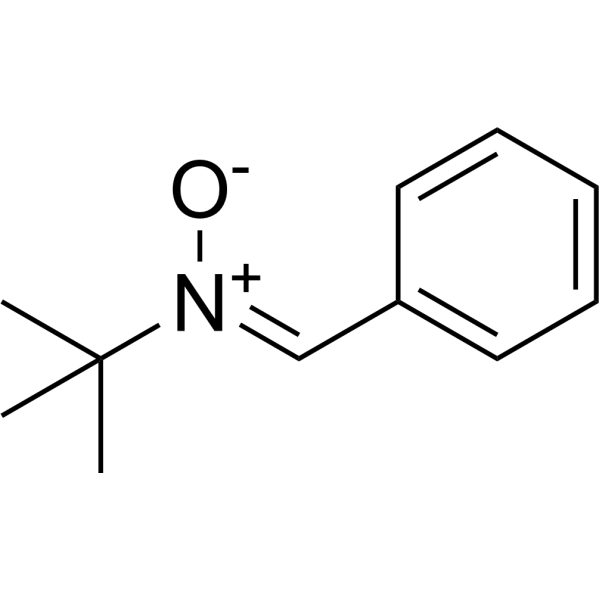
- HY-107384A
-
|
EMD-61753 hydrochloride
|
Opioid Receptor
|
Neurological Disease
Metabolic Disease
Inflammation/Immunology
|
|
Asimadoline (EMD-61753) hydrochloride is an orally active, selective and peripherally active κ-opioid agonist with IC50s of 5.6 nM (guinea pig) and 1.2 nM (human recombinant). Asimadoline hydrochloride has low permeability across the blood brain barrier and has peripheral anti-inflammatory actions. Asimadoline hydrochloride ameliorates allodynia in diabetic rats and has the potential for irritable bowel syndrome (IBS) .
|
-
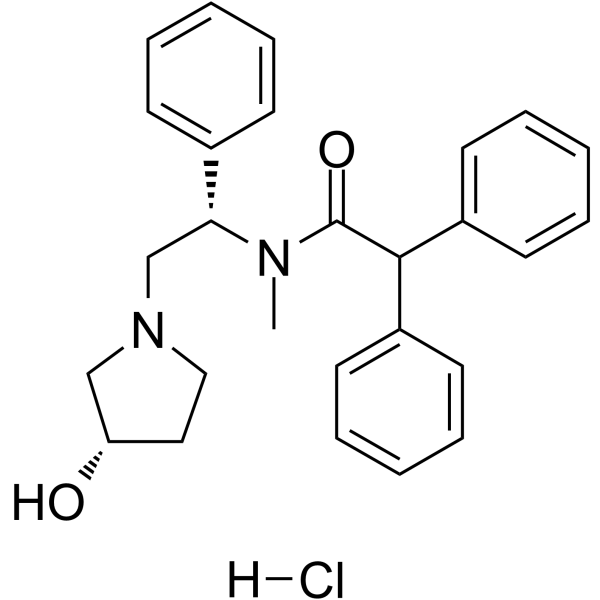
- HY-137466
-
|
|
Topoisomerase
|
Cancer
|
|
ARN-21934 is a potent, highly selective, blood-brain barrier (BBB) penetrant inhibitor for human topoisomerase II α over β. ARN-21934 inhibits DNA relaxation with an IC50 of 2 μM as compared to the anticancer agent Etoposide (IC50=120 μM). ARN-21934 exhibits a favorable in vivo pharmacokinetic profile and is a promising lead compound for anticancer research .
|
-
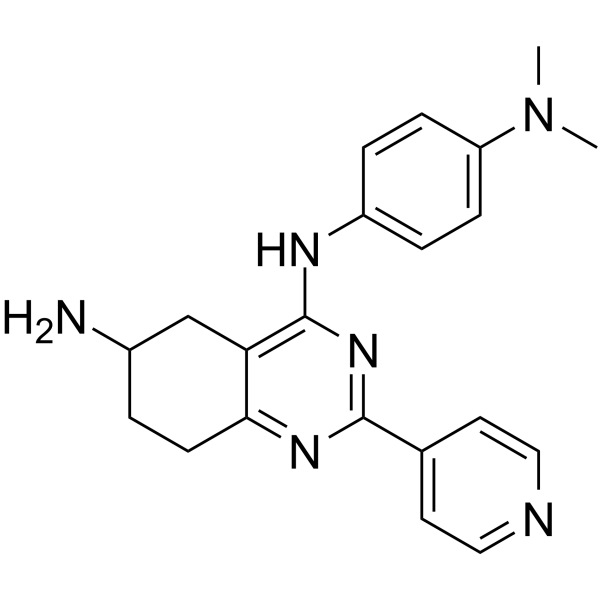
- HY-141661
-
|
|
Amyloid-β
|
Neurological Disease
|
|
Aβ/tau aggregation-IN-1 is a potent Aβ1-42 β-sheets formation and tau aggregation inhibitor. The KD values of Aβ/tau aggregation-IN-1 with Aβ1-42 and tau are 160 μM and 337 μM, respectively. Aβ/tau aggregation-IN-1 can permeate the blood-brain barrier .
|
-
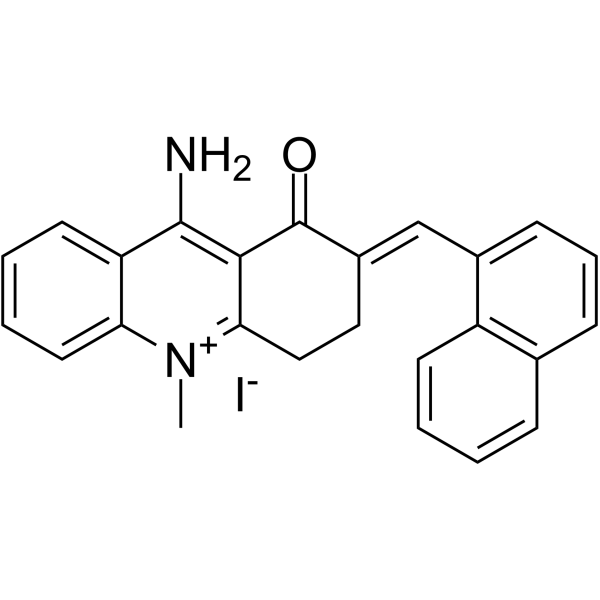
- HY-N4190
-
|
1,6-O,O-Diacetylbritannilactone; Di-O-acetylbritannilactone
|
NO Synthase
|
Neurological Disease
Inflammation/Immunology
|
|
Britannilactone diacetate (1,6-O,O-Diacetylbritannilactone; Compound 2) exhibits potential NO inhibition effect. Britannilactone diacetate exhibits activity against NO production induced by LPS in BV-2 microglial cells with the EC50 value of 6.3 μM. Britannilactone diacetate exhibits a favorable blood-brain barriers (BBB) penetration and absorption, distribution, metabolism, excretion, and toxicity (ADMET) property .
|
-
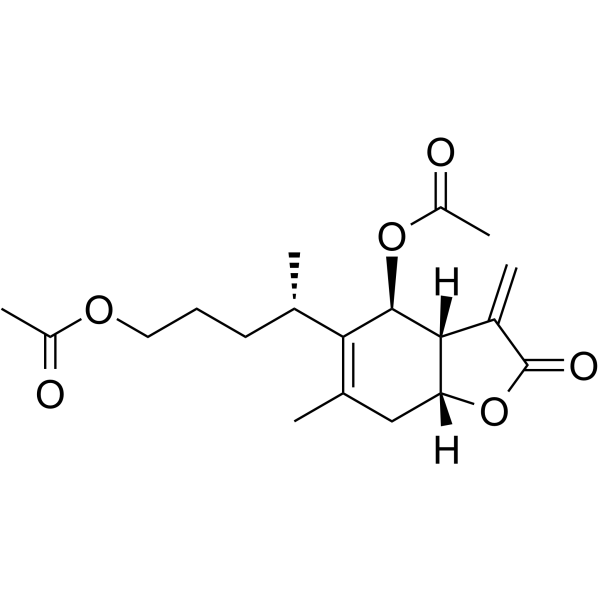
- HY-144632
-
|
|
Fungal
|
Infection
|
|
Antifungal agent 22 (compound D16) is a potential and orally active antifungal agent for CM (cryptococcal meningitis), with an IC50 of 0.5 μg/mL. Antifungal agent 22 can penetrate the blood-brain barrier and kill the C. neoformans H99 cells by destroying the integrity of fungal cell membranes. Antifungal agent 22 shows selective anti-Cryptococcus activity with good metabolic stability and low cytotoxicity .
|
-

- HY-150702
-
|
|
MAGL
|
Neurological Disease
Inflammation/Immunology
|
|
MAGLi 432 is a non-covalent, potent, highly selective, and reversible MAGL inhibitor. MAGLi 432 binds with high affinity to the MAGL active site, with IC50 values of 4.2 nM (human enzyme) and 3.1 nM (mouse enzyme). MAGLi 432 can be used in the research of chronic inflammation, blood–brain barrier dysfunction, neurological disorders such as multiple sclerosis, Alzheimer’s disease and Parkinson’s disease .
|
-

- HY-D1684
-
|
|
Amyloid-β
|
Neurological Disease
|
|
DCDAPH (Compound 2c) is a novel smart NIRF probe for detection of β-amyloid (Aβ) plaques (λex/λem=597/665 nm in PBS). DCDAPH shows high affinity for Aβ aggregates (Ki=37 nM, Kd=27 nM). DCDAPH shows good blood brain barrier permeation and can meet most of the requirements for the detection of Aβ plaques both in vitro and in vivo .
|
-
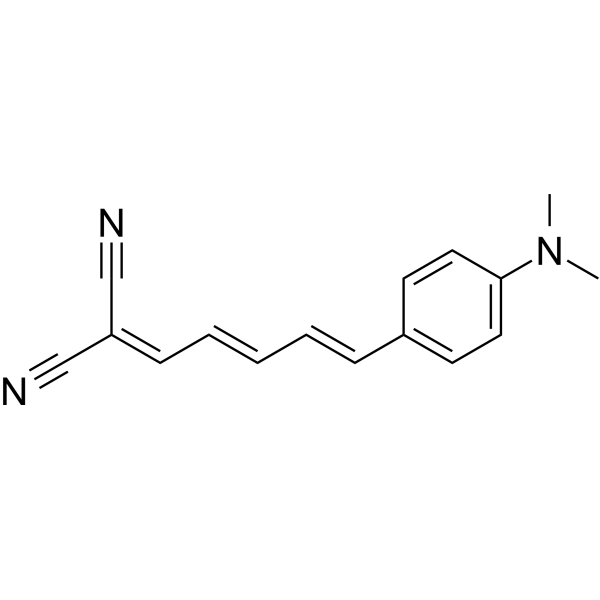
- HY-148114
-
|
|
Others
|
Cancer
|
|
MOPIPP is a novel indolebased chalcone, and vacuolin-1, is a non-lethal vacuoleinducing 2-propyl analog of MOMIPP (HY-148114). MOPIPP induces cellular vacuolization and increases autophagosomes numbers. MOPIPP also triggers methuosis, and interrupts glucose uptake and glycolytic metabolism. MOPIPP can cross the blood-brain barrier and shows efficacy in suppressing tumor progression agaisnt glioblastoma cells .
|
-

- HY-149280
-
|
|
JNK
|
Neurological Disease
|
|
JNK3 inhibitor-8 is a potent, delective, orally active and cross the blood-brain barrier JNK3 inhibitor with IC50 values of 21, 2203, >10000 nM for JNK3, JNK2, JNK1, respectively. JNK3 inhibitor-8 shows significant neuroprotective effects. JNK3 inhibitor-8 has the potential for the research of Alzheimer’s disease (AD) .
|
-
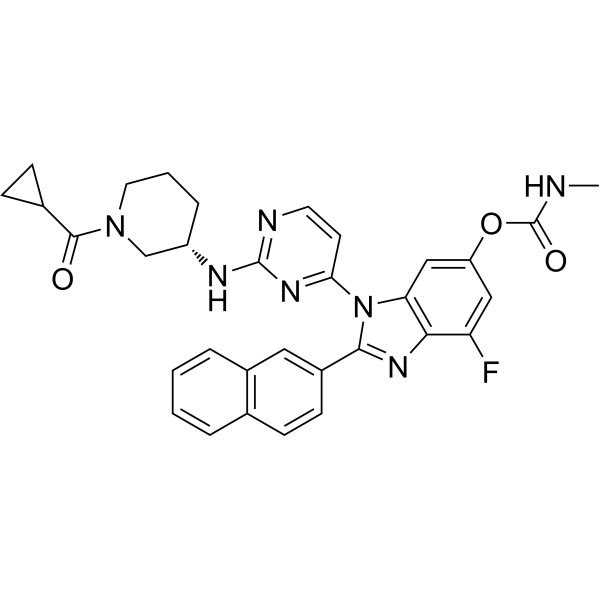
- HY-163384
-
|
|
Dopamine Transporter
|
Neurological Disease
|
|
(S)-CE-123 is a potent, selective, and novel atypical dopamine transporter (DAT) inhibitor with an EC50 of 2.76 μM in uptake inhibition assays conducted in HEK293 cells stably expressing human isoforms of DAT. (S)-CE-123, a Modafinil analogue, is able to penetrate the blood–brain barrier. (S)-CE-123 improves cognitive and motivational processes in experimental animals .
|
-
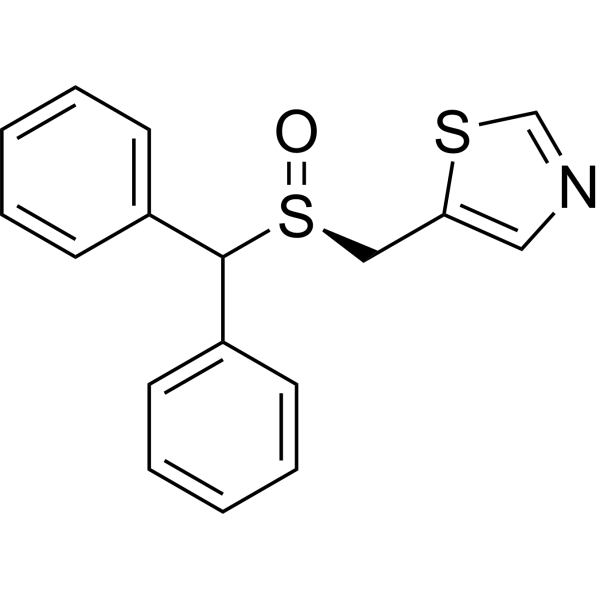
- HY-17355
-
|
|
Dopamine Receptor
|
Neurological Disease
|
|
Pramipexole dihydrochloride is a selective and blood-brain barrier (BBB) penetrant dopamine D2-type receptor agonist, with Kis of 2.2 nM, 3.9 nM, 0.5 nM and 1.3 nM for D2-type receptor, D2, D3 and D4 receptors, respectively. Pramipexole dihydrochloride can be used for the research of Parkinson's disease (PD) and restless legs syndrome (RLS) .
|
-
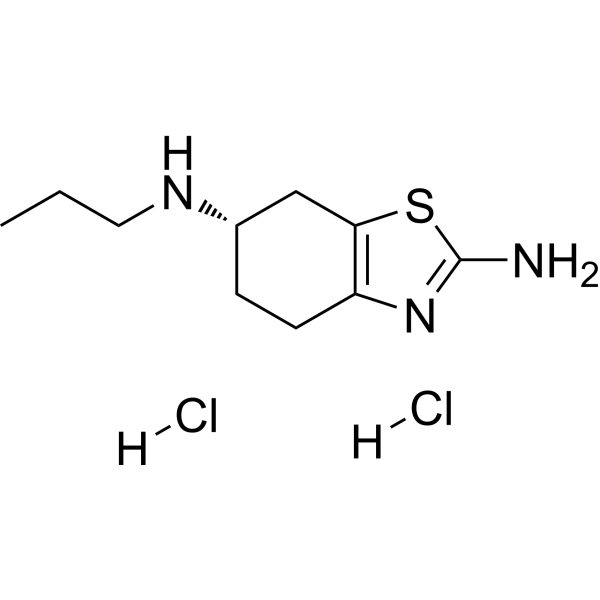
- HY-B0410
-
|
|
Dopamine Receptor
|
Neurological Disease
|
|
Pramipexole is a selective and blood-brain barrier (BBB) penetrant dopamine D2-type receptor agonist, with Kis of 2.2 nM, 3.9 nM, 0.5 nM and 1.3 nM for D2-type receptor, D2, D3 and D4 receptors, respectively. Pramipexole can be used for the research of Parkinson's disease (PD) and restless legs syndrome (RLS) .
|
-
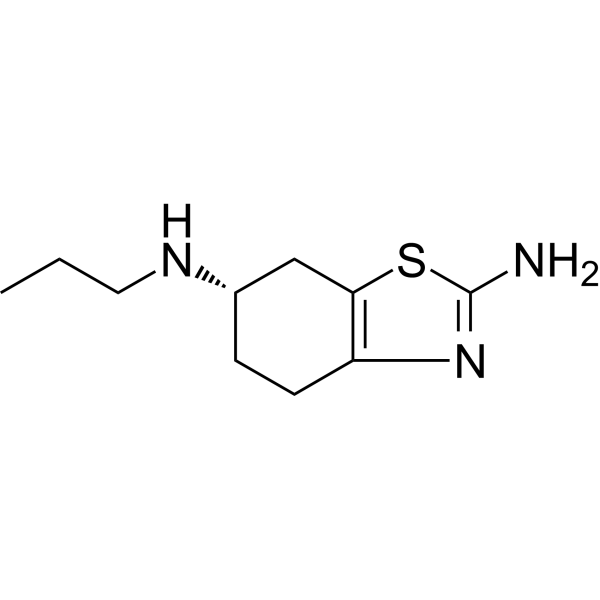
- HY-B1080
-
|
|
HIF/HIF Prolyl-Hydroxylase
Influenza Virus
|
Infection
Neurological Disease
|
|
Tilorone dihydrochloride is an orally active interferon (IFN) inducer with broad-spectrum antiviral activities. Tilorone dihydrochloride possesses robust anti-Severe fever with thrombocytopenia syndrome virus (SFTSV) activity in vitro and in vivo through stimulation of host innate immunity. Tilorone dihydrochloride can penetrate the blood-brain barrier to activate HIF in the CNS .Tilorone dihydrochloride exhibits an inhibitory activity with EC50 of 230 nM against Ebola virus (EBOV) .
|
-
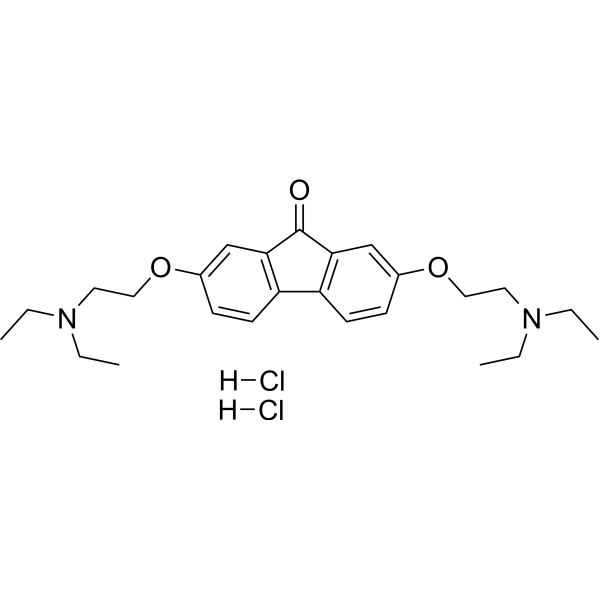
- HY-B1102
-
|
Direct Blue 53; T-1824; C.I. 23860
|
EAAT
iGluR
|
Neurological Disease
|
|
Evans Blue (Direct Blue 53) is a potent inhibitor of L-glutamate uptake via the membrane bound excitatory amino acid transporter (EAAT). Evans Blue is a L-glutamate and kainate receptor-mediated currents inhibitor. Evans Blue has a strong affinity towards serum albumin, making it a high molecular weight protein tracer. Evans Blue is also used to study BBB (blood-brain barrier) permeability .
|
-

- HY-17364S
-
|
|
DNA Alkylator/Crosslinker
Autophagy
Apoptosis
|
Cancer
|
|
Temozolomide-d3 is the deuterium labeled Temozolomide. Temozolomide (NSC 362856) is an oral active DNA alkylating agent that crosses the blood-brain barrier. Temozolomide is also a proautophagic and proapoptotic agent. Temozolomide is effective against tumor cells that are characterized by low levels of O6-alkylguanine DNA alkyltransferase (OGAT) and a functional mismatch repair system. Temozolomide has antitumor and antiangiogenic effects[1][2].
|
-

- HY-101478
-
|
|
mGluR
Apoptosis
|
Neurological Disease
Cancer
|
|
Fenobam is a selective and orally active mGluR5 antagonist (IC50=84 nM) that can penetrate the blood-brain barrier. Fenobam shows the Kd values of 54 nM and 31 nM on rat and human recombinant mGlu5 receptors, respectively. Fenobam has anxiolytic activity, inhibits self-administration behavior in mice, and induces apoptosis in cancer cells. Fenobam can be used for research on neurological diseases, cancer and drug addiction .
|
-

- HY-19918A
-
|
|
NF-κB
Amyloid-β
nAChR
|
Neurological Disease
Inflammation/Immunology
|
|
Anatabine dicitrate is a tobacco alkaloid that can cross the blood-brain barrier. Anatabine dicitrate is a potent α4β2 nAChR agonist. Anatabine dicitrate inhibits NF-κB activation lower amyloid-β (Aβ) production by preventing the β-cleavage of amyloid precursor protein (APP). Anatabine dicitrate has anti-inflammatory effects and has the potential for neurodegenerative disorders treatment .
|
-
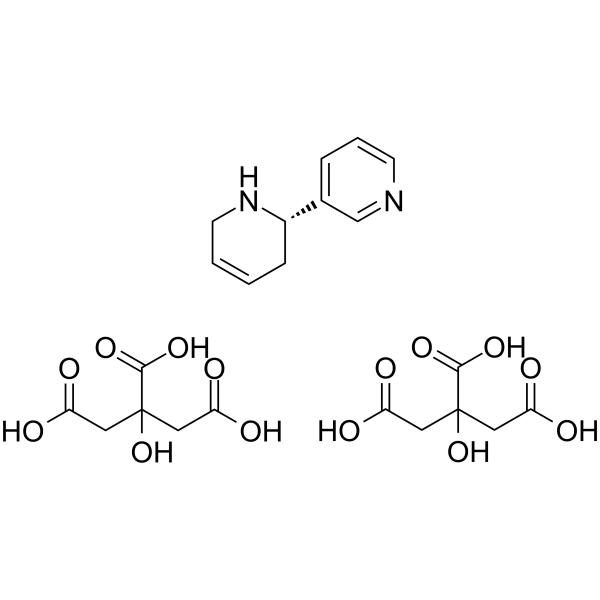
- HY-115681
-
|
6-Prenylnaringenin; (±)-6-Prenylnaringenin
|
Calcium Channel
|
Neurological Disease
|
|
(2R/S)-6-PNG (6-Prenylnaringenin) is a potent and reversible Cav3.2 T-type Ca 2+ channels (T-channels) blocker. (2R/S)-6-PNG can penetrate the blood-brain barrier (BBB). (2R/S)-6-PNG suppresses neuropathic and visceral pain in mice .
|
-
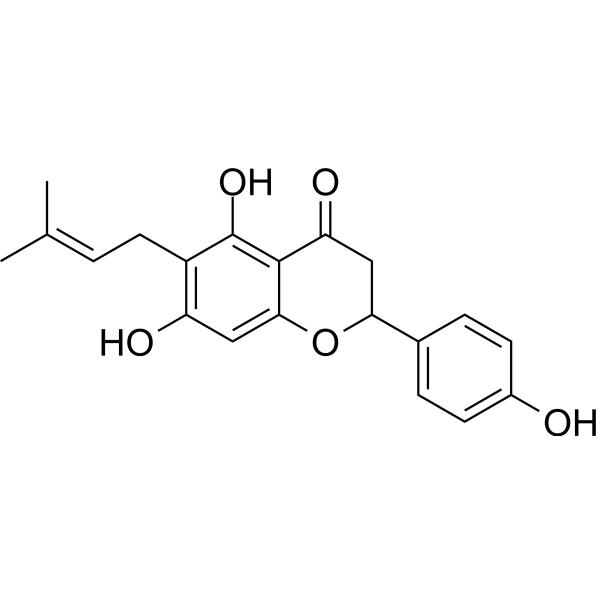
- HY-B0410A
-
|
|
|
|
|
Pramipexole dihydrochloride hydrate is a selective and blood-brain barrier (BBB) penetrant dopamine D2-type receptor agonist, with Kis of 2.2 nM, 3.9 nM, 0.5 nM and 1.3 nM for D2-type receptor, D2, D3 and D4 receptors, respectively. Pramipexole dihydrochloride hydrate can be used for the research of Parkinson's disease (PD) and restless legs syndrome (RLS) .
|
-
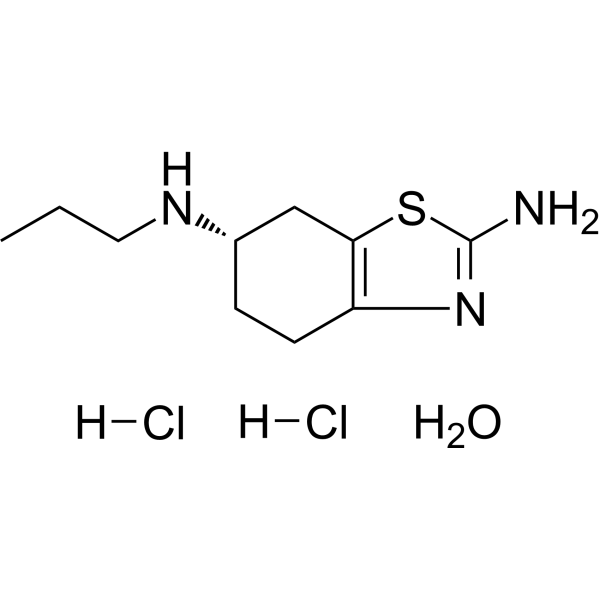
- HY-105066
-
|
|
Microtubule/Tubulin
Amyloid-β
|
Neurological Disease
|
|
Davunetide is an eight amino acid snippet derived from activity-dependent neuroprotective protein (ADNP), a neurotrophic factor that exists in the mammalian CNS. Davunetide possesses neuroprotective, neurotrophic and cognitive protective roperties. Davunetide, a microtubule-stabilizing peptide, interacts with and stabilises neuron-specific βIII-tubulin in vitro. Davunetide penetrates the blood-brain barrier and is non-toxic. Davunetide inhibits Aβ aggregation and Aβ-induced neurotoxicity .
|
-
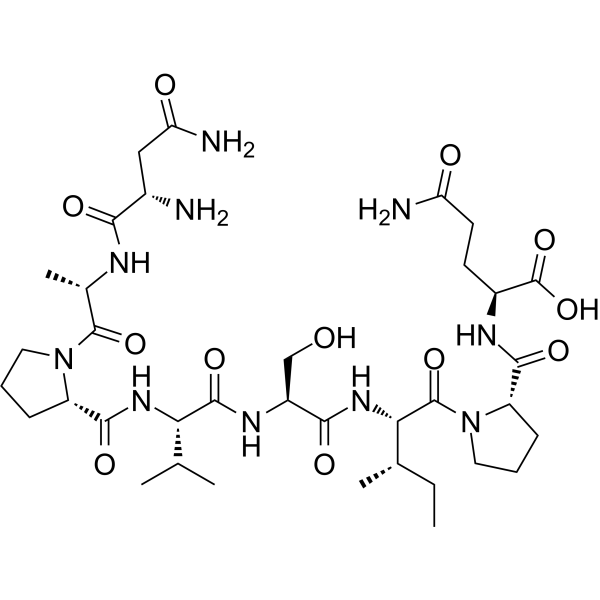
- HY-151886
-
|
|
PROTACs
Indoleamine 2,3-Dioxygenase (IDO)
|
Neurological Disease
Cancer
|
|
NU223612 is a potent PROTAC (PROTACs) that degrades indoleamine 2,3-dioxygenase 1 (IDO1) (Indoleamine 2,3-Dioxygenase (IDO)) with a Kd of 640 nM. NU223612 potently degrades the IDO1 protein through CRBN-mediated proteasomal degradation. NU223612 is bound to CRBN with an affinity of 290 nM. NU223612 can cross the blood-brain barrier (BBB) .
|
-

- HY-115340
-
|
|
Biochemical Assay Reagents
|
Others
|
|
Decanoic acid sodium, also known as Decanoic acid sodium, is a salt of the fatty acid capric acid. It is easily soluble in water and has a slightly soapy smell. Decanoic acid sodium acts as a penetration enhancer, which means it increases the absorption and bioavailability of drugs across biological membranes, including the intestinal epithelium and the blood-brain barrier. This property makes it useful in pharmaceutical formulations to improve drug delivery and effectiveness. Furthermore, Decanoic acid sodium has potential applications in food preservatives and cosmetics due to its antibacterial properties.
|
-

- HY-A0067S
-
|
|
RAR/RXR
Apoptosis
Autophagy
|
Neurological Disease
|
|
Oxybenzone-d5 is the deuterium labeled Oxybenzone[1]. Oxybenzone (Benzophenone 3) is a commonly used UV filter in sun tans and skin protectants. Oxybenzone act as endocrine disrupting chemicals (EDCs) and can pass through the placental and blood-brain barriers. Benzophenone-3 impairs autophagy, alters epigenetic status, and disrupts retinoid X receptor signaling in apoptotic neuronal cells[2][3][4].
|
-

- HY-155532
-
|
|
Biochemical Assay Reagents
|
Cancer
|
|
10m/ZS44 is a blood-brain barrier-permeable Glioblastoma (GBM) inhibitor. 10m/ZS44 significantly inhibits GBM tumor growth in a mouse xenograft model. 10m/ZS44 also activates the SIRT1/p53-mediated apoptosis pathway, thereby inhibiting the proliferation of U251 cells .
|
-

- HY-107758
-
|
|
Prolyl Endopeptidase (PREP)
|
Cancer
|
|
Y-29794 oxalate is a selective, orally active and blood-brain barrier permeable non-peptide prolyl endopeptidase inhibitor. Y-29794 oxalate blocks the IRS1-AKT-mTORC1 pathway and inhibits tumor growth. Y-29794 oxalate is also effective in inhibiting the progression of Aβ-like deposition in the hippocampus of aging-accelerated mice (SAM) .
|
-
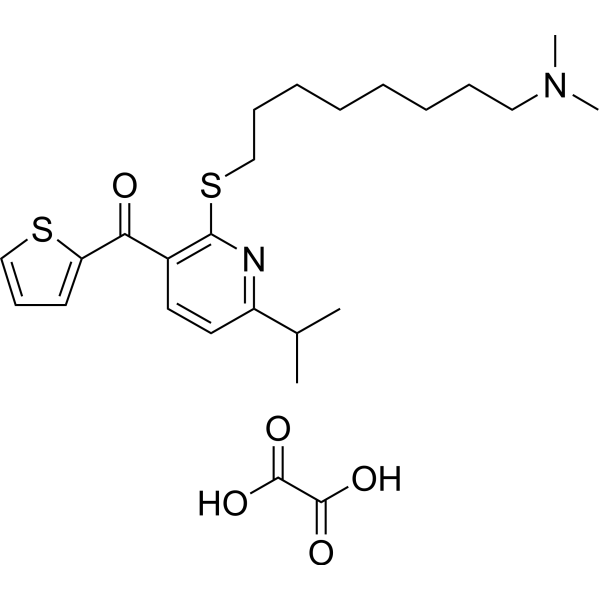
- HY-100672B
-
|
|
Others
|
Cardiovascular Disease
Metabolic Disease
|
|
(2R)-SR59230A is the isomer of SR59230A (HY-100672), and can be used as an experimental control. SR59230A is a potent, selective, and blood-brain barrier penetrating β3-adrenergic receptor antagonist with IC50s of 40, 408, and 648 nM for β3, β1, and β2 receptors, respectively .
|
-
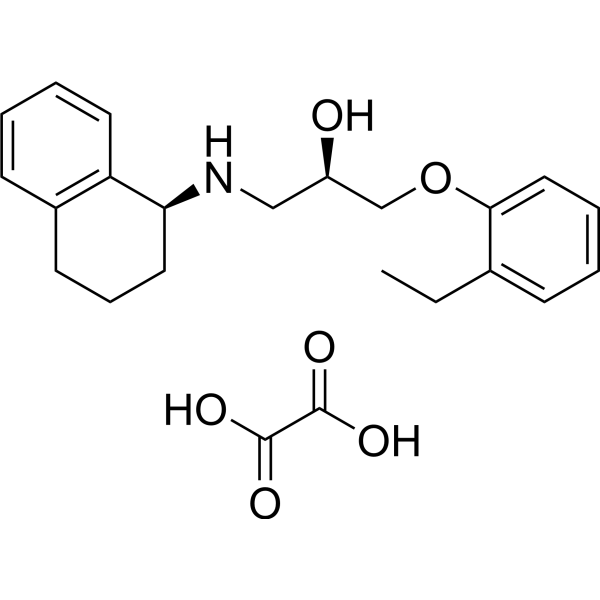
- HY-157382
-
|
|
Cholinesterase (ChE)
Amyloid-β
MMP
|
Neurological Disease
|
|
AChE-IN-51 (compound 8C) is an orally active, non-competitive inhibitor of AChE and BChE (IC50: 84 nM, 97 nM). It also inhibits MMP-2 and amyloid Aβ1-42 aggregates (IC50: 724 nM, 302 nM). AChE-IN-51 has low cytotoxicity and in silico predicted blood-brain barrier permeability. Can be used for research on diseases such as Alzheimer's disease (AD) .
|
-

- HY-101478A
-
|
|
mGluR
Apoptosis
|
Neurological Disease
Cancer
|
|
Fenobam hydrate is a selective and orally active mGluR5 antagonist (IC50=84 nM) that can penetrate the blood-brain barrier. Fenobam hydrate shows the Kd values of 54 nM and 31 nM on rat and human recombinant mGlu5 receptors, respectively. Fenobam hydrate has anxiolytic activity, inhibits self-administration behavior in rat, and induces apoptosis in cancer cells. Fenobam hydrate can be used for research on neurological diseases, cancer and drug addiction .
|
-
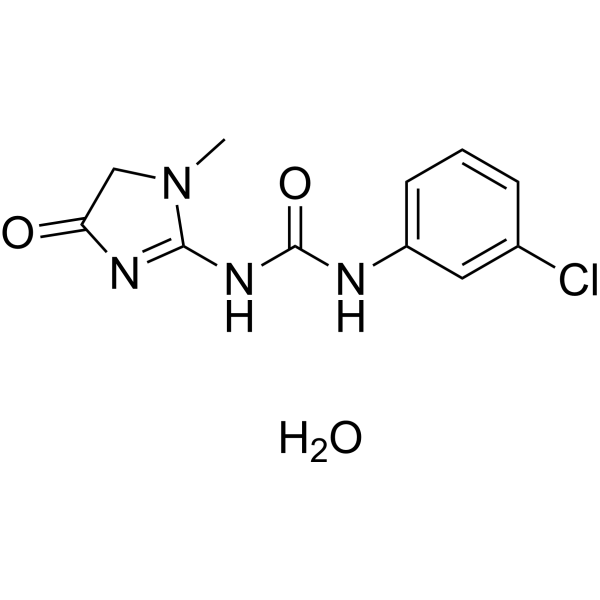
- HY-16969
-
Dihexa
5 Publications Verification
PNB-0408; N-hexanoic-Try-Ile-(6)-amino hexanoic amide; Hexanoyl-Tyr-Ile-Ahx-NH2
|
|
|
|
Dihexa, an oligopeptide drug, is an orally active and blood-brain barrier-permeable angiotensin IV analog. Dihexa binds to hepatocyte growth factor (HGF) with high affinity (Kd=65 pM) and potentiates its activity at its receptor, c-Met. Dihexa exhibits excellent antidementia activity and improves cognitive function in animal models. Dihexa may have therapeutic potential as a treatment Alzheimer’s disease .
|
-

- HY-A0067R
-
|
Benzophenone 3 (Standard)
|
RAR/RXR
Autophagy
Apoptosis
|
Neurological Disease
|
|
Oxybenzone (Standard) is the analytical standard of Oxybenzone. This product is intended for research and analytical applications. Oxybenzone (Benzophenone 3) is a commonly used UV filter in sun tans and skin protectants. Oxybenzone act as endocrine disrupting chemicals (EDCs) and can pass through the placental and blood-brain barriers. Benzophenone-3 impairs autophagy, alters epigenetic status, and disrupts retinoid X receptor signaling in apoptotic neuronal cells .
|
-

- HY-B0007R
-
|
|
GABA Receptor
|
Neurological Disease
|
|
Baclofen (Standard) is the analytical standard of Baclofen. This product is intended for research and analytical applications. Baclofen, a lipophilic derivative of γ-aminobutyric acid (GABA), is an orally active, selective metabotropic GABAB receptor (GABABR) agonist. Baclofen mimics the action of GABA and produces slow presynaptic inhibition through the GABAB receptor. Baclofen has high blood brain barrier penetrance. Baclofen has the potential for muscle spasticity research .
|
-

- HY-13240
-
|
|
Beta-secretase
|
Neurological Disease
|
|
LY2886721 is a potent, selective and orally active beta-site amyloid precursor protein cleaving enzyme 1 (BACE1) inhibitor with an IC50 of 20.3 nM for recombinant human BACE1. LY2886721 is selectivity against cathepsin D, pepsin, and renin, but lacking selectivity against BACE2 (IC50 of 10.2 nM). LY2886721 can across blood-brain barrier and has the potential for Alzheimer's disease treatment .
|
-

- HY-11017
-
|
ENA 713; SDZ-ENA 713
|
Cholinesterase (ChE)
|
Neurological Disease
|
|
Rivastigmine tartrate (ENA 713; SDZ-ENA 713) is an orally active and potent cholinesterase (ChE) inhibitor and inhibits butyrylcholinesterase (BChE) and acetylcholinesteras (AChE) with IC50s of 0.037 μM, 4.15 μM, respectively. Rivastigmine tartrate can pass the blood brain barrier (BBB). Rivastigmine tartrate is a parasympathomimetic or cholinergic agent used for the research of mild to moderate dementia of the Alzheimer's type and dementia due to Parkinson's disease .
|
-
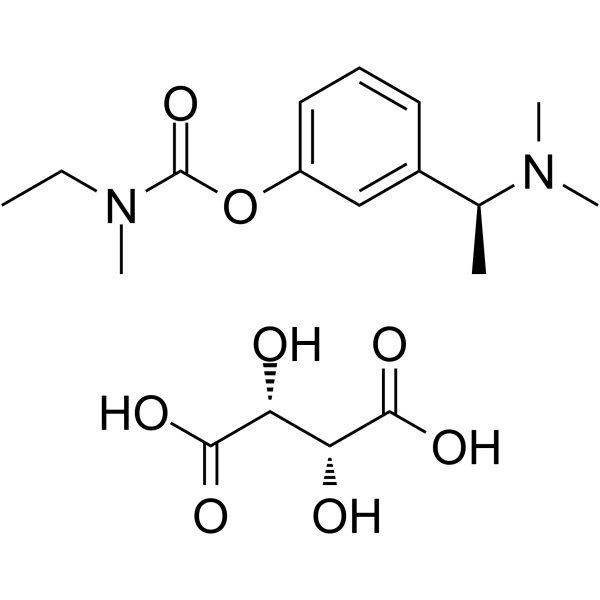
- HY-101855
-
|
Anle138b
|
Amyloid-β
|
Neurological Disease
|
|
Emrusolmin (Anle138b), an oligomeric aggregation inhibitor, blocks the formation of pathological aggregates of prion protein (PrPSc) and of α-synuclein (α-syn). Emrusolmin strongly inhibits oligomer accumulation, neuronal degeneration, and disease progression in vivo. Emrusolmin has low toxicity and an excellent oral bioavailability and blood-brain-barrier penetration. Emrusolmin blocks Aβ channels and rescues disease phenotypes in a mouse model for amyloid pathology .
|
-

- HY-16785
-
|
INXN-1001; RG-115932
|
Interleukin Related
|
Inflammation/Immunology
Cancer
|
|
Veledimex (INXN-1001), a synthetic analog of the insect molting hormone ecdysone, is an orally active activator ligand for a proprietary gene therapy promoter system. Veledimex can be used to activate certain genes using the ecdysone receptor (EcR)-based inducible gene regulation system, the RheoSwitch Therapeutic System (RTS). Veledimex can cross blood-brain barrier (BBB) in both orthotopic GL-261 mice and cynomolgus monkeys .
|
-
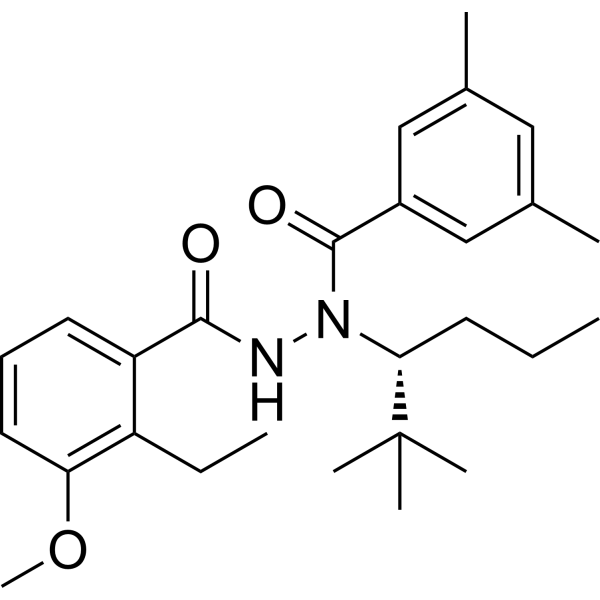
- HY-125469
-
|
PF-04895162
|
Potassium Channel
|
Neurological Disease
|
|
ICA-105665 (PF-04895162) is a potent and orally active neuronal Kv7.2/7.3 and Kv7.3/7.5 potassium channels opener. ICA-105665 inhibits liver mitochondrial function and bile salt export protein (BSEP) transport (IC50 of 311 μM). ICA-105665 can penetrate the blood-brain barrier and has antiseizure effects .
|
-
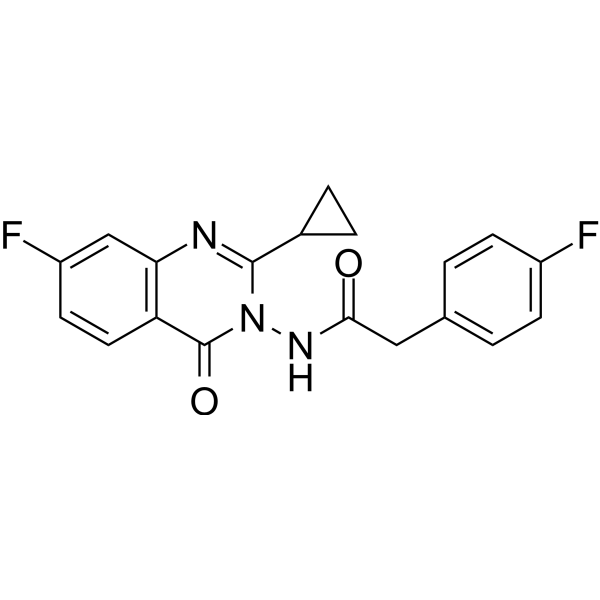
- HY-14327
-
|
|
Dopamine Receptor
|
Neurological Disease
|
|
FAUC 213 is an orally active and highly selective dopamine D4 receptor complete antagonist with a Ki of 2.2 nM for hD4.4. FAUC 213 has less activity on D2 and D3 receptors (Kis of 3.4 μM, 5.3 μM for hD2, hD3, respectively). FAUC 213 can cross the blood-brain barrier (BBB). FAUC 213 exhibits atypical antipsychotic characteristic .
|
-
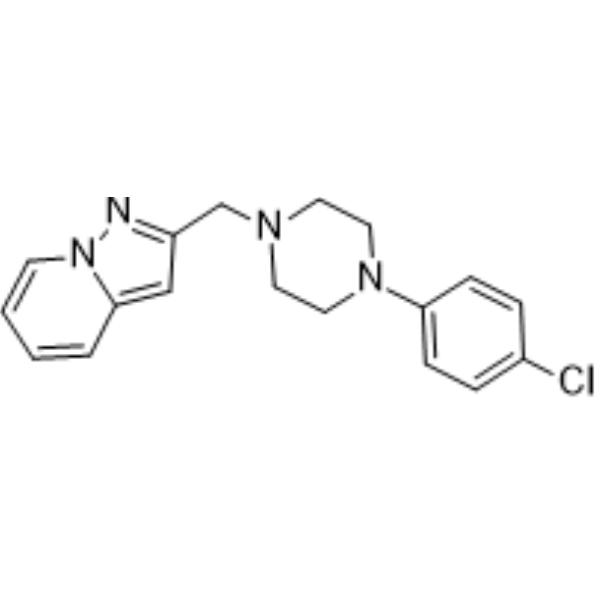
- HY-103441
-
|
|
EGFR
|
Cancer
|
|
JNJ28871063 hydrochloride is an orally active, highly selective and ATP competitive pan-ErbB kinase inhibitor with IC50 values of 22 nM, 38 nM, and 21 nM for ErbB1, ErbB2, and ErbB4, respectively. JNJ28871063 hydrochloride inhibits phosphorylation of functionally important tyrosine residues in both EGFR and ErbB2. JNJ28871063 hydrochloride crosses the blood-brain barrier and has antitumor activity in human tumor xenograft models that overexpress EGFR and ErbB2 .
|
-
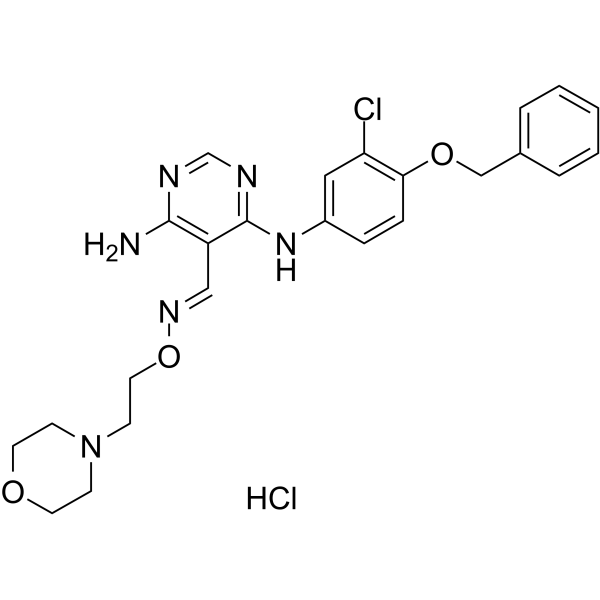
- HY-144825
-
|
|
Apoptosis
Reactive Oxygen Species
|
Cancer
|
|
Chol-CTPP is a ligand with dual targeting effect on blood-brain barrier (BBB) and glioma cells. Lip-CTPP can be gained by Chol-CTPP and another mitochondria targeting ligand (Chol-TPP). Lip-CTPP is a promising potential carrier to exert the anti-glioma effect of doxorubicin (DOX) and lonidamine (LND) collaboratively. Lip-CTPP elevates the inhibition rate of tumor cell proliferation, migration and invasion, promote apoptosis and necrosis, and interfere with mitochondrial function .
|
-

- HY-144607
-
|
|
Opioid Receptor
|
Neurological Disease
|
|
Mu opioid receptor antagonist 2 (compound 25) is a potent, selective and blood-brain barrier (BBB) penetrant μ opioid receptor (MOR) antagonist with a Ki of 0.37 nM and an EC50 of 0.44 nM. Mu opioid receptor antagonist 2 has remarkable CNS antagonism against morphine, and precipitated fewer withdrawal symptoms than Naloxone. Mu opioid receptor antagonist 2 can be used for researching opioid use disorders (OUD) .
|
-
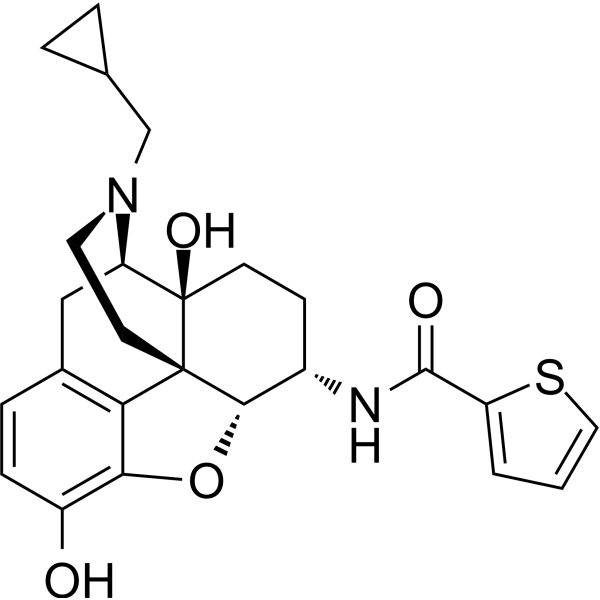
- HY-100604
-
|
|
γ-secretase
Amyloid-β
|
Neurological Disease
|
|
JNJ-40418677 is an orally active modulator of γ-secretase, can cross the blood-brain barrier. JNJ-40418677 inhibits Aβ42 and NS2B-NS3 protease, with IC50s of 200 nM and 3.9 μM, respectively. JNJ-40418677 displays good biological tolerance, can be use for Alzheimer’s disease research .
|
-
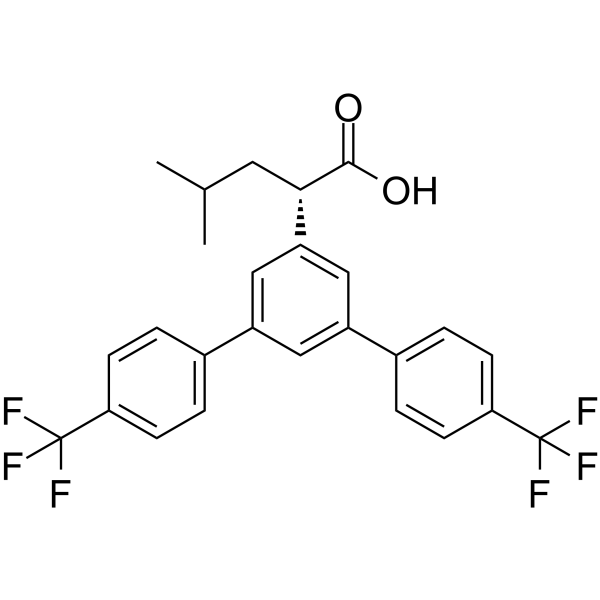
- HY-17366
-
|
|
mAChR
Dopamine Receptor
Drug Metabolite
|
Neurological Disease
|
|
Clozapine N-oxide is a major metabolite of Clozapine and a human muscarinic designer receptors (DREADDs) agonist. Clozapine N-oxide activates the DREADD receptor hM3Dq and hM4Di. Clozapine N-oxide can cross the blood-brain barrier . Clozapine is a potent dopamine antagonist and also a potent and selective muscarinic M4 receptor (EC50=11 nM) agonist .
|
-
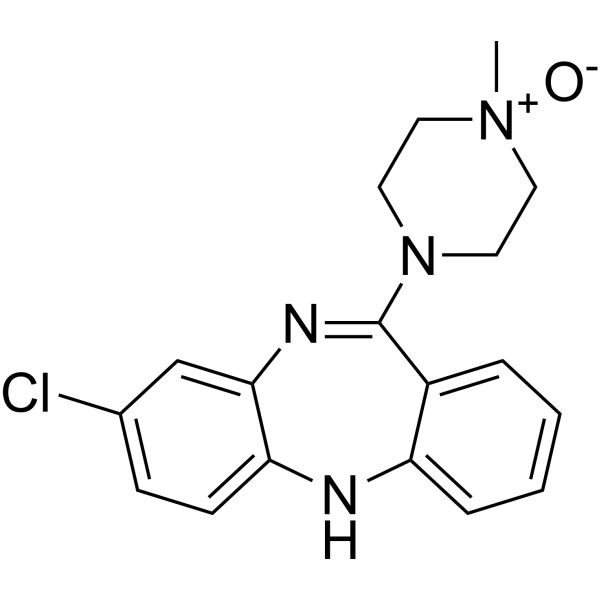
- HY-17366A
-
|
|
mAChR
Dopamine Receptor
Drug Metabolite
|
Neurological Disease
|
|
Clozapine N-oxide dihydrochloride is a major metabolite of Clozapine and a human muscarinic designer receptors (DREADDs) agonist. Clozapine N-oxide dihydrochloride activates the DREADD receptor hM3Dq and hM4Di. Clozapine N-oxide dihydrochloride can cross the blood-brain barrier . Clozapine is a potent dopamine antagonist and also a potent and selective muscarinic M4 receptor (EC50=11 nM) agonist .
|
-
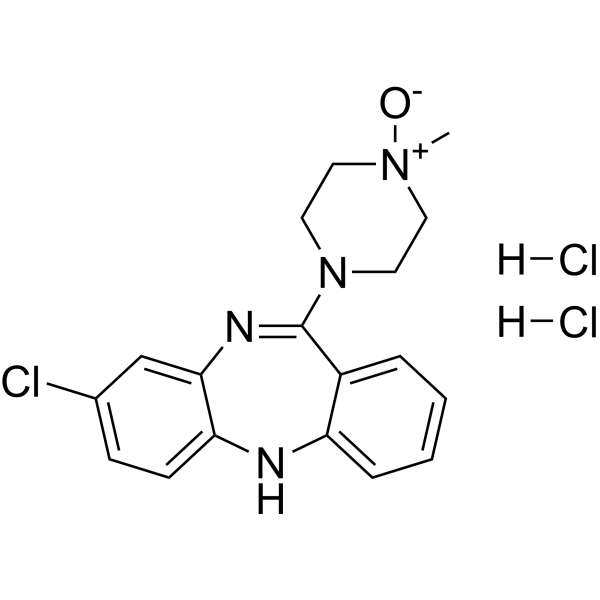
- HY-152142
-
|
|
JNK
|
Neurological Disease
|
|
DN-1289 is an orally active and selective inhibitor of dual leucine zipper kinase (DLK; IC50=17 nM) and leucine zipper-bearing kinase (LZK; IC50=40 nM). DN-1289 results significant attenuation of optic nerve crush (ONC)-induced p-c-Jun in mice model. DN-1289 has excellent in vivo plasma half-life and blood-brain barrier permeability .
|
-
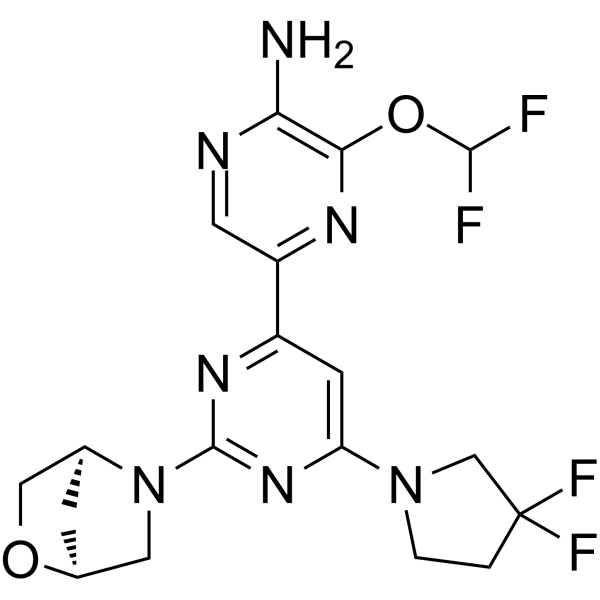
- HY-13240A
-
|
|
Beta-secretase
|
Neurological Disease
|
|
LY2886721 hydrochloride is a potent, selective and orally active beta-site amyloid precursor protein cleaving enzyme 1 (BACE1) inhibitor with an IC50 of 20.3 nM for recombinant human BACE1. LY2886721 hydrochloride is selectivity against cathepsin D, pepsin, and renin, but lacking selectivity against BACE2 (IC50 of 10.2 nM). LY2886721 hydrochloride can across blood-brain barrier and has the potential for Alzheimer's disease treatment .
|
-
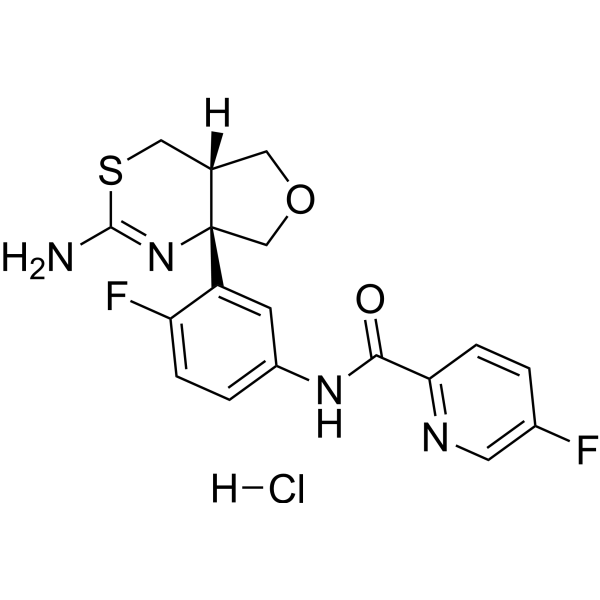
- HY-149556
-
|
|
EGFR
PI3K
|
Cancer
|
|
MTX-241F is a selective small molecule inhibitor targeting EGFR and PI3 kinase family members. MTX-241F is able to penetrate the blood-brain barrier and control tumor growth over the long term. MTX-241F exhibits radiosensitizing activity in patient-derived DIPG neurospheres and may be used in the study of diffuse intrinsic pontine glioma (DIPG) .
|
-
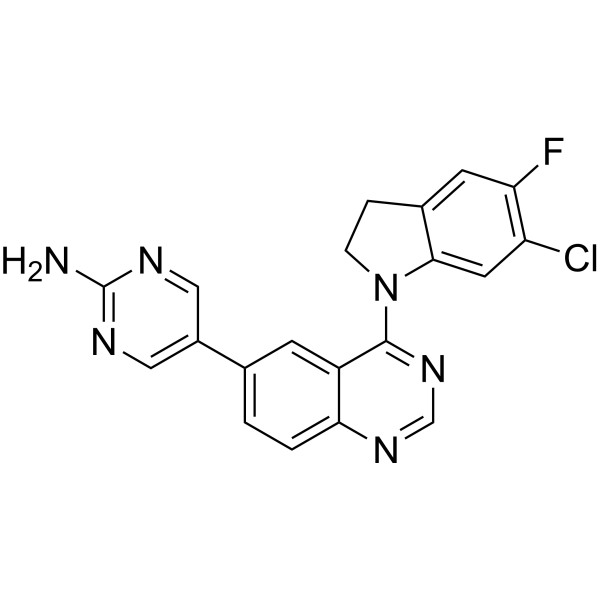
- HY-103309S
-
|
|
Calcium Channel
|
Neurological Disease
|
|
ML218-d9 is the deuterium labeled ML218. ML218 is a potent, selective and orally active T-type Ca2+ channels (Cav3.1, Cav3.2, Cav3.3) inhibitor with IC50s of 310 nM and 270 nM for Cav3.2 and Cav3.3, respectively. ML218 inhibits the burst activity in subthalamic nucleus (STN) neurons. ML218 has no significant inhibition of L- or N-type calcium channels, KATP or hERG potassium channels. ML218 can penetrate the blood-brain barrier[1].
|
-
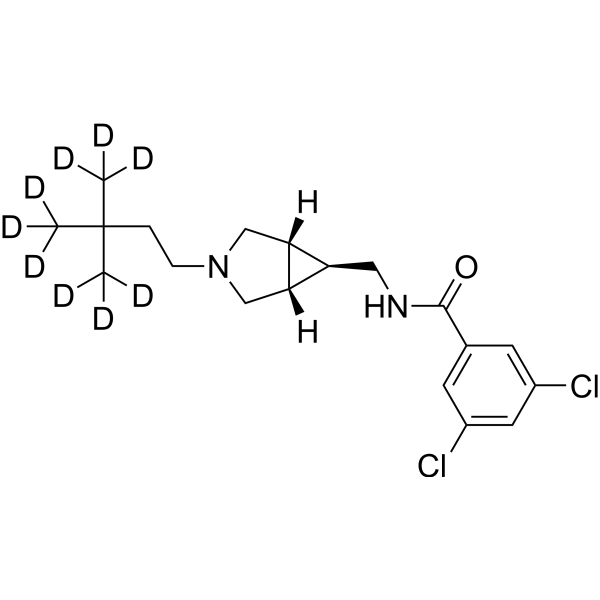
- HY-116673
-
|
|
Histone Acetyltransferase
|
Neurological Disease
|
|
TTK21 is an activator of the histone acetyltransferases CBP/p300. TTK21 passes the blood–brain barrier, induces no toxicity, and reaches different parts of the brain when conjugated to glucose-based carbon nanosphere (CSP). TTK21 has beneficial implications for the brain functions of neurogenesis and long-term memory .CSP-TTK21 can ameliorate Aβ-impaired long-term potentiation (LTP). CSP-TTK21 may enhance the transcription of genes that promote synaptic health and cognitive function . CSP-TTK21 is orally effective and leads to improvements in motor functions, histone acetylation dynamics in a spinal injury rat model .
|
-
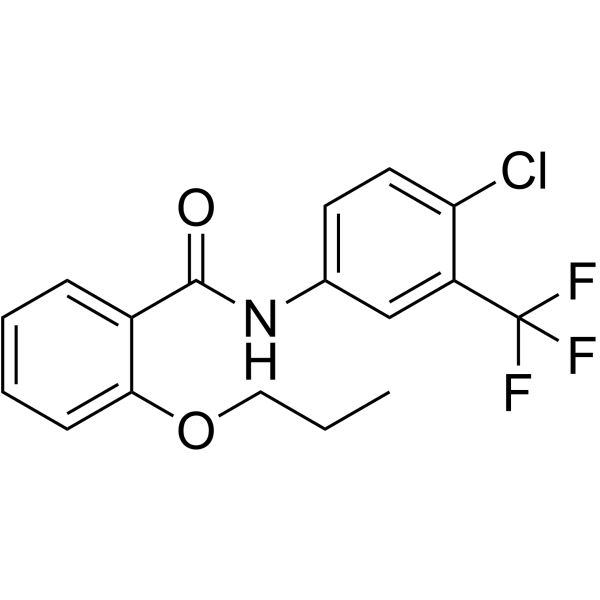
- HY-149090
-
|
|
Cholinesterase (ChE)
Monoamine Oxidase
|
Neurological Disease
|
|
AChE/BuChE/MAO-B-IN-2 (compound 4b) is a potent AChE/BuChE inhibitor and showed good blood brain barrier (BBB) permeability in vitro with an IC50 value of 5.3 μM, 12.4 μM, 1.9±0.08 μM, for AChE, BuChE, huMAO-B, respectively. AChE/BuChE/MAO-B-IN-2 (compound 4b) can inhibit excess AChE/BuChE in Alzheimer's disease (AD) brain. AChE/BuChE/MAO-B-IN-2 (compound 4b) can be used in anti-Alzheimer's research .
|
-

- HY-N0784
-
-
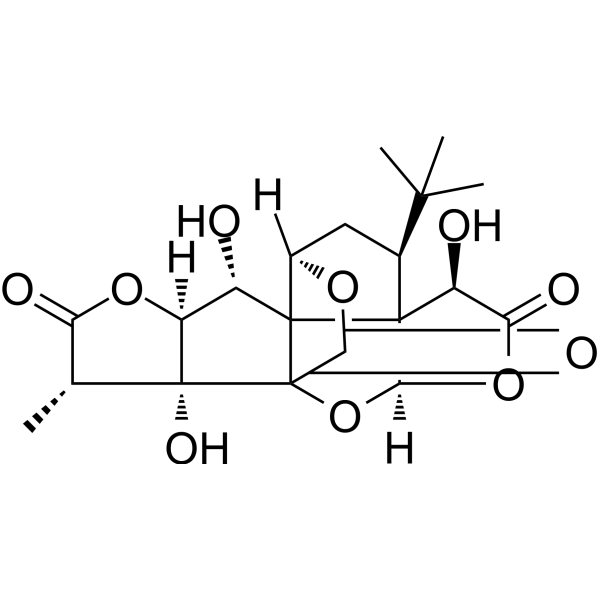
- HY-12170
-
|
AG3340; KB-R9896
|
MMP
Apoptosis
|
Cancer
|
|
Prinomastat (AG3340) is a broad spectrum, potent, orally active metalloproteinase (MMP) inhibitor with IC50s of 79, 6.3 and 5.0 nM for MMP-1, MMP-3 and MMP-9, respectively. Prinomastat inhibits MMP-2, MMP-3 and MMP-9 with Kis of 0.05 nM, 0.3 nM and 0.26 nM, respectively. Prinomastat crosses blood-brain barrier. Antitumor avtivity .
|
-
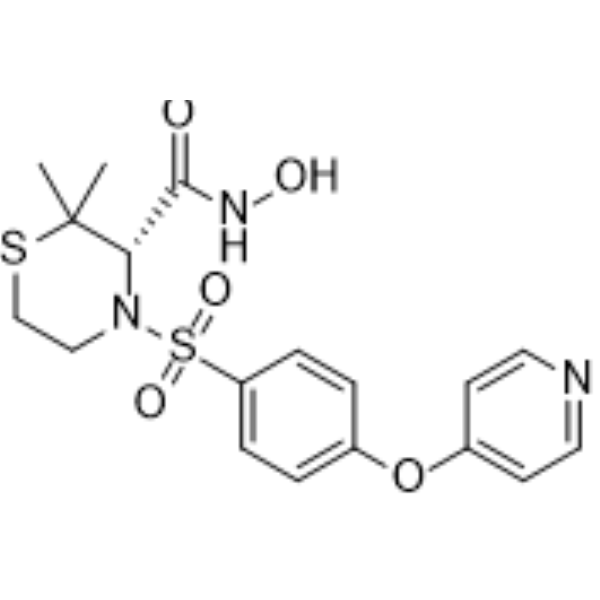
- HY-17368S1
-
|
|
Isotope-Labeled Compounds
Cholinesterase (ChE)
|
Neurological Disease
|
|
(rac)-Rivastigmine-d6 is a labelled racemic Rivastigmine. Rivastigmine (S-Rivastigmine) is an orally active and potent cholinesterase (ChE) inhibitor and inhibits butyrylcholinesterase (BChE) and acetylcholinesteras (AChE) with IC50s of 0.037 μM , 4.15 μM, respectively. Rivastigmine can pass the blood brain barrier (BBB). Rivastigmine is a parasympathomimetic or cholinergic agent used for the research of mild to moderate dementia of the Alzheimer's type and dementia due to Parkinson's disease[1][2].
|
-
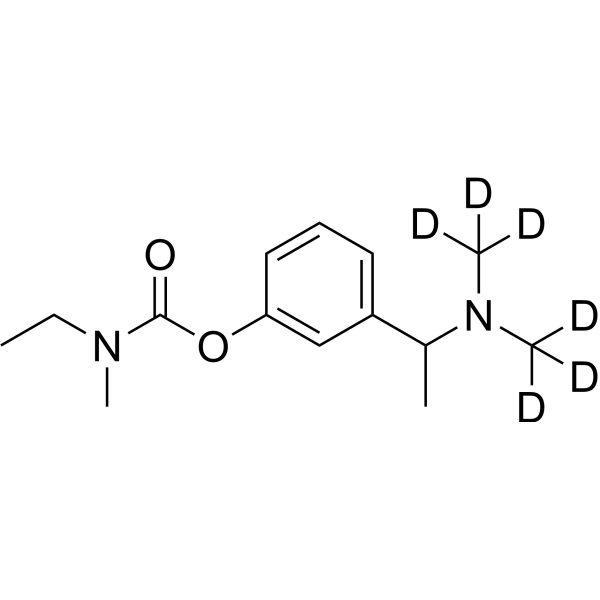
- HY-N3807
-
|
|
Acyltransferase
ERK
NF-κB
|
Infection
Cardiovascular Disease
Cancer
|
|
Enniatin B1 is a Fusarium mycotoxin. Enniatin B1 inhibits acyl-CoA: cholesterol acyltransferase (ACAT) activity with an IC50 of 73 μM in an enzyme assay using rat liver microsomes . Enniatin B1 crosss the blood-brain barrier . Enniatin B1 decreases the activation of ERK (p44/p42). Enniatin B1 inhibits moderately TNF-α-induced NF-κB activation .
|
-
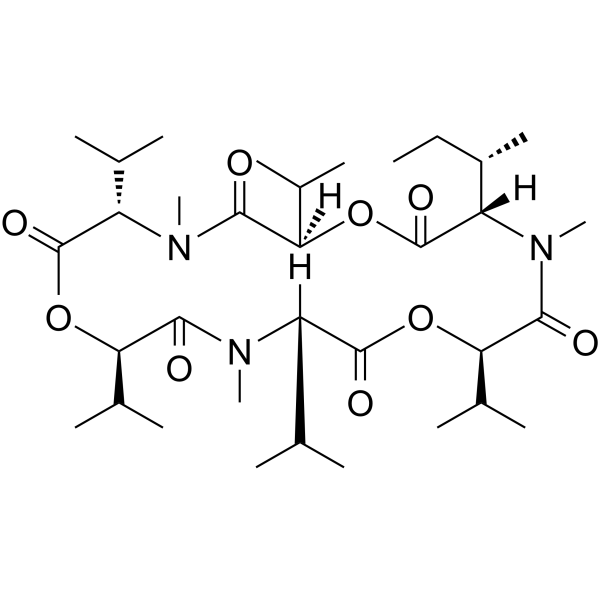
- HY-107732
-
|
|
Neuropeptide Y Receptor
|
Neurological Disease
|
|
JNJ-5207787 is a nonpeptidic, selective and penetrate the blood-brain barrier neuropeptide Y Y2 receptor (Y2) antagonist. JNJ-5207787 inhibits the binding of peptide YY (PYY) with pIC50s of 7.0 and 7.1 for human Y2 receptor and rat Y2 receptor, respectively. JNJ-5207787 is >100-fold selective versus human Y1, Y4, and Y5 receptors .
|
-
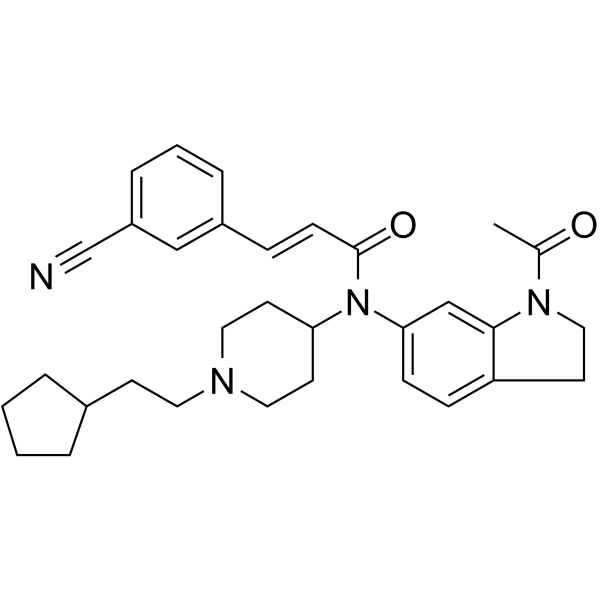
- HY-146049
-
|
|
Parasite
|
Infection
|
|
Antitrypanosomal agent 4 (compound 19) is a potent and blood-brain barrier permeable antitrypanosomal agent. Antitrypanosomal agent 4 has good activity against Trypanosoma cruzi (T. cruzi) and Trypanosoma brucei brucei (T. b. brucei) with IC50s of 1.2 μM and 70 nM, respectively . Antitrypanosomal agent 4 is a click chemistry reagent, it contains an Alkyne group and can undergo copper-catalyzed azide-alkyne cycloaddition (CuAAc) with molecules containing Azide groups.
|
-
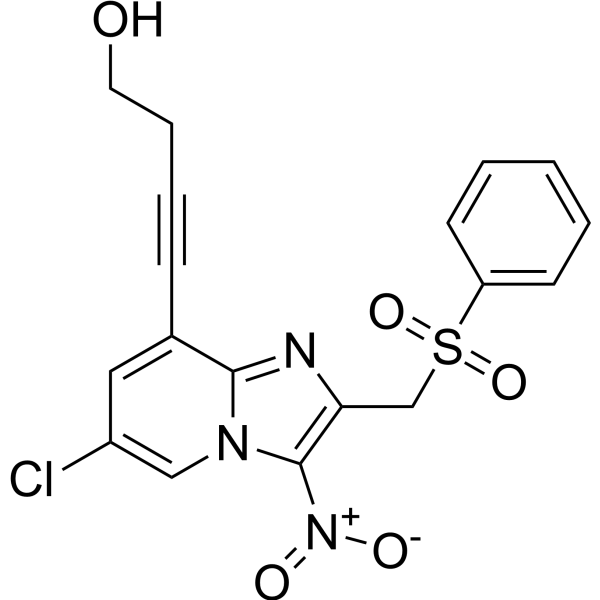
- HY-147056
-
|
PKRA7
|
Others
|
Inflammation/Immunology
Cancer
|
|
PKRA83 (PKRA7) is a potent prokineticin (PK2) antagonist, which can compete for the binding of PK2 to its receptors PKR1 and PKR2. PKRA83 potently inhibits PK2 receptors, with IC50 values of 5.0 nM and 8.2 nM for PKR1 and PKR2, respectively. PKRA83 has anticancer, anti-arthritis and anti-angiogenic activities. PKRA83 can penetrate the blood-brain barrier .
|
-

- HY-151441
-
|
|
LRRK2
|
Neurological Disease
|
|
LRRK2-IN-5 (compound 25) is a potent, orally active, selective leucine rich repeat protein kinase 2 gene (LRRK2) inhibitor with IC50 values of 1.2 and 16 μM for GS LRRK2 and WT LRRK2, respectively. LRRK2-IN-5 inhibits LRRK2 Ser1292 and Ser925 autophosphorylation. LRRK2-IN-5 can cross the blood-brain barrier .
|
-
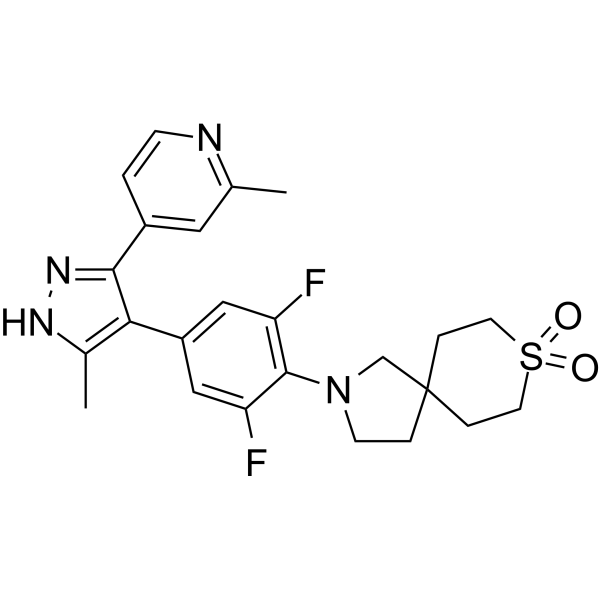
- HY-151444
-
|
|
LRRK2
|
Neurological Disease
|
|
LRRK2-IN-6 (compound 22) is a potent, orally active, selective leucine rich repeat protein kinase 2 gene (LRRK2) inhibitor with IC50 values of 4.6 and 49 μM for GS LRRK2 and WT LRRK2, respectively. LRRK2-IN-6 inhibits LRRK2 Ser1292 and Ser925 autophosphorylation. LRRK2-IN-6 can cross the blood-brain barrier .
|
-
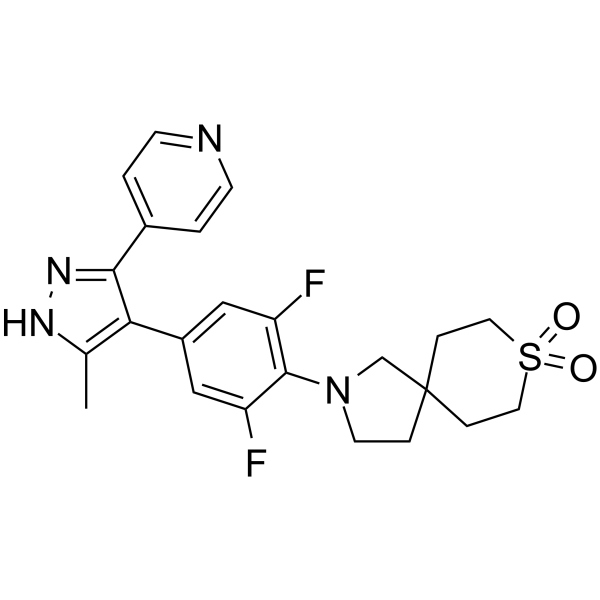
- HY-106224B
-
|
Hypocretin-1 (human, rat, mouse) (acetate)
|
Orexin Receptor (OX Receptor)
|
Neurological Disease
|
|
Orexin A (Hypocretin-1) (human, rat, mouse) acetate is a hypothalamic neuropeptide with analgesic properties (crosses the blood-brain barrier). Orexin A (human, rat, mouse) acetate is also an OX1R agonist that induces the expression of BDNF and TH proteins in SH-SY5Y cells in a time- and dose-dependent manner. Orexin A (human, rat, mouse) acetate can be used in studies of appetite regulation, neurodegenerative diseases and modulation of injurious messaging .
|
-
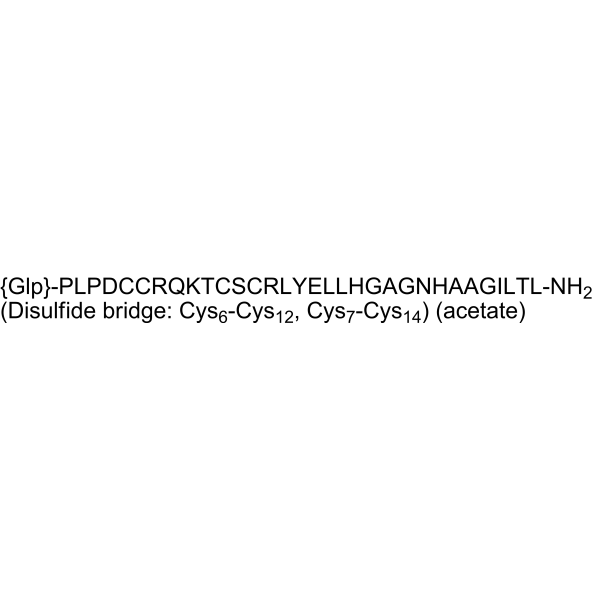
- HY-152026
-
|
|
NADPH Oxidase
|
Neurological Disease
|
|
NADPH oxidase-IN-1 is an orally active NADPH oxidase (Nox) inhibitor, related with neuronal inflammation. NADPH oxidase-IN-1 can cross the blood-brain barrier (BBB), inhibits Nox2 and Nox4 with IC50s of 1.9 μM and 2.47 μM, respectively. NADPH oxidase-IN-1 suppresses pro-inflammatory cytokines production and LPS-mediated microglial migration, also has in vivo efficacy .
|
-
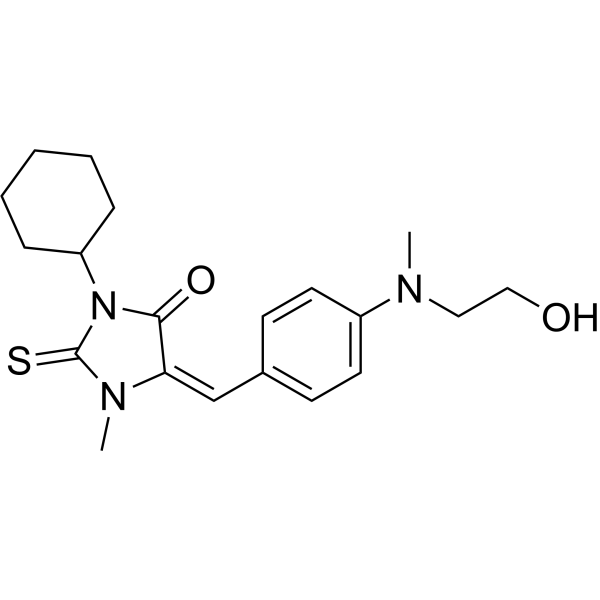
- HY-148502
-
|
|
mAChR
|
Neurological Disease
|
|
VU6019650 is a potent and selective orthosteric antagonist of M5 mAChR (IC50=36 nM), can be used for opioid use disorder (OUD) relief. VU6019650 can cross blood brain barrier, potentially modulates the mesolimbic dopaminergic reward circuitry. VU6019650 blocks Oxotremorine M iodide (HY-101372A) induced increases of neuronal firing rates of midbrain dopamine neurons in the ventral tegmental area (VTA) .
|
-
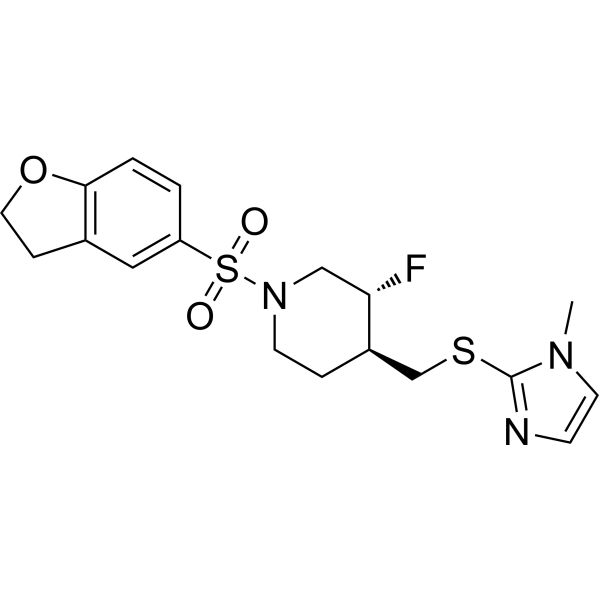
- HY-152671
-
|
|
Monoamine Oxidase
|
Neurological Disease
|
|
hMAO-B-IN-4 (compound B10) is a selective, reversible and blood–brain barrier (BBB) penetrable human monoamine oxidase-B (hMAO-B) inhibitor with an IC50 value and a Ki value of 0.067 and 0.03 μM, respectively. hMAO-B-IN-4 inhibits hMAO-A with an IC50 value of 33.82 μM. hMAO-B-IN-4 can be used for Alzheimer’s disease (AD) and Parkinson’s disease (PD) research .
|
-
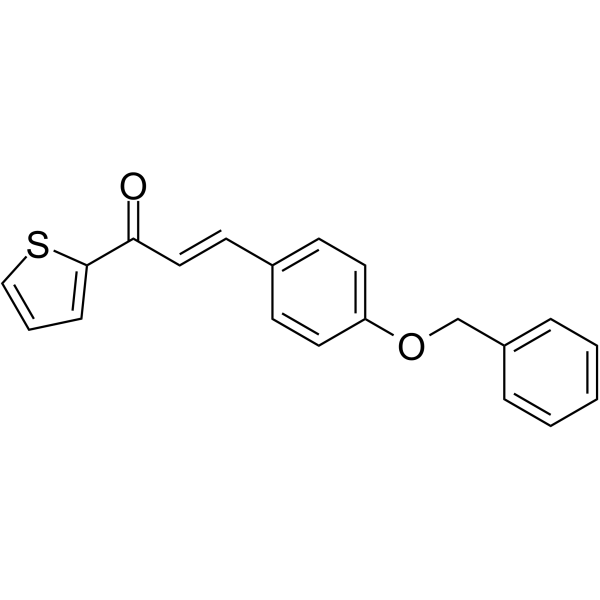
- HY-B1075AS
-
|
MK-0955 (benzylamine)-13C3
|
Bacterial
Antibiotic
|
Infection
|
|
(Rac)-Fosfomycin (benzylamine)- 13C3 is the 13C labeled Fosfomycin[1]. Fosfomycin (MK-0955) is a broad-spectrum antibiotic. Fosfomycin can cross blood-brain barrier penetrating, and irreversibly inhibits an early stage in cell wall synthesis. Fosfomycin shows anti-bacteria activity for a range of bacteria, including multidrug-resistant (MDR), extensively drug-resistant (XDR), and pan-drug-resistant (PDR) bacteria[2][3].
|
-

- HY-B1126S
-
|
|
iGluR
|
Neurological Disease
|
|
Orphenadrine-d3 (hydrochloride) is the deuterium labeled Orphenadrine hydrochloride[1]. Orphenadrine hydrochloride is an orally active and non-competitive NMDA receptor antagonist (crosses the blood-brain barrier) with a Ki of 6.0 μM. Orphenadrine hydrochloride relieves stiffness, pain and discomfort due to muscle strains, sprains or other injuries. Orphenadrine hydrochloride is also used to relieve tremors associated with parkinson's disease. Orphenadrine citrate has good neuroprotective properties, can be used in studies of neurodegenerative diseases[2][3].
|
-
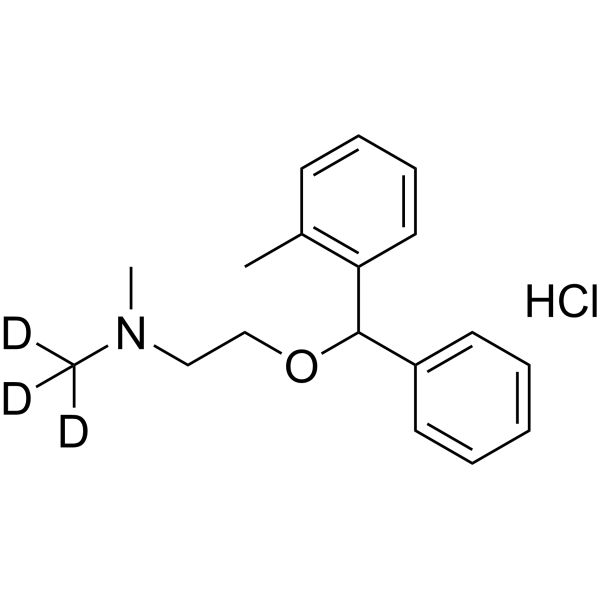
- HY-149975
-
|
|
iGluR
|
Neurological Disease
|
|
AMPA receptor modulator-4, a 3,4-dihydro-2H-1,2,4-benzothiadiazine 1,1-dioxide (BTD), is an orally active positive allosteric modulator of the AMPA receptors (AMPAR PAMs). AMPA receptor modulator-4 can cross the blood-brain barrier. AMPA receptor modulator-4 increases the cognition performance and improves working memory performance in mice .
|
-
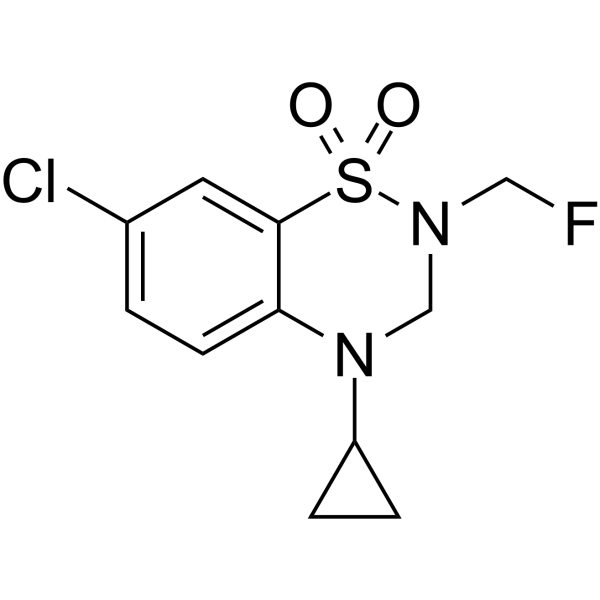
- HY-149696
-
|
|
NF-κB
|
Cancer
|
|
IR-Crizotinib is a NF-κB-inducing kinase (NIK) inhibitor that crosses the blood-brain barrier and fluorescently localizes intracranial glioblastoma (GBM) in mice (IC50=3.381 μM). IR-Crizotinib is conjugated from the near-infrared dye IR-786 and the NF-κB-inducing kinase (NIK) inhibitor Crizotinib. IR-Crizotinib can effectively inhibit the growth and invasion of glioma in vitro and in vivo and can be used in cancer research .
|
-

- HY-14205
-
|
|
Monoamine Oxidase
|
Neurological Disease
|
|
NW-1772 (methanesulfonate) (22b) is a potent and selective monoamine oxidase (MAO) B inhibitor. NW-1772 (methanesulfonate) is the equivalent of HY-111156 NW-1772. NW-1772 has some advantages, such as rapid blood-brain barrier penetration, short-acting and reversible inhibitory activity, slight inhibition of selected cytochrome P450s, and low in vitro toxicity. NW-1772 can be used for the research of neurodegenerative diseases .
|
-

- HY-161240
-
|
|
Monoamine Oxidase
|
Neurological Disease
Inflammation/Immunology
|
|
MAO-B-IN-30 (compound IS7) is a potent, selective and cross the blood-brain barrier MAO-B inhibitor with IC50 values of 19.176, 0.082 µM for MAO-A and MAO-B, respectively. MAO-B-IN-30 shows antiproliferative activity and non-cytotoxic. MAO-B-IN-30 reduces TNF-alpha, IL-6, NF-kB levels. MAO-B-IN-30 has the potential for the research of Parkinson's disease .
|
-
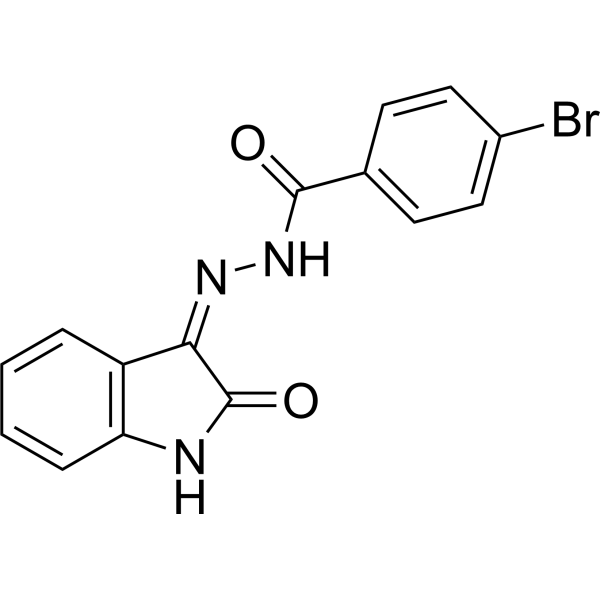
- HY-120475
-
|
ATH434
|
α-synuclein
|
Neurological Disease
|
|
PBT434 is a potent, orally active and cross the blood-brain barrier α-synuclein aggregation inhibitor. PBT434 can be used as a iron chelator and modulates transcellular iron trafficking. PBT434 inhibits iron-mediated redox activity and iron-mediated aggregation of α-synuclein. PBT434 prevents the loss of substantia nigra pars compacta neurons (SNpc). PBT434 has the potential for the research of Parkinson’s disease (PD) .
|
-
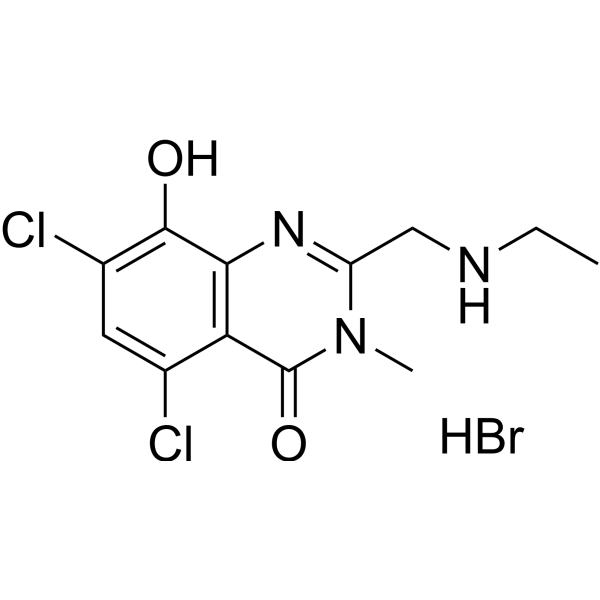
- HY-N0303
-
|
|
Mitochondrial Metabolism
Apoptosis
|
Neurological Disease
|
|
Idebenone, a well-appreciated mitochondrial protectant, exhibits protective efficacy against neurotoxicity and can be used for the research of Alzheimer's disease, Huntington's disease. Idebenone (oxidised form) has a dose-dependent inhibitory effect on the enzymatic metabolism of arachidonic acid in astroglial homogenates (IC50=16.65 μM) . Idebenone, a coenzyme Q10 analog and an antioxidant, induces apoptotic cell death in the human dopaminergic neuroblastoma SHSY-5Y cells . Idebenone quickly crosses the blood-brain barrier.
|
-

- HY-13779
-
|
|
Monoamine Oxidase
Dopamine Transporter
|
Neurological Disease
|
|
(E/Z)-J147 is an exceptionally potent, orally active, neuroprotective agent for cognitive enhancement. (E/Z)-J147 can readily pass the blood brain barrier (BBB). (E/Z)-J147 can inhibit monoamine oxidase B (MAO B) and the dopamine transporter with EC50 values of 1.88 μM and 0.649 μM, respectively. (E/Z)-J147 has potential for the treatment of Alzheimer’s disease (AD) .
|
-

- HY-13750
-
|
SPI-1005; PZ-51; CCG-39161
|
Calcium Channel
Virus Protease
HIV
Phosphatase
|
Infection
Neurological Disease
Inflammation/Immunology
Cancer
|
|
Ebselen (SPI-1005), a glutathione peroxidase mimetic, is a potent voltage-dependent calcium channel (VDCC) blocker . Ebselen potently inhibits M pro (IC50=0.67 μM) and COVID-19 virus (EC50=4.67 μM) .Ebselen is an inhibitor of HIV-1 capsid CTD dimerization. Ebselen, an organoselenium compound, can permeate the blood-brain barrier and has anti-inflammatory, antioxidant and anticancer activity .
|
-
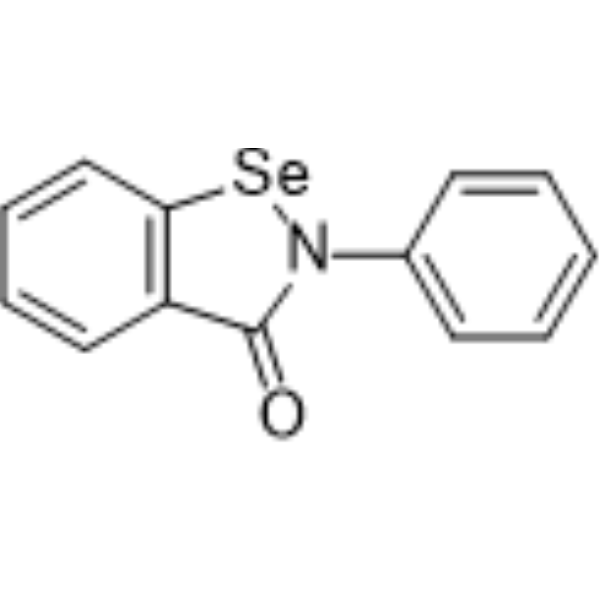
- HY-17355S
-
|
|
Isotope-Labeled Compounds
Dopamine Receptor
|
Neurological Disease
|
|
Pramipexole-d7 (dihydrochloride) is the deuterium labeled Pramipexole dihydrochloride. Pramipexole dihydrochloride is a selective and blood-brain barrier (BBB) penetrant dopamine D2-type receptor agonist, with Kis of 2.2 nM, 3.9 nM, 0.5 nM and 1.3 nM for D2-type receptor, D2, D3 and D4 receptors, respectively. Pramipexole dihydrochloride can be used for the research of Parkinson's disease (PD) and restless legs syndrome (RLS)[1][2][3].
|
-
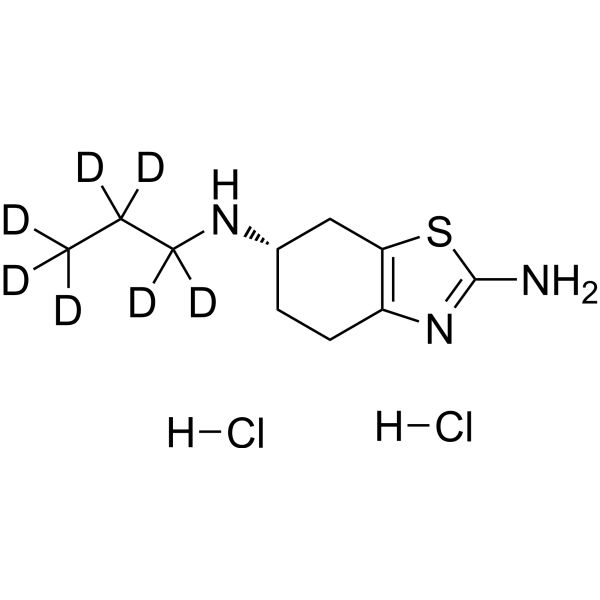
- HY-110155
-
|
|
Neurotensin Receptor
|
Neurological Disease
|
|
LM11A-31 dihydrochloride, a non-peptide p75 NTR (neurotrophin receptor p75) modulator, is an orally active and potent proNGF (nerve growth factor) antagonist. LM11A-31 dihydrochloride is an amino acid derivative with high blood-brain barrier permeability and blocks p75-mediated cell death. M11A-31 dihydrochloride reverses cholinergic neurite dystrophy in Alzheimer's disease mouse models with mid- to late-stage disease progression .
|
-

- HY-12170A
-
|
AG3340 hydrochloride; KB-R9896 hydrochloride
|
MMP
Apoptosis
|
Cancer
|
|
Prinomastat hydrochloride (AG3340 hydrochloride) is a broad spectrum, potent, orally active metalloproteinase (MMP) inhibitor with IC50s of 79, 6.3 and 5.0 nM for MMP-1, MMP-3 and MMP-9, respectively. Prinomastat hydrochloride inhibits MMP-2, MMP-3 and MMP-9 with Kis of 0.05 nM, 0.3 nM and 0.26 nM, respectively. Prinomastat hydrochloride can cross blood-brain barrier. Antitumor avtivity .
|
-
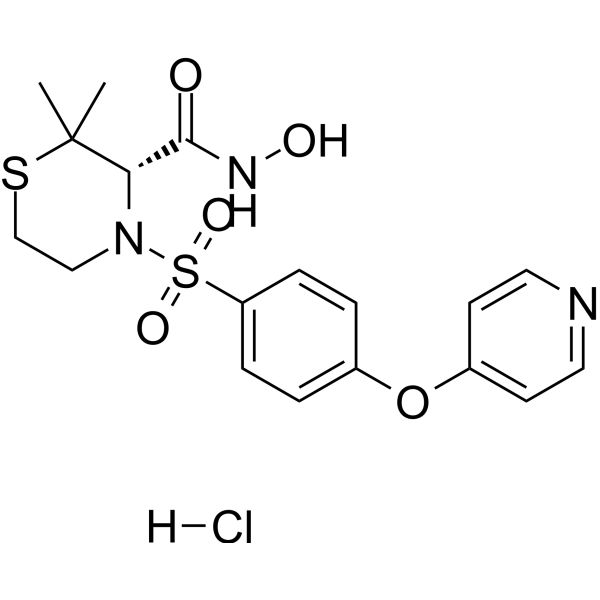
- HY-121618
-
|
|
GABA Receptor
Reactive Oxygen Species
Parasite
Apoptosis
Autophagy
|
Infection
Neurological Disease
Cancer
|
|
α-Thujone is a monoterpene isolated from Thuja occidentalis essential oil with potent anti-tumor activities. α-Thujone is a reversible modulator of the GABA type A receptor and the IC50 for α-Thujone is 21 μM in suppressing the GABA-induced currents. α-Thujone induces ROS accumulation-dependent cytotoxicity, also induces cell apoptosis and autophagy. α-Thujone has antinociceptive, insecticidal, and anthelmintic activity, and easily penetrates the blood-brain barrier .
|
-
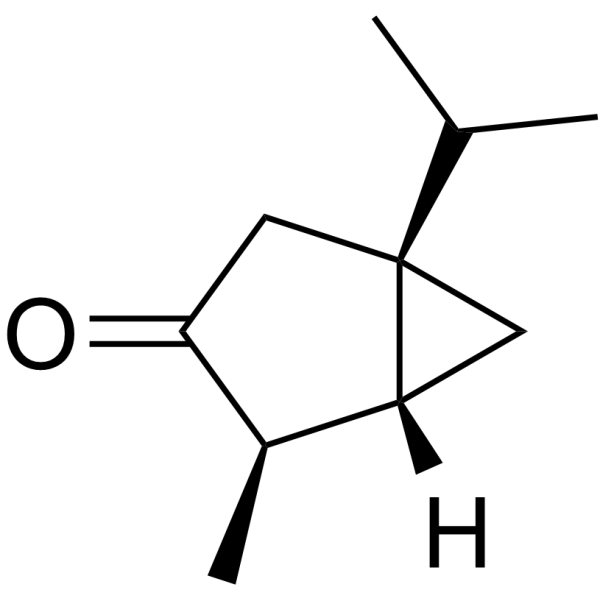
- HY-115925
-
|
|
SHP2
Phosphatase
|
Cancer
|
|
SHP2-IN-9 is a specific SHP2 inhibitor (IC50 =1.174 μM) with enhanced blood–brain barrier penetration. SHP2-IN-9 shows 85-fold more selective for SHP2 than SHP1. SHP2-IN-9 inhibits SHP2-mediated cell signal transduction and cancer cell proliferation, and inhibits the growth of cervix cancer tumors and glioblastoma growth in vivo .
|
-

- HY-17355S1
-
|
|
Isotope-Labeled Compounds
Dopamine Receptor
|
Neurological Disease
|
|
Pramipexole-d5 (dihydrochloride) is deuterium labeled Pramipexole (dihydrochloride). Pramipexole dihydrochloride is a selective and blood-brain barrier (BBB) penetrant dopamine D2-type receptor agonist, with Kis of 2.2 nM, 3.9 nM, 0.5 nM and 1.3 nM for D2-type receptor, D2, D3 and D4 receptors, respectively. Pramipexole dihydrochloride can be used for the research of Parkinson's disease (PD) and restless legs syndrome (RLS)[1][2][3].
|
-
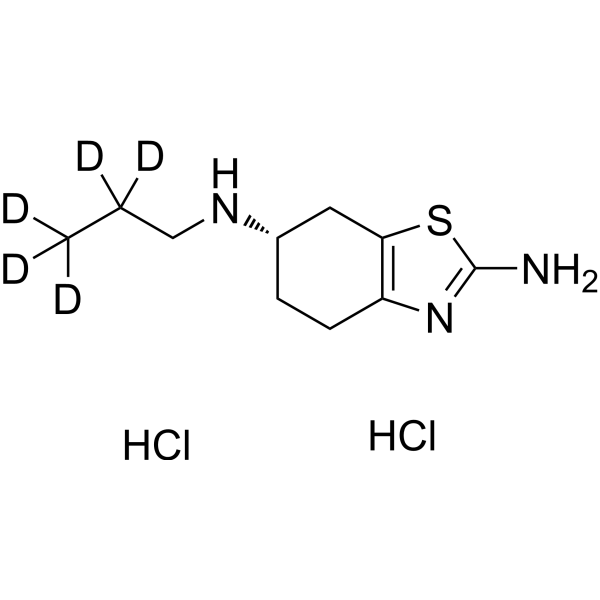
- HY-144765
-
|
|
NF-κB
Apoptosis
|
Neurological Disease
Inflammation/Immunology
|
|
NF-κB-IN-4 (compound 17) is a potent and BBB-penetrated NF-κB pathway inhibitor with blood brain barrier (BBB) permeability. NF-κB-IN-4 exhibits potential anti-neuroinflammatory activity with low toxicity. NF-κB-IN-4 can block the activation and phosphorylation of IκBα, reduce expression of NLRP3, and thus inhibit NF-κB activation. NF-κB-IN-4 can be used for neuroinflammation related diseases research .
|
-

- HY-124569
-
|
|
iGluR
|
Neurological Disease
|
|
NAB-14 is a potent, selective, orally active and non-competitive GluN2C/2D antagonists with an IC50 of 580 nM for GluN1/GluN2D. NAB-14 shows >800-fold selective for recombinant GluN2C and GluN2D over GluN2A and GluN2B. NAB-14 can cross the blood-brain-barrier .
|
-
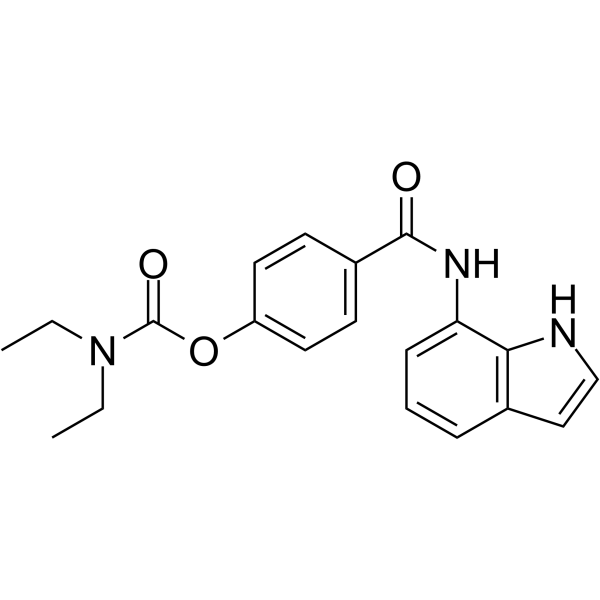
- HY-B0410S1
-
|
|
Dopamine Receptor
|
Neurological Disease
|
|
Pramipexole-d5 is the deuterium labeled Pramipexole[1]. Pramipexole is a selective and blood-brain barrier (BBB) penetrant dopamine D2-type receptor agonist, with Kis of 2.2 nM, 3.9 nM, 0.5 nM and 1.3 nM for D2-type receptor, D2, D3 and D4 receptors, respectively. Pramipexole can be used for the research of Parkinson's disease (PD) and restless legs syndrome (RLS)[2][3][4].
|
-
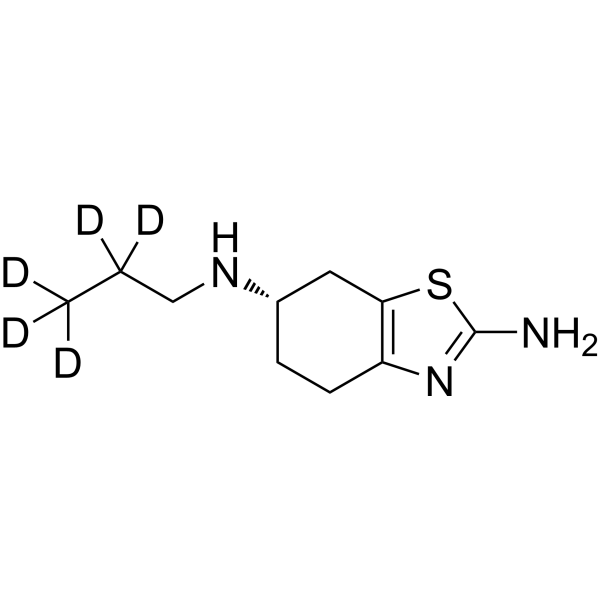
- HY-120475A
-
|
ATH434 mesylate
|
α-synuclein
|
Neurological Disease
|
|
PBT434 methanesulfonate is a potent, orally active and cross the blood-brain barrier α-synuclein aggregation inhibitor. PBT434 methanesulfonate can be used as a iron chelator and modulates transcellular iron trafficking. PBT434 methanesulfonate inhibits iron-mediated redox activity and iron-mediated aggregation of α-synuclein. PBT434 methanesulfonate prevents the loss of substantia nigra pars compacta neurons (SNpc). PBT434 methanesulfonate has the potential for the research of Parkinson’s disease (PD) .
|
-
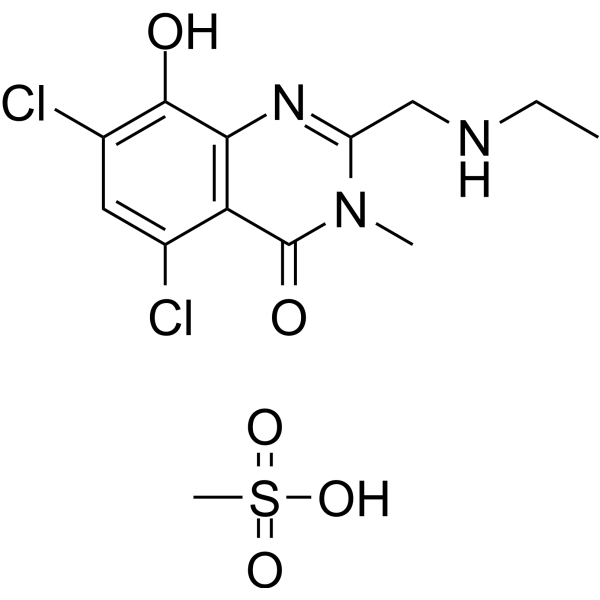
- HY-149211
-
|
|
Cholinesterase (ChE)
Beta-secretase
Amyloid-β
|
Neurological Disease
|
|
AChE/BChE-IN-12 (compound 10b), a 3,5-dimethoxy analogue, is a potent AChE, BChE, and β-secretase-1 (BACE-1) inhibitor, with IC50 values of 2.57, 3.26, and 10.65 μM, respectively. AChE/BChE-IN-12 crosses the blood-brain barrier via passive diffusion and inhibits the self-aggregation of amyloid-β monomers. AChE/BChE-IN-12 can be used for Alzheimer’s disease (AD) research .
|
-
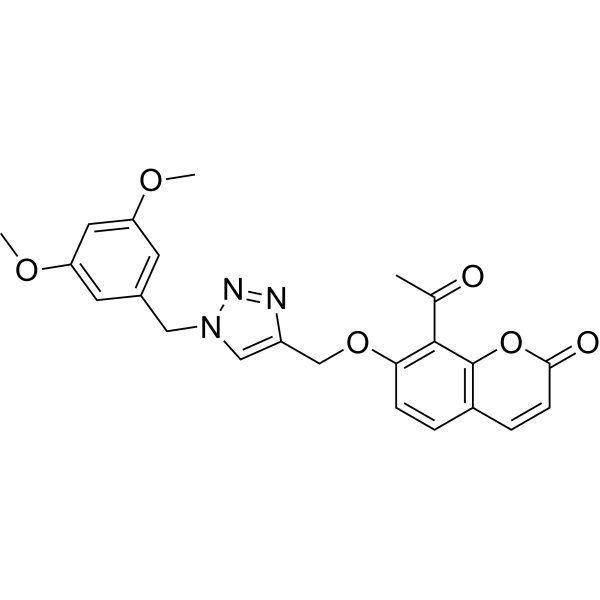
- HY-156102
-
|
|
Bcr-Abl
|
Neurological Disease
|
|
c-ABL-IN-5 is a selective c-Abl inhibitor with neuroprotective effects. c-ABL-IN-5 has blood-brain barrier penetrability, metabolic stability and good pharmacokinetic properties. When c-ABL-IN-5 is labeled with [18F] (compound [18F]3), it can be used as a tracer to evaluate disease-modifying efficacy by complementary positron emission tomography (PET). c-ABL-IN-5 can be used in the study of neurodegenerative diseases such as Parkinson's disease (PD) .
|
-
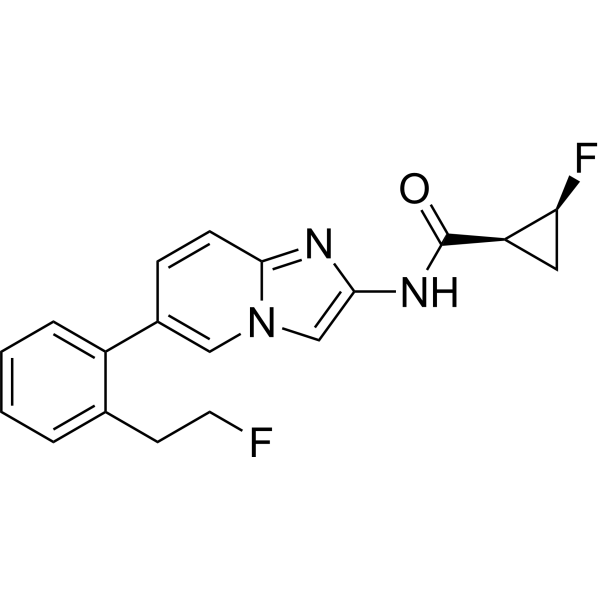
- HY-149695
-
|
|
EGFR
|
Cancer
|
|
EGFR-IN-91 (compound 9) is an orally available EGFR inhibitor with blood-brain barrier penetrability. EGFR-IN-91 inhibits EGFR L858R/C797S and EGFR exon 19del/C797S, inducing tumor regression in xenograft (PDX) mouse models. EGFR-IN-91 has the potential to inhibit localized and metastatic non-small cell lung cancer (NSCLC) driven by EGFR mutants .
|
-

- HY-15113A
-
|
|
Prolyl Endopeptidase (PREP)
|
Neurological Disease
Cancer
|
|
Y-29794 tosylate is a selective, orally active inhibitor for non-peptide prolyl endopeptidase (PPCE), with an IC50 of 3 nM and a Ki of 0.95 nM. Y-29794 tosylate enhances the effect of thyrotropin-releasing hormone (TRH) on the release of ACh in the rat hippocampus, exhibits potential neuroprotective efficacy. Y-29794 tosylate exhibits anticancer activity through inhibition of the IRS1-AKT-mTORC1 pathway. Y-29794 tosylate penetrates the brain-blood barrier (BBB) .
|
-
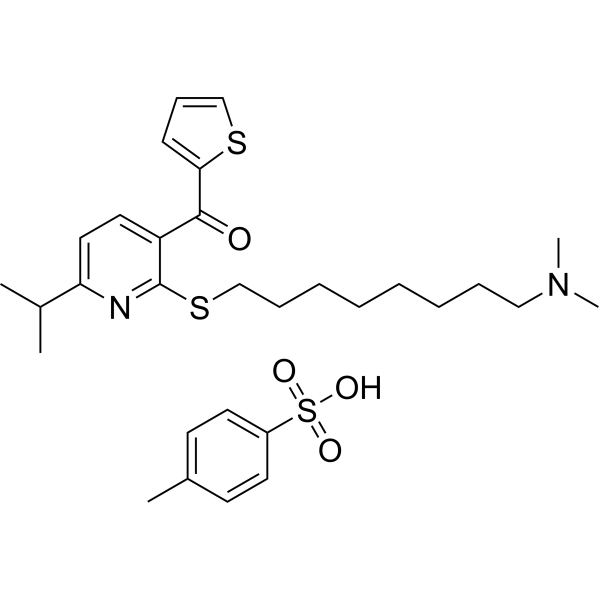
- HY-161466
-
|
|
Cholinesterase (ChE)
Amyloid-β
|
Neurological Disease
|
|
AChE-IN-62 (Compound 1) is an effective mixed and selective acetylcholinesterase (AChE) inhibitor with an IC50 value of 0.421 μM. AChE-IN-62 exhibits excellent blood-brain barrier permeability and neuroprotective effects. Additionally, AChE-IN-62 can inhibit the aggregation of Aβ1?42 with an IC50 value of 44.64 μM. AChE-IN-62 is also an effective multi-target-directed ligand (MTDL) that can be utilized in the research of Alzheimer's disease .
|
-

- HY-101834
-
|
|
Orexin Receptor (OX Receptor)
|
Others
|
|
ACT-462206 is an orally active and potent dual Orexin 1/Orexin 2 receptor antagonist with IC50s of 60 nM (Orexin 1) and 11 nM (Orexin 2), respectively. ACT-462206 exhibits brain penetration properties, and can be used for insomnia, stress/anxiety-related disorders and addiction research .
|
-
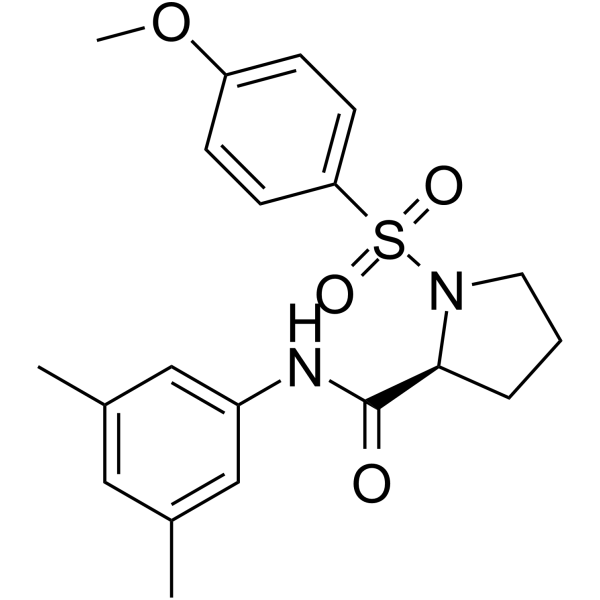
- HY-15196
-
TAK-285
2 Publications Verification
|
EGFR
|
Cancer
|
|
TAK-285 is a potent, selective, ATP-competitive and orally active HER2 and EGFR(HER1) inhibitor with IC50 of 17 nM and 23 nM, respectively. TAK-285 is >10-fold selectivity for HER1/2 than HER4, and less potent to MEK1/5, c-Met, Aurora B, Lck, CSK etc. TAK-285 has effective antitumor activity . TAK-285 can cross the blood-brain barrier (BBB) .
|
-
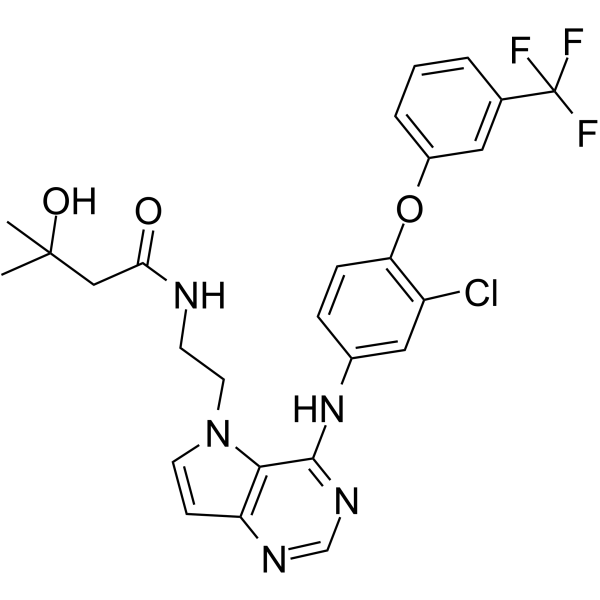
- HY-14536
-
|
Basic Blue 9; CI-52015; Methylthioninium chloride
|
Guanylate Cyclase
Monoamine Oxidase
NO Synthase
Microtubule/Tubulin
|
Infection
Neurological Disease
Cancer
|
|
Methylene blue (Basic Blue 9) is a guanylyl cyclase (sGC), monoamine oxidase A (MAO-A) and NO synthase (NOS) inhibitor. Methylene blue is a vasopressor and is often used as a dye in several medical procedures. Methylene blue through the nitric oxide syntase/guanylate cyclase signalling pathway to reduce prepulse inhibition. Methylene blue is a REDOX cycling compound and able to cross the blood-brain barrier. Methylene blue is a Tau aggregation inhibitor. Methylene blue reduces cerebral edema, attenuated microglial activation and reduced neuroinflammation .
|
-

- HY-103309
-
|
|
Calcium Channel
|
Neurological Disease
|
|
ML218 is a potent, selective and orally active T-type Ca 2+ channels (Cav3.1, Cav3.2, Cav3.3) inhibitor with IC50s of 310 nM and 270 nM for Cav3.2 and Cav3.3, respectively. ML218 inhibits the burst activity in subthalamic nucleus (STN) neurons. ML218 has no significant inhibition of L- or N-type calcium channels, KATP or hERG potassium channels. ML218 can penetrate the blood-brain barrier .
|
-

- HY-103309A
-
|
|
Calcium Channel
|
Neurological Disease
|
|
ML218 hydrochloride is a potent, selective and orally active T-type Ca 2+ channels (Cav3.1, Cav3.2, Cav3.3) inhibitor with IC50s of 310 nM and 270 nM for Cav3.2 and Cav3.3, respectively. ML218 hydrochloride inhibits the burst activity in subthalamic nucleus (STN) neurons. ML218 hydrochloride has no significant inhibition of L- or N-type calcium channels, KATP or hERG potassium channels. ML218 hydrochloride can penetrate the blood-brain barrier .
|
-

- HY-123976
-
|
|
HDAC
|
Neurological Disease
Cancer
|
|
MPT0G211 is a potent, orally active and selective HDAC6 inhibitor (IC50=0.291 nM). MPT0G211 displays >1000-fold selective for HDAC6 over other HDAC isoforms. MPT0G211 can penetrate the blood-brain barrier. MPT0G211 ameliorates tau phosphorylation and cognitive deficits in an Alzheimer’s disease model. MPT0G211 has anti-metastatic and neuroprotective effects. Anticancer activities .
|
-
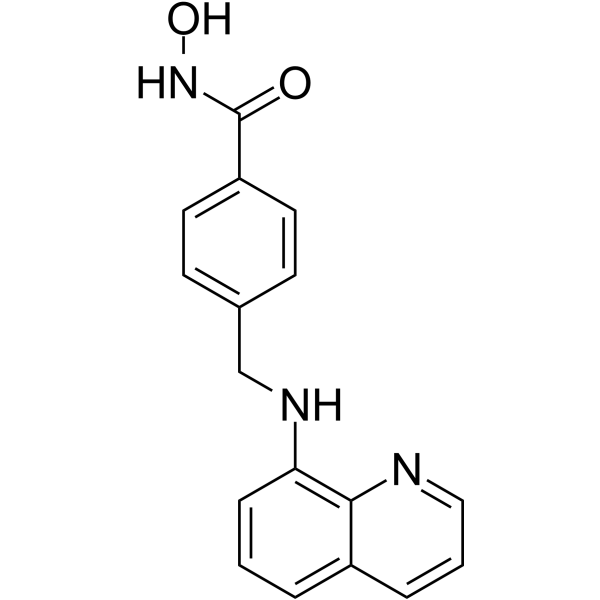
- HY-123976A
-
|
|
HDAC
|
Neurological Disease
Cancer
|
|
MPT0G211 mesylate is a potent, orally active and selective HDAC6 inhibitor (IC50=0.291 nM). MPT0G211 mesylate displays >1000-fold selective for HDAC6 over other HDAC isoforms. MPT0G211 mesylate can penetrate the blood-brain barrier. MPT0G211 mesylate ameliorates tau phosphorylation and cognitive deficits in an Alzheimer’s disease model. MPT0G211 mesylate has anti-metastatic and neuroprotective effects. Anticancer activities .
|
-
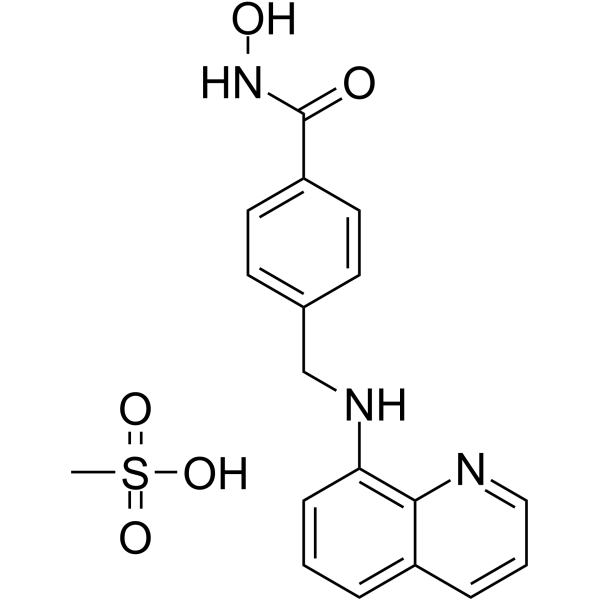
- HY-147512
-
|
|
Cannabinoid Receptor
|
Inflammation/Immunology
|
|
CB1/2 agonist 1 is a potent and cross the blood-brain barrier CB1/2 agonist with EC50s of 56.15, 11.63 nM for CB1R and CB2R, respectively. CB1/2 agonist 1 reduces glutamate release and LPS-induced activation of microglial cells. CB1/2 agonist 1 shows anti-inflammatory and antinociceptive effects. CB1/2 agonist 1 has the potential for the research of multiple sclerosis .
|
-

- HY-147939
-
|
|
Cholinesterase (ChE)
Amyloid-β
|
Cancer
|
|
AChE/BuChE-IN-3 is a potent and blood-brain barrier (BBB) penetrant AChE and BuChE dual inhibitor with IC50s of 0.65 μM and 5.77 μM for AChE and BuChE. AChE/BuChE-IN-3 also inhibits Aβ1-42 aggregation. AChE/BuChE-IN-3 has effectively neuroprotective activities and nearly no toxicity on SH-SY5Y cells. AChE/BuChE-IN-3 can be used for researching Alzheimer's disease .
|
-

- HY-D0958
-
|
Basic Blue 9 hydrate; CI-52015 hydrate; Methylthioninium chloride hydrate
|
Guanylate Cyclase
Monoamine Oxidase
NO Synthase
Microtubule/Tubulin
|
Infection
Inflammation/Immunology
Cancer
|
|
Methylene blue (Basic Blue 9) hydrate is a guanylyl cyclase (sGC), monoamine oxidase A (MAO-A) and NO synthase (NOS) inhibitor. Methylene blue is a vasopressor and is often used as a dye in several medical procedures. Methylene blue hydrate through the nitric oxide syntase/guanylate cyclase signalling pathway to reduce prepulse inhibition. Methylene blue hydrate is a REDOX cycling compound and able to cross the blood-brain barrier. Methylene blue hydrate is a Tau aggregation inhibitor. Methylene blue hydrate reduces cerebral edema, attenuated microglial activation and reduced neuroinflammation .
|
-
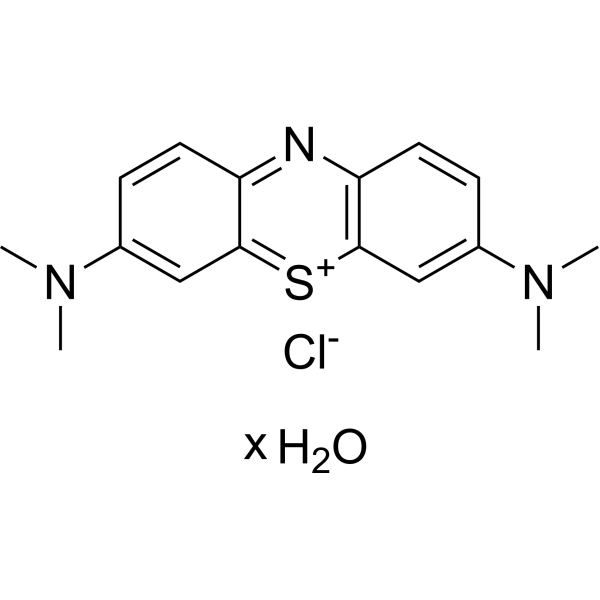
- HY-128868G
-
|
|
Fluorescent Dye
|
Others
|
|
FITC-Dextran (MW 150000) is a fluorescent probe for fluorescein isothiocyanate (FITC) dextran (Ex=491 nm; Em=518 nm). FITC-Dextran (MW 150000) can be used as a marker to reveal heat shock-induced cell damage and to study the early and late stages of apoptosis. FITC-Dextran (MW 150000) can be used in perfusion studies in animals or in fluorescence microlymphography, to study processes that affect the permeability of the blood brain barrier (BBB) . FITC-Dextran (MW 150000) can be used as fluorescent probe to study cell permeability .
|
-

- HY-17355S2
-
|
|
Dopamine Receptor
|
Neurological Disease
|
|
Pramipexole-d7-1 (dihydrochloride) is the deuterium labeled Pramipexole dihydrochloride[1]. Pramipexole dihydrochloride is a selective and blood-brain barrier (BBB) penetrant dopamine D2-type receptor agonist, with Kis of 2.2 nM, 3.9 nM, 0.5 nM and 1.3 nM for D2-type receptor, D2, D3 and D4 receptors, respectively. Pramipexole dihydrochloride can be used for the research of Parkinson's disease (PD) and restless legs syndrome (RLS)[2][3][4].
|
-
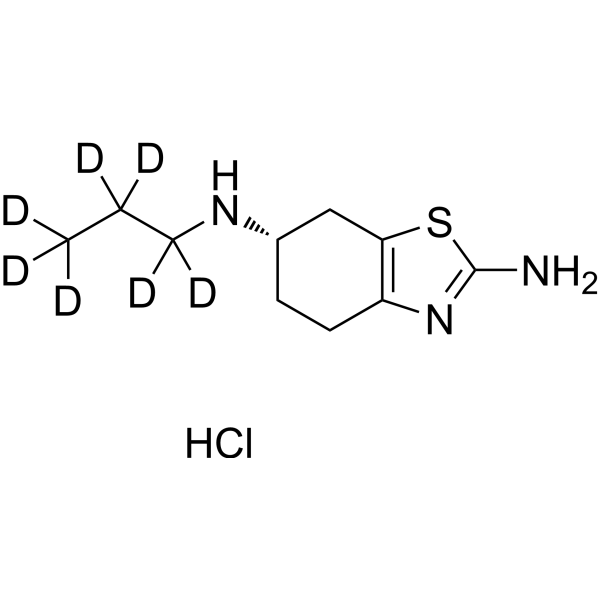
- HY-155085
-
|
|
Monoamine Oxidase
Amyloid-β
Cholinesterase (ChE)
|
Neurological Disease
|
|
hAChE-IN-3 (compounds 5c) is a potent and blood-brain barrier permeable AChE, BuChE, MAO-B-IN-1 and BACE-1 inhibitor, with IC50 values of 0.44, 0.08, 5.15 and 0.38 μM, respectively. hAChE-IN-3 has antioxidant activity and metal chelating ability. In addition, hAChE-IN-3 can bind to peripheral anion sites, and affect β amyloid and reduce Alzheimer's-associated neurodegeneration. hAChE-IN-3 has the potential for the research of Alzheimer's disease .
|
-
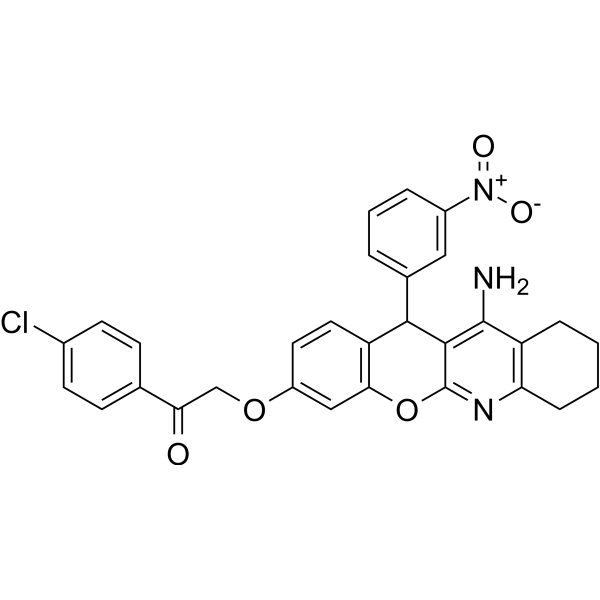
- HY-155733
-
|
|
iGluR
Cholinesterase (ChE)
Amyloid-β
|
Neurological Disease
|
|
AChE/Aβ-IN-1 (compound 32) is a potent and orally active inhibitor of acetylcholinesterase (AChE) with an IC50 of 86 nM, as well as an antagonist of NMDA receptor (GluN1-1b/GluN2B subunit combination) with IC50 of 3.876 μM. AChE/Aβ-IN-1 also inhibits Aβ aggregation and shows good blood-brain barrier permeability and neuroprotection. AChE/Aβ-IN-1 improves cognitive and spatial memory impairment in rats model .
|
-

- HY-155735
-
|
|
iGluR
Cholinesterase (ChE)
Amyloid-β
|
Neurological Disease
|
|
AChE/Aβ-IN-2 (compound 33) is a potent and orally active inhibitor of acetylcholinesterase (AChE) with IC50 of 135 nM, as well as an antagonist of NMDA receptor (GluN1-1b/GluN2B subunit combination) with IC50 of 5.054 μM. AChE/Aβ-IN-2 also inhibits Aβ aggregation and shows good blood-brain barrier permeability. AChE/Aβ-IN-2 improves cognitive and spatial memory impairment in rats model .
|
-
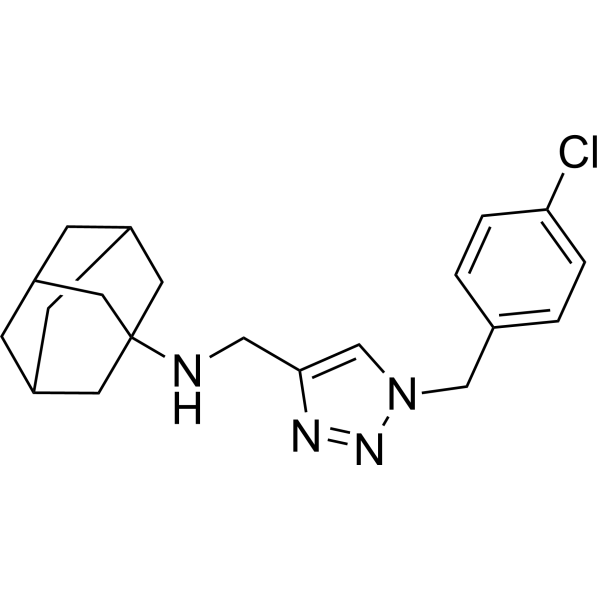
- HY-124582
-
|
|
Autophagy
mTOR
|
Cancer
|
|
NEO214 is an autophagy inhibitor and a covalent conjugate of the PDE4 inhibitor Rolipram (HY-16900) and perillyl alcohol (HY-N7000). It has anti-cancer activity and blood-brain barrier (BBB) permeability. Over sex. NEO214 prevents autophagy-lysosome fusion, thereby blocking autophagic flux and triggering glioma cell death. The process involves mTOR activation, andTFEB(Transcription Factor EB) aggregation. NEO214 inhibitionMacroautophagy/autophagy in glioblastoma cells has the potential to overcome chemotherapy resistance in glioblastoma .
|
-

- HY-11017R
-
|
ENA 713 (Standard); SDZ-ENA 713 (Standard)
|
Cholinesterase (ChE)
|
Neurological Disease
|
|
Rivastigmine (tartrate) (Standard) is the analytical standard of Rivastigmine (tartrate). This product is intended for research and analytical applications. Rivastigmine tartrate (ENA 713; SDZ-ENA 713) is an orally active and potent cholinesterase (ChE) inhibitor and inhibits butyrylcholinesterase (BChE) and acetylcholinesteras (AChE) with IC50s of 0.037 μM, 4.15 μM, respectively. Rivastigmine tartrate can pass the blood brain barrier (BBB). Rivastigmine tartrate is a parasympathomimetic or cholinergic agent used for the research of mild to moderate dementia of the Alzheimer's type and dementia due to Parkinson's disease .
|
-

- HY-10895
-
|
SB 334867A
|
Orexin Receptor (OX Receptor)
|
Neurological Disease
Endocrinology
|
|
SB-334867 (SB 334867A) is an excellent,selective and blood–brain barrier permeable orexin-1 (OX1) receptor antagonist, shows selectivity over OX2 (pKb=7.4), 100-fold over 5-HT2B, 5-HT2C with pKi values of 5.4 and 5.3, respectively . SB-334867 reduces ethanol consumption and inhibits the acquisition of morphine-induced sensitization to locomotor activity in vivo .
|
-
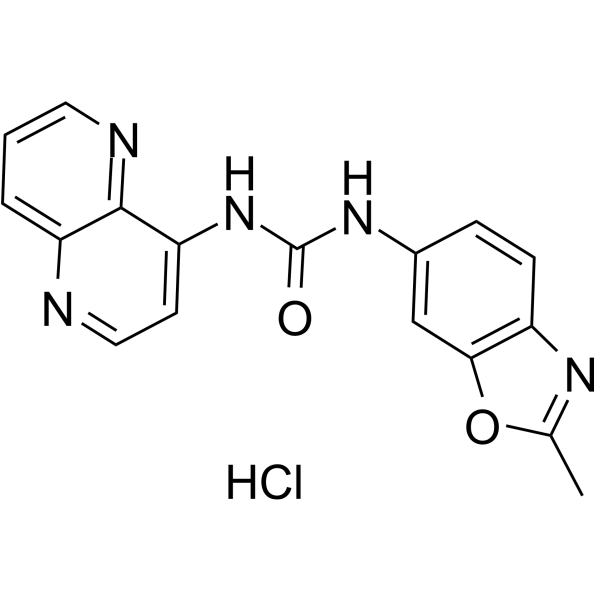
- HY-N0408
-
|
|
NF-κB
Reactive Oxygen Species
Apoptosis
Influenza Virus
|
Infection
Neurological Disease
Inflammation/Immunology
Cancer
|
|
Picroside II, an iridoid compound extracted from Picrorhiza, exhibits anti-inflammatory and anti-apoptotic activities.
picroside II alleviates the inflammatory response in sepsis and enhances immune function by inhibiting the activation of NLRP3 inflammasome and NF-κB pathways .
Picroside II is an antioxidant, exhibits a significant neuroprotective effect through reducing ROS production and protects the blood-brain barrier (BBB) after cerebral ischemia-reperfusion (CI/R) injury. Picroside II has antioxidant, anti-inflammatory, immune regulatory, anti-virus and other pharmacological activities .
|
-
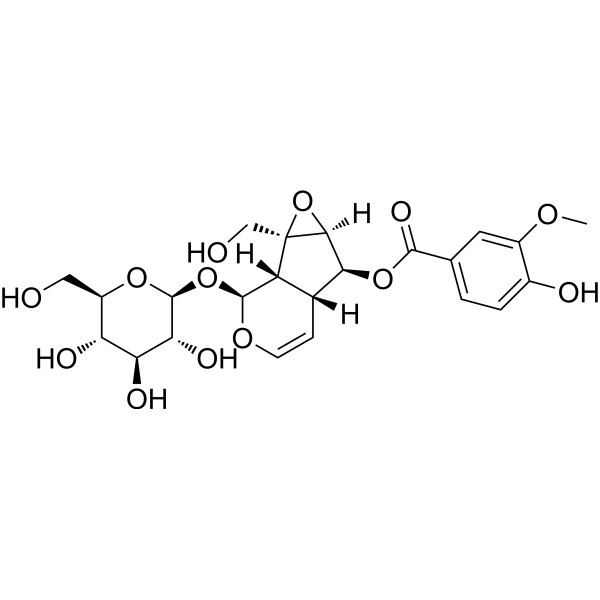
- HY-124619
-
|
|
FKBP
HIV
|
Infection
Neurological Disease
|
|
GPI-1046 is a immunophilin ligand without antibiotic action and attenuates ethanol intake in part through the upregulation of glutamate transporter 1 (GLT1) in PFC and NAc-core. GPI-1046 is an analog of FK506, which is an immunophilin ligand that has been shown neuroprotective effects in neurodegenerative disease models . GPI-1046 readily crosses the blood-brain barrier and promotes the regeneration of dopamine (DA) cells in the CNS in association with functional recovery in rodent models . GPI-1046 improves HIV-associated injury of peripheral nerves .
|
-
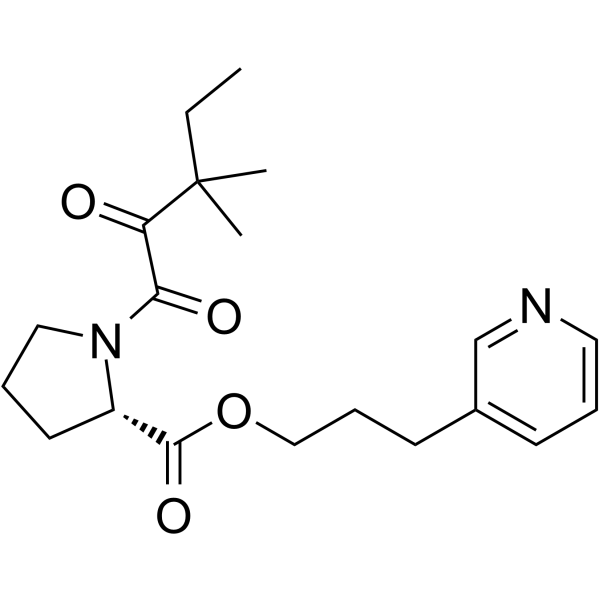
- HY-110291
-
|
|
Others
|
Neurological Disease
|
|
A-971432 is a potent, selective and orally active sphingosine-1-phosphate (S1P) receptor 5 agonist with IC50s of .362, >10, 0.006 µM for S1P1, S1P3, S1P5 respectively. A-971432 protects blood–brain barrier (BBB) homeostasis. A-971432 reverses age-related cognitive decline. A-971432 has the potential for the research of alzheimer’s disease or multiple sclerosis .
|
-
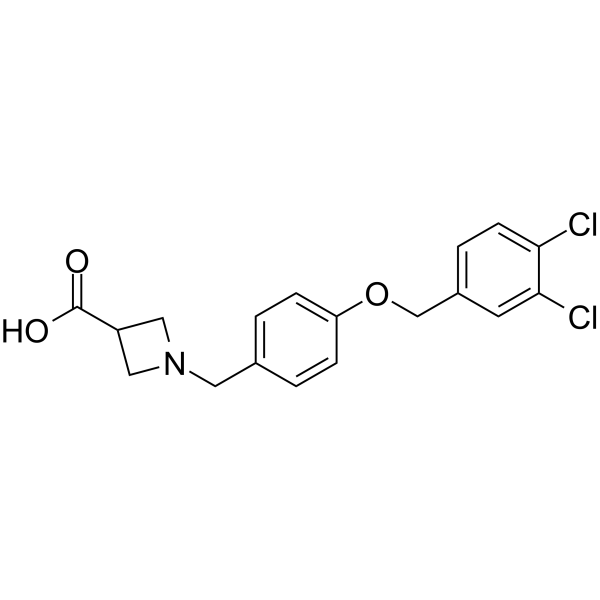
- HY-109968A
-
|
CEP-26401 hydrochloride
|
Histamine Receptor
|
Neurological Disease
|
|
Irdabisant (CEP-26401) hydrochloride is a selective, orally active and blood-brain barrier (BBB) penetrant histamine H3 receptor (H3R) inverse agonist/inverse agonist with Ki values of 7.2 nM and 2.0 nM for rat H3R and human H3R, respectively. Irdabisant hydrochloride has relatively low inhibitory activity against hERG current with an IC50 of 13.8 μM. Irdabisant hydrochloride has cognition-enhancing and wake-promoting activities in the rat social recognition model. Irdabisant hydrochloride can be used to research schizophrenia or cognitive impairment .
|
-
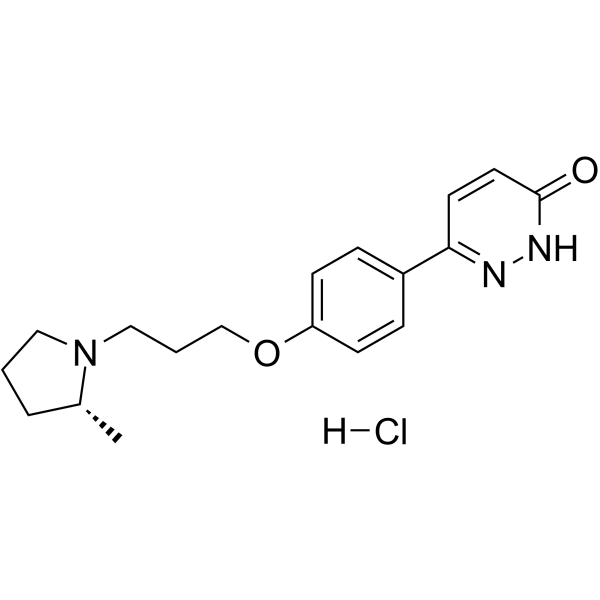
- HY-109968
-
|
CEP-26401
|
Histamine Receptor
|
Neurological Disease
|
|
Irdabisant (CEP-26401) is a selective, orally active and blood-brain barrier (BBB) penetrant histamine H3 receptor (H3R) inverse agonist/inverse agonist with Ki values of 7.2 nM and 2.0 nM for rat H3R and human H3R, respectively. Irdabisant has relatively low inhibitory activity against hERG current with an IC50 of 13.8 μM. Irdabisant has cognition-enhancing and wake-promoting activities in the rat social recognition model. Irdabisant can be used to research schizophrenia or cognitive impairment .
|
-
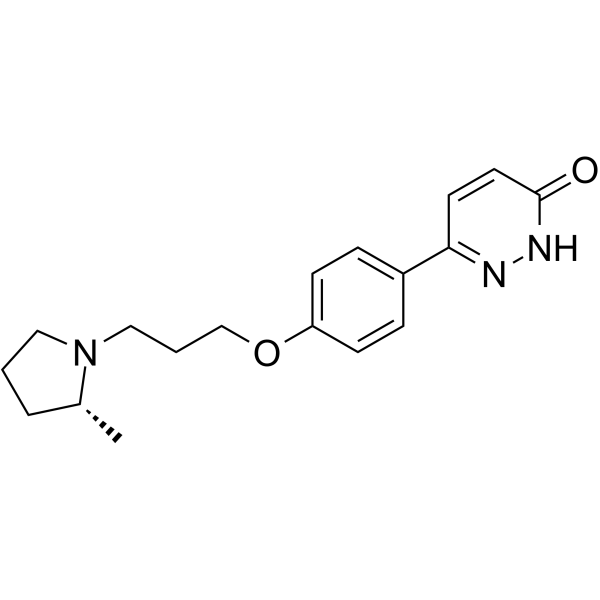
- HY-113916
-
|
AT13387 lactate
|
HSP
|
Cancer
|
|
Onalespib lactate is a potent and cross the blood-brain barrier heat-shock-protein-90 (Hsp90) inhibitor with an Kd value of 0.71 nM. Onalespib lactate inhibits the proliferation, survival and migration. Onalespib lactate decreases the expression of EGFR, p-EGFR, AKT, P-AKT, ERK1/2, P-ERK1/2, S6, P-S6 protein. Onalespib lactate shows antitumor activity. Onalespib lactate has the potential for the research of non-small cell lung cancer (NSCLC) .
|
-

- HY-149288
-
|
|
Cholinesterase (ChE)
Beta-secretase
Amyloid-β
|
|
|
hAChE/hBACE-1-IN-2 is a potent, orally active, blood-brain barrier transboundary triple inhibitor of hAChE, hBChE, and HACE-1 with IC50s of 0.113 μM, 1.48 μM and 0.38 μM, respectively. hAChE/hBACE-1-IN-2 has antioxidant activity. hAChE/hBACE-1-IN-2 also inhibits Aβ11-42 aggregation. hAChE/hBACE-1-IN-2 can be used to study Alzheimer's disease .
|
-
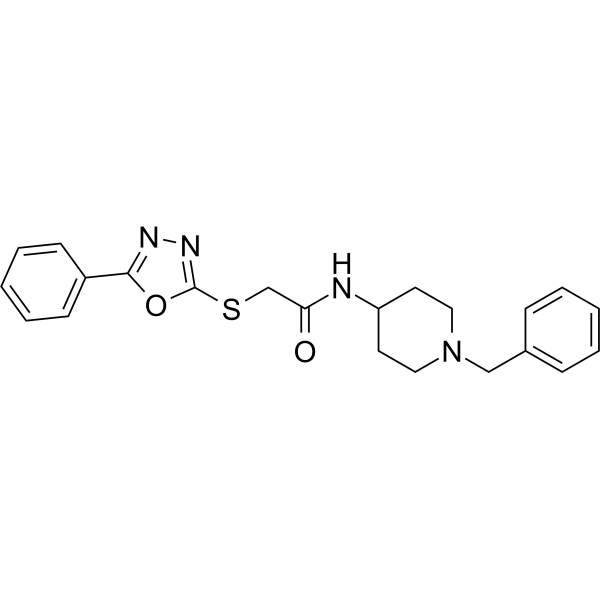
- HY-163288
-
|
|
Histone Methyltransferase
HSP
Apoptosis
|
Cancer
|
|
EZH2/HSP90-IN-29 is a dual inhibitor for EZH2 and HSP90, with IC50s of 6.29 nM and 60.1 nM, for EZH2 and HSP90, respectively. EZH2/HSP90-IN-29 increases apoptosis/necrosis-related gene expression, induces cell cycle arrest at M phase and inhibits reactive oxygen species (ROS) catabolism pathway. EZH2/HSP90-IN-29 is able to cross the blood-brain-barrier (BBB) .
|
-

- HY-B0250S1
-
|
BCH-189-13C,15N2,d2
|
Isotope-Labeled Compounds
HBV
Reverse Transcriptase
HIV
|
Infection
|
|
Lamivudine-13C,15N2,d2 (BCH-189-13C,15N2,d2) is a 13C, 15N, and deuterium labeled Lamivudine (HY-B0250). Lamivudine is an orally active and blood-brain barrier permeable nucleoside reverse transcriptase inhibitor (NRTI). Lamivudine inhibits HIV reverse transcriptase 1 and 2 and hepatitis B virus (HBV) reverse transcriptase .
|
-

- HY-10895A
-
|
SB334867A free base
|
Orexin Receptor (OX Receptor)
|
Neurological Disease
Endocrinology
|
|
SB-334867 free base (SB334867A free base) is an excellent, selective and blood–brain barrier permeable orexin-1 (OX1) receptor antagonist, shows selectivity over OX2 (pKb=7.4), 100-fold over 5-HT2B, 5-HT2C with pKi values of 5.4 and 5.3, respectively . SB-334867 reduces ethanol consumption and inhibits the acquisition of morphine-induced sensitization to locomotor activity in vivo .
|
-
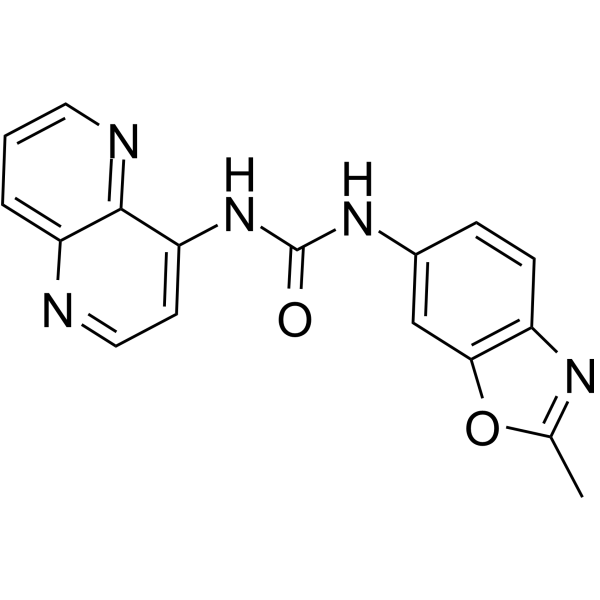
- HY-13409
-
|
|
5-HT Receptor
|
Neurological Disease
Metabolic Disease
|
|
SB 242084 is a selective, competitive and high-affinity (pKi=9.0) 5-HT2C receptor antagonist (crosses the blood-brain barrier). SB 242084 increases basal activity of dopaminergic neurons in the ventral tegmental area (VTA) of the midbrain and dopamine release in the vomeronasal nucleus. SB 242084 also increases mitochondrial gene expression and oxidative metabolism via 5-HT2A receptor. SB 242084 has good research potential in the negative symptoms of anxiety, depression and schizophrenia, as well as in acute organ damage .
|
-

- HY-13409A
-
|
|
5-HT Receptor
|
Neurological Disease
Metabolic Disease
|
|
SB 242084 dihydrochloride is a selective, competitive and high-affinity (pKi=9.0) 5-HT2C receptor antagonist (crosses the blood-brain barrier). SB 242084 dihydrochloride increases basal activity of dopaminergic neurons in the ventral tegmental area (VTA) of the midbrain and dopamine release in the vomeronasal nucleus. SB 242084 dihydrochloride also increases mitochondrial gene expression and oxidative metabolism via 5-HT2A receptor. SB 242084 dihydrochloride has good research potential in the negative symptoms of anxiety, depression and schizophrenia, as well as in acute organ damage .
|
-

- HY-136523
-
|
|
Histone Demethylase
Apoptosis
|
Cancer
|
|
S2157, a N-alkylated tranylcypromine (TCP) derivative, is a potent lysine-specific demethylase 1 (LSD1) inhibitor. S2157 increases H3K9 methylation and reciprocal H3K27 deacetylation at super-enhancer regions. S2157 induces apoptosis in TCP-resistant T-cell acute lymphoblastic leukemia (T-ALL) cells by repressing transcription of the NOTCH3 and TAL1 genes. S2157 efficiently pass through the blood-brain barrier and can almost completely eradicate CNS leukemia in mice transplanted with T-ALL cells .
|
-

- HY-108039
-
|
HE 3286; NE-3107
|
NF-κB
|
Neurological Disease
Metabolic Disease
Inflammation/Immunology
|
|
Bezisterim (HE 3286; NE-3107) is a synthetic derivative of a natural anti-inflammatory steroid, β-AET. Bezisterim is an orally active partial NF-κB inhibitor. HE3286 reduces proinflammatory signals, including IL-6 and matrix metallopeptidase 3. Bezisterim freely penetrates the blood brain barrier in mice. Bezisterim can be used for the research of the ulcerative colitis, arthritis, experimental autoimmune encephalomyelitis . Bezisterim is a click chemistry reagent, it contains an Alkyne group and can undergo copper-catalyzed azide-alkyne cycloaddition (CuAAc) with molecules containing Azide groups.
|
-
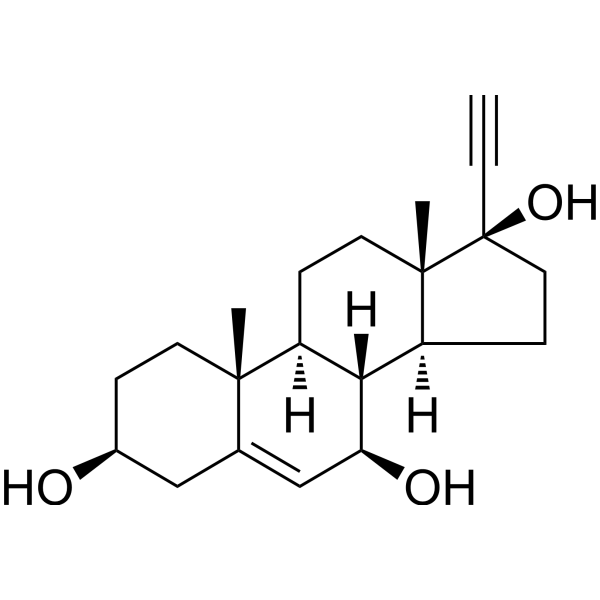
- HY-147319
-
|
|
Others
|
Neurological Disease
|
|
RTI-7470-44 is a potent, selective and blood-brain barrier (BBB) penetrant human trace amine-associated receptor subtype 1 (hTAAR1) antagonist with an IC50 value of 8.4 nM and a Ki value of 0.3 nM. RTI-7470-44 has moderate metabolic stability, and a favorable preliminary off-target profile. RTI-7470-44 can increase the spontaneous firing rate of mouse ventral tegmental area (VTA) dopaminergic neurons. RTI-7470-44 can be used for researching schizophrenia, agent addiction, and Parkinson’s disease (PD) .
|
-
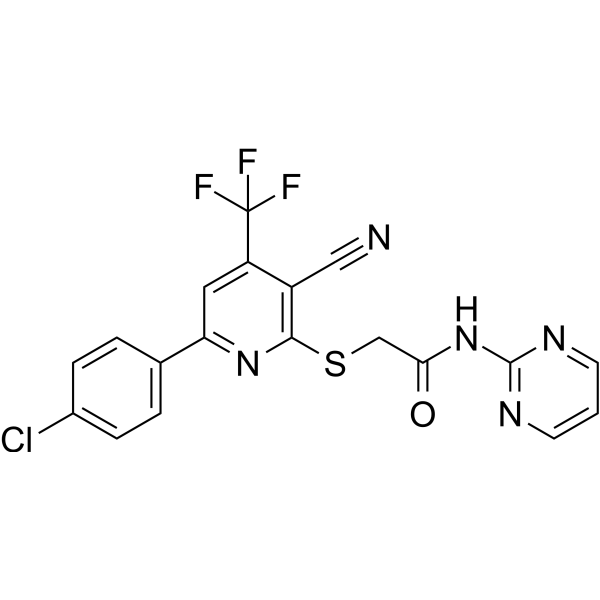
- HY-151929
-
|
|
JNK
|
Neurological Disease
|
|
JNK3 inhibitor-4 is a potent inhibitor of JNK3 (IC50=1.0 nM) based on 2-aryl-1-pyrimidinyl-1H-imidazole-5-yl acetonitrile. JNK3 inhibitor-4 shows excellent selectivity over other protein kinases including isoforms JNK1 (IC50=143.9 nM) and JNK2 (IC50=298.2 nM) . JNK3 inhibitor-4 has neuroprotective effect and predicated blood-brain barrier permeability .
|
-
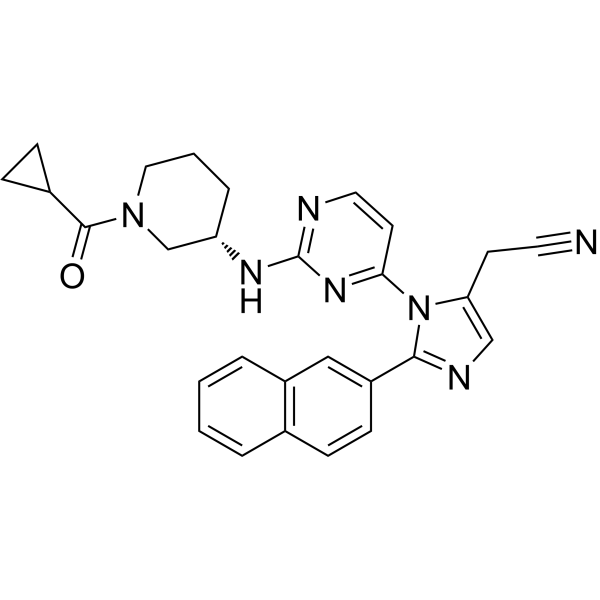
- HY-126123
-
|
|
iGluR
Potassium Channel
|
Neurological Disease
|
|
NR2B-selective NMDA receptor antagonist 1 (compound 29) is a potent antagonist of NR1/NR2B receptors, with IC50s of 0.05 μM, 0.73 μM, 2.4 μM to NR1/NR2B NMDA receptor, hERG, α1-AdR, respectivity. NR2B-selective NMDA receptor antagonist 1 exhibites efficient permeability across the blood–brain barrier .
|
-
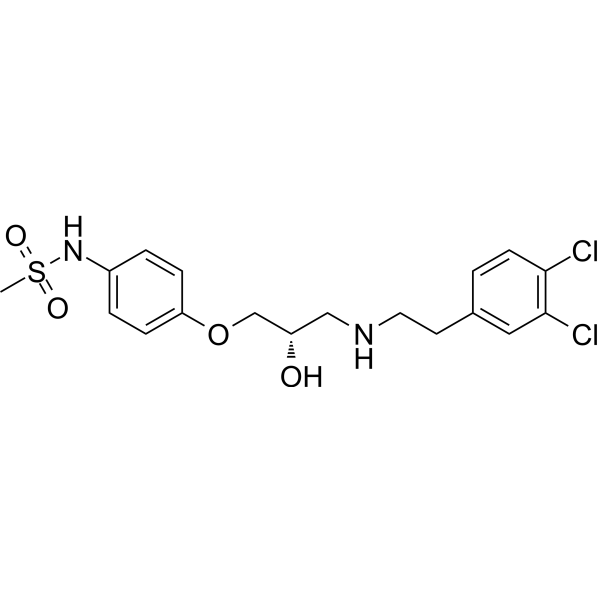
- HY-157936
-
|
|
iGluR
|
Neurological Disease
|
|
GluN2B-NMDAR antagonist-2 (compound S-58) is a potent, selective and cross the blood-brain barrier NMDAR-GluN2B antagonist with an IC50 value of 74.01, nM. GluN2B-NMDAR antagonist-2 shows mild cytotoxicity. GluN2B-NMDAR antagonist-2 decreases the cerebral infarction rates and neurologic deficit scores. GluN2B-NMDAR antagonist-2 has the potential for the research of stroke .
|
-
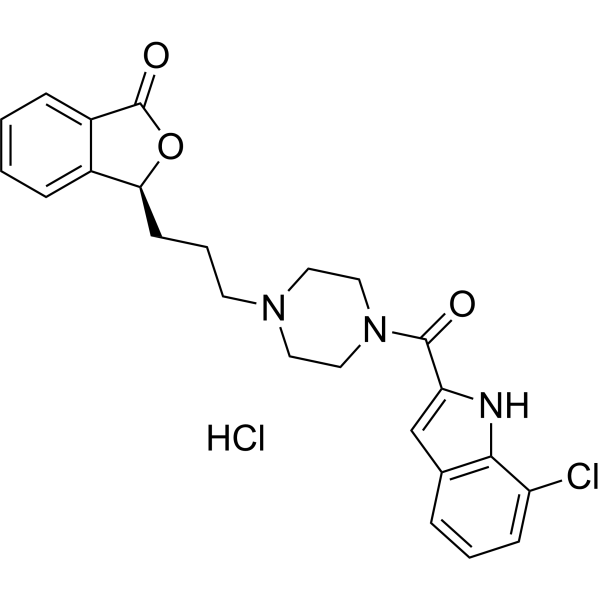
- HY-162373
-
|
|
Amylases
Glucosidase
P-glycoprotein
|
Metabolic Disease
|
|
α-Amylase/α-Glucosidase-IN-10 (compound 5d) is an α-amylase and α-glucosidase inhibitor (IC50: 30.39 μM and 65.1 μM) with potential diabetes inhibitory effects. α-Amylase/α-Glucosidase-IN-10 exhibits high gastrointestinal (GI) absorption in ADMET (Absorption, Distribution, Metabolism, Excretion and Toxicity) prediction. While α-Amylase/α-Glucosidase-IN-10 acts as a substrate for P-gp and does not cross the blood-brain barrier (BBB), there may be a risk of central nervous system side effects .
|
-

- HY-123960A
-
|
|
Phosphatase
|
Neurological Disease
|
|
Raphin1 acetate is an orally bioavailable, selective inhibitor of the regulatory phosphatase PPP1R15B (R15B). Raphin1 acetate binds strongly to the R15B-PP1c holophosphatase (Kd=33 nM), and shows ~30-fold selective in binding R15B-PP1c over R15A-PP1c. Raphin1 acetate crosses the blood-brain barrier, and reduces organismal and molecular deficits in a mouse model of a protein misfolding disease .
|
-

- HY-111373
-
|
|
mTOR
Autophagy
|
Cancer
|
|
RapaLink-1, the third-generation bivalent mTOR inhibitor, combines Rapamycin (HY-10219) with MLN0128 (HY-13328, a second-generation mTOR kinase inhibitor) by an inert chemical linker. RapaLink-1 shows better efficacy than Rapamycin or mTOR kinase inhibitors (TORKi), potently blocking cancer-derived, activating mutants of mTOR. RapaLink-1 can cross the blood-brain barrier. RapaLink-1 binding to FKBP12 results in targeted and durable inhibition of mTORC1. RapaLink-1 plays an antithrombotic role in antiphospholipid syndrome by improving autophagy. Anticancer activity .
|
-
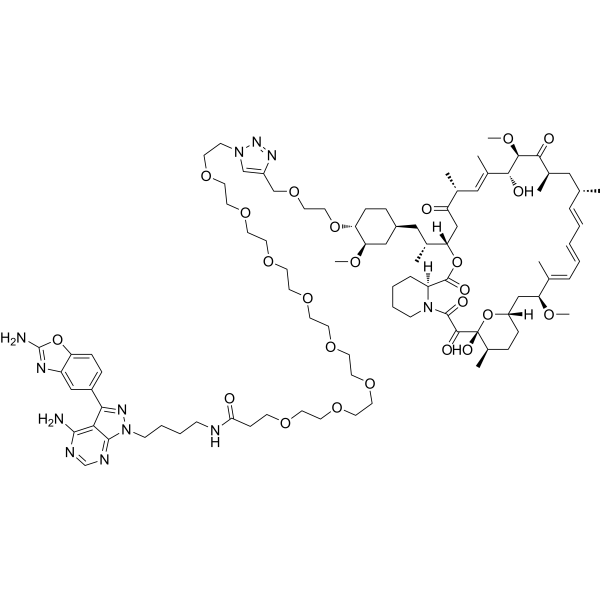
- HY-123960
-
|
|
Phosphatase
|
Neurological Disease
|
|
Raphin1 is an orally bioavailable, selective inhibitor of the regulatory phosphatase PPP1R15B (R15B). Raphin1 binds strongly to the R15B-PP1c holophosphatase (Kd=33 nM), and shows ~30-fold selective in binding R15B-PP1c over R15A-PP1c. Raphin1 crosses the blood-brain barrier, and reduces organismal and molecular deficits in a mouse model of a protein misfolding disease .
|
-

- HY-A0168S
-
|
CVT-3146-d3
|
Adenosine Receptor
|
Cardiovascular Disease
Cancer
|
|
Regadenoson-d3 is the deuterium labeled Regadenoson. Regadenoson (CVT-3146) is a potent and selective A2A adenosine receptor agonist, with Kis of 290 and 1120 nM for rat and pig adenosine A2A receptor, respectively. Regadenoson is selective for the adenosine A2A receptor over adenosine A1 and A2B receptors, and shows 13-fold selectivity over the human adenosine A1 receptor. Regadenoson is a vasodilator stress agent has shifted the landscape of vasodilator myocardial perfusion imaging. Regadenoson increases blood-brain barrier (BBB) permeability in rodents[1][2][3].
|
-

- HY-144790
-
|
|
Amyloid-β
Cholinesterase (ChE)
Monoamine Oxidase
|
Neurological Disease
|
|
AChE-IN-12 is a potent and blood-brain barrier (BBB) penetrant acetylcholinesterase (AChE) with IC50s of 0.41 μM and 1.88 μM for rat AChE and electric eel AChE. AChE-IN-12 is also a good antioxidant (ORAC = 3.3 eq), selective metal chelator and huMAO-B inhibitor (IC50 = 8.8 µM). AChE-IN-12 has remarkable inhibition of self- and Cu 2+-induced Aβ1-42 aggregation, as well as exhibits a good neuroprotective effect. AChE-IN-12 can be used for researching Alzheimer’s disease .
|
-
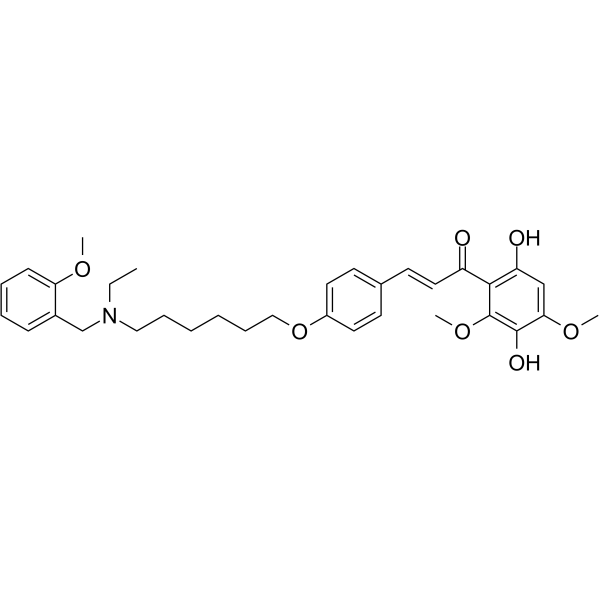
- HY-150700
-
|
|
ERK
|
Metabolic Disease
|
|
RLX-33 is a potent, selective and blood-brain barrier (BBB) penetrant relaxin family peptide 3 (RXFP3) antagonist, also blocks relaxin-3-induced ERK1/2 phosphorylation, with IC50 values of 2.36 μM for RXFP3, 7.82 and 13.86 μM for ERK1 and ERK2 phosphorylation, respectively. RLX-33 can block the stimulation of food intake induced by the RXFP3-selective agonist R3/I5 in rats. RLX-33 can be used for the research of metabolic syndrome .
|
-
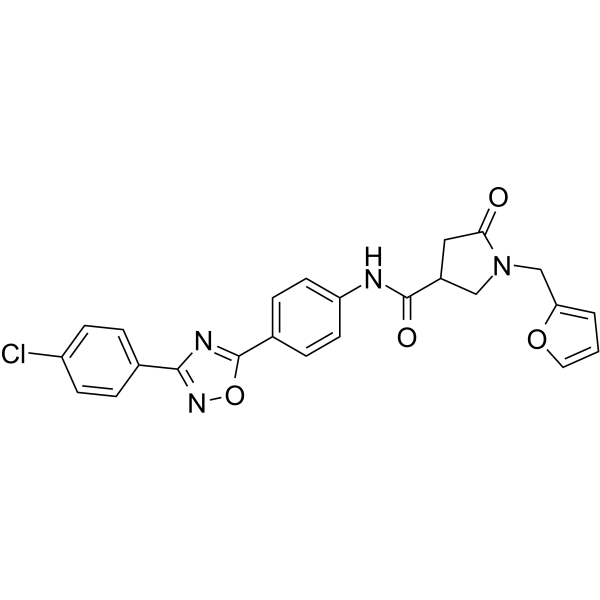
- HY-P3492
-
|
|
SARS-CoV
|
Infection
|
|
SARS-CoV-2-IN-34 (S-20-1) is a blood brain barrier penetrable pan-coronavirus (CoV) fusion inhibitor with broad-spectrum inhibitory activity. SARS-CoV-2-IN-34 effectively inhibits infection by pseudotyped and authentic SARS-CoV-2, and pseudotyped variants of concern (VOCs). SARS-CoV-2-IN-34 shows high affinity to RBD in S1 and HR1 domain in S2 of SARS-CoV-2 S protein. SARS-CoV-2-IN-34 can be used for the research of infection .
|
-
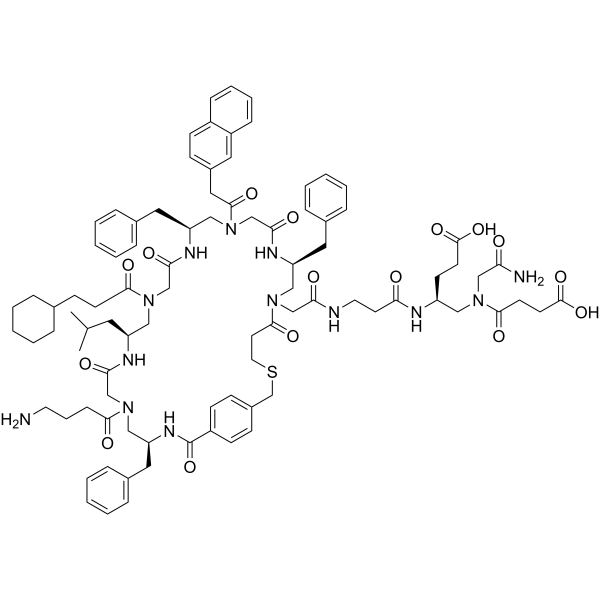
- HY-12678S1
-
|
NMS-E628-d8; RXDX-101-d8
|
Isotope-Labeled Compounds
Autophagy
Anaplastic lymphoma kinase (ALK)
Trk Receptor
ROS Kinase
|
Cancer
|
|
Entrectinib-d8 (NMS-E628-d8; RXDX-101-d8) is a deuterated version of Entrectinib (HY-12678). Entrectinib (NMS-E628) is an orally available, blood-brain barrier permeable, central nervous system active TrkA/B/C, ROS1 and ALK inhibitor with IC50 values of 1, 3, 5, 12 and 12, respectively. 7 nM. Entrectinib induces apoptosis and cycle arrest in cancer cells, has anti-tumor activity, and also alleviates bleomycin-induced pulmonary fibrosis in mice .
|
-

- HY-141899
-
|
|
mAChR
|
Neurological Disease
|
|
MK-6884 is a M4 muscarinic receptor positive allosteric modulator (PAM) with a Ki value of 0.19 nM. MK-6884 can be used for the research of the neurodegenerative diseases. MK-6884 can be conveniently radiolabeled with carbon-11 and as a positron emission tomography (PET) imaging agent .
|
-
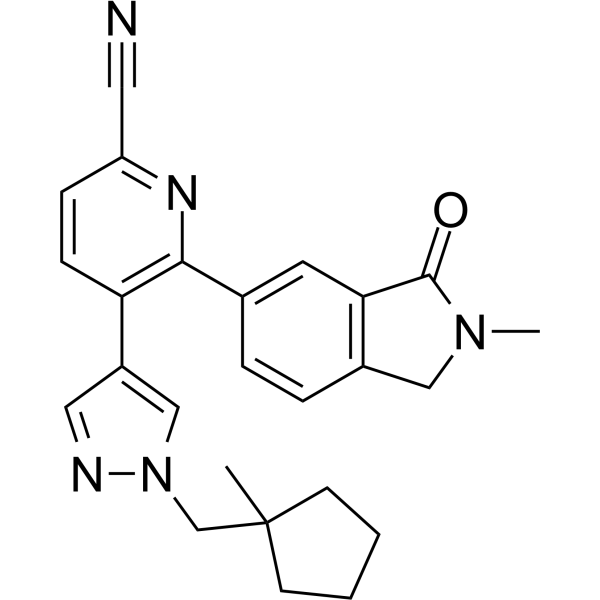
- HY-107666
-
-
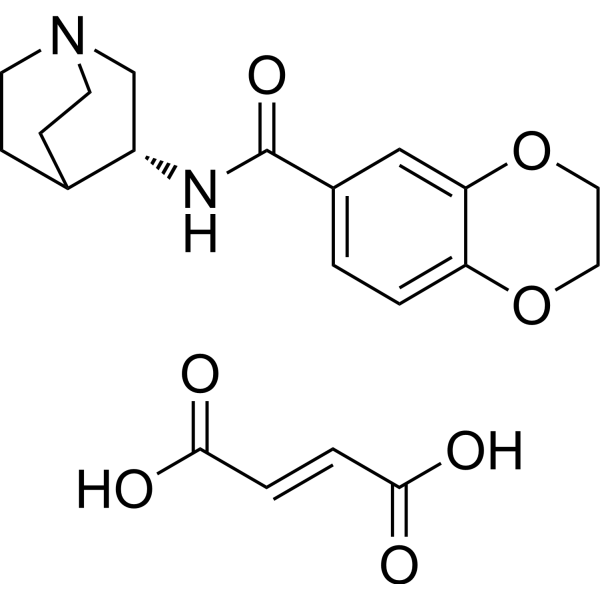
- HY-P0299A
-
|
|
TGF-β Receptor
|
Cancer
|
|
LSKL, Inhibitor of Thrombospondin (TSP-1) TFA is a latency-associated protein (LAP)-TGFβ derived tetrapeptide and a competitive TGF-β1 antagonist. LSKL, Inhibitor of Thrombospondin (TSP-1) TFA inhibits the binding of TSP-1 to LAP and alleviates renal interstitial fibrosis and hepatic fibrosis. LSKL, Inhibitor of Thrombospondin (TSP-1) TFA suppresses subarachnoid fibrosis via inhibition of TSP-1-mediated TGF-β1 activity, prevents the development of chronic hydrocephalus and improves long-term neurocognitive defects following subarachnoid hemorrhage (SAH). LSKL, Inhibitor of Thrombospondin (TSP-1) TFA can readily crosse the blood-brain barrier .
|
-
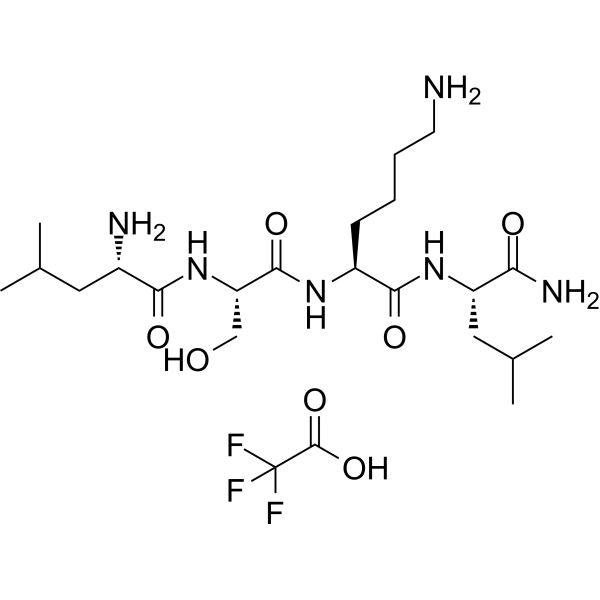
- HY-P0299
-
|
|
TGF-β Receptor
|
Cancer
|
|
LSKL, Inhibitor of Thrombospondin (TSP-1) is a latency-associated protein (LAP)-TGFβ derived tetrapeptide and a competitive TGF-β1 antagonist. LSKL, Inhibitor of Thrombospondin (TSP-1) inhibits the binding of TSP-1 to LAP and alleviates renal interstitial fibrosis and hepatic fibrosis. LSKL, Inhibitor of Thrombospondin (TSP-1) suppresses subarachnoid fibrosis via inhibition of TSP-1-mediated TGF-β1 activity, prevents the development of chronic hydrocephalus and improves long-term neurocognitive defects following subarachnoid hemorrhage (SAH). LSKL, Inhibitor of Thrombospondin (TSP-1) can readily crosse the blood-brain barrier .
|
-
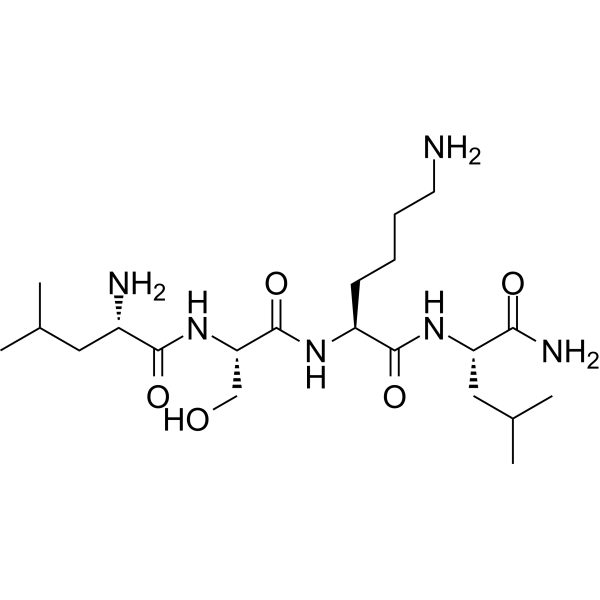
- HY-155811
-
|
|
Others
|
Neurological Disease
|
|
DQP-997-74 (compound 2i) is a selective inhibitor of N-methyl-d-aspartate receptor (NMDAR), specifically targeting GluN2C/D (IC50: 0.069 μM and 0.035 μM), with blood-brain barrier penetrability. Where DQP refers to dihydroquinoline-pyrazoline. DQP-997-74 acts synergistically with the agonist glutamate to exhibit time-dependent enhanced potency in inhibiting hypersynchronous activity driven by high-frequency excitatory synaptic transmission. DQP-997-74 reduces the number of epileptogenesis in a murine model of tuberous sclerosis complex (TSC)-induced epilepsy. DQP-997-74 can be used for research on NMDAR-related neurological diseases .
|
-

- HY-151260
-
|
|
Beta-secretase
Cholinesterase (ChE)
GSK-3
|
Neurological Disease
|
|
AChE/BACE1/GSK3β-IN-1 is an orally active triple inhibitor of AChE/BACE1/GSK3β. AChE/BACE1/GSK3β-IN-1 has effective inhibitory activity against AChE, BACE1 and GSK3β with IC50 values of 1.0 μM, 20 μM and 15 μM, respectively. AChE/BACE1/GSK3β-IN-1 has good blood-brain barrier penetrability, suitable bioavailability. AChE/BACE1/GSK3β-IN-1 can be used for the research of Alzheimer's disease (AD) .
|
-
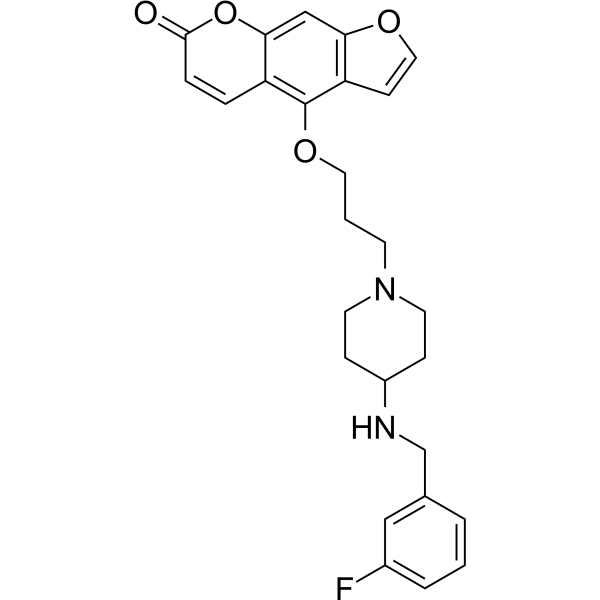
- HY-152506
-
|
|
Amyloid-β
|
Neurological Disease
|
|
Antioxidant agent-8 is an orally active inhibitor of Aβ1-42 deposition. Antioxidant agent-8 inhibits fibril aggregation (IC50=11.15 µM) and promotes fibril disaggregation (IC50=6.87 µM). Antioxidant agent-8 also inhibits Cu 2+-induced Aβ1-42 fibril aggregation (IC50=3.69 µM) and promotes Cu 2+-induced Aβ1-42 fibril disaggregation (IC50=3.35 µM). Antioxidant agent-8 has antioxidant activity, anti-inflammatory activity, biosafety, blood-brain barrier permeability and neuroprotective effect .
|
-

- HY-120874
-
|
|
GABA Receptor
|
Neurological Disease
|
|
PF-06372865 is an orally active, α2/α3/α5 subtype-selective GABAA positive allosteric modulator (PAM). PF-06372865 is a high affinity ligand at GABAA receptors containing α1/α2/α3/α5 subunits (Kis of 2.9 nM, 21 nM, 134 nM for α2, α1 PAM, α2 PAM, respectively), with low affinity for α4/α6 subunits. PF-06372865 can across the blood-brain barrier (BBB). PF-06372865 has anxiolytic activity and has the potential for epilepsy .
|
-
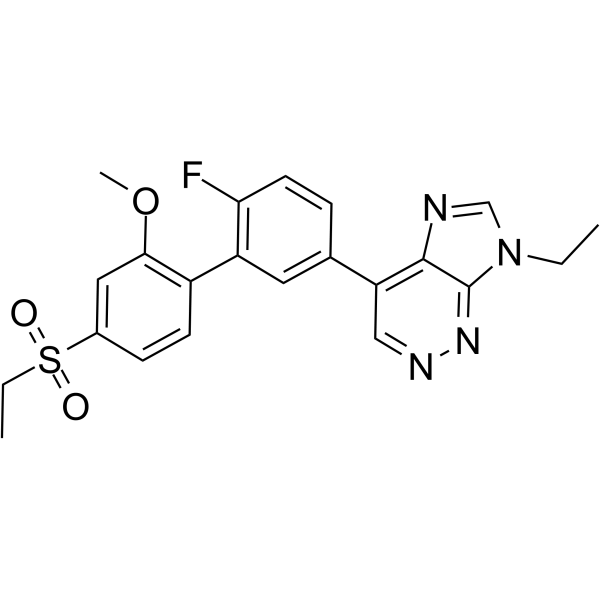
- HY-150537
-
|
|
Cholinesterase (ChE)
GSK-3
Microtubule/Tubulin
ROS Kinase
|
Neurological Disease
|
|
AChE/GSK-3β-IN-1 (compound GT15) is a potent, dual AChE/GSK-3β inhibitor with IC50 values of 1.2, 149.8 and 22.4 nM for hAChE , hBChE and hGSK-3β, respectively. AChE/GSK-3β-IN-1 penetrates the blood-brain barrier (BBB). AChE/GSK-3β-IN-1 has high kinase selectivity profiles for the CMGC kinase family. AChE/GSK-3β-IN-1 occupies the ATP binding site of DYRK1A. AChE/GSK-3β-IN-1 inhibits ROS expression and reduces oxidative stress. AChE/GSK-3β-IN-1 can be used for Alzheimer’s disease research .
|
-

- HY-153321
-
|
BTK-IN-24
|
Btk
PROTACs
|
Inflammation/Immunology
Cancer
|
|
NX-5948 (BTK-IN-24) is an orally active chimeric targeting molecule (CTM) that induces specific BTK protein degradation by the cereblon E3 ligase (CRBN) complex without degradation of other cereblon neo-substrates. NX-5948 mediates potent anti-inflammatory activity via BTK degradation with resultant inhibition of B cell activation. NX-5948 exhibits potent tumor growth inhibition in TMD8 xenograft models that contain either wild-type BTK or BTKi-resistant mutations. NX-5948 is efficacious in a mouse collageninduced arthritis (CIA) model. NX-5948 can cross the blood brain barrier (BBB). NX-5948 is a PROTAC composed of the ligand for target protein, a linker, and a cereblon E3 ligase (CRBN) complex (Red: ligand for target protein; Blue: CRBN; Black: linker) .
|
-

-
-
HY-L028
-
|
|
856 compounds
|
|
The blood-brain barrier (BBB) is the complex network of brain microvessels. It protects the brain from the external bloodstream environment and supplies the brain with the required nutrients for normal function. However, blood-brain barrier is also the obstacle to deliver beneficial drugs to treat CNS (central nervous system) diseases or brain tumors, as it has the least permeable capillaries in the entire body due to physical barriers (tight junctions). Therefore, it is crucial to discover drugs which can cross this barrier for the treatment of brain-based diseases, such as Alzheimer’s disease (AD), Parkinson’s disease (PD) and epilepsy.
MCE offers a unique collection of 856 compounds with confirmed CNS-Penetrant property. It’s a useful tool for the discovery of drugs used for brain diseases, such as brain tumors, mental disorders, and neurodegenerative diseases.
|
| Cat. No. |
Product Name |
Type |
-
- HY-128868
-
|
|
Fluorescent Dyes/Probes
|
|
FITC-Dextran (MW 10000) is a fluorescent probe for fluorescein isothiocyanate (FITC) dextran (Ex=495 nm; Em=525 nm). FITC-Dextran (MW 10000) can be used as a marker to reveal heat shock-induced cell damage and to study the early and late stages of apoptosis. FITC-Dextran (MW 10000) can also be used for cell permeability studies, such as blood-brain barrier permeability and determination of the extent of blood-brain barrier disruption .
|
-
- HY-128868A
-
|
|
Fluorescent Dyes/Probes
|
|
FITC-Dextran (MW 4000) is a fluorescent probe for fluorescein isothiocyanate (FITC) dextran (Ex=495 nm; Em=525 nm). FITC-Dextran (MW 4000) can be used as a marker to reveal heat shock-induced cell damage and to study the early and late stages of apoptosis. FITC-Dextran (MW 4000) can also be used for cell permeability studies, such as blood-brain barrier permeability and determination of the extent of blood-brain barrier disruption .
|
-
- HY-128868D
-
|
|
Fluorescent Dyes/Probes
|
|
FITC-Dextran (MW 40000) is a fluorescent probe for fluorescein isothiocyanate (FITC) dextran (Ex=495 nm; Em=525 nm). FITC-Dextran (MW 40000) can be used as a marker to reveal heat shock-induced cell damage and to study the early and late stages of apoptosis. FITC-Dextran (MW 40000) can also be used for cell permeability studies, such as blood-brain barrier permeability and determination of the extent of blood-brain barrier disruption .
|
-
- HY-128868B
-
|
|
Dyes
|
|
FITC-Dextran (MW 3000-5000) is a fluorescent probe for fluorescein isothiocyanate (FITC) dextran (Ex=495 nm; Em=525 nm). FITC-Dextran (MW 3000-5000) can be used as a marker to reveal heat shock-induced cell damage and to study the early and late stages of apoptosis. FITC-Dextran (MW 3000-5000) can also be used for cell permeability studies, such as blood-brain barrier permeability and determination of the extent of blood-brain barrier disruption . Storage: protect from light.
|
-
- HY-151615
-
|
|
Fluorescent Dyes/Probes
|
|
DCI-Br-3 is a rapid, highly sensitive, and selective probe to monitor thiols in the epileptic brain. (λex=537 nm, λem=675 nm).DCI-Br-3 can effectively cross the blood-brain barrier (BBB) .
|
-
- HY-111653
-
CycLuc1
1 Publications Verification
|
Chromogenic Substrates
|
|
CycLuc1 is a blood-brain barrier permeable luciferase substrate that displays near-infrared (NIR) emission with a peak luminescence wavelength of 599 nm. CycLuc1 can be used for in vivo bioluminescence imaging .
|
-
- HY-103240
-
|
|
Dyes
|
|
Methoxy-X04 is a fluorescent dye that crosses the blood-brain barrier and selectively binds to beta-pleated sheets found in dense core amyloid Aβ plaques. Methoxy-X04 retains in vitro binding affinity for amyloid b (Ab) fibrils (Ki= 26.8 nM). Methoxy-X04 is fluorescent and stains plaques, tangles, and cerebrovascular amyloid in postmortem sections of AD brain with good specificity .
|
-
- HY-D1684
-
|
|
Fluorescent Dyes/Probes
|
|
DCDAPH (Compound 2c) is a novel smart NIRF probe for detection of β-amyloid (Aβ) plaques (λex/λem=597/665 nm in PBS). DCDAPH shows high affinity for Aβ aggregates (Ki=37 nM, Kd=27 nM). DCDAPH shows good blood brain barrier permeation and can meet most of the requirements for the detection of Aβ plaques both in vitro and in vivo .
|
-
- HY-149696
-
|
|
Dyes
|
|
IR-Crizotinib is a NF-κB-inducing kinase (NIK) inhibitor that crosses the blood-brain barrier and fluorescently localizes intracranial glioblastoma (GBM) in mice (IC50=3.381 μM). IR-Crizotinib is conjugated from the near-infrared dye IR-786 and the NF-κB-inducing kinase (NIK) inhibitor Crizotinib. IR-Crizotinib can effectively inhibit the growth and invasion of glioma in vitro and in vivo and can be used in cancer research .
|
-
- HY-14536
-
|
Basic Blue 9; CI-52015; Methylthioninium chloride
|
Chromogenic Assays
|
|
Methylene blue (Basic Blue 9) is a guanylyl cyclase (sGC), monoamine oxidase A (MAO-A) and NO synthase (NOS) inhibitor. Methylene blue is a vasopressor and is often used as a dye in several medical procedures. Methylene blue through the nitric oxide syntase/guanylate cyclase signalling pathway to reduce prepulse inhibition. Methylene blue is a REDOX cycling compound and able to cross the blood-brain barrier. Methylene blue is a Tau aggregation inhibitor. Methylene blue reduces cerebral edema, attenuated microglial activation and reduced neuroinflammation .
|
-
- HY-128868G
-
|
|
Fluorescent Dyes/Probes
|
|
FITC-Dextran (MW 150000) is a fluorescent probe for fluorescein isothiocyanate (FITC) dextran (Ex=491 nm; Em=518 nm). FITC-Dextran (MW 150000) can be used as a marker to reveal heat shock-induced cell damage and to study the early and late stages of apoptosis. FITC-Dextran (MW 150000) can be used in perfusion studies in animals or in fluorescence microlymphography, to study processes that affect the permeability of the blood brain barrier (BBB) . FITC-Dextran (MW 150000) can be used as fluorescent probe to study cell permeability .
|
| Cat. No. |
Product Name |
Type |
-
- HY-D0873
-
|
EPPS
|
Biochemical Assay Reagents
|
|
HEPPS (EPPS) is a buffering agent with the useful pH range from 7.3 ~ 8.7. HEPPS reduces Aβ-aggregate-induced memory deficits and rescues cognitive deficits in mice. EPPS is orally active and penetrates the blood-brain barrier .
|
-
- HY-W013851
-
|
|
Chelators
|
|
EDTA-OH is a chelating agent, which forms thermodynamically stable chelates with metal ions like calcium, magnesium, iron, zinc and copper . EDTA-OH exhibits ability of phytoremediation in heavy-metal-contaminated soils . EDTA-OH is able to cross brain-blood barrier .
|
-
- HY-137499
-
|
|
Drug Delivery
|
|
NT1-O12B, an endogenous chemical and a neurotransmitter-derived lipidoid (NT-lipidoid), is an effective carrier for enhanced brain delivery of several blood-brain barrier (BBB)-impermeable cargos. Doping NT1-O12B into BBB-impermeable lipid nanoparticles (LNPs) gives the LNPs the ability to cross the BBB. NT-lipidoids formulation not only facilitate cargo crossing of the BBB, but also delivery of the cargo into neuronal cells for functional gene silencing or gene recombination .
|
-
- HY-B1102
-
|
Direct Blue 53; T-1824; C.I. 23860
|
Cell Assay Reagents
|
|
Evans Blue (Direct Blue 53) is a potent inhibitor of L-glutamate uptake via the membrane bound excitatory amino acid transporter (EAAT). Evans Blue is a L-glutamate and kainate receptor-mediated currents inhibitor. Evans Blue has a strong affinity towards serum albumin, making it a high molecular weight protein tracer. Evans Blue is also used to study BBB (blood-brain barrier) permeability .
|
-
- HY-115340
-
|
|
Biochemical Assay Reagents
|
|
Decanoic acid sodium, also known as Decanoic acid sodium, is a salt of the fatty acid capric acid. It is easily soluble in water and has a slightly soapy smell. Decanoic acid sodium acts as a penetration enhancer, which means it increases the absorption and bioavailability of drugs across biological membranes, including the intestinal epithelium and the blood-brain barrier. This property makes it useful in pharmaceutical formulations to improve drug delivery and effectiveness. Furthermore, Decanoic acid sodium has potential applications in food preservatives and cosmetics due to its antibacterial properties.
|
| Cat. No. |
Product Name |
Target |
Research Area |
-
- HY-P0285A
-
|
|
RABV
|
Infection
|
|
Rabies Virus Glycoprotein (TFA) is a 29-amino-acid cell penetrating peptide derived from a rabies virus glycoprotein that can cross the blood-brain barrier (BBB) and enter brain cells .
|
-
- HY-P2314
-
|
|
Transferrin Receptor
|
Cancer
|
|
HAIYPRH hydrochloride, a targeting ligand, can specially bind to transferrin receptor (TfR). HAIYPRH hydrochloride can mediate the transport of nanocarriers across the blood-brain barrier .
|
-
- HY-107130
-
|
GM604
|
Peptides
|
Neurological Disease
|
|
Alirinetide (GM604) is an oligopeptide containing 6 amino acids. Alirinetide can cross the blood-brain barrier and can be used for the research of multiple neurodegenerative diseases .
|
-
- HY-P0285
-
|
|
RABV
|
Infection
|
|
Rabies Virus Glycoprotein is a 29-amino-acid cell penetrating peptide derived from a rabies virus glycoprotein that can cross the blood-brain barrier (BBB) and enter brain cells.
|
-
- HY-P5918
-
|
NAX-5055
|
Peptides
|
Neurological Disease
|
|
Galanin-B2 (NAX-5055) has activity in the epilepsy model. Galanin-B2 can penetrate the blood-brain-barrier .
|
-
- HY-P10216
-
|
|
Peptides
|
Others
|
|
CAQK peptide selectively binds to injured mouse brain. CAQK peptide selectively targets demyelinating areas and it is absent from healthy tissue. The CAQK peptide target is a proteoglycan complex upregulated in brain injuries and is used for drug delivery. CAQK peptide can penetrate the blood-brain barrier .
|
-
- HY-107663
-
|
Pro-Leu-Gly-NH2; Melanostatin
|
Dopamine Receptor
|
Neurological Disease
|
|
MIF-1 (Melanostatin), an endogenous brain peptide, is a potent dopamine receptor allosteric modulator. MIF-1 inhibits melanin formation. MIF-1 blocks the effects of opioid receptor activation to modulate the analgesic effects. MIF-1 accesses from the blood to the CNS by directly crossing the blood-brain barrier (BBB) .
|
-
- HY-P4989
-
|
|
Biochemical Assay Reagents
|
Infection
|
|
Type A Allatostatin III (allatostatin 3) is a blood-brain barrier permeable and reversible neuropeptide that inhibits hormone synthesis in juvenile female cockroaches. Type A Allatostatin III can be used in pesticide research .
|
-
- HY-107663A
-
|
Pro-Leu-Gly-NH2 TFA; Melanostatin TFA
|
Dopamine Receptor
|
Neurological Disease
|
|
MIF-1 TFA (Melanostatin), an endogenous brain peptide, is a potent dopamine receptor allosteric modulator. MIF-1 TFA inhibits melanin formation. MIF-1 TFA blocks the effects of opioid receptor activation to modulate the analgesic effects. MIF-1 TFA accesses from the blood to the CNS by directly crossing the blood-brain barrier (BBB) .
|
-
- HY-P4073
-
|
GRN1005; Paclitaxel trevatide
|
Antibody-Drug Conjugates (ADCs)
|
Cancer
|
|
ANG1005 (Paclitaxel trevatide) is a brain-penetrating peptide-drug conjugate. ANG1005, a taxane derivative, consists of three paclitaxel (HY-B0015) molecules covalently linked to Angiopep-2, designed to cross the blood-brain and blood-cerebrospinal barriers and to penetrate malignant cells via low density lipoprotein receptor-related protein (LRP1) transport system .
|
-
- HY-105077A
-
|
INN 00835 diTFA
|
5-HT Receptor
|
Neurological Disease
|
|
Nemifitide diTFA (INN 00835 diTFA) is a synthetic pentapeptide antidepressant with a potential for rapid onset of action . Nemifitide diTFA is a peptide analog of melanocyte-inhibiting factor (MIF) . Nemifitide diTFA can cross the blood-brain barrier .
|
-
- HY-148195
-
|
|
Peptides
|
Neurological Disease
|
|
NNZ 2591 is a synthetic analogue of a small peptide of cyclic glycine proline (cGP). NNZ 2591 shows orally active and cross the blood-brain barrier. NNZ 2591 shows neuroprotective after ischemic brain injury. NNZ 2591 improves motor function in a rat model of Parkinson's disease. NNZ 2591 has the potential for the research of ischemic brain injury and angelman syndrome .
|
-
- HY-P3585
-
|
|
TNF Receptor
|
Neurological Disease
Inflammation/Immunology
|
|
Epobis, a dendrimeric peptide, is a recombinant form of erythropoietin. Epobis is a potent erythropoietin receptor agonist. Epobis promotes neuritogenesis in primary motoneurons. Epobis decrease TNF release and crosses the blood-brain barrier. Epobis has anti-inflammatory and memory enhancing properties .
|
-
- HY-P5911
-
|
|
Peptides
|
Inflammation/Immunology
|
|
GluN1 (359-378) is an anti-N-methyl-D-aspartate
receptor (NMDAR) antibody. GluN1 (359-378) can cross the blood-brain barrier.
GluN1 (359-378) can be used to study anti-NMDAR encephalitis therapy targeting
the immune system .
|
-
- HY-P10153
-
|
|
Peptides
|
Others
|
|
gH625 is a cell-penetrating viral peptide which is a part of glycoprotein H of Herpes simplex virus type I. gH625 is able to cross the cell membrane and to transport many conjugated cargoes into the cytosol. gH625 is permeable to the blood-brain barrier (BBB) and can enter the rat brain in vivo without toxic effects. gH625 can be used for siRNA delivery research .
|
-
- HY-P10019
-
|
NLY01
|
GCGR
|
Neurological Disease
|
|
Pegsebrenatide (NLY01) is a long-acting GLP-1R agonist. Pegsebrenatide has an extended half-life and favorable blood-brain barrier penetration. Pegsebrenatide can block A1 astrocyte transformation, reducing dopaminergic cell death, and improving motor symptoms in mouse models of PD .
|
-
- HY-P1136B
-
-
- HY-P1178
-
|
|
Trk Receptor
|
Neurological Disease
|
|
Cyclotraxin B, a cyclic peptide, is a highly potent and selective TrkB inhibitor without altering the binding of BDNF. Cyclotraxin B non-competitively inhibits BDNF-induced TrkB activity with an IC50 of 0.30 nM. Cyclotraxin B can crosse the blood-brain-barrier and has analgesic and anxiolytic-like behavioral effects .
|
-
- HY-P1136C
-
-
- HY-P1178A
-
|
|
Trk Receptor
|
Neurological Disease
|
|
Cyclotraxin B TFA, a cyclic peptide, is a highly potent and selective TrkB inhibitor without altering the binding of BDNF. Cyclotraxin B TFA non-competitively inhibits BDNF-induced TrkB activity with an IC50 of 0.30 nM. Cyclotraxin B TFA can crosse the blood-brain-barrier and has analgesic and anxiolytic-like behavioral effects .
|
-
- HY-17573
-
|
|
Oxytocin Receptor
|
Neurological Disease
Endocrinology
|
|
Carbetocin, an oxytocin (OT) analogue, is an oxytocin receptor agonist with a Ki of 7.1 nM. Carbetocin has high affinity to chimeric N-terminus (E1) of the oxytocin receptor (Ki=1.17 μM). Carbetocin has the potential for postpartum hemorrhage research. Carbetocin can crosse the blood-brain barrier and produces antidepressant-like activity via activation of oxytocin receptors in the CNS .
|
-
- HY-17573A
-
|
|
Oxytocin Receptor
|
Neurological Disease
Endocrinology
|
|
Carbetocin acetate, an oxytocin (OT) analogue, is an oxytocin receptor agonist with a Ki of 7.1 nM. Carbetocin acetate has high affinity to chimeric N-terminus (E1) of the oxytocin receptor (Ki=1.17 μM). Carbetocin acetate has the potential for postpartum hemorrhage research. Carbetocin acetate can crosse the blood-brain barrier and produces antidepressant-like activity via activation of oxytocin receptors in the CNS .
|
-
- HY-105066
-
|
|
Microtubule/Tubulin
Amyloid-β
|
Neurological Disease
|
|
Davunetide is an eight amino acid snippet derived from activity-dependent neuroprotective protein (ADNP), a neurotrophic factor that exists in the mammalian CNS. Davunetide possesses neuroprotective, neurotrophic and cognitive protective roperties. Davunetide, a microtubule-stabilizing peptide, interacts with and stabilises neuron-specific βIII-tubulin in vitro. Davunetide penetrates the blood-brain barrier and is non-toxic. Davunetide inhibits Aβ aggregation and Aβ-induced neurotoxicity .
|
-
- HY-106224B
-
|
Hypocretin-1 (human, rat, mouse) (acetate)
|
Orexin Receptor (OX Receptor)
|
Neurological Disease
|
|
Orexin A (Hypocretin-1) (human, rat, mouse) acetate is a hypothalamic neuropeptide with analgesic properties (crosses the blood-brain barrier). Orexin A (human, rat, mouse) acetate is also an OX1R agonist that induces the expression of BDNF and TH proteins in SH-SY5Y cells in a time- and dose-dependent manner. Orexin A (human, rat, mouse) acetate can be used in studies of appetite regulation, neurodegenerative diseases and modulation of injurious messaging .
|
-
- HY-P5121
-
|
|
Peptides
|
Cardiovascular Disease
|
|
γ-Fibrinogen377-395 is a fibrinogen-derived inhibitory peptide, as well as fibrinogen epitope. γ-Fibrinogen377-395 blocks microglia activation and inhibits fibrin-Mac-1 interactions in vitro, and suppresses experimental autoimmune encephalomyelitis (EAE) in mice in vivo. γ-Fibrinogen377-395 can be used for research in multiple sclerosis (MS), and other neuroinflammatory diseases associated with blood-brain barrier disruption and microglia activation .
|
-
- HY-P5121A
-
|
|
Peptides
|
Cardiovascular Disease
|
|
γ-Fibrinogen377-395 TFA is a fibrinogen-derived inhibitory peptide, as well as fibrinogen epitope. γ-Fibrinogen377-395 TFA blocks microglia activation and inhibits fibrin-Mac-1 interactions in vitro, and suppresses experimental autoimmune encephalomyelitis (EAE) in mice in vivo. γ-Fibrinogen377-395 TFA can be used for research in multiple sclerosis (MS), and other neuroinflammatory diseases associated with blood-brain barrier disruption and microglia activation .
|
-
- HY-P3492
-
|
|
SARS-CoV
|
Infection
|
|
SARS-CoV-2-IN-34 (S-20-1) is a blood brain barrier penetrable pan-coronavirus (CoV) fusion inhibitor with broad-spectrum inhibitory activity. SARS-CoV-2-IN-34 effectively inhibits infection by pseudotyped and authentic SARS-CoV-2, and pseudotyped variants of concern (VOCs). SARS-CoV-2-IN-34 shows high affinity to RBD in S1 and HR1 domain in S2 of SARS-CoV-2 S protein. SARS-CoV-2-IN-34 can be used for the research of infection .
|
-
- HY-P0299A
-
|
|
TGF-β Receptor
|
Cancer
|
|
LSKL, Inhibitor of Thrombospondin (TSP-1) TFA is a latency-associated protein (LAP)-TGFβ derived tetrapeptide and a competitive TGF-β1 antagonist. LSKL, Inhibitor of Thrombospondin (TSP-1) TFA inhibits the binding of TSP-1 to LAP and alleviates renal interstitial fibrosis and hepatic fibrosis. LSKL, Inhibitor of Thrombospondin (TSP-1) TFA suppresses subarachnoid fibrosis via inhibition of TSP-1-mediated TGF-β1 activity, prevents the development of chronic hydrocephalus and improves long-term neurocognitive defects following subarachnoid hemorrhage (SAH). LSKL, Inhibitor of Thrombospondin (TSP-1) TFA can readily crosse the blood-brain barrier .
|
-
- HY-P0299
-
|
|
TGF-β Receptor
|
Cancer
|
|
LSKL, Inhibitor of Thrombospondin (TSP-1) is a latency-associated protein (LAP)-TGFβ derived tetrapeptide and a competitive TGF-β1 antagonist. LSKL, Inhibitor of Thrombospondin (TSP-1) inhibits the binding of TSP-1 to LAP and alleviates renal interstitial fibrosis and hepatic fibrosis. LSKL, Inhibitor of Thrombospondin (TSP-1) suppresses subarachnoid fibrosis via inhibition of TSP-1-mediated TGF-β1 activity, prevents the development of chronic hydrocephalus and improves long-term neurocognitive defects following subarachnoid hemorrhage (SAH). LSKL, Inhibitor of Thrombospondin (TSP-1) can readily crosse the blood-brain barrier .
|
| Cat. No. |
Product Name |
Target |
Research Area |
-
- HY-P99403
-
|
GSK249320
|
Inhibitory Antibodies
|
Neurological Disease
|
|
Refanezumab (GSK249320) is an IgG1-type humanized monoclonal antibody directed against myelin-associated glycoprotein (MAG). Refanezumab binds to MAG and blocks MAG-mediated inhibition of axonal regeneration. Refanezumab can cross the blood-brain barrier (BBB) in animal stroke models. Refanezumab has the potential for the enhancement of recovery of function poststroke .
|
| Cat. No. |
Product Name |
Category |
Target |
Chemical Structure |
| Cat. No. |
Product Name |
Chemical Structure |
-
- HY-B0007S
-
|
|
|
Baclofen-d4 is the deuterium labeled Baclofen. Baclofen, a lipophilic derivative of γ-aminobutyric acid (GABA), is an orally active, selective metabotropic GABAB receptor (GABABR) agonist. Baclofen mimics the action of GABA and produces slow presynaptic inhibition through the GABAB receptor. Baclofen has high blood brain barrier penetrance. Baclofen has the potential for muscle spasticity research[1][2][3].
|
-

-
- HY-B0309S2
-
|
|
|
Felodipine-d3 is the deuterium labeled Felodipine. Felodipine, a dihydropyridine, is a potent, vasoselective calcium channel antagonist. Felodipine lowers blood pressure (BP) by selective action on vascular smooth muscle, especially in the resistance vessels. Felodipine, an anti-hypertensive agent, induces autophagy. Felodipine can cross the blood-brain barrier[1][2][3].
|
-

-
- HY-132392S
-
|
|
|
L-DOPA-2,5,6-d3 is the deuterium labeled L-DOPA. L-DOPA (Levodopa) is an orally active metabolic precursor of neurotransmitters dopamine. L-DOPA can cross the blood-brain barrier and is converted into dopamine in the brain[1][2][3].
|
-

-
- HY-B0309S1
-
|
|
|
Felodipine-d5 is deuterium labeled Felodipine. Felodipine, a dihydropyridine, is a potent, vasoselective calcium channel antagonist. Felodipine lowers blood pressure (BP) by selective action on vascular smooth muscle, especially in the resistance vessels. Felodipine, an anti-hypertensive agent, induces autophagy. Felodipine can cross the blood-brain barrier[1][2][3].
|
-

-
- HY-132670S
-
|
|
|
(R)-(-)-Felodipine-d5 is the deuterium labeled (R)-(-)-Felodipine. (R)-(-)-Felodipine is the S enantiomer of Felodipine. Felodipine, a dihydropyridine, is a potent, vasoselective calcium channel antagonist. Felodipine lowers blood pressure (BP) by selective action on vascular smooth muscle, especially in the resistance vessels. Felodipine, an anti-hypertensive agent, induces autophagy. Felodipine can cross the blood-brain barrier[1][2][3].
|
-

-
- HY-13458S1
-
|
|
|
Droxidopa- 13C2, 15N (hydrochloride) is deuterium labeled Droxidopa. Droxidopa(L-DOPS), the mixture of Droxidopa (w/w80%) and Pharmaceutical starch (w/w20%), acts as a proagent to the neurotransmitters norepinephrine (noradrenaline) and epinephrine (adrenaline); Droxidopa(L-DOPS) is capable of crossing the protective blood–brain barrier[1][2].
|
-

-
- HY-N0304S
-
|
|
|
L-DOPA-d6 is the deuterium labeled L-DOPA. L-DOPA (Levodopa) is an orally active metabolic precursor of neurotransmitters dopamine. L-DOPA can cross the blood-brain barrier and is converted into dopamine in the brain. L-DOPA has anti-allodynic effects and the potential for Parkinson's disease[1][2][3].
|
-

-
- HY-B1395S1
-
|
|
|
Mecamylamine (hydrochloride)- 13C4, 15N is the 13C-labeled and 15N-labeled Mecamylamine hydrochloride. Mecamylamine hydrochloride is an orally active, nonselective, noncompetitive nAChR antagonist that can treat various neuropsychiatric disorders. Mecamylamine hydrochloride is originally used as a ganglionic blocker in treating hypertension. Mecamylamine hydrochloride can easily crosses the blood-brain barrier[1][2].
|
-

-
- HY-B0303AS1
-
|
|
|
Diphenhydramine-d5 (hydrochloride) is the deuterium labeled Diphenhydramine hydrochloride. Diphenhydramine hydrochloride is a first-generation histamine H1-receptor antagonist with anti-cholinergic effect. Diphenhydramine hydrochloride can across the ovine blood-brain barrier (BBB)[1][2].
|
-

-
- HY-B0303AS
-
|
|
|
Diphenhydramine-d6 (hydrochloride) is the deuterium labeled Diphenhydramine hydrochloride. Diphenhydramine hydrochloride is a first-generation histamine H1-receptor antagonist with anti-cholinergic effect. Diphenhydramine hydrochloride can across the ovine blood-brain barrier (BBB)[1][2].
|
-

-
- HY-N0304S1
-
|
|
|
L-DOPA- 13C6 is the 13C-labled L-DOPA . L-DOPA (Levodopa) is an orally active metabolic precursor of neurotransmitters dopamine. L-DOPA can cross the blood-brain barrier and is converted into dopamine in the brain. L-DOPA has anti-allodynic effects and the potential for Parkinson's disease .
|
-

-
- HY-N0304S2
-
1 Publications Verification
|
|
L-DOPA- 13C is the 13C labeled L-DOPA[1]. L-DOPA (Levodopa) is an orally active metabolic precursor of neurotransmitters dopamine. L-DOPA can cross the blood-brain barrier and is converted into dopamine in the brain. L-DOPA has anti-allodynic effects and the potential for Parkinson's disease[2][3][4].
|
-

-
- HY-N6685S1
-
|
|
|
3-Acetyldeoxynivalenol- 13C17 is the 13C labeled 3-Acetyldeoxynivalenol (HY-N6685) . 3-Acetyldeoxynivalenol, a trichothecene mycotoxin deoxynivalenol (DON) acetylated derivative , is a blood-brain barrier (BBB) permeable mycotoxin .
|
-

-
- HY-100642S
-
|
|
|
3-O-Methyltolcapone-d7 is a deuterium labeled 3-O-Methyltolcapone. 3-O-Methyltolcapone is a metabolite of Tolcapone. Tolcapone is an orally active, reversible, selective and potent COMT inhibitor. Tolcapone crosses the blood-brain barrier, and can be used for treatment of Parkinson's disease[1][2].
|
-

-
- HY-17412S1
-
|
|
|
Minocycline-d6 sulfate is deuterated labeled Minocycline (HY-17412A). Minocycline is an orally effective semi-synthetic tetracycline antibiotic and HIF-1α inhibitor that can penetrate the blood-brain barrier. Minocycline has bacteriostatic, anti-cancer, anti-inflammatory, neuroprotective properties and antidepressant effects.
|
-

-
- HY-N6608S
-
|
|
|
Physostigmine-d3 is the deuterium labeled Physostigmine. Physostigmine (Eserine) is a reversible acetylcholinesterase (AChE) inhibitor. Physostigmine can crosses the blood-brain barrier and stimulates central cholinergic neurotransmission. Physostigmine can reverse memory deficits in transgenic mice with Alzheimer's disease. Physostigmine is also an antidote for anticholinergic poisoning[1][2][3][4].
|
-

-
- HY-100642S1
-
|
|
|
3-O-Methyltolcapone-d4 is the deuterium labeled 3-O-Methyltolcapone. 3-O-Methyltolcapone (Ro 40-7591) is a metabolite of Tolcapone. Tolcapone is an orally active, reversible, selective and potent COMT inhibitor. Tolcapone crosses the blood-brain barrier, and can be used for treatment of Parkinson's disease[1][2].
|
-

-
- HY-109502S
-
|
|
|
10-OH-NBP-d4 is deuterium labeled 10-OH-NBP. 10-OH-NBP is a Butylphthalide (3-n-Butylphthalide; NBP; HY-B0647) hydroxylated metabolite and can penetrates the blood-brain barrier (BBB). Butylphthalide exerts neuroprotective effects and has potential for cerebral ischemia research[1].
|
-

-
- HY-128463S
-
|
|
|
N-tert-Butyl-α-phenylnitrone-d14 is the deuterium labeled N-tert-Butyl-α-phenylnitrone[1]. N-tert-Butyl-α-phenylnitrone is a nitrone-based free radical scavenger that forms nitroxide spin adducts. N-tert-Butyl-α-phenylnitrone inhibits COX2 catalytic activity. N-tert-Butyl-α-phenylnitrone has potent ROS scavenging, anti-inflammatory, neuroprotective, anti-aging and anti-diabetic activities, and can penetrate the blood-brain barrier[2][3][4][5].
|
-

-
- HY-17364S
-
|
|
|
Temozolomide-d3 is the deuterium labeled Temozolomide. Temozolomide (NSC 362856) is an oral active DNA alkylating agent that crosses the blood-brain barrier. Temozolomide is also a proautophagic and proapoptotic agent. Temozolomide is effective against tumor cells that are characterized by low levels of O6-alkylguanine DNA alkyltransferase (OGAT) and a functional mismatch repair system. Temozolomide has antitumor and antiangiogenic effects[1][2].
|
-

-
- HY-A0067S
-
|
|
|
Oxybenzone-d5 is the deuterium labeled Oxybenzone[1]. Oxybenzone (Benzophenone 3) is a commonly used UV filter in sun tans and skin protectants. Oxybenzone act as endocrine disrupting chemicals (EDCs) and can pass through the placental and blood-brain barriers. Benzophenone-3 impairs autophagy, alters epigenetic status, and disrupts retinoid X receptor signaling in apoptotic neuronal cells[2][3][4].
|
-

-
- HY-103309S
-
|
|
|
ML218-d9 is the deuterium labeled ML218. ML218 is a potent, selective and orally active T-type Ca2+ channels (Cav3.1, Cav3.2, Cav3.3) inhibitor with IC50s of 310 nM and 270 nM for Cav3.2 and Cav3.3, respectively. ML218 inhibits the burst activity in subthalamic nucleus (STN) neurons. ML218 has no significant inhibition of L- or N-type calcium channels, KATP or hERG potassium channels. ML218 can penetrate the blood-brain barrier[1].
|
-

-
- HY-17368S1
-
|
|
|
(rac)-Rivastigmine-d6 is a labelled racemic Rivastigmine. Rivastigmine (S-Rivastigmine) is an orally active and potent cholinesterase (ChE) inhibitor and inhibits butyrylcholinesterase (BChE) and acetylcholinesteras (AChE) with IC50s of 0.037 μM , 4.15 μM, respectively. Rivastigmine can pass the blood brain barrier (BBB). Rivastigmine is a parasympathomimetic or cholinergic agent used for the research of mild to moderate dementia of the Alzheimer's type and dementia due to Parkinson's disease[1][2].
|
-

-
- HY-B1075AS
-
|
|
|
(Rac)-Fosfomycin (benzylamine)- 13C3 is the 13C labeled Fosfomycin[1]. Fosfomycin (MK-0955) is a broad-spectrum antibiotic. Fosfomycin can cross blood-brain barrier penetrating, and irreversibly inhibits an early stage in cell wall synthesis. Fosfomycin shows anti-bacteria activity for a range of bacteria, including multidrug-resistant (MDR), extensively drug-resistant (XDR), and pan-drug-resistant (PDR) bacteria[2][3].
|
-

-
- HY-B1126S
-
|
|
|
Orphenadrine-d3 (hydrochloride) is the deuterium labeled Orphenadrine hydrochloride[1]. Orphenadrine hydrochloride is an orally active and non-competitive NMDA receptor antagonist (crosses the blood-brain barrier) with a Ki of 6.0 μM. Orphenadrine hydrochloride relieves stiffness, pain and discomfort due to muscle strains, sprains or other injuries. Orphenadrine hydrochloride is also used to relieve tremors associated with parkinson's disease. Orphenadrine citrate has good neuroprotective properties, can be used in studies of neurodegenerative diseases[2][3].
|
-

-
- HY-17355S
-
|
|
|
Pramipexole-d7 (dihydrochloride) is the deuterium labeled Pramipexole dihydrochloride. Pramipexole dihydrochloride is a selective and blood-brain barrier (BBB) penetrant dopamine D2-type receptor agonist, with Kis of 2.2 nM, 3.9 nM, 0.5 nM and 1.3 nM for D2-type receptor, D2, D3 and D4 receptors, respectively. Pramipexole dihydrochloride can be used for the research of Parkinson's disease (PD) and restless legs syndrome (RLS)[1][2][3].
|
-

-
- HY-17355S1
-
|
|
|
Pramipexole-d5 (dihydrochloride) is deuterium labeled Pramipexole (dihydrochloride). Pramipexole dihydrochloride is a selective and blood-brain barrier (BBB) penetrant dopamine D2-type receptor agonist, with Kis of 2.2 nM, 3.9 nM, 0.5 nM and 1.3 nM for D2-type receptor, D2, D3 and D4 receptors, respectively. Pramipexole dihydrochloride can be used for the research of Parkinson's disease (PD) and restless legs syndrome (RLS)[1][2][3].
|
-

-
- HY-B0410S1
-
|
|
|
Pramipexole-d5 is the deuterium labeled Pramipexole[1]. Pramipexole is a selective and blood-brain barrier (BBB) penetrant dopamine D2-type receptor agonist, with Kis of 2.2 nM, 3.9 nM, 0.5 nM and 1.3 nM for D2-type receptor, D2, D3 and D4 receptors, respectively. Pramipexole can be used for the research of Parkinson's disease (PD) and restless legs syndrome (RLS)[2][3][4].
|
-

-
- HY-17355S2
-
|
|
|
Pramipexole-d7-1 (dihydrochloride) is the deuterium labeled Pramipexole dihydrochloride[1]. Pramipexole dihydrochloride is a selective and blood-brain barrier (BBB) penetrant dopamine D2-type receptor agonist, with Kis of 2.2 nM, 3.9 nM, 0.5 nM and 1.3 nM for D2-type receptor, D2, D3 and D4 receptors, respectively. Pramipexole dihydrochloride can be used for the research of Parkinson's disease (PD) and restless legs syndrome (RLS)[2][3][4].
|
-

-
- HY-B0250S1
-
|
|
|
Lamivudine-13C,15N2,d2 (BCH-189-13C,15N2,d2) is a 13C, 15N, and deuterium labeled Lamivudine (HY-B0250). Lamivudine is an orally active and blood-brain barrier permeable nucleoside reverse transcriptase inhibitor (NRTI). Lamivudine inhibits HIV reverse transcriptase 1 and 2 and hepatitis B virus (HBV) reverse transcriptase .
|
-

-
- HY-A0168S
-
|
|
|
Regadenoson-d3 is the deuterium labeled Regadenoson. Regadenoson (CVT-3146) is a potent and selective A2A adenosine receptor agonist, with Kis of 290 and 1120 nM for rat and pig adenosine A2A receptor, respectively. Regadenoson is selective for the adenosine A2A receptor over adenosine A1 and A2B receptors, and shows 13-fold selectivity over the human adenosine A1 receptor. Regadenoson is a vasodilator stress agent has shifted the landscape of vasodilator myocardial perfusion imaging. Regadenoson increases blood-brain barrier (BBB) permeability in rodents[1][2][3].
|
-

-
- HY-12678S1
-
|
|
|
Entrectinib-d8 (NMS-E628-d8; RXDX-101-d8) is a deuterated version of Entrectinib (HY-12678). Entrectinib (NMS-E628) is an orally available, blood-brain barrier permeable, central nervous system active TrkA/B/C, ROS1 and ALK inhibitor with IC50 values of 1, 3, 5, 12 and 12, respectively. 7 nM. Entrectinib induces apoptosis and cycle arrest in cancer cells, has anti-tumor activity, and also alleviates bleomycin-induced pulmonary fibrosis in mice .
|
-

| Cat. No. |
Product Name |
|
Classification |
-
- HY-108039
-
|
HE 3286; NE-3107
|
|
Alkynes
|
|
Bezisterim (HE 3286; NE-3107) is a synthetic derivative of a natural anti-inflammatory steroid, β-AET. Bezisterim is an orally active partial NF-κB inhibitor. HE3286 reduces proinflammatory signals, including IL-6 and matrix metallopeptidase 3. Bezisterim freely penetrates the blood brain barrier in mice. Bezisterim can be used for the research of the ulcerative colitis, arthritis, experimental autoimmune encephalomyelitis . Bezisterim is a click chemistry reagent, it contains an Alkyne group and can undergo copper-catalyzed azide-alkyne cycloaddition (CuAAc) with molecules containing Azide groups.
|
Your information is safe with us. * Required Fields.
Inquiry Information
- Product Name:
- Cat. No.:
- Quantity:
- MCE Japan Authorized Agent:































































































































































































































































































































































































































































































